Introduction
Automation is revolutionizing industries by introducing software robots capable of executing tasks across various systems, freeing up human workers to focus on more complex problems. The importance of automation, particularly in Excel, cannot be understated. Despite the advent of sophisticated tools, many businesses still rely on spreadsheets for various tasks.
This reliance, while comfortable, can lead to inefficiencies. However, with proper implementation, automation can enhance productivity and accuracy. In this article, we will explore the importance of automation in Excel, the features and benefits of the Automate tab, the potential of Office Scripts, the use of Excel add-ins for automation, the integration of Excel with tools like SharePoint and OneDrive, best practices for choosing the right automation solution, troubleshooting common issues with Excel automation, and future trends and innovations in Excel automation.
By understanding and embracing the power of automation in Excel, individuals and organizations can unlock significant efficiency gains and maintain a competitive edge in an increasingly automated business landscape.
Understanding the Importance of Automation in Excel
Automation, especially Robotic Process Automation (RPA), is transforming the way industries function by introducing software robots capable of performing activities across multiple systems, freeing up human workers to concentrate on more intricate issues. RPA’s ability to seamlessly connect and automate workflows has shown substantial efficiency gains, as seen in educational settings like the Department of Electronic & Electrical Engineering, where administrative tasks are streamlined, or at St. James Winery, where decades of tradition meet modern efficiency to maintain their competitive edge.
A Morgan Stanley report highlights the transformative effect of technologies like spreadsheets, which reshaped the accounting profession by reducing the need for traditional bookkeepers while increasing demand for accountants and financial managers. This reflects a wider pattern where mechanization not only alters the character of jobs but also generates new opportunities and roles.
The International Federation of Robotics reports a surge in industrial robots with 3.5 million units worldwide, particularly in the automotive and electronics sectors, highlighting the crucial role of technology in today’s economy. Service industries also witness expansion, with chatbots and virtual assistants becoming common, highlighting the significance of AI in streamlining processes.
Despite the advent of sophisticated tools, 70-80% of businesses still rely on spreadsheets for various tasks. This dependence on familiar technology, while convenient, can result in inefficiencies, suggesting a significant opportunity for mechanization to improve productivity and accuracy.
As the conversation about job displacement versus creation persists, it is crucial to acknowledge the equilibrium that technology can bring to the workforce. With proper implementation, it can supplement human labor, leading to a more efficient and innovative workplace. For those starting their journey into the realm of automated processes, the statistics and trends for 2024 reveal a promising future where workflow streamlining becomes an essential component of business strategy.

Using the Automate Tab in Excel
The Automate tab in the spreadsheet software unlocks a realm of productivity, enabling users to leverage the capabilities of automation to efficiently manage repetitive tasks. By utilizing Office Scripts in the spreadsheet software, you can revolutionize the way you handle records, like purchase orders. Instead of manually updating and moving completed orders, you can write a script to automate this process, reducing the potential for errors and streamlining your workflow. This script will specify the precise location and action for each piece of information, ensuring precision and consistency in your document management.
Advancing the process of automating tasks, the recent updates from the well-known spreadsheet software have introduced features such as synchronizing form data with Excel for the web and adding images to cells. Moreover, the integration of Python with Copilot in Excel is set to combine one of the most popular programming languages with the power of Excel, opening up even more possibilities for automation.
Robotic Process Automation (RPA) is at the forefront of this technological wave, employing software robots to emulate human actions across various systems, thereby liberating your time for more strategic tasks. RPA can handle data entry, transaction processing, and workflow execution, seamlessly connecting disparate systems to work as one.
Workflow mechanization is another aspect of this technology, aimed at automating intricate business processes to lessen manual intervention. As almost every enterprise deals with recurring activities, the adoption of workflow mechanization is becoming crucial. The trend is so widespread that statistics suggest an astonishing 94% of corporate executives favor utilizing a unified platform for app integration and process streamlining.
By comprehending the potential of automation in spreadsheets and beyond, you can unlock substantial efficiency gains, guaranteeing your operations are better structured, free from errors, and focused on the activities that genuinely demand your expertise.
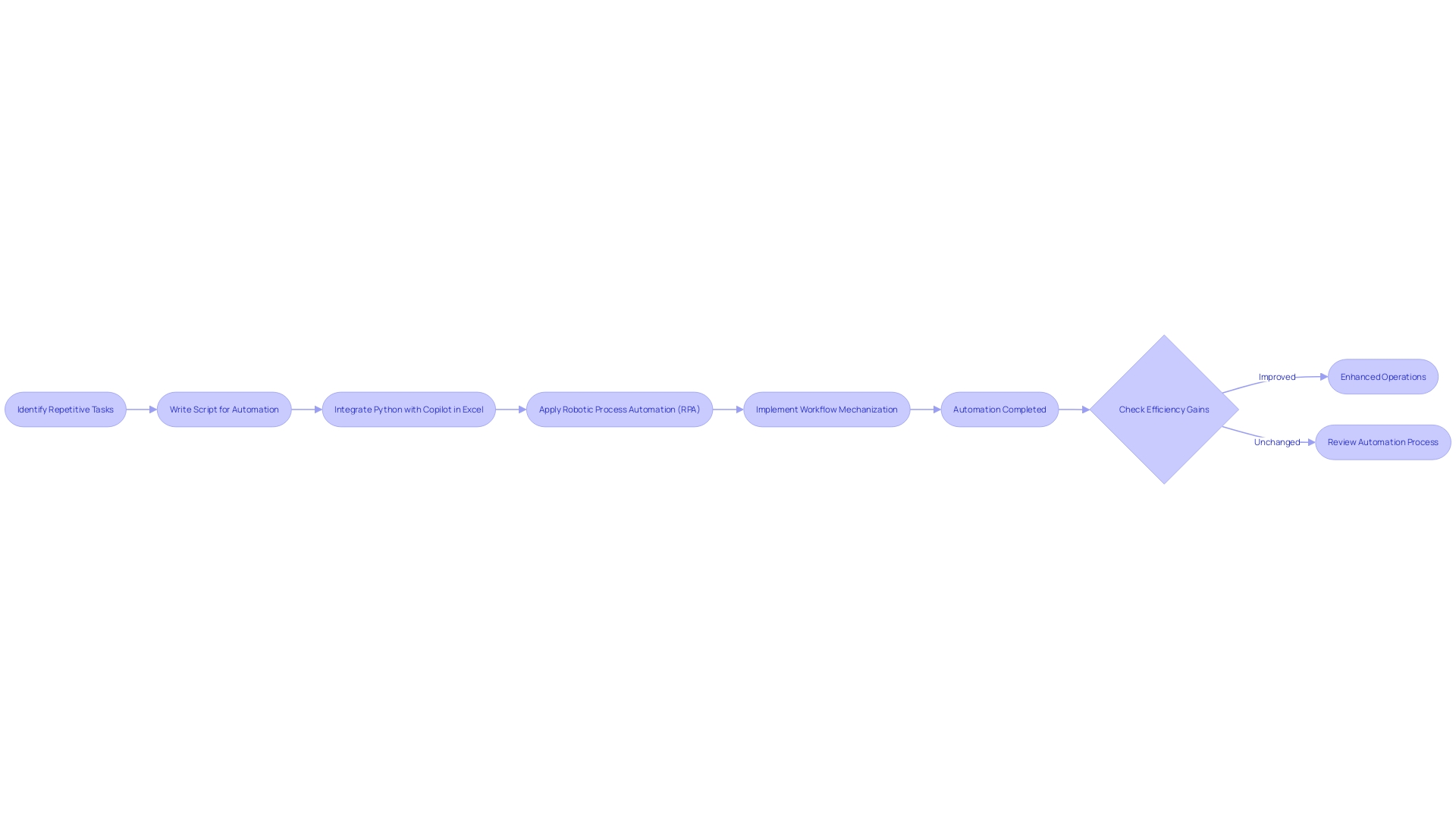
Creating and Modifying Office Scripts
Office Scripts provide a powerful method to automate repetitive tasks, streamline workflows, and reduce the risk of errors. For instance, managing a dynamic list of current and completed Purchase Orders in Excel can become a hassle as it grows. Instead of manually updating order statuses, filtering, and transferring information between sheets, Office Scripts can handle these operations efficiently. By creating a script, you can specify the exact actions required, such as changing the status of orders to ‘Fully Supplied’ and moving them to the ‘Completed Orders’ sheet with precision, focus, and zero manual effort.
To get started, you simply name your script and set its location. Remember that scripts require clear instructions about where to find and how to manipulate data. They’re written in a case-sensitive code within curly brackets, starting with a ‘main’ function that includes the ‘ExcelScript.Workbook’ parameter. Using ‘let’ to define variables, a script ensures that managing your records is a smooth, error-free process.
Furthermore, recent enhancements in the Microsoft 365 app ecosystem highlight the ongoing commitment to productivity and ease of use. Personalized app recommendations and new features, such as direct file sharing from the Home screen, demonstrate Microsoft’s dedication to improving user experience. Based on the data from Microsoft, with a worldwide user base of 1.2 billion and availability in 35 languages, Microsoft Office continues to be an indispensable tool for diverse users worldwide.
Utilizing these advancements, Office Scripts enable users to optimize the functionality of the spreadsheet software, transforming intricate tasks into straightforward, automated processes. As Microsoft Office maintains a commanding presence in the market, with products like Word holding a 30.24% market share and 67% of small businesses relying on Microsoft products, embracing Office Scripts in Microsoft’s spreadsheet software is a smart move for anyone looking to boost productivity and maintain an organized workflow.
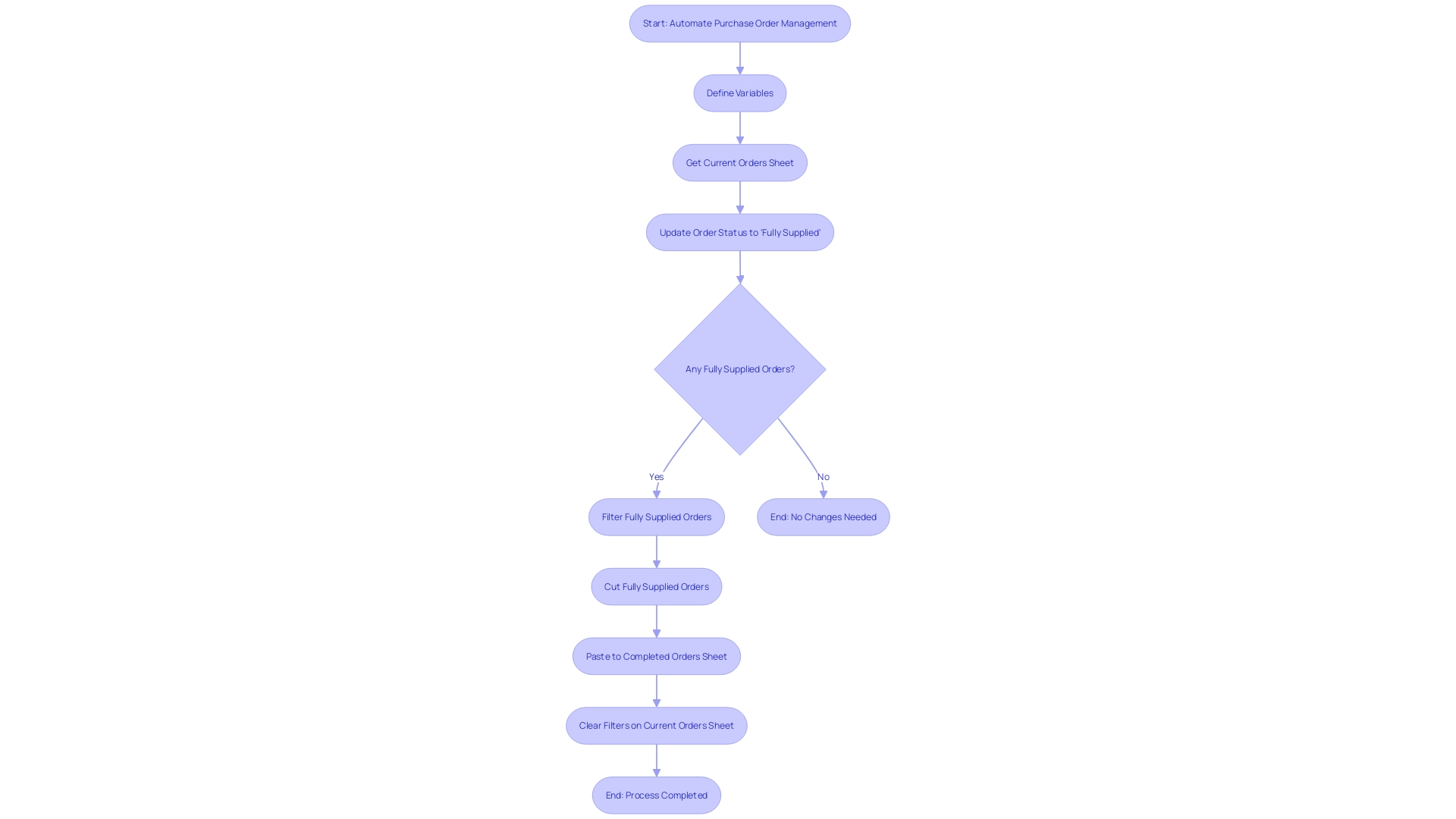
Utilizing Excel Add-ins for Automation
Harnessing the capabilities of add-ins in Microsoft Excel can greatly enhance your management and automation. These tools act as a bridge to a more efficient workflow, especially when handling repetitive activities such as updating and organizing records. Consider the everyday job of handling Purchase Orders in a spreadsheet program: manually keeping track of order statuses, transferring information, and ensuring clarity between current and completed orders. This process, while seemingly straightforward, can quickly become cumbersome and error-prone.
To tackle this, Office Scripts offer a sophisticated solution. By creating scripts tailored to your specific needs, you can automate the entire sequence of actions required to manage your Purchase Orders. The process begins with assigning a name to your script and saving its location. Precise instructions are key, ensuring the script knows exactly where to find and how to handle the data.
In a real-world application, Emma Davies from the Department of Electronic & Electrical Engineering streamlined the process of recording attendance and comments during personal tutorial sessions using the automation capabilities of a spreadsheet software. This not only saved time but also enhanced the accuracy of maintaining student records.
Furthermore, recent updates have additionally enhanced the functionality of the spreadsheet software. Users can now sync form information, insert pictures directly into cells, and benefit from enhanced PivotTables on various devices. These updates reinforce the fact that Excel remains at the forefront of data manipulation and visualization, providing users with powerful tools to analyze and represent data efficiently.
In the realm of formulas, the IF function stands out for its versatility in spreadsheet analysis. It enables conditional logic operations that empower you to make decisions and perform calculations based on specific criteria. Mastering such functions is fundamental to harnessing Excel’s full potential.
The increasing focus on mechanization across industries is demonstrated by compelling statistics: a staggering 94% of executives prefer a unified platform for app integration and process mechanization. This trend reflects the crucial role technology plays in maintaining a competitive edge in today’s market. By embracing the advanced features of Microsoft Excel, one can not only enhance productivity, but also thrive in a business landscape that is becoming increasingly automated.
Automating Data Entry and Workflow with Power Automate
Microsoft Power Automate is at the forefront of workflow streamlining, a technology that utilizes software, algorithms, and predetermined rules to automate and streamline complex business processes. Power Automate’s integration with spreadsheet software exemplifies this innovation, providing a strong resolution to automate tasks like entering information, thereby improving productivity and decreasing the occurrence of human mistakes.
Bosch, a pioneer in engineering and technology since 1886, has utilized such automated technologies to enhance its sustainability efforts. Their solid oxide fuel cell (SOFC) system, an emblem of high-efficiency and low-emission power, benefits from a digital twin that visualizes and monitors process parameters, optimizing cost and performance across the system’s lifecycle.
As businesses grapple with repetitive tasks—like managing permissions or sending notifications—a report from Zapier reveals that nearly all workers in smaller businesses encounter these monotonous chores. Here, Power Automate shines, transforming these duties into automated sequences that elevate employees’ roles.
A compelling illustration of Power Automate’s capabilities is seen in the Microsoft Power Platform, which nurtures collaboration between citizen developers and professional software engineers. Through a practical example, an organization could seamlessly integrate a registration form built with React into Power Automate, storing data in a spreadsheet. This kind of synergy is not only efficient but fosters a shared development environment.
Moreover, recent advancements announced at Microsoft’s Build developer conference highlight the integration of generative AI with Power Automate. This enhancement promises to take repetitive desktop workflows to new heights, allowing users to record and narrate actions, subsequently creating more resilient automation.
In the domain of spreadsheet software, Office Scripts offer a revolutionary method for automating workflows. Consider the situation of managing purchase orders in a spreadsheet software: repetitive tasks like updating order statuses and managing records can be automated, mitigating the risk of errors and boosting productivity.
With Microsoft Office’s staggering global user base of 1.2 billion and availability in 35 languages, it’s clear that such tools are not just widely used but are integral to various sectors. Power Automate, as part of this suite, stands as a testament to Microsoft’s commitment to facilitating efficient and inclusive work environments worldwide.
Integrating Excel with Other Tools Like SharePoint and OneDrive
Utilizing the capabilities of Microsoft Excel in combination with SharePoint and OneDrive can result in significant enhancements in information management and team cooperation. By integrating the spreadsheet software with these platforms, you establish a smooth workflow that enables the automatic transfer of information and streamlining of collaborative endeavors. For instance, utilizing SharePoint’s eSignature service enables document sign-offs without leaving the Microsoft ecosystem, ensuring security and efficiency. Meanwhile, the newly enhanced OneDrive experience, as unveiled in the event ‘Microsoft OneDrive: The Future of File Management is Here,’ provides users with swift access to both their own files and those shared within the organization.
The transformative potential of such integrations is best illustrated through practical scenarios. Consider the mundane activity of managing Purchase Orders in Excel, which involves repetitive filtering and data transfer between sheets. By automating these workflows, not only is the process accelerated, but the risk of human error is also significantly reduced. This move towards mechanization is promoted by Gartner, which, while remaining neutral, acknowledges the importance of such technological progress in their research publications.
Moreover, with Microsoft Office’s global accessibility, available in 35 different languages, and a user base of 1.2 billion people, these integrations have the potential to impact a wide audience. The ubiquity of Microsoft products in small business operations, with 67% relying on them, further illustrates the central role they play in modern professional environments. The anticipation around Microsoft 365 Copilot, which is projected to reach 6.9 million US knowledge workers by 2024, underscores the eagerness for tools that enhance productivity and simplify complex tasks.
In summary, by linking Excel with SharePoint and OneDrive, individuals and organizations can utilize these powerful tools to not only enhance efficiency capabilities but also foster a more efficient and collaborative work environment. As we continue to explore and understand the potential of diverse technologies, these integrations serve as a beacon, illuminating the path to innovation and operational excellence.
Best Practices for Choosing the Right Automation Solution
Prior to starting a mechanization endeavor, it’s crucial to recognize the objectives you aim to accomplish with the tools at your disposal. For instance, if the objective is to test software, whether it’s for web, mobile, or desktop platforms, you must consider the specific operating systems and environments that will be involved. The tale of Europris, Norway’s foremost discount retail chain, showcases the strength of strategic implementation of technology. By consolidating six warehouses into one state-of-the-art automated logistics center, Europris significantly enhanced its operational efficiency. This transition did not happen overnight—it was a meticulously planned journey spanning several years, executed in three well-thought-out phases, ultimately culminating in a fully automated warehouse with the capacity to handle 65,000 pallets, managed by advanced Vectura pallet cranes.
Harnessing mechanization goes beyond merely choosing tools; it’s about incorporating it into the fabric of organizational operations. DevOps, a philosophy that merges development and operations, exemplifies this through a suite of tools designed to automate and improve the software development lifecycle. By adopting practices such as continuous integration and delivery, infrastructure as code, and effective monitoring, companies can speed up product releases without compromising on quality, a testament to the transformative potential of these practices.
Test mechanization has become an essential component in delivering high-quality software. It’s especially beneficial for repeatable tests that are costly in terms of time, such as regression and performance testing. However, not all testing is suitable for mechanization, and discernment is key in deploying these technologies effectively.
Incorporating AI and analytics into automation strategies is becoming more and more essential, as they assist in transforming large quantities of information into actionable insights. Retail self-service is an example where successful implementations heavily rely on AI to analyze information and enhance customer experiences. Similarly, ERP and CMMS tools have evolved, allowing businesses to better manage and streamline operations by utilizing shop floor information more effectively.
The landscape of automated processes is continuously progressing, with the advent of AI and generative AI redefining the scope of what automated processes can achieve. From extracting information off documents to structuring unstructured information, the capabilities are expanding. Furthermore, reports emphasize the significance of comprehending the workforce’s satisfaction with automated projects and the need for a strategic approach to enhancing intelligent technology, underscoring the importance of informed tool selection and implementation.
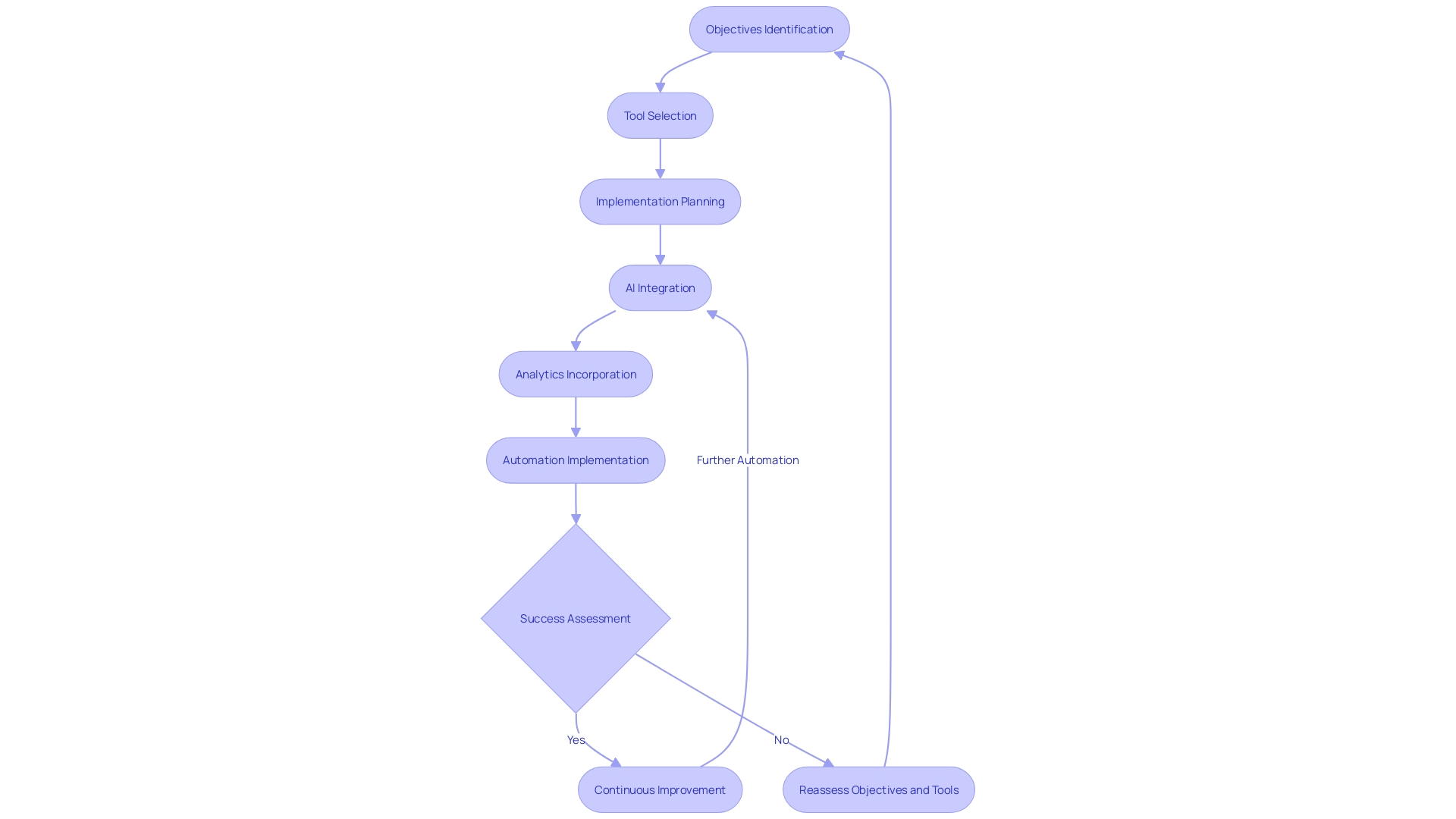
Troubleshooting and Common Issues with Excel Automation
The automation of spreadsheet processes has transformed the way we handle information, improving productivity and reducing mistakes in activities like updating and arranging records. For instance, automating the transfer of ‘Fully Supplied’ purchase orders from a current list to a completed orders sheet eliminates repetitive manual work and reduces the risk of mistakes. However, the efficiency of mechanization lies in the accuracy of the script. The code must be clearly directed to locate and manipulate the desired information, with case sensitivity and proper variable definitions being crucial.
Recent updates from the Product Manager of a popular spreadsheet application have further empowered users to control automatic data conversions that previously led to issues, such as misinterpreting gene codes as dates. Users can now adjust settings to prevent unwanted changes, addressing a long-standing source of frustration.
Despite these advancements, it’s important to acknowledge the inherent risks in spreadsheet management. Studies indicate that a staggering 90% of spreadsheets with over 150 rows contain errors. The complexity of detecting these mistakes necessitates a vigilant approach, where reviewing the code proves to be the most effective method, albeit not foolproof.
The path towards efficient mechanization is ongoing, and while challenges persist, the continuous enhancements and the strategic utilization of mechanization scripts ensure smoother processes, leading to an organized and error-minimized environment.
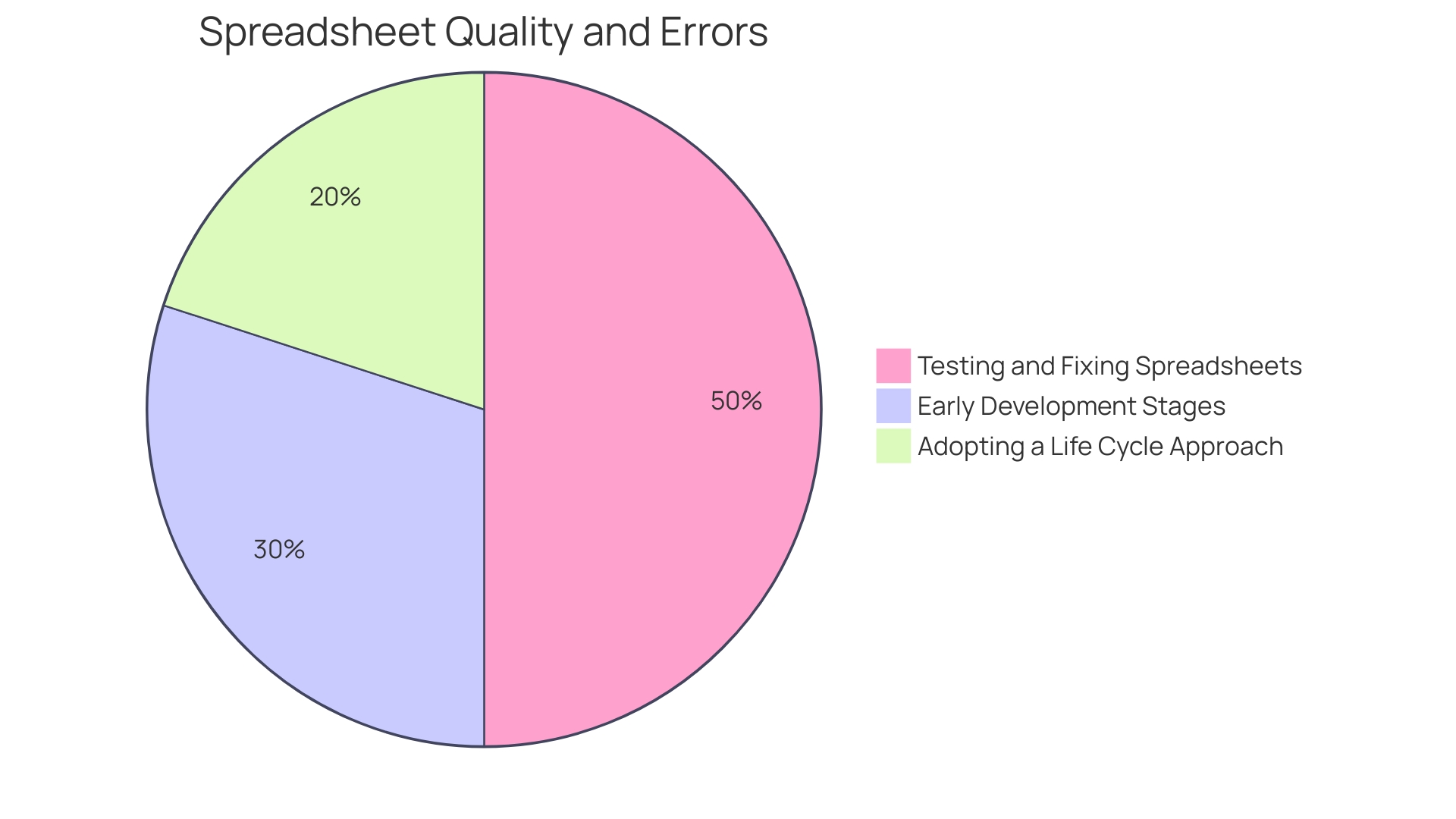
Future Trends and Innovations in Excel Automation
Spreadsheet automation is evolving rapidly, with tools like Excel Office Scripts leading the charge towards more efficient workflows. Instead of the monotonous and mistake-prone process of manually updating and sorting records, Office Scripts offers a solution to automate these activities. For instance, managing purchase orders in Excel can be simplified by scripting the steps to update order statuses, transfer completed orders to a separate sheet, and maintain a clear focus on pending tasks. This not only saves time but significantly reduces the chance of human error.
Office Scripts require specific instructions to locate and manipulate information, and they are case sensitive. Each script begins with a ‘main’ function and utilizes variables defined with ‘let’ to keep the code organized within curly brackets. St. James Winery, an award-winning winery with over 50 years of history, can also benefit from such automation to streamline their operations.
Historical data shows that the introduction of spreadsheets, particularly Microsoft’s popular spreadsheet software in the late ’80s, reshaped job roles rather than eliminating them. Morgan Stanley’s research shows that while bookkeeping roles declined, positions in accounting, auditing, and financial management expanded, evidencing the job-creating potential of such technologies. The extensive utilization of a widely recognized software, which is part of a globally used suite provided by Microsoft Office and accessible in 35 different languages, highlights its importance. While 67% of small businesses rely on Microsoft products, the ongoing advancements in Excel like Office Scripts promise to enhance operational capabilities.
In the context of automation technology, RPA (Robotic Process Automation) serves as a transformative force. It employs bots to execute tasks across various software platforms, freeing up human resources for more strategic endeavors. One of the most helpful spreadsheet formulas, the IF function, is a testament to the versatility and power of spreadsheet analysis. This function allows for conditional logic operations, enabling users to craft complex, decision-based calculations.
As automation technology advances, embracing tools like Office Scripts in Excel not only leads to increased productivity but also nurtures the creation of new roles and services. The shift towards automated processes is an essential step in staying competitive and efficient in today’s rapidly changing technological landscape.
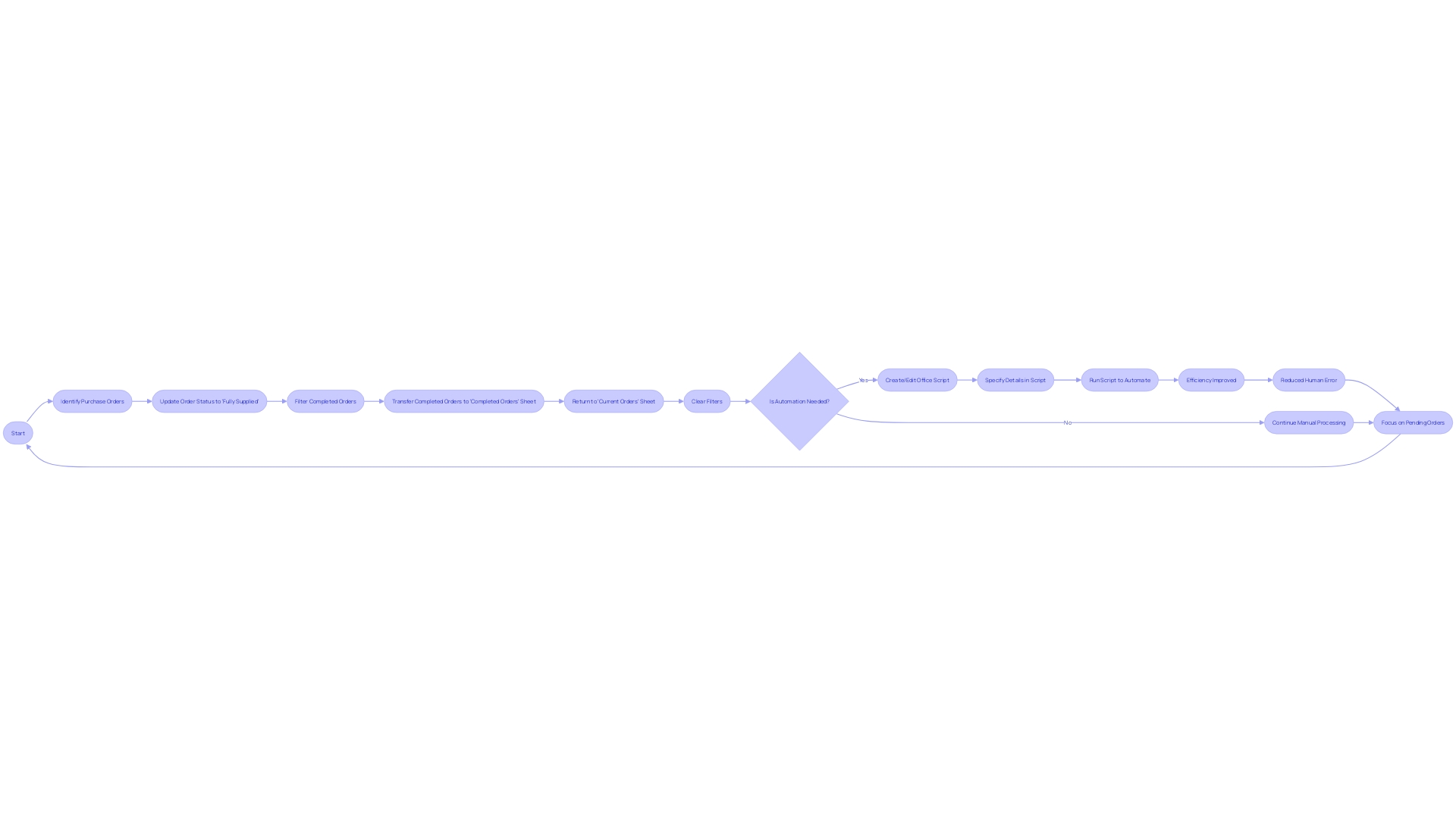
Conclusion
In conclusion, automation in Excel is essential for businesses to enhance productivity and efficiency. With the Automate tab, users can streamline tasks and reduce errors. Office Scripts provide a powerful way to automate repetitive tasks and ensure precision in document management.
Excel add-ins elevate data management and automation capabilities, while integrating Excel with tools like SharePoint and OneDrive enhances collaboration and efficiency. When choosing an automation solution, organizations should consider their goals and needs, and leverage AI and data analytics for informed decision-making.
While troubleshooting is necessary, automation in Excel continues to evolve rapidly. Tools like Office Scripts lead the way in streamlining workflows and creating new roles. Embracing automation is crucial for organizations to stay competitive and efficient.
In summary, automation in Excel unlocks significant efficiency gains, empowering businesses to streamline workflows and maintain a competitive edge. With continuous advancements and strategic implementation, organizations can create an error-minimized environment and achieve operational excellence.
Introduction
Robotic Process Automation (RPA) has revolutionized business operations, offering organizations the ability to streamline processes and enhance productivity. In this article, we will explore four top-tier RPA solutions: UiPath, Pega RPA, Nice RPA, and Kofax Kapow. Each solution brings its own unique set of features and benefits to the table, empowering businesses to automate tasks, optimize workflows, and drive efficiency.
From UiPath’s user-friendly design and advanced functionality to Pega RPA’s integration of machine learning and real-time analytics, these solutions offer practical solutions to the Director of Operations Efficiency’s challenges. Whether it’s streamlining data extraction with Kofax Kapow or leveraging the low-code automation platform of Appian, these RPA solutions are shaping the future of work, where technology not only performs tasks but also understands and adapts to the complexities of business needs.
UiPath
UiPath stands out as a top-tier player in the RPA landscape, not merely for its user-friendly design but also for the depth of its functionality. It’s not just the drag-and-drop simplicity that makes it a popular choice; its ability to automate complex workflows with precision and integrate effortlessly with a myriad of systems adds to its reputation. UiPath surpasses basic mechanization with a collection of tools for process discovery, analytics, and real-time monitoring, equipping enterprises with the resources to refine their operations. Indeed, UiPath’s role in transforming service delivery is underscored by the experiences of companies like Hiscox, where RPA facilitated a 28% reduction in repetitive workload and enhanced response times, directly impacting customer and employee satisfaction. As UiPath continues to influence the enterprise market, its dedication to integrating AI signals a future where technology not only carries out tasks but also comprehends and adjusts to the intricacies of organizational requirements.
Pega RPA
Pega RPA, a solution developed by Pegasystems, has emerged as a vital tool for enterprises seeking to improve their operational efficiency through mechanization. This innovation is not just about automating simple tasks; it is about redefining workflows with a mix of robotic task completion and cutting-edge artificial intelligence. At its core, Pega RPA enables companies to delegate repetitive tasks to ‘bots’, which are capable of emulating human actions within digital systems. These tasks range from data entry to complex document processing, all performed with precision and without fatigue.
The implementation of Pega RPA has been influenced by its ability to incorporate machine learning and offer real-time analytics, enabling organizations to automate not only tasks but also acquire insights and consistently enhance their operations. A prime example of RPA’s transformative impact is the case of Producers Title, LLC, which implemented Qualia products to revamp their historically slow and stressful home closing process, showcasing how technology can significantly enhance client experiences in industries ripe for technological disruption.
With a user-friendly interface, Pega RPA also simplifies the integration with other systems, which is crucial for small enterprises that need to maintain strong customer relationships and scale operations effectively. According to Zapier’s report, the majority of employees in smaller enterprises face the challenge of monotonous tasks, and the introduction of mechanization can significantly alleviate this workload, enhancing job contentment and enabling staff to concentrate on higher-level tasks.
Pegasystems has reported a substantial 23.6% year-over-year revenue growth, signaling a surging demand for modern automation software. This growth underlines the increasing recognition of RPA’s role in driving productivity and shaping the future of work. As such, Pega RPA is not just a tool for today’s needs but a strategic investment in an enterprise’s ability to adapt and thrive in an ever-evolving technological landscape.
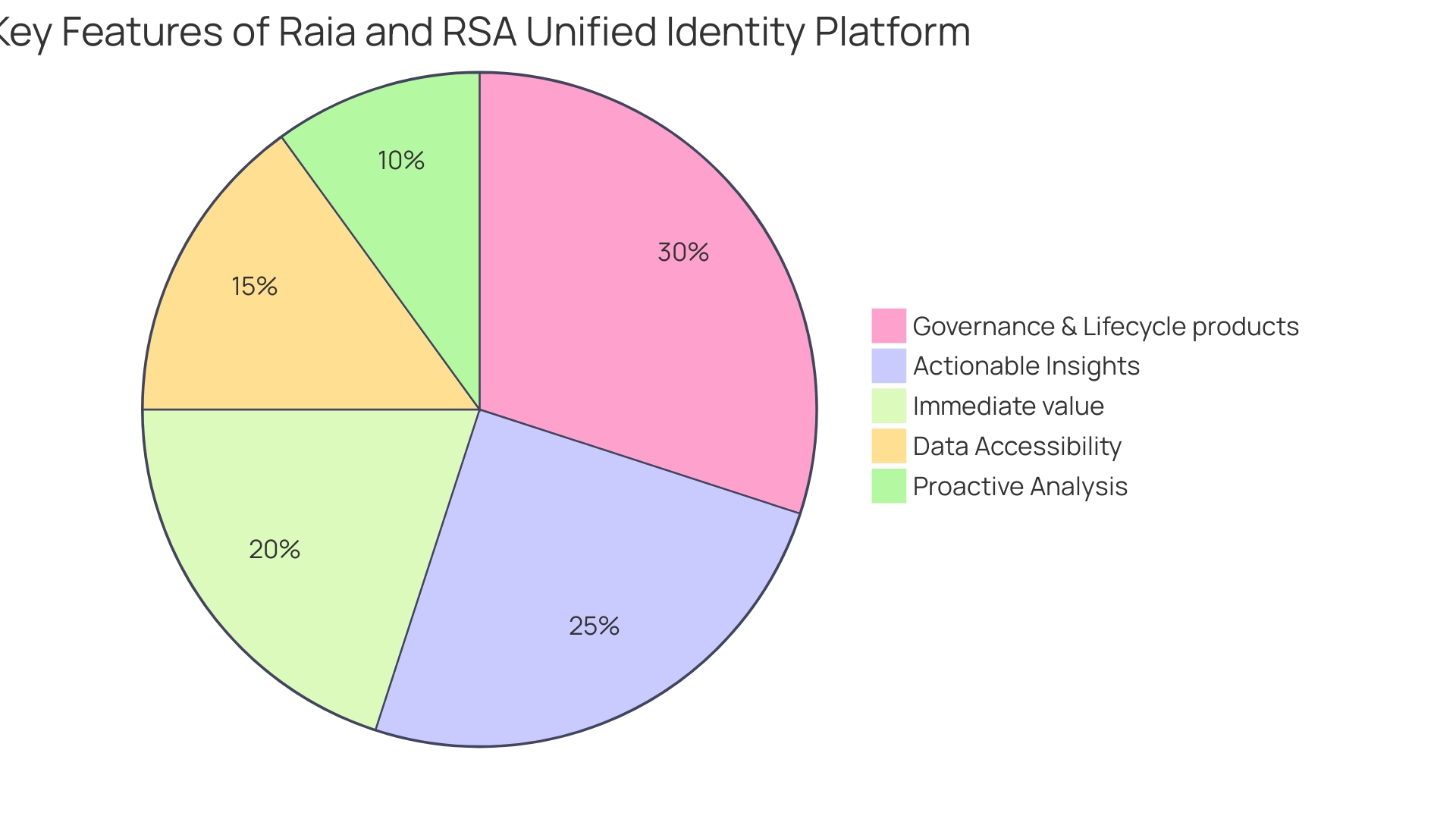
Nice RPA
Robotic Process Automation (RPA) has become a transformative force in business management, offering a suite of tools that empower organizations to streamline operations. As a cutting-edge technological system, RPA incorporates characteristics like a visual process designer, enabling intuitive modeling of workflows, and drag-and-drop functionality to facilitate the creation of scripts. Furthermore, its ability to integrate seamlessly with various software systems enhances its appeal as a versatile solution.
Security is another critical aspect of RPA, and leading solutions provide strong measures to safeguard sensitive data, which is pivotal in sectors handling confidential information. The importance of RPA is further emphasized by its user-friendly interface, which enables even those with limited technical expertise to harness its capabilities and contribute to organizational efficiency.
The range of RPA goes beyond mere task mechanization; it’s about creating a digital workforce that collaborates with human teams, enhancing their abilities and enabling them to concentrate on more strategic tasks. As indicated by industry professionals, the merging of RPA with AI signifies a fresh era of enterprise innovation, echoing the belief that mechanization has perpetually strived to improve effectiveness and output, albeit with essential human supervision.
Organizations considering RPA should conduct a thorough analysis of their current processes to identify areas ripe for automation, evaluating the potential time and cost savings, and addressing possible inefficiencies. This strategic approach is crucial as it ensures a smooth transition and maximizes the benefits of RPA.
Embracing RPA is not just about adopting new technology; it’s a journey towards hyperautomation, where continuous improvement is key. By incorporating RPA, companies can future-proof their operations, promoting a culture of innovation and efficiency that is well-aligned with the evolving demands of the digital era. As we navigate this journey, it is essential to maintain a balance between digital and human workforces, leveraging the strengths of both to achieve optimal performance and competitive advantage.
Kofax Kapow
RPA, or Robotic Process Automation, is changing the way organizations function, and Kofax Kapow is at the forefront of this revolution. As a powerful RPA tool, Kofax Kapow enables organizations to automate a myriad of processes. It stands out with its user-friendly design, which empowers users to create and deploy automation ‘robots’ that seamlessly integrate into existing systems—no coding expertise required.
The versatility of Kofax Kapow is evident in its capacity to handle complex data extraction. This feature is especially advantageous for companies that need to extract actionable insights from vast amounts of unstructured data, a common challenge in today’s data-driven environment. The user-friendly interface of Kofax Kapow ensures that even individuals without technical backgrounds can easily leverage its capabilities, making it a valuable resource for organizations of different sizes and industries.
Real-world applications of Kofax Kapow demonstrate its effectiveness. Take the case of Kabannas, a UK-based hotel group that sought to enhance their guests’ digital interaction. By implementing RPA, they enabled seamless, round-the-clock communication, elevating the guest experience beyond the limitations of standard operating hours.
Similarly, insurance specialist Hiscox leveraged RPA to handle a surge in client communication, reducing email response times by 28%. Not only did this improve customer satisfaction, but it also alleviated the workload on service teams, contributing to higher employee satisfaction—a dual benefit emphasized by Hiscox’s Process and Operations Manager, Guilherme Batista.
These examples underscore the transformative power of Kofax Kapow in streamlining operations, which not only propels efficiency gains but also fosters sustainable growth without proportionally increasing operating expenses. Such strategic deployment of RPA aligns with the emerging trends highlighted in Tech.co’s Impact of Technology on the Workplace 2024 Report, where 56% of enterprises report high productivity levels, thanks in part to the judicious application of technologies like Kofax Kapow.
Appian
Appian’s low-code automation platform is transforming the way organizations create and oversee their operational workflows. By combining the resilience of BPM with the effectiveness of RPA, Appian provides a dynamic visual development environment that simplifies the generation, implementation, and upkeep of automated workflows. Its advanced features, such as AI-driven decision support, real-time analytics, and smooth system integration, make it a formidable tool in the market. The platform’s user-friendly interface is not just for IT professionals; it’s designed for business users too, enabling rapid application development and fostering agility in response to market changes. These capabilities are especially advantageous in scenarios like automating the employee onboarding, which can be intricate and necessitate substantial alignment across departments. For example, a startup employed a Miro board to manage this process efficiently, addressing the challenges head-on. As companies such as Kal Tire have found out, the mechanization of data entry and report creation can save considerable time, reducing an hour and a half of manual labor to just minutes. This efficiency gain translates into more time for value-added activities and strategic tasks. The market has recognized Appian’s impact, with the company experiencing a substantial revenue increase, indicating that more enterprises are turning to low-code solutions to stay competitive and responsive in a technology-driven marketplace. The application of low-code automation extends beyond the corporate world; it’s also making significant strides in the education sector, with a projected CAGR of over 24% from 2023 to 2030. Educational institutions are adopting these platforms to enhance the learning experience and streamline administrative operations, enabling those with minimal coding knowledge to contribute to the digital transformation. This trend was further accelerated by the pandemic, as organizations sought rapid solutions to digitize and optimize their operations. Appian’s platform is at the forefront of this digital shift, offering an accessible yet powerful solution for businesses and educational institutions alike to innovate and thrive in the evolving landscape of technology.
Conclusion
In conclusion, UiPath, Pega RPA, Nice RPA, and Kofax Kapow are top-tier RPA solutions that empower businesses to automate tasks, optimize workflows, and drive efficiency. UiPath stands out for its user-friendly design and advanced functionality, while Pega RPA integrates machine learning and real-time analytics. Nice RPA offers a suite of tools to streamline operations, emphasizing the balance between digital and human workforces.
Kofax Kapow excels at complex data extraction, and Appian’s low-code automation platform combines BPM with RPA. These RPA solutions shape the future of work, where technology understands and adapts to business needs. Leveraging these solutions enables businesses to streamline processes, optimize workflows, and enhance productivity, ultimately driving efficiency and staying competitive in the evolving technological landscape.
Embrace the future of work and drive efficiency with our top-tier RPA solutions.
Introduction
Robotic Process Automation (RPA) is transforming businesses by offering increased efficiency and precision. This article explores the benefits, key concepts, and challenges of robot automation, as well as best practices for implementation. With the adoption of automation technologies on the rise, companies are investing in intelligent solutions to improve productivity and image.
From selecting the right automation platform to creating a proof of concept and implementing bots, organizations can streamline operations and enhance efficiency. The integration of artificial intelligence and machine learning further refines the automation process, opening up new possibilities for innovation. As various industries embrace automation, the article highlights use cases and future trends, emphasizing the transformative power of robotics and automation in shaping the future of work.
Benefits of Robot Automation
Robotic Process Automation (RPA) is revolutionizing the way businesses operate, offering a new horizon of efficiency and precision. Through the use of software robots or ‘bots’, RPA enables the simulation and implementation of actions across software or data platforms, previously carried out by humans. These bots are capable of handling a variety of tasks including data entry, transaction processing, and managing workflows. Through this advanced technology, systems are interconnected, liberating employees from mundane tasks and enabling them to engage in more strategic roles.
The effect of such mechanization is deep, as proven by Millennium Recycling, a leader in material recovery. They have adopted cutting-edge technologies to enhance their operations, showcasing the potential of RPA. In the same way, St. James Winery has embraced technological advancements to uphold its position as a leading winery that consistently wins gold medals, proving that even conventional sectors can reap the rewards of contemporary progress.
Recent reports by the International Federation of Robotics indicate a surge in the deployment of industrial robots, with around 3.5 million units worldwide, valued at approximately 15.7 billion US dollars. This trend is not limited to manufacturing; the service industry has witnessed a significant increase in the use of chatbots, virtual assistants, and IoT devices.
A McKinsey study highlights that companies are set to invest over 25 percent of their capital into technological solutions in the forthcoming years. The trend of mechanization has been connected to improved company appeal, with a concentration on up-to-date production processes positively affecting a company’s image. As the world’s sixth largest economy, the UK’s embrace of technological advancements is crucial in addressing labor shortages and improving productivity rates.
From millennium-old industries to modern startups, the revolutionary change towards mechanization is reshaping the economic landscape, promising not just a spike in productivity but also sparking discussions on workforce evolution and job creation.
Key Concepts of Robot Automation
Becoming proficient in robotic mechanization requires a comprehensive comprehension of various essential elements, each performing a vital function in the effective implementation and functioning of mechanization systems. Choosing the right platform plays a vital role in building a strong system of mechanization. For instance, GrayMatter Robotics focuses on enhancing human productivity through AI-based robotics, showcasing the importance of a reliable partner and effective solutions in achieving desired quality outcomes.
The implementation journey starts with the identification of procedures suitable for mechanization and proceeds through the creation of a proof of concept and detailed workflow mapping. Once these preliminary steps are completed, bots can be implemented, monitored, and maintained to ensure ongoing efficiency. Advanced methods, like the incorporation of artificial intelligence and machine learning, can enhance the refinement process. A recent innovation demonstrates the use of sound waves to propel tiny robots, indicating the potential for precision control in medical applications, as published in Science Advances.
The significance of mechanization is echoed by a McKinsey study, which predicts a substantial investment surge in mechanization solutions, with over 25 percent of capital allocation expected in the upcoming years. However, small and medium-sized enterprises (SMEs) often exhibit reluctance, possibly due to misconceptions about the affordability and complexity of technological advancements in the field of automation. In contrast, research indicates a pressing need for European SMEs to adopt and integrate Industry 4.0 technologies to bolster productivity and conserve resources. A significant majority of production managers reported feeling overwhelmed by technological advancements, indicating a disparity in comprehension and implementing technological solutions.
Reiterating these feelings, specialists in the area emphasize the need for a workforce that is not only technically proficient but also proficient in soft skills crucial for navigating the automated environment. The skill to visualize and adjust to quickly evolving scenarios is crucial for fostering innovative solutions and excelling in any technologically-driven field. This versatile skill set is crucial for harnessing the complete potential of tools and techniques, ultimately resulting in improved operational efficiency across different industries.
Identifying Processes for Automation
Selecting the appropriate processes for Robot Automation demands a meticulous assessment of current workflows. A case study from the Department of Electronic & Electrical Engineering highlighted the transformation of their tutorial session management. Emma Davies, the Department Coordinator, created an automated system to monitor the attendance and feedback of students, demonstrating a practical use of technology in an academic environment. This mirrors the initial steps in RPA implementation: analyzing tasks to pinpoint those that are repetitive and governed by set rules, suitable to be automated, thus setting the stage for significant efficiency gains.
Trends in automated processes, as reported by Automation.com, highlight the significance of proactive measures, streamlining, and strategic preparation in adopting automated technologies. Organizations are encouraged to stay abreast of these trends to harness their full potential. By doing so, they position themselves to effectively respond to increasing demands, such as the predicted 30% rise in water demand by 2025, where technology plays a critical role in managing and optimizing resources.
The procedure starts with organizing and groundwork, which involves determining the extent of mechanization, selecting the appropriate resources based on budget and compatibility, and establishing a structure to assist the mechanization endeavors. Moreover, preparing test cases and data, configuring the environment, and managing test data are integral to ensuring accuracy and effectiveness.
Choosing between no-code, low-code, and high-code solutions is contingent upon the complexity of tasks, user types, and specific use cases. This is crucial for choosing the most suitable platform, whether it’s for DevOps or more general applications. Various industries such as IT, finance, healthcare, and manufacturing have experienced the advantages of using technology to mechanize repetitive duties, as demonstrated by the range of solutions available.
The push towards mechanization necessitates a questioning mindset, as emphasized by Elon Musk’s manufacturing and management approach. This involves challenging every requirement and tracing it back to the individual responsible for it, rather than accepting departmental mandates at face value.
Developing a systematic method for work procedures, as recommended by industry professionals, is the precursor to successful mechanization. This well-structured system not only enhances management and execution but also identifies inefficiencies and clears the path for effective integration of technological processes. The next step involves implementing mechanization within this established structure, gradually transitioning from manual to mechanized processes.
Finally, a report on AI and mechanization provides an 11-point blueprint for optimizing intelligent mechanization, reflecting on data preparedness, human-digital collaboration, IT opportunities, and investment priorities. This guide serves as a valuable resource for those seeking to deepen their understanding of mechanization and its impact on the workforce, including the satisfaction and professional growth of those involved in mechanization projects.
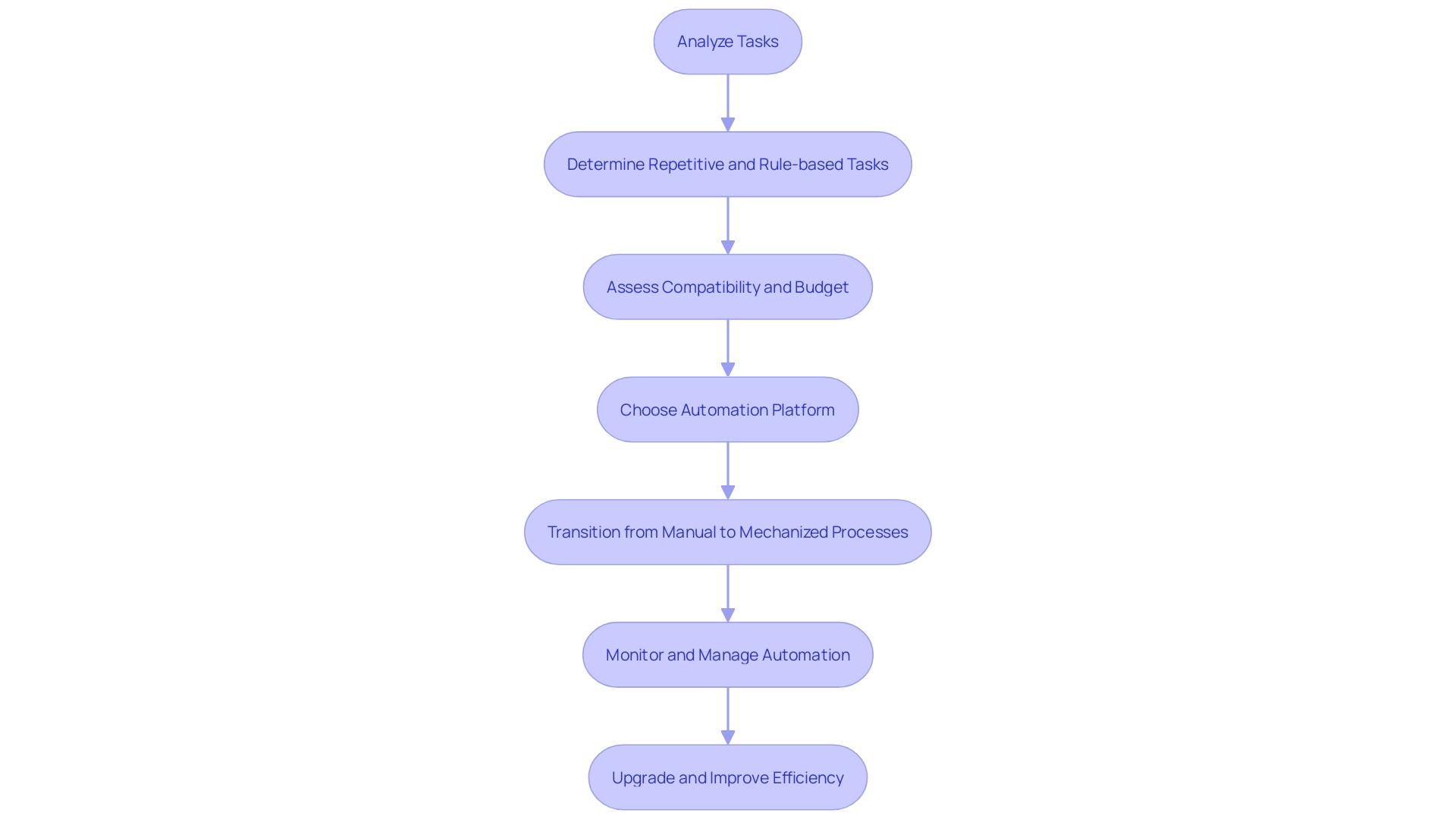
Choosing a Robot Automation Platform
Selecting a suitable Robot Automation platform is vital for the success of initiatives. When evaluating RPA platforms, consider factors such as scalability, ease of use, integration capabilities, security, and vendor support. A platform that scales effectively with your business needs, integrates seamlessly with existing systems, ensures robust security protocols, and offers reliable support can significantly enhance the effectiveness of your automation efforts.
GrayMatter Robotics is at the forefront of transforming manufacturing with AI-driven robotics, crafting smart robotic cells that augment human capabilities in repetitive and ergonomically challenging tasks. Their success emphasizes the significance of choosing a partner whose solutions align with your quality and improvement objectives.
Moreover, at the recent World Robot Conference in Beijing, the display of humanoid robots capable of diverse applications highlighted the rapid advancement in robotics, suggesting an impending era where robots are as ubiquitous as digital assistants are today. This underscores the need for platforms that can adapt to the rapidly evolving technological landscape.
A foundational understanding of your organization’s processes, technology, and people will guide the successful implementation of new technologies. Vision and strategy, along with a comprehensive grasp of existing workflows, are key to realizing the benefits of digital transformation, like integrating digital twins with gantry robots for optimized operations.
Remember to ask important questions before selecting a tool for streamlining processes, such as the intended use case and compatibility with your systems. This clarity assists in choosing a tool that best meets your requirements.
Investing in intelligent technology also yields significant financial benefits, as evidenced by a study showing a 73% revenue growth in overall Net Present Value (NPV) benefit and a 5.4% compound annual growth rate (CAGR) over three years. This emphasizes the measurable returns on investment when implementing mechanization solutions thoughtfully.
To sum up, the appropriate platform for streamlining processes is not only about technology—it’s about discovering a solution that aligns with your vision, enhances your current procedures, and propels your business towards future expansion.
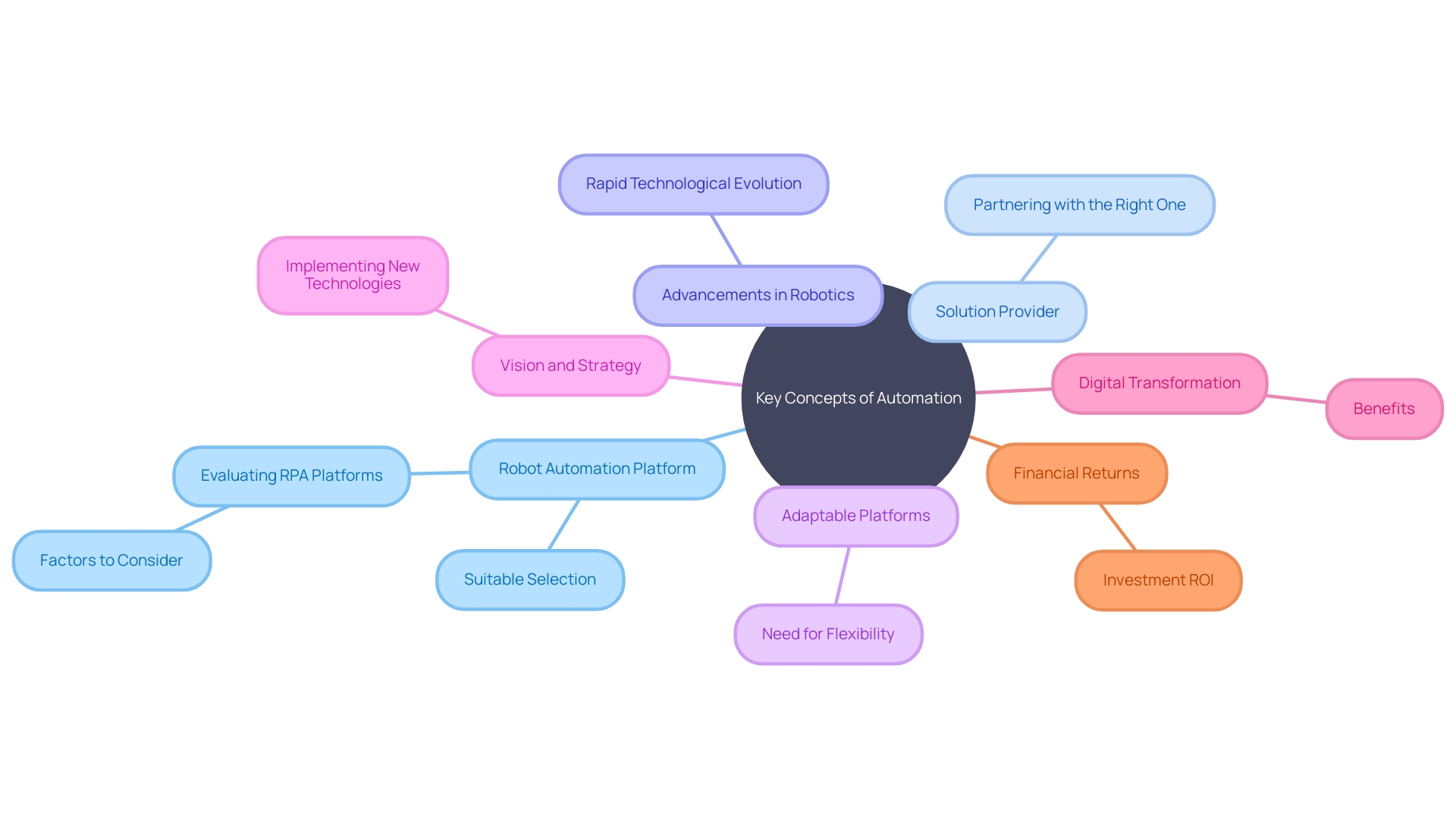
Creating a Proof of Concept
Beginning the process of robotic technology requires a well-thought-out plan, and building a proof of concept (POC) is a vital initial phase. This stage is crucial in evaluating the feasibility and potential benefits of robotic technology within your operations. A detailed POC process should include the selection of processes that are prime candidates for mechanization, meticulously designing an automated workflow that’s both efficient and effective, and a thorough evaluation of its performance.
For example, St. James Winery, a prominent winery with more than 50 years of success, could utilize a POC to assess how robotic technology could improve their vineyard and cellar operations. By successfully executing a POC, businesses like St. James Winery can substantiate the efficacy of robotic technology and proceed with confidence.
The broader market is also recognizing the value of such innovations. According to the Hannover Messe report, there is a growing demand for mobile robotic technology, with applications spanning from e-commerce to healthcare. The development of affordable mobile robots, such as the ReBeL, which is revolutionizing accessibility for small and medium-sized enterprises, is a testament to the transformative power of automation.
To ensure that the POC aligns with the high standards and expectations of stakeholders, acceptance testing is integral. It’s a phase where the system is scrutinized to ascertain its compliance with user requirements and legal regulations, thus safeguarding against potential legal repercussions in regulated industries. Planning and preparation, which involve defining the scope, selecting appropriate tools, and setting up a testing framework, lay the foundation for successful test case and data preparation. This careful procedure is crucial for configuring the environment and managing test data to mirror real-world scenarios as closely as possible.
Mapping and Building the Automation Workflow
After identifying the appropriate processes for streamlining, the subsequent course of action involves carefully designing the workflow. This starts by performing a comprehensive examination and carefully recording every stage of the current workflow, followed by setting up the logic and rules of the system. The creation of an effective workflow is not only about the mechanization itself but also about predicting and planning for possible failures, as observed in the experiences of infrastructure companies like Nuon. They comprehend that every stage, starting from authorizing account entry to deploying applications, can face problems like permission denials, customer interference, or failures, all of which need to be skillfully managed to guarantee a seamless and efficient implementation.
Innovations like Bosch’s solid oxide fuel cell (SOFC) are exemplary, demonstrating how a combination of high electrical efficiency and digital twin technology can optimize performance and facilitate sustainability in energy production. Similarly, workflow mechanization should be envisioned as a robust system that can adapt and evolve. By leveraging cutting-edge tools and platforms, organizations can automate mundane tasks like notifications and permissions management, freeing up valuable human resources for more strategic endeavors. A Zapier report highlights that nearly all workers in smaller businesses routinely perform repetitive tasks, signifying the widespread effect that the use of technology could have on enhancing job satisfaction and operational efficiency.
Moreover, the rapid adoption of platforms like Power Apps, which is now used by over 25 million users monthly, demonstrates the growing appetite for tools that enable seamless collaboration and development. By embracing an integrative approach to workflow management, businesses can establish an environment that is not only favorable for ‘Citizen Developers’ but also for professional developers who desire transparency and control over the source code. The mapping and building of an automation workflow are thus a pivotal step in achieving streamlined operations, and when executed with foresight and strategic planning, it can lead to transformative results for an organization.
Implementing Robot Automation Bots
Deploying Robot Automation bots is more than just setting up automated workflows; it’s about ensuring they mesh perfectly with your existing systems and perform tasks with precision and efficiency. The deployment begins with careful bot configuration, customized to your specific business requirements, and expands to thorough testing to ensure perfect operation.
For example, companies like GrayMatter Robotics are at the forefront, transforming manufacturing through AI-driven robotics that enhance productivity and quality of life. Their method of streamlining highlights the significance of excellence and collaboration in the implementation.
When it comes to testing, it’s akin to the precision and commitment of Last Arrow Manufacturing, a metal fabrication expert, ensuring products meet the desired quality standards. This level of dedication is mirrored in the testing phase of Robot Automation bots, where every scenario is meticulously evaluated.
The deployment process also includes a strategic approach to integration. At a recent ceremony in London that recognized achievements in robotics and technology, it was emphasized that the effectiveness of these processes depends on the collaboration between individuals, machinery, and information. The integration phase ensures that these elements work in harmony, similar to the holistic systems approach advocated by experts.
Furthermore, the significance of human supervision in mechanization cannot be emphasized enough. From the water wheel to AI, history teaches us that while mechanization aims to boost efficiency and productivity, it requires human partnership to maintain stability, as emphasized by the CTO and Co-Founder of Reveille Software.
With an action guide that includes an 11-point blueprint for optimizing intelligent robots, businesses can navigate the complexities of integrating Robot Automation bots. The ongoing increase in workflow adoption, as observed in the latest statistics for 2024, indicates that businesses that embrace this technology can maintain a competitive advantage.
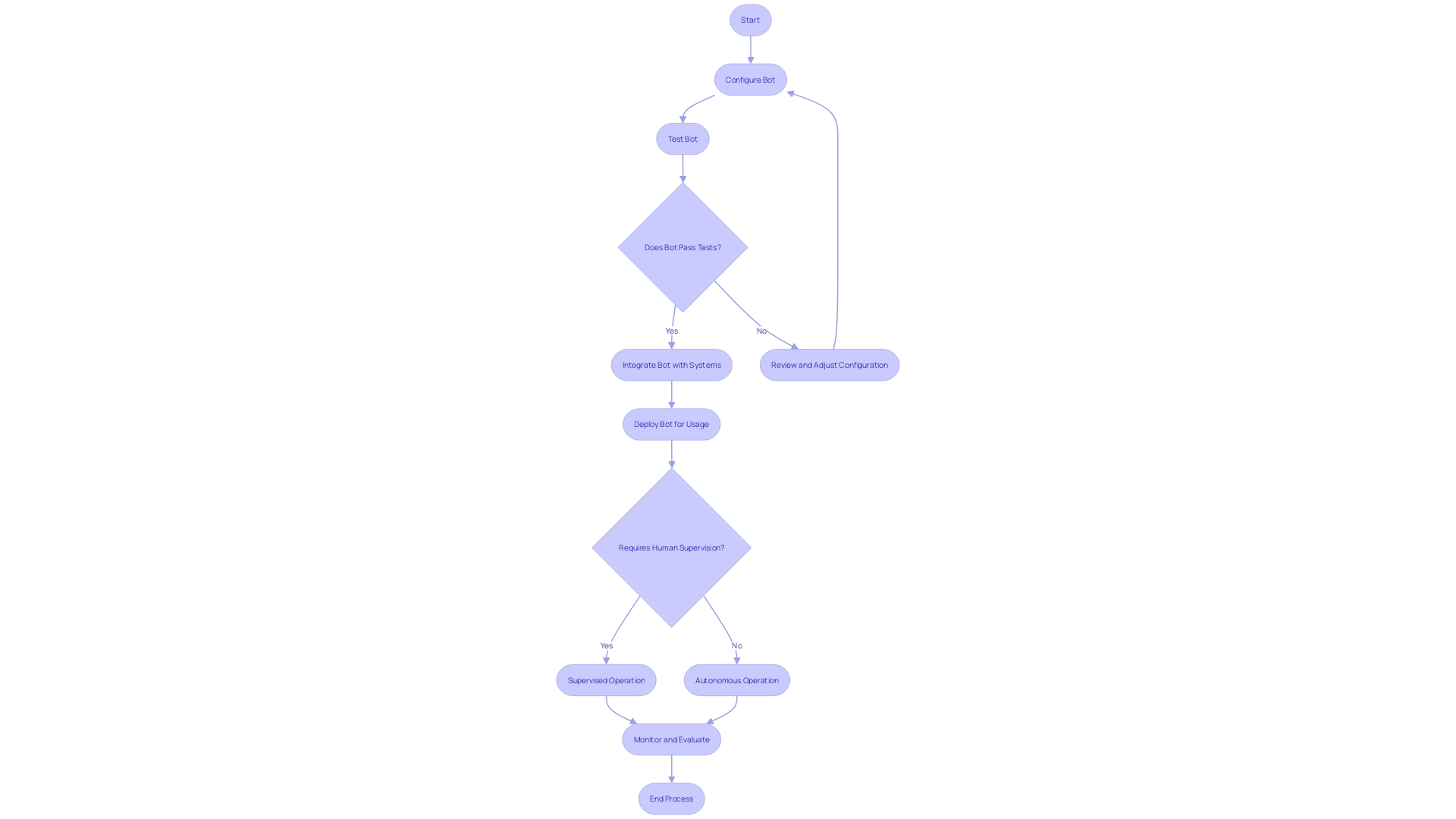
Monitoring and Maintaining Robot Automation Bots
Robotic Process Automation (RPA) bots have revolutionized the way businesses handle routine tasks, allowing for increased accuracy and productivity while saving time and resources. However, the deployment of these bots is only the beginning. Effective bot management is crucial, and this involves diligent monitoring and regular maintenance to ensure they continue performing optimally.
Monitoring RPA bots involves more than just overseeing their day-to-day operations; it requires an in-depth understanding of their performance metrics and the ability to identify and resolve issues promptly. Initiatives like Fortinet’s advanced bot protection service, which can differentiate between malicious and benign bots, underscore the sophistication needed in today’s bot management strategies.
Maintenance, on the other hand, is about ensuring the bots are up-to-date with the latest software updates and security patches. According to a senior mechanical engineering specialist, Ian Gardiner, even though the core technology may remain the same, continuous improvements and updates are essential. This is evident from the challenges faced by his team in keeping product design data updated across departments and partners.
Organizations should also be mindful of the broader operational environment. For instance, as OODA’s team of experts provides advanced intelligence and analysis services, they highlight the importance of being aware of risks and threats in the digital landscape, including those posed by malicious bots.
To preserve the long-term advantages of bot mechanization, it is crucial to have a strong plan in place that involves establishing essential roles and permissions, as demonstrated by the procedure of initializing a CloudFormation template. This is a foundational step in deploying bots that are secure and have the necessary access to perform their tasks.
With nearly half of all internet traffic being bot-generated, and a significant portion of that being malicious, it’s clear that the stakes are high. This is supported by the insights from the State of the survey for automation professionals, which indicates that the field is quickly evolving, with a growing need for skilled professionals who can navigate the complexities of AI and RPA.
In summary, the ongoing success of RPA bots in an organization is contingent on proactive monitoring, timely maintenance, and a keen awareness of the digital ecosystem. By adopting these practices, businesses can maintain and improve the advantages of technological advancement well into the future.
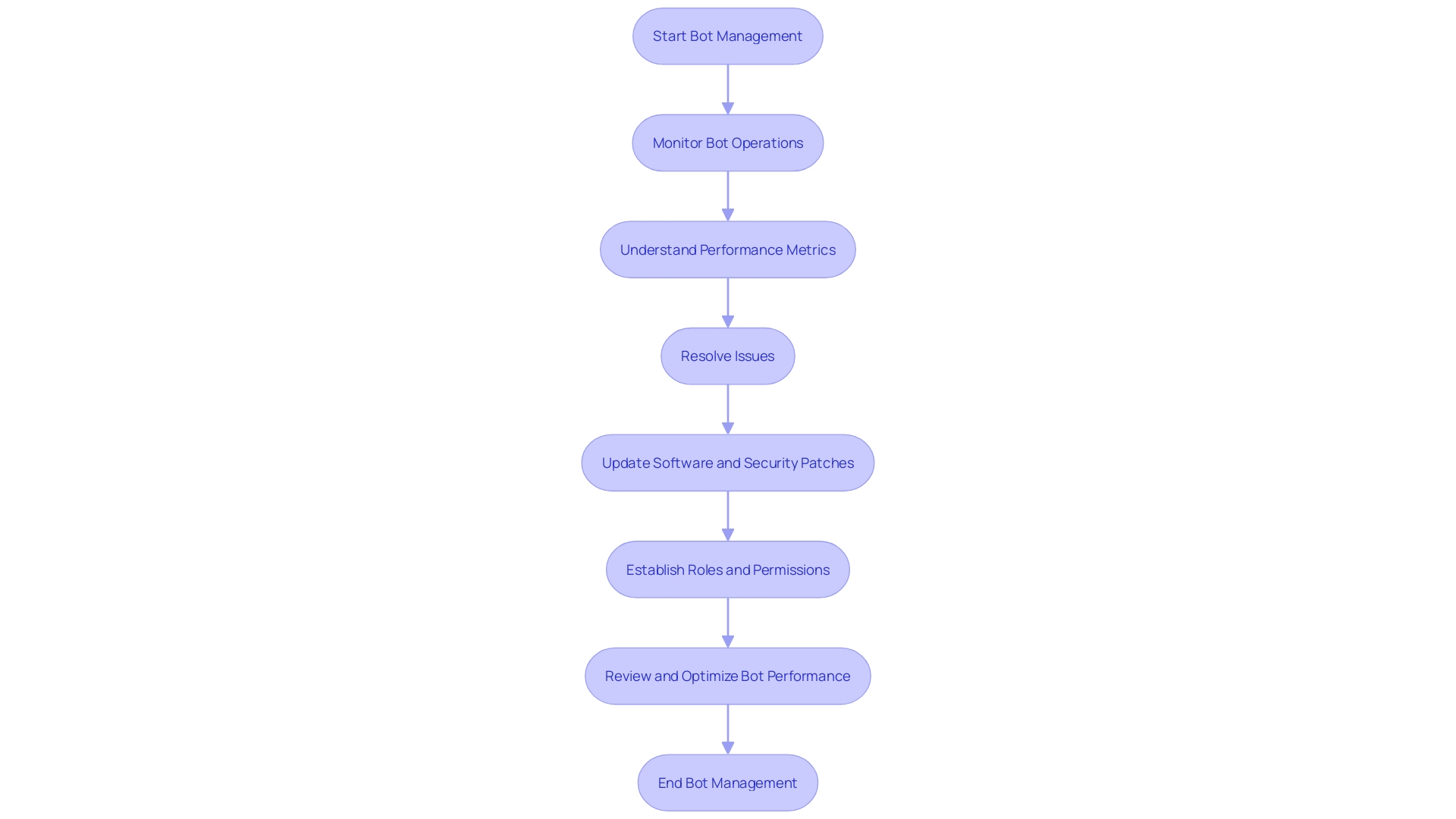
Advanced Robot Automation Techniques
Embracing the cutting edge of mechanization, we explore the realm of cognitive mechanization, intelligent mechanization, and the incorporation of machine learning into robotic systems. These avant-garde techniques are not merely add-ons; they are transformative forces for businesses. Cognitive brings the power of human-like reasoning to handle unstructured data, intelligent process orchestrates complex workflows, and machine learning yields insights from data, leading to astute decisions. The fusion of robotics with these technologies propels organizations into a realm of heightened efficiency and innovation.
As demonstrated by GrayMatter Robotics, whose AI-driven solutions are shaping the future of manufacturing, the implementation of intelligent technology is truly profound. Furthermore, Last Arrow Manufacturing’s ten-year metal fabrication experience demonstrates that even specialized sectors can greatly profit from incorporating advanced technology.
The recent unveiling of Omron’s iCR robot, as mentioned by company president Olivier Welker, is evidence of the progress being made in industrial technology. The iCR is set to redefine manufacturing standards globally, underscoring the significance of continuous innovation.
To leverage the complete potential of intelligent technology, companies should consider developing a strong collection of tools to support its growth. Initiating with simpler tasks and scaling up to more complex workflows is a strategic approach. Continuous monitoring and documentation of results are critical for measuring success and guiding future endeavors. In the end, intelligent automation is equivalent to digital transformation, and its careful implementation can result in significant improvements in efficiency, gains, and more informed decision-making.
In the current landscape, organizations like Pieces exemplify the augmentation and enhancement model by equipping developers with tools that boost their cross-functional capabilities. This approach, as discussed by Tsavo Knott, enhances productivity without replacing the human element. It’s an era where the synergy of robotics, AI, and human ingenuity is unlocking untapped potential across various sectors.
Integration of Artificial Intelligence and Machine Learning in Robot Automation
The advent of AI and ML in the realm of Robot Automation heralds a transformative era for industries, imbuing robots with cognitive capabilities, predictive analytics, and adaptive learning faculties. These advancements are not merely incremental; they represent a seismic shift in operational potential. For instance, GrayMatter Robotics is leveraging AI to refine manufacturing processes, aiming to elevate human productivity while simultaneously enhancing life quality. Their proprietary AI technology is directed towards crafting a future where robotics seamlessly integrate into manufacturing, ensuring products meet the highest standards of quality.
Meanwhile, groundbreaking research by KIMM’s Chang-hyun Kim and his team has yielded AI applications for robot work that simplify adoption in manufacturing, with a current focus on electronic component production. Their AI solution interprets user commands through Large Language Models and virtual environments, facilitating task execution by robots. This technology promises to revolutionize task sequence and motion generation, allowing for intuitive voice or text command recognition.
In practical terms, the range of intelligent mechanization can be divided into four separate categories: AI-enhanced, independent, self-governing, and cognitive mechanisms. Each category delineates the level of sophistication in Ai’s interaction with human activities and environments. The lines between these categories may blur as the technology progresses, reflecting the dynamic evolution of intelligent automation.
Supporting this technological march, statistics reveal that AI-augmented systems might display autonomous traits under certain conditions, underscoring the fluid nature of these classifications. Furthermore, an AI algorithm’s effectiveness hinges on three pillars: the capacity to measure, discerning valuable data from the deluge available, and processing multiple inputs simultaneously. This necessitates a judicious selection of data, focusing on the most pertinent information to the decision at hand and the minimum necessary to optimize AI outputs.
In essence, AI’s role in business is transformational, not just as a tool, but as a revolution. As companies harness AI to execute independent tasks, they can redirect focus on more critical functions, boosting productivity, and driving sales growth. In this context, touch-sensitive robotics, a discovery attributed to Maged Iskandar, is an exemplary case where force-torque sensors paired with machine learning empower robots to interpret various tension forms, enhancing their touch sensitivity.
This is not the future; it is the present. Brands and businesses are already implementing AI to lead industry progress. St. James Winery’s storied tradition of wine-making excellence illustrates the practical benefits of mechanization. With their dedication to excellence, they serve as evidence of the benefits of embracing intelligent technology. Ready to start a journey of mechanization? The advancements in AI and ML are paving the way for smarter, more efficient, and profoundly transformative operations in Robot Automation.
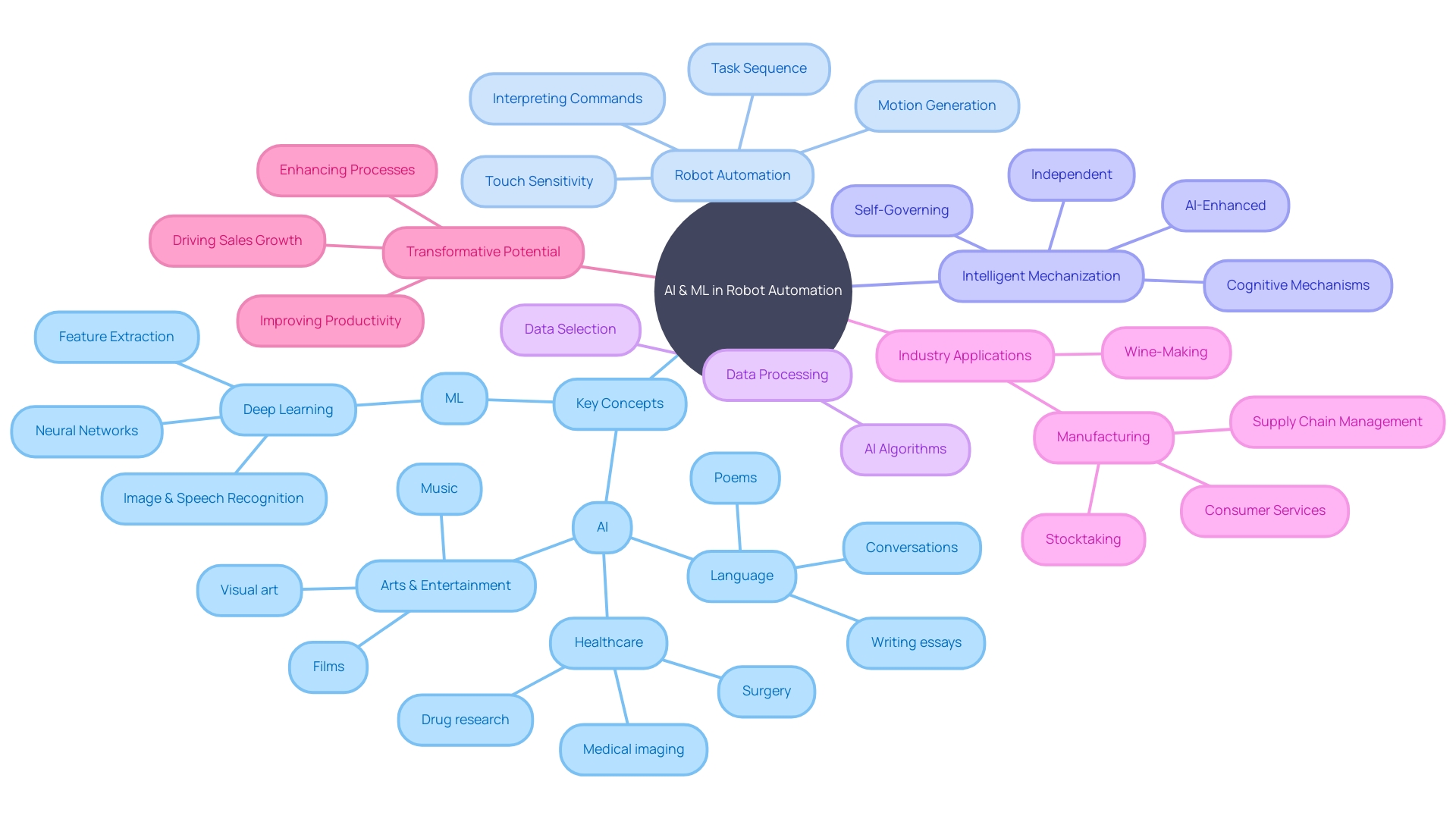
Use Cases of Robot Automation in Various Industries
Robotic technology is transforming a wide range of sectors by enhancing operations and efficiency. In banking, powerful AI is set to impact 73% of employee tasks, with a significant portion available for mechanization, promising a transformative impact on productivity. In healthcare, precision and consistency are paramount, and robotics ensures these qualities are upheld in every procedure. Manufacturing benefits from both the meticulous precision and the ability to maintain unfaltering pace, leading to a marked increase in production capabilities without sacrificing quality.
The field of hospitality, as exemplified by the Louvre Hotels Group, has experienced impressive efficiency improvements with the implementation of robotic solutions in managing rate code maintenance, resulting in saving countless hours each month and showcasing the scalability of automated technology. Logistics, as well, is a field enjoying the benefits of mechanization, with streamlined procedures and improved tracking abilities.
Even in construction, a sector traditionally slow to adopt new technologies, innovation is taking root. With the likes of ABB Robotics and Porsche Consulting spearheading a pilot project for automated housing manufacturing, the sector is set to address labor shortages and contribute to sustainable building practices. By embracing robotic technology, operations in these industries are not just improving their current procedures but are also paving the way for a more efficient and innovative future.
Best Practices for Implementing Robot Automation
Successfully implementing robotic technology hinges on adhering to established best practices that pave the way for a seamless and efficacious journey. These best practices involve thorough process evaluation to ensure the proper fit, extensive stakeholder engagement to encourage support, strong change management to navigate the transition, and a dedication to continuous improvement, allowing for the progression of processes over time.
GrayMatter Robotics exemplifies these principles, leveraging AI to enhance human productivity and quality of life in the manufacturing sector. Their emphasis on developing robotics and exclusive AI solutions highlights the significance of selecting the appropriate partner and solutions for a successful outcome.
Moreover, as the International Federation of Robotics highlights, we are amid a transformative era marked by global events reshaping manufacturing and logistics. With AI advancements, robots are now capable of learning from experience and operating in dynamic environments, reinforcing the role of AI in empowering autonomous systems.
Businesses must, therefore, clarify their specific needs and establish guiding principles for selecting appropriate technologies. This involves understanding the nuances of different technologies and evaluating various scenarios, including potential for future growth.
Acceptance testing also plays a crucial role, offering a user-centric perspective to ensure the automation meets the expected real-world requirements. This step is critical to maintain compliance with legal and regulatory standards, particularly in industries such as healthcare and finance.
Statistics on autonomous capabilities of robots, like those provided by AMRs, reveal the complexity of developing systems that can navigate and collaborate effectively in dynamic spaces like warehouses. This complexity is compounded by the need for robots to interact safely with humans and integrate with IoT devices.
Additionally, the findings from a worldwide survey of 1,639 professionals in the field of automated processes carried out by UiPath in early 2023 demonstrate an increasing curiosity and preparedness to incorporate AI into the labor force. Such insights are invaluable for hiring managers and CoE leaders looking to navigate the complexities of technological advancements in the workplace.
By embracing these best practices and insights, organizations can optimize their initiatives, ensuring that their journey towards efficiency and innovation is both sustainable and aligned with the evolving landscape of AI and robotics.
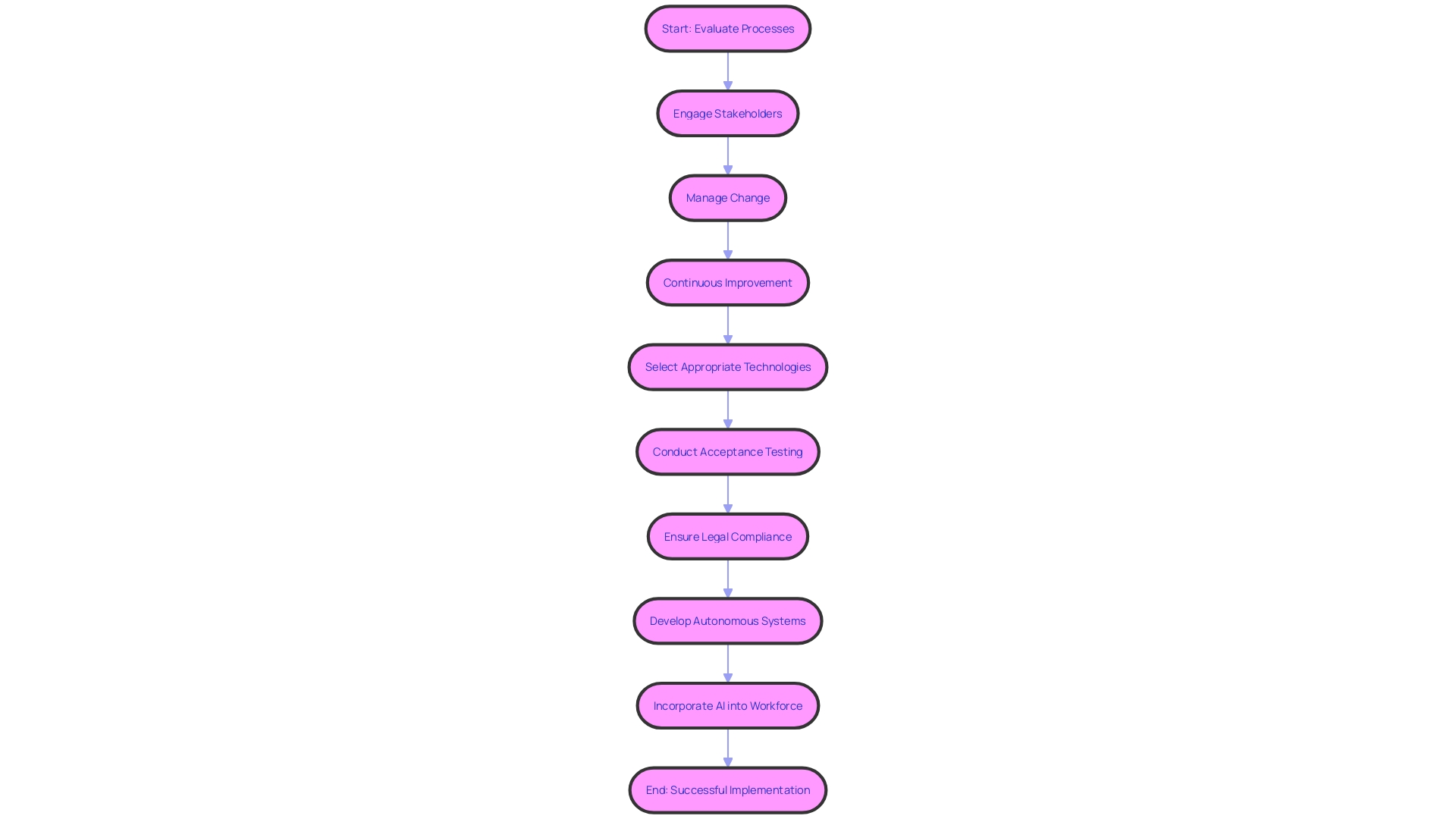
Common Challenges and Solutions in Robot Automation Implementation
While the incorporation of robotic technology into sectors presents revolutionary potential, it’s crucial to recognize the associated difficulties. These include adapting to the evolving technological landscape, addressing data security concerns, and ensuring scalability to meet future demands. In the journey towards successful mechanization, companies like Millennium Recycling have shown the effectiveness of advanced single-stream processes in expanding their operations and staying ahead in the recycling sector. Similarly, GrayMatter Robotics’ AI-driven solutions exemplify the synergy between human ingenuity and robotic precision, enhancing productivity and quality of life.
A McKinsey report highlights that businesses, particularly SMEs, are anticipated to allocate more than 25% of their capital towards the implementation of automated systems in the coming years, indicating a definite move towards embracing these technologies. Despite initial hesitance, the trend is shifting, as demonstrated by a 54% increase in the installation of new robots in the UK in 2022 compared to 2015.
The industrial landscape has always evolved in an ‘S-curve’ pattern, beginning with a learning phase characterized by experimentation. This progresses into a deployment phase where foundational technologies are applied, leading to an optimization phase where best practices are established and costs stabilize. This trend can be seen in the implementation of mechanization across various sectors.
In the context of the fourth industrial revolution, the UK’s position in robot density, standing at 25th globally with 98 robots per 10,000 workers, contrasts with Germany’s 415. This void emphasizes the crucial requirement for sectors to adopt mechanization to improve efficiency and sustain competitiveness.
By utilizing the knowledge from case studies, industry news, and expert analysis, businesses can navigate the intricacies of implementing automated processes. Dealing with these challenges necessitates a well-planned strategy, fostering collaborations with solution providers, and staying updated on the latest advancements in AI and technology.
Measuring the Success of Robot Automation Initiatives
Assessing the effectiveness of robotic technology is more than a matter of tracking metrics; it’s a strategic approach to harvesting tangible benefits. Millennium Recycling, with its cutting-edge single-stream technology, serves as a testament to the transformative power of mechanization, making recycling simpler and widely accessible. Similarly, RobosizeME’s partnership with Louvre Hotels Group resulted in a remarkable boost in operational efficiency, saving hundreds of hours per month in rate code maintenance alone. These examples highlight the quantifiable results of well-implemented mechanization.
Key performance indicators (KPIs) central to this evaluation include cost savings and error reduction, which are straightforward metrics of success. Nevertheless, the evaluation also encompasses the examination of process cycle times and employee productivity, offering a thorough comprehension of the influence of mechanization. When St. James Winery embraced technological advancements, it wasn’t just about the bottom line; it was about reinforcing its legacy as a leading winery, where quality is paramount.
Incorporating these metrics requires a nuanced approach, akin to the meticulousness of Tony Stark fine-tuning his Iron Man suit. It requires a careful evaluation of use cases within the Power Platform, where the frequency of automated executions and the anticipation of peak demand periods are just as important as the potential monetary value derived from automating processes. This careful planning is backed by Forrester’s Total Economic Impact methodology, which has demonstrated a substantial increase in revenue and CAGR for companies investing in intelligent technology.
These insights are complemented by the words of Elon Musk, who emphasizes the significance of questioning every requirement to ensure that mechanization initiatives are as effective as possible. This philosophy aligns with current trends in mechanization, where space and time constraints of the physical world meet the boundless potential of digital innovation. As the field of mechanization keeps on advancing, it’s clear that a strategic, data-driven method for measuring success is not just advantageous but necessary for any organization looking to stay ahead in the industry.
Future Trends in Robot Automation and Automation
Robotics and mechanization are at the forefront of industrial and technological advancement. The current trends suggest a future in which hyperautomation, intelligent automated systems, and collaborative human-robot interactions become the standard, working together to improve productivity and operational efficiencies.
Recent case studies highlight the practical impacts of these innovations. GrayMatter Robotics is reshaping the manufacturing landscape with AI-driven robotic solutions that promise enhanced human productivity and higher quality end-products. In the same way, the partnership between RobosizeME and Louvre Hotels Group demonstrates the power of automated processes in the hospitality sector, resulting in significant time savings every month through advanced rate code maintenance technology.
The 2024 World Robot Conference in Beijing was a testament to the sector’s burgeoning growth, with humanoid robots poised to become ubiquitous in fields ranging from manufacturing to entertainment. Embodied AI is set to revolutionize our daily lives, and the fervor surrounding it is likened to a new space race, with significant investments pouring in.
One of the key trends in robotics is the integration of the Industrial Internet of Things (IIoT) with articulated robots, which are known for their flexibility and precision. IIoT enhances these robots’ capabilities, allowing for more efficient operations and predictive maintenance through real-time data analysis.
Moreover, the global industrial robotics market is expected to exceed 45 billion USD by 2028. This growth is fueled by AI, machine learning, and sensor technology advances, coupled with an increasing demand for sustainable manufacturing solutions to counteract global labor shortages.
The classification of intelligent mechanisms differentiates them into AI-augmented, self-governing, self-regulating, and cognitive mechanisms, each exemplifying different degrees of interaction with human activity. These systems are revolutionizing industries by offering efficiency, cost savings, and enhanced safety, although integration complexity and adaptability challenges remain.
Overall, by understanding and adopting these emerging trends, companies can leverage robotics and automation to secure a competitive edge and foster a more dynamic and innovative operational framework.
Conclusion
In conclusion, robotic process automation (RPA) offers increased efficiency and precision, transforming businesses across industries. Key concepts include selecting the right automation platform, creating a proof of concept, and mapping the automation workflow. It’s crucial to choose reliable partners and solutions that align with goals.
Implementing robot automation involves meticulous configuration, comprehensive testing, and strategic integration. Monitoring and maintaining bots ensure optimal performance. Advanced techniques like cognitive automation and machine learning integration enhance efficiency and innovation.
Robot automation has use cases in various industries, optimizing operations and increasing productivity. Best practices include thorough process evaluation, stakeholder engagement, change management, and continuous improvement.
Measuring success involves tracking metrics like cost savings, error reduction, and employee productivity. Future trends include hyperautomation, intelligent automation, and collaborative human-robot interactions.
By understanding these trends, companies can leverage robotics and automation for a competitive edge. The transformative power of automation shapes the future of work, and businesses that embrace it gain significant advantages.
Ready to streamline your workflows and enhance efficiency? Implement robot automation today!
Introduction
Artificial intelligence (AI) is revolutionizing the insurance industry, particularly in claims processing and underwriting. By harnessing the power of AI, insurers can analyze vast datasets with unprecedented speed and precision, leading to increased efficiency and informed decision-making. Despite the challenges of implementation, early adopters of AI in the industry have seen tangible enhancements in their services, showcasing the transformative impact of this technology.
Moreover, the integration of AI aligns with regulatory guidelines, ensuring ethical use of data within the insurance domain. Leveraging AI, insurance companies can expedite the underwriting process, resulting in more accurate risk assessment and a smoother claims experience for customers. By streamlining operations and enhancing data accuracy, AI adoption offers exceptional service, reduces costs, optimizes resources, and focuses on customer satisfaction.
The potential of AI in claims processing is becoming increasingly tangible, with companies experiencing quantifiable results from their AI initiatives. As the insurance industry continues to evolve, embracing AI and automation, it is poised for operational excellence and a more customer-centric approach.
The Role of AI in Insurance Claims Processing
Artificial intelligence is significantly transforming the sector of coverage, especially in the domains of assertions management and risk assessment. By utilizing the advanced capabilities of AI, insurers are now able to sift through vast datasets with unprecedented speed and precision, uncovering insights that are integral to informed decision-making. This technological leap forward has led to a significant uptick in efficiency, with AI-driven systems capable of detecting intricate patterns and executing complex tasks that previously required human intervention.
Statistics emphasize the transformative impact of AI within the industry, as a study indicates that 91% of leaders in financial services and insurance have initiated AI pilot programs. However, only 36% have succeeded in integrating these systems broadly across their operations. Despite the challenges of implementation, the early adoption of generative AI by property and casualty insurers is bearing fruit, showcasing tangible enhancements in various aspects of their services.
Moreover, the implementation of AI is in line with the industry’s regulatory framework, as evident from New York’s release of guidelines ensuring AI applications do not violate current regulations on unfair claim settlement practices and the mishandling of consumer information. These advancements in AI not only streamline processes but also fortify the ethical use of information within the sector.
By utilizing AI, companies are now able to speed up the underwriting process by analyzing historical data to more accurately assess risks and tailor coverage. This transformation not only benefits the insurers by enabling more precise risk assessment but also enhances the experience for the individual, who gains from a smoother, more responsive process for submitting requests for compensation.
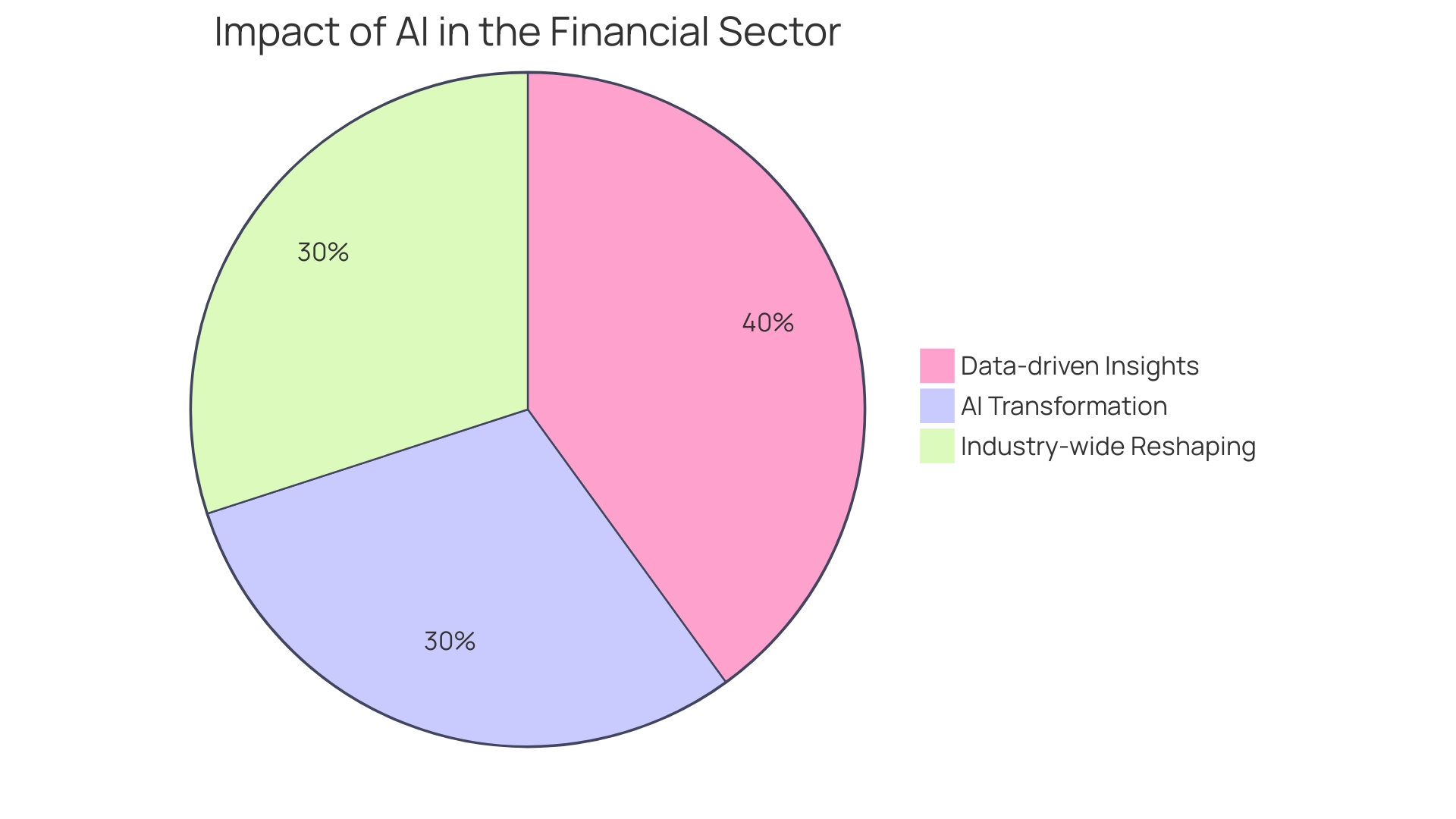
Streamlining the Claims Workflow
Embracing automation and intelligent solutions in the industry is revolutionizing how claims and underwriting are processed. With the incorporation of artificial intelligence (AI), providers of coverage are experiencing a shift in thinking, enabling a more efficient workflow that eradicates manual obstacles, diminishes paperwork, and delivers faster claims settlements, ultimately resulting in heightened satisfaction of clients.
For instance, Hiscox, an international specialist insurance company, has witnessed the transformative power of automation firsthand. By implementing AI-powered solutions, they managed to decrease their repetitive workload by 28% and greatly enhance their response times to inquiries from their clientele. This not only enhanced overall customer experience but also alleviated the pressure on their service teams, contributing to both customer and employee contentment. Guilherme Batista, Process and Operations Manager at Hiscox, emphasizes the significance of automation in achieving sustainable growth without proportionally increasing operating expenses.
In the broader context, AI’s potential in the sector of insuring is vast. From an open-source platform that simplifies health coverage appeals to the utilization of generative AI for claims processing, the industry is at the cusp of a major transformation. Gen AI, for instance, is being used to enhance customer experience by improving policy coverage assessment and streamlining the First Notice of Loss intake.
Furthermore, the implementation of AI in insurance isn’t just about improving efficiency but also about attaining consistent accuracy in information. By standardizing processes, AI models reduce manual errors and ensure uniformity in data collection. This is demonstrated by recent findings that indicate a significant decrease in overpayment related to claims as a result of the implementation of AI-audited bill reviews.
Data also indicate that customers prioritize prompt handling of claims, with a survey showing that a majority of customers in different countries consider speedy processing as a top expectation. Insurance companies are thus intensifying their automation efforts to meet this demand. Furthermore, the industry of ensuring is starting to acknowledge the significance of a fail-fast approach and the value of transparency in digital tools, as emphasized by industry leaders.
Choosing the right automation tools for claims processing requires careful consideration of scalability, integration, accuracy, reliability, and regulatory compliance. As the industry moves forward, insurers are finding that despite the challenges, the benefits of AI adoption are becoming increasingly tangible, with many already experiencing quantifiable results from their AI initiatives.
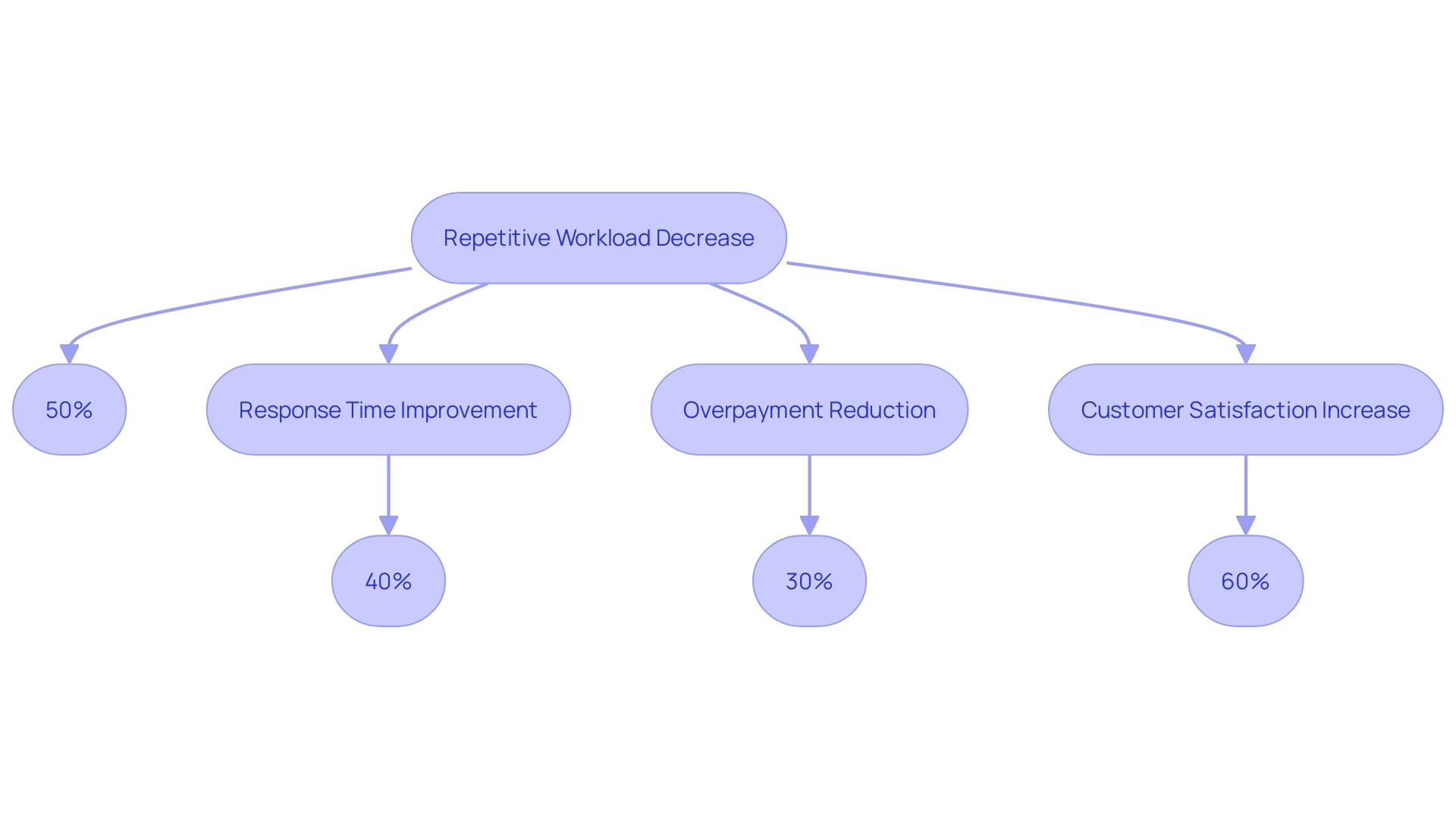
Enhancing Accuracy with AI and Machine Learning
The transformative power of generative artificial intelligence (GenAI) is reshaping the landscape of property and casualty insurance. With a steadfast commitment to innovation, these companies are at the forefront, harnessing Ai’s capabilities to tackle complex challenges. The combination of AI and machine learning algorithms offers more than just automation; it provides a nuanced approach to analyzing vast troves of structured legacy information and structured information in JSON formats. These technologies can carefully examine past information, recognizing hard-to-find fraud patterns and marking doubtful assertions with unparalleled accuracy.
As insurers maneuver through the information revolution, the incorporation of AI has proven to be a game-changer in achieving precise and fair claims assessments. Notably, the industry’s expenditure on data analytics soared to over $11 billion in 2022, underscoring the urgency to curtail cybercrimes and fraudulent activities. The commitment to AI is further demonstrated by 91% of financial services and insurance leaders initiating AI proofs of concept, although widespread application across business functions remains at 36%.
The coverage sector, historically burdened by manual processes, is undergoing a paradigm shift as AI-driven solutions streamline operations and enhance client satisfaction. The impact of AI in the field of insurance extends beyond efficiency; it embodies a relentless pursuit of consistency and accuracy. By utilizing AI for underwriting and claims, insurance companies are not only expediting processes but also producing accurate loss reports – a distinct indication of the potential of AI to transform the industry.
Despite the challenges and the industry’s initial hesitation, the transformative potential of AI in the field of insurance is becoming increasingly tangible. As we further explore the uses of AI in processing insurance requests, it’s clear that the technology’s ability to acquire knowledge and adjust will only strengthen its precision and significance in the constantly changing market dynamics.
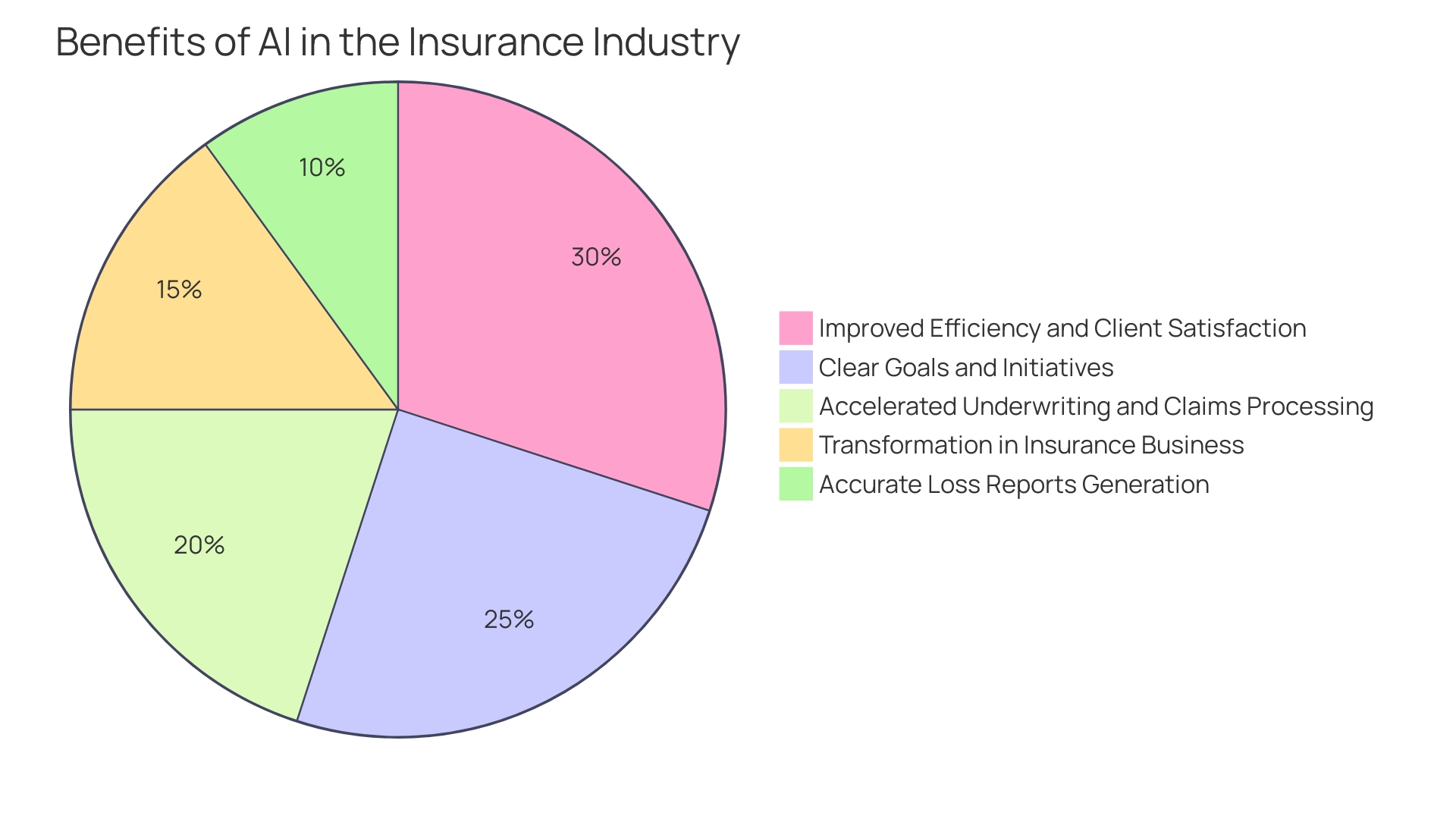
Predictive Analytics for Intelligent Decisions
Using the advanced features of predictive analytics, insurance companies are transforming the way they handle and oversee insurance requests. This innovative approach harnesses the power of historical data and advanced algorithms to forecast outcomes and identify trends. By implementing these predictive models, insurers are empowered to efficiently prioritize insurance requests, anticipate potential risks, and allocate resources effectively. The result is a harmonious balance between expeditious claim resolution for policyholders and meticulous cost management for the insurer, enhancing satisfaction on both ends. Moreover, the ongoing enhancement of these models with incoming information guarantees that insurers remain at the forefront of accuracy and significance in their forecasts, ultimately nurturing a more robust and reliable ecosystem for insuring.
Automated Data Extraction and Document Processing
Incorporating Intelligent Document Processing (IDP) into the workflow of insurance companies has been transformative, allowing them to automate the extraction and processing of information from a myriad of documents like invoices, medical reports, and policy documents. This advancement is supported by the utilization of state-of-the-art artificial intelligence and machine learning algorithms, which have been crucial in managing unorganized and partially organized information that typically necessitated manual input. Such information makes up a significant 85% of enterprise data in the insurance sector, turning IDP into not only a strategic enhancement but also a crucial asset in the industry.
For example, Amazon Kendra, a search service powered by machine learning, has proven to be a standout in this realm. It enhances the search experience by using custom metadata to filter and categorize content, showcasing its potential in managing the increasing volume of claims in the insurance sector. Similarly, the transformative effect of IDP extends to the underwriting process, where the accurate and timely collection of data is paramount. By leveraging IDP, insurance providers are observing a significant reduction in labor-intensive tasks, fewer errors, and enhanced efficiency in assessing risks and setting premiums.
The real-world implications of these technological advancements are substantial. According to a representative from a prominent insurance company, the process of reviewing claims, which previously entailed extensive manual work, has now been made more efficient through automation, with human supervision primarily dedicated to conducting final accuracy checks. This shift not only accelerates claim resolution but also unlocks new growth opportunities and cost efficiencies.
Furthermore, the challenges of interpreting ‘tables’ in documentsâa notorious problem where AI models struggle to maintain consistency with diverse formatsâare becoming a thing of the past. This development is vital for companies that need to navigate through extensive tables that may span multiple pages or present information in dense formats. The consistency and accuracy brought forth by IDP are indispensable in ensuring compliance and maintaining the integrity of the data collection process.
In the age of digital transformation, IDP stands out as a pivotal innovation for the industry of risk coverage, promising to elevate operational effectiveness to unprecedented levels and marking the beginning of a new era where speed and accuracy are no longer mutually exclusive.
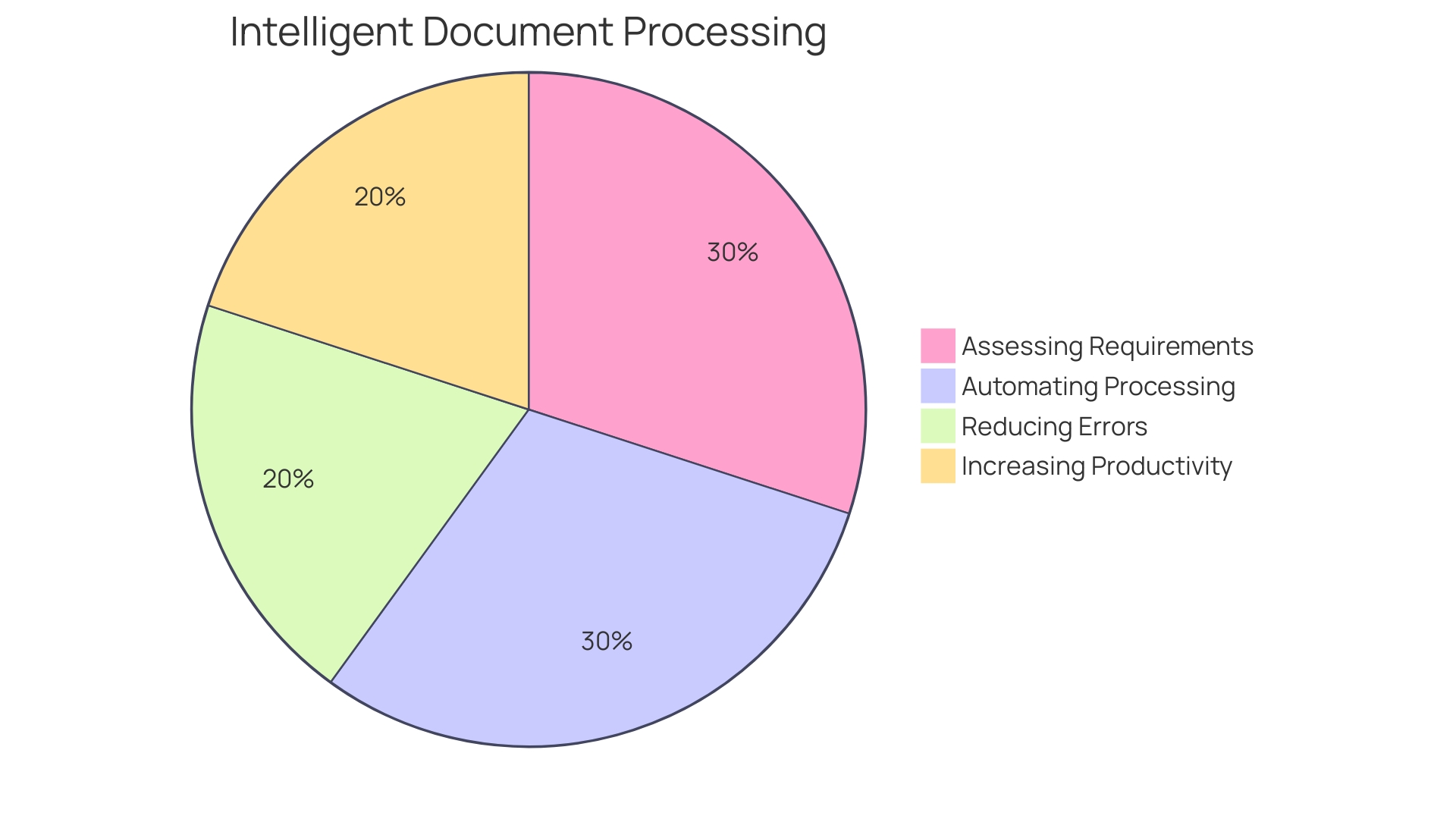
Predictive Claims Routing and Real-time Communication
The scenery of insurance requests and risk assessment is being revolutionized by generative artificial intelligence (GenAI), providing a guiding light of effectiveness and client contentment in an industry historically burdened by manual procedures. Amidst this transformation, AI-powered systems are showcasing their effectiveness by streamlining the routing of claims and fostering real-time communication. These systems, with their ability to quickly analyze the intricacies of a claim, the nuances of policy details, and the specifics of client information, can deftly navigate claims to the right department or adjuster, bypassing the labyrinth of traditional processing.
Moreover, the advent of real-time communication tools like chatbots and instant messaging platforms is revolutionizing the way policyholders engage with insurers. These tools provide instant updates, respond to queries, and maintain a seamless communication flow, effectively reducing the opacity that once frustrated customers. As the industry grapples with integrating AI into business practicesâa challenge underscored by a mere 36% of financial services and leaders reporting widespread use of AI proofs of conceptâthose who do are reaping the rewards. The effectiveness of AI in the field of insurance is not just theoretical. In the realm of claims adjustment, for instance, Ai’s role in assessing fire damage through image analysis has already shown its potential, offering a clear, visual documentation that enhances both the assessment and evidence-gathering stages of claims processing.
This movement towards intelligent solutions is not without its regulatory considerations, as evidenced by New York state’s recent guidelines ensuring Ai’s application adheres to legal and ethical standards. As insurers navigate these new waters, the integration of IoT in risk prevention and management is also garnering attention, highlighting the multifaceted impact of digital innovation in the sector. The promise of GenAI in insurance is clear: it’s a path to operational excellence, where the traditional and digital converge to create a more resilient and customer-centric industry.
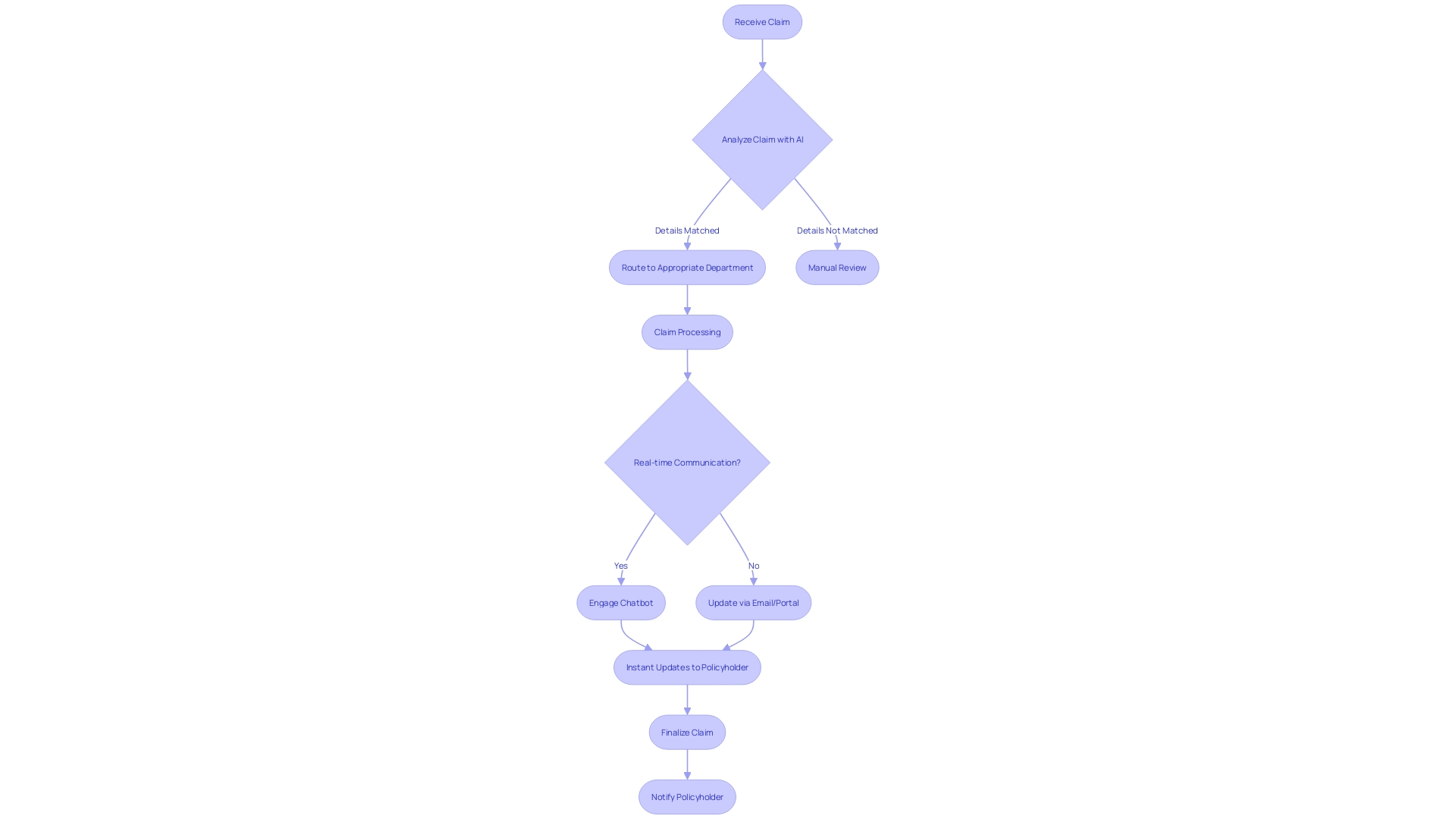
Benefits of Streamlining Claims Processing
Insurance companies today are on the cusp of a transformation, catalyzed by automation and intelligent solutions that streamline the claims process. Embracing technologies such as AI has led to a notable enhancement in efficiency. For example, through AI-powered document processing, insurers can guarantee uniform accuracy, removing the inconsistencies that result from various associates managing the same process in different ways. The outcome is a notable decrease in manual mistakes and a consistent approach to information gathering.
Claims automation is not just about speed but also about the depth of data analysis. AI’s capacity to identify patterns and evaluate sentiment adds a level of complexity to processing of assertions. For instance, AI can identify potential fraud or litigious circumstances, thereby enhancing the precision of assessment for insurance cases. This technology has also transformed the First Notice of Loss (FNOL) procedure, where AI can pre-fill information and prompt the client to verify details, enhancing the overall client experience.
The drive for automation is propelled by consumer demand for fast claims handling, which has been identified as a top priority by 52% to 63% of individuals across multiple countries, according to a survey conducted by Sollers Consulting and Ipsos. This desire for speedy processing times is not just a convenience; it is a vital component of satisfaction, sometimes even surpassing the importance of the compensation amount itself.
Enterprises are making significant investments in analytics, with global spending in the insurance industry surpassing $11 billion in 2022, highlighting the sector’s commitment to data-informed decision-making. The implementation of generative AI has also shown promising prospects, providing capabilities ranging from summarizing key points in data to identifying missing information, thereby enriching the customer journey.
In general, with the incorporation of AI and automation, companies that provide coverage are ready to provide outstanding service, decreasing expenses, optimizing resources, and concentrating on what is most important—their policyholders.
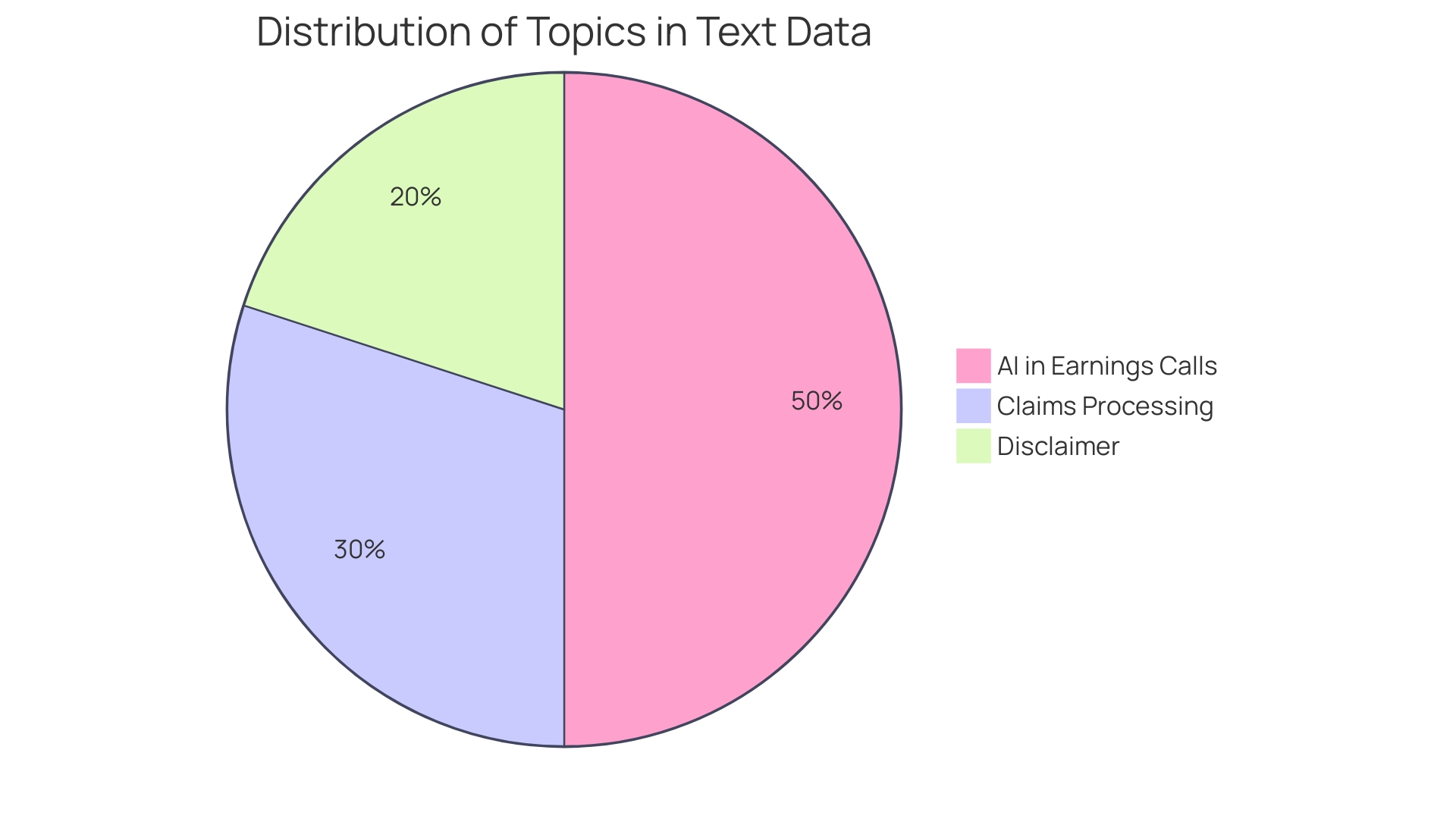
Case Study: Implementation and Results
XYZ Insurance Company’s strategic integration of AI-powered systems for handling insurance cases revolutionized their operational efficiency. By utilizing sophisticated algorithms for requests registration, document administration, fraud identification, and efficient requests routing, the company not only reduced manual errors but also increased processing speeds by an impressive 40%. This innovative method resulted in a 20% decrease in false assertions, a remarkable figure given the rise in credit card deception, which has escalated from 127 million instances in 2021 to an estimated 150 million in 2023 in the United States, according to Dataprot. The industry’s battle against such fraud leverages cutting-edge IT technology and computational algorithms, much like XYZ’s AI-driven solutions.
Furthermore, levels of client contentment increased significantly, as policyholders profited from the swift and accurate settlement of their demands. This emphasis on accelerated claims handling reflects recent discoveries by Sollers Consulting and Ipsos, which emphasized that between 52% to 63% of individuals in different countries prioritize prompt claims processing as a top concern post-claim. In reality, in the UK, 63% of individuals consider this the most crucial element, surpassing even the actual compensation amount.
As the coverage sector deals with the generative AI revolution, it’s clear that, despite challenges and skepticism, the adoption of AI in property/casualty coverage is producing tangible benefits. Although a study indicates that only 36% of financial services and leaders in the insurance industry have broadly implemented AI proofs of concept within their operations, the success stories of early adopters like XYZ Insurance Company demonstrate the potential for significant operational advancements and enhanced customer experiences.
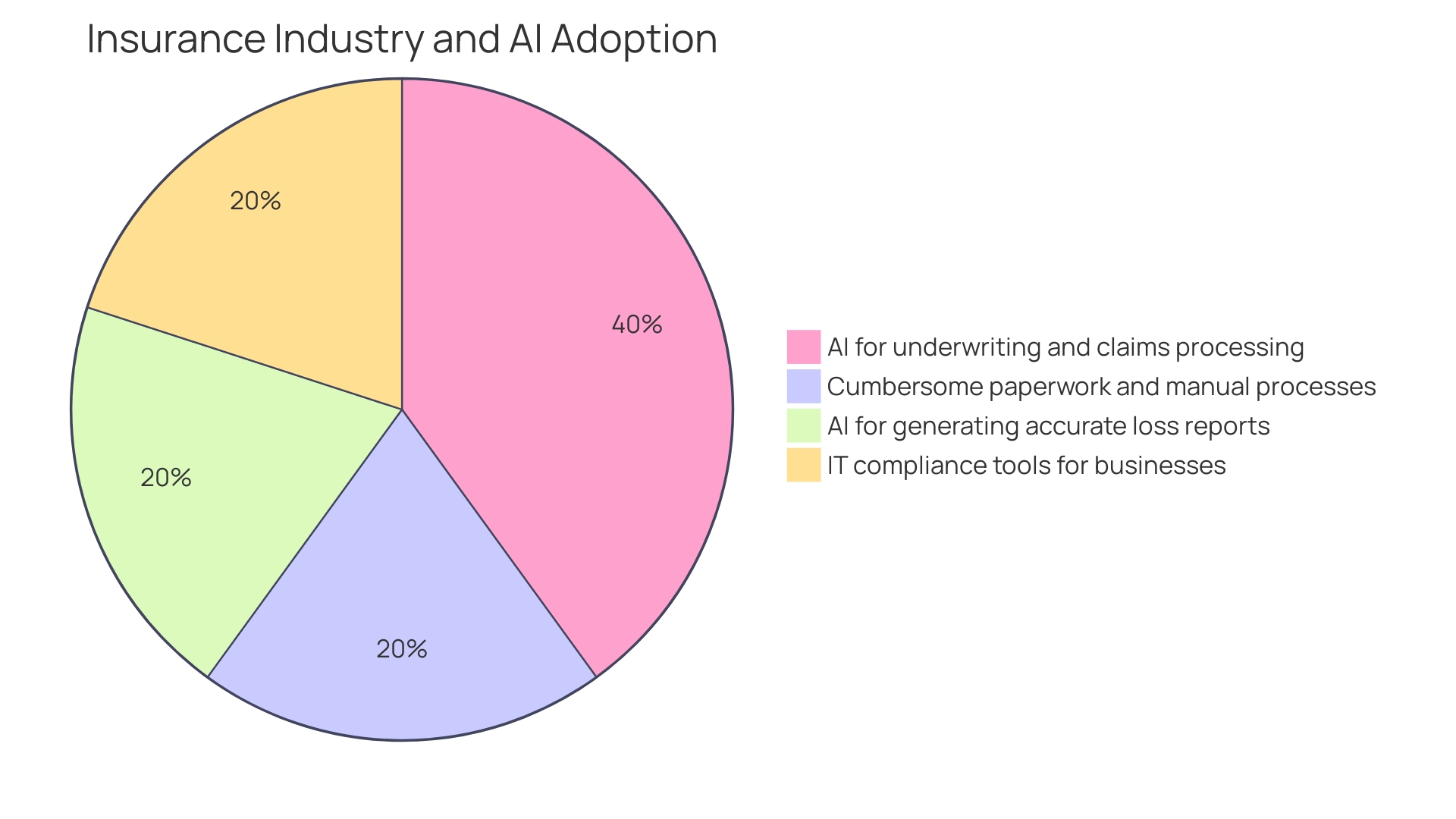
Overcoming Challenges in AI and Automation Implementation
The sector of risk coverage is at a transformative crossroads with the advent of generative artificial intelligence (GenAI). Over a year into this evolution, property and casualty insurers are pioneering the practical application of GenAI, leveraging its capabilities to enhance claims processing and underwriting. Even though an astonishing 91% of leaders in the financial services and insurance sector have started AI proofs of concept, only 36% have implemented these innovations at scale. The challenges are significant, with many companies still striving to harness Ai’s full potential, indicated by 70% of organizations actively deciphering strategies to maximize AI’s advantages.
The successful integration of AI in operations related to the protection of assets necessitates a multifaceted approach. Firstly, insurers must cultivate trust in Ai’s capabilities, transitioning from using machine learning for task automation to allowing AI to generate its own inferences and decisions. This shift demands a commitment to transparency and rigorous testing of AI systems. Furthermore, insurers must navigate the intricacies of privacy and security, ensuring that the integration of AI into existing systems is smooth and does not compromise sensitive information. Employee training is also paramount to facilitate the adoption of new technologies and minimize resistance to change.
Leaders in the sector of insurance are acknowledging the necessity to be proactive instead of reactive in this technological shift. A fail-fast approach, coupled with candid assessments of digital tool efficacy, is propelling the industry forward. By embracing AI, insurers can expedite underwriting and claims processes, tapping into historical data analysis for risk evaluation and generating precise loss reports, ultimately enhancing efficiency and customer satisfaction. As insurers move forward, the focus is on streamlining operations, reducing administrative burdens, and setting a precedent for digital innovation in the insurance landscape.
Future Trends in Automated Claims Management
The sector of coverage is on the cusp of a transformation powered by generative artificial intelligence (GenAI). Over a year into the GenAI revolution, we see insurers navigating the challenges of turning technological potential into tangible value. Despite the initial skepticism, the property and casualty coverage segment has been an early adopter, with leaders already reaping benefits. Yet, the shift has not been devoid of its intricacies; only 36% of leaders in financial services and the insurance sector report extensive implementation of AI across various business operations, even though 91% have initiated AI proofs of concept.
The industry is not just experimenting; it’s actively seeking ways to leverage AI to address deep-rooted challenges. While large language models (LLMs) like ChatGPT and Google’s BERT hold promise for customer support and content generation, accuracy remains paramount, especially in areas like underwriting. The life coverage sector faces the additional hurdle of a changing workforce. As seasoned professionals retire, there’s a pressing need to preserve their expertise. Here, AI can both pose a challenge and offer a solution—educating consumers and potentially disrupting the traditional agent-client relationship, while also serving as a tool for training and knowledge retention.
Insurance technology companies are positioned as crucial players in this transition, tasked with transforming policy administration systems and data accessibility. This transformation is not only about embracing new technology; it’s about fundamentally altering the way coverage is purchased, sold, and handled. As we dive into these hot topics, we reflect on insights shared by Luis Romero, CEO and founder of Equisoft, who emphasizes the critical role of technology in sustaining customer satisfaction and value delivery amidst these shifts.
The Tech Trend Radar 2024, a collaborative effort by experts from Munich Re and ERGO, serves as a guide through the innovations set to shape the future of risk coverage. This resource offers a curated view of emerging trends, providing professionals in the field of insurance with a framework to discuss, provoke thought, and discover new business opportunities. It’s a testament to the industry’s commitment to staying ahead of the curve, ensuring that insurance remains responsive and relevant in an ever-evolving landscape.
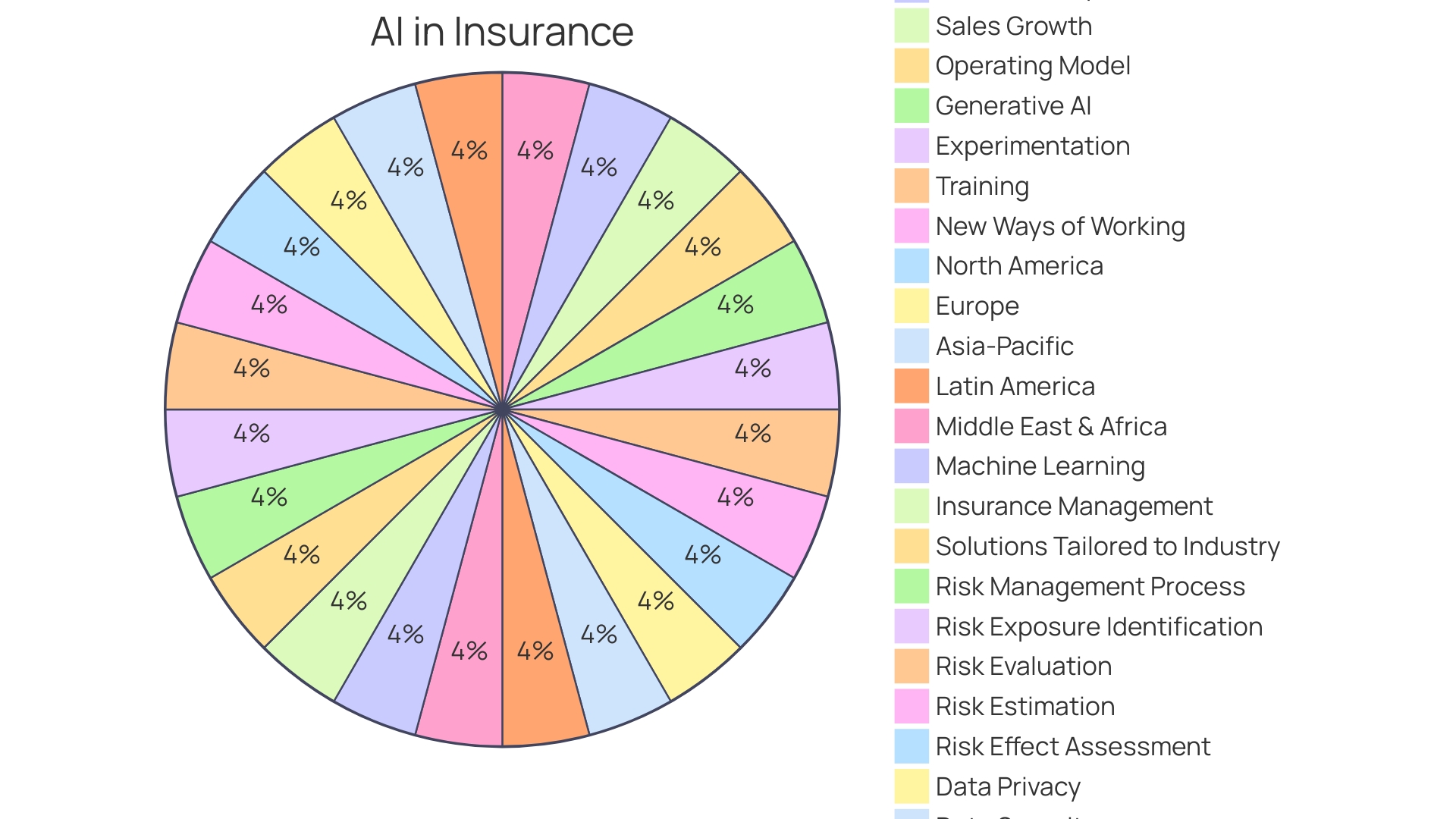
Conclusion
In conclusion, the integration of AI in the insurance industry is revolutionizing claims processing and underwriting. It enables insurers to analyze vast datasets with unprecedented speed and precision, leading to increased efficiency and informed decision-making. Early adopters have seen tangible enhancements in their services, showcasing the transformative impact of AI.
AI aligns with regulatory guidelines, ensuring ethical use of data. It expedites the underwriting process, resulting in more accurate risk assessment and a smoother claims experience for customers. This streamlines operations, reduces costs, optimizes resources, and focuses on customer satisfaction.
The potential of AI in claims processing is becoming increasingly tangible, with companies experiencing quantifiable results. It accelerates processes and generates precise loss reports, revolutionizing the industry.
Predictive analytics allows insurers to efficiently prioritize claims, anticipate risks, and allocate resources effectively. This fosters a more robust and reliable insurance ecosystem.
Intelligent document processing automates data extraction, enhancing accuracy and efficiency in assessing risks and setting premiums. It elevates operational effectiveness in the insurance industry.
AI-powered systems in claims routing and real-time communication streamline processes and enhance the customer experience. Real-time communication tools provide instant updates and reduce customer frustration, leading to satisfaction.
Successful AI implementation yields benefits such as increased operational efficiency, reduced errors, faster processing speeds, and improved customer satisfaction. This demonstrates the potential for significant operational advancements and enhanced experiences.
In conclusion, the integration of AI and automation in the insurance industry offers practical solutions to streamline operations, enhance efficiency, and deliver exceptional service. The transformative impact of AI is empowering and solution-oriented, paving the way for operational excellence and a customer-centric approach.
Introduction
Automation has become a transformative force in business operations, offering practical solutions to the challenges faced by organizations. From streamlining processes to enhancing efficiency, automation unlocks a multitude of benefits. It empowers employees to redirect their focus from monotonous tasks to more strategic work, ultimately boosting overall productivity.
In this article, we will explore the importance of automating business processes and discuss how organizations can identify, prioritize, and implement automation effectively. We will also delve into the common challenges faced and provide insights on measuring automation success. Join us on this empowering journey as we uncover the transformative potential of automation in today’s dynamic business landscape.
Why Automate Business Processes
At the core of every successful business lies a intricate network of procedures that are essential for attaining goals such as customer contentment and profit optimization. Automating these processes not only streamlines operations but also unlocks a multitude of benefits. By embracing automation, companies can enhance efficiency, minimize errors, and boost overall productivity. Automation empowers employees to redirect their focus from monotonous, repetitive tasks to more strategic, impactful work.
Take Specsavers, for instance, a company with a global supply chain that manufactures the majority of lenses and frames sold in its stores worldwide. By creating customized operational procedures and internal technologies, Specsavers has addressed the distinct obstacles presented by its specialized position in optometry, where older devices frequently encounter difficulties with API integration and streamlined data transfer.
In another example, Delivery Hero, a leading local delivery platform, faced the issue of employees frequently being locked out of their accounts. The resolution procedure, which previously necessitated IT involvement and took an average of 35 minutes, was revolutionized through automation, greatly minimizing downtime and streamlining access recovery.
Business process management software is crucial for organizations seeking to analyze and optimize their business processes. Jira Work Management stands out as particularly effective for both startups and enterprises, enabling teams to scrutinize their workflows and identify areas for improvement.
Understanding the role of Robotic Process Automation (RPA) is essential. Automation technology utilizes software bots to perform actions such as data entry, transaction processing, and customer service interactions. The integration of RPA across various applications and platforms can release a significant amount of time for more critical activities. As cited by a specialist in the domain, ‘It’s in the linking of systems where you can genuinely be liberated from a wide range of tasks and let the mechanization do it for you.’
AI and the use of technology are transforming the environment of operational activities within organizations, and it’s crucial for organizations to take into account essential aspects such as data readiness, the interaction between human skills and digital assistants, IT prospects, and investment priorities. As we move forward into a time where mechanization is becoming more and more common, businesses are advised to stay informed and adapt to leverage the full potential of these transformative technologies.
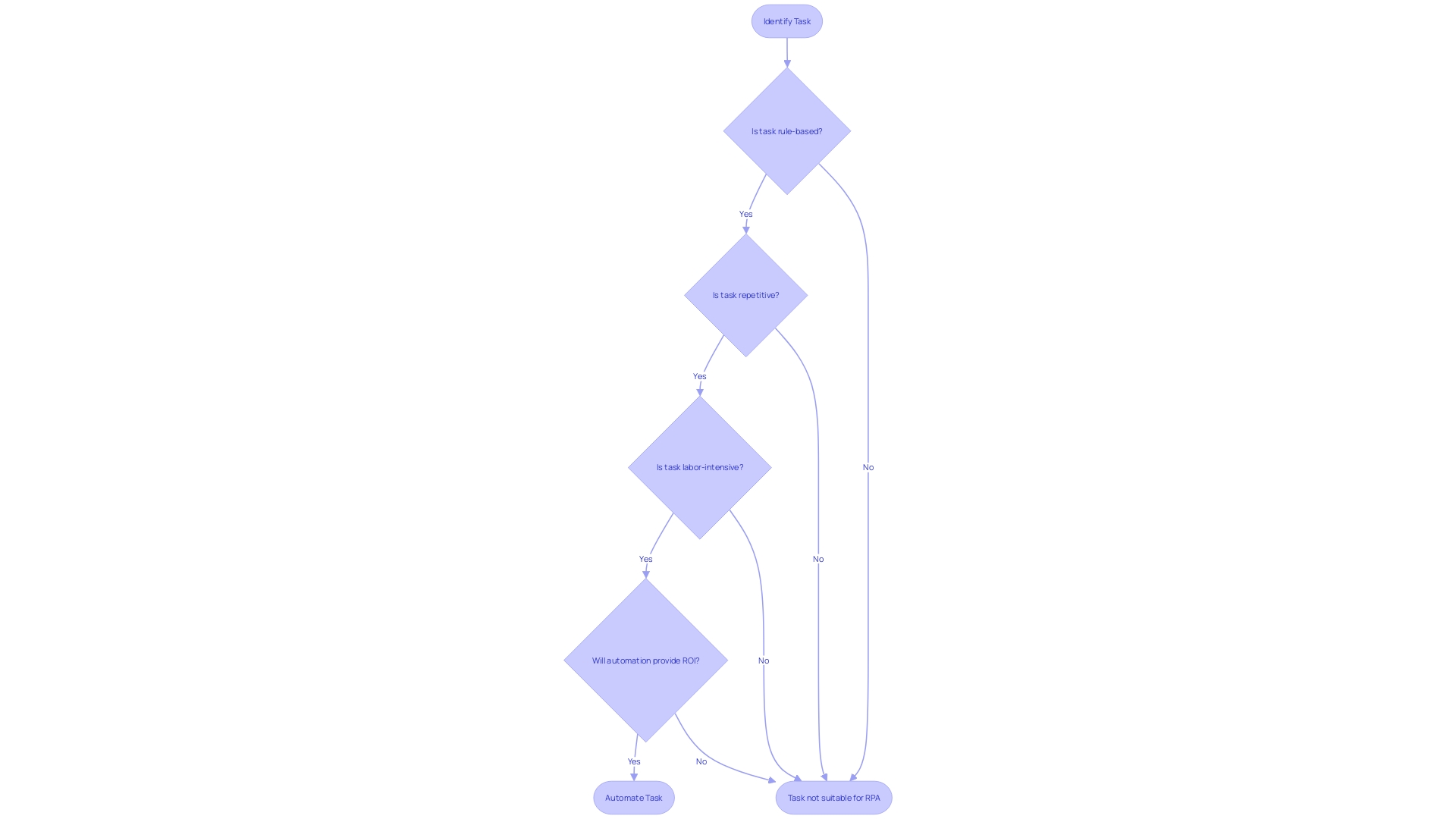
Identifying Processes to Automate
Comprehending the complexities of your company’s current procedures is the foundation of effective automation implementation. It’s about analyzing every step to measure its complexity, how frequently it’s performed, and its potential for improvement. This critical evaluation is not just about deploying technology, but also about refining workflows to ensure that they align with the organization’s strategic goals.
Business procedures, similar to a race, aim to transition from the starting line to the finish effectively and efficiently. Exploring the depths of these mechanisms enables a detailed comprehension of which elements necessitate greater focus. By charting these procedures, one can visualize the consecutive steps and identify potential bottlenecks or unnecessary phases that could be streamlined or automated. As a result, this allows organizations to concentrate on their main goals, such as maximizing profits and ensuring customer satisfaction, without the interference of repetitive activities.
One crucial stage in this journey is setting up a organized system for work procedures, a technique emphasized by specialists as a forerunner to mechanization. This framework serves as a blueprint, ensuring that crucial tasks receive priority and align with best practices. It also provides a transparent view of the workflow, allowing for effective monitoring and optimization.
The explosion in data collection and management tools, such as ERP and CRM systems, has provided organizations with a wealth of information that can guide their strategies for streamlining processes. These systems continuously gather digital records of employee activities, presenting an opportunity to leverage this data to organize work and automate workflows. The challenge lies in navigating the complexity of these systems to extract actionable insights that drive efficiency.
Furthermore, the reach of automated processes has expanded across diverse sectors, such as IT, finance, healthcare, and manufacturing, exemplifying its adaptability. For instance, workflow mechanization utilizes software applications and algorithms to eliminate the need for manual intervention in repetitive tasks, thus minimizing errors and enhancing overall productivity. This technological innovation is not limited to tech-savvy individuals; it’s equally accessible to non-technical staff, making it a universally beneficial tool.
As mechanization becomes progressively integrated in contemporary software development, the significance of choosing the appropriate solution for streamlining cannot be emphasized enough. Whether it’s a no-code, low-code, or high-code platform, the choice depends on the specific needs of the users, be they developers or non-technical product owners. It is crucial to take into account the kind of user and use cases to guarantee that the tool for mechanization is in line with the complexity requirements of the organization.
In summary, the selection and optimization of business processes for mechanization are not mere exercises in technology application but strategic decisions that can propel an organization towards achieving its core objectives with greater precision and efficiency.
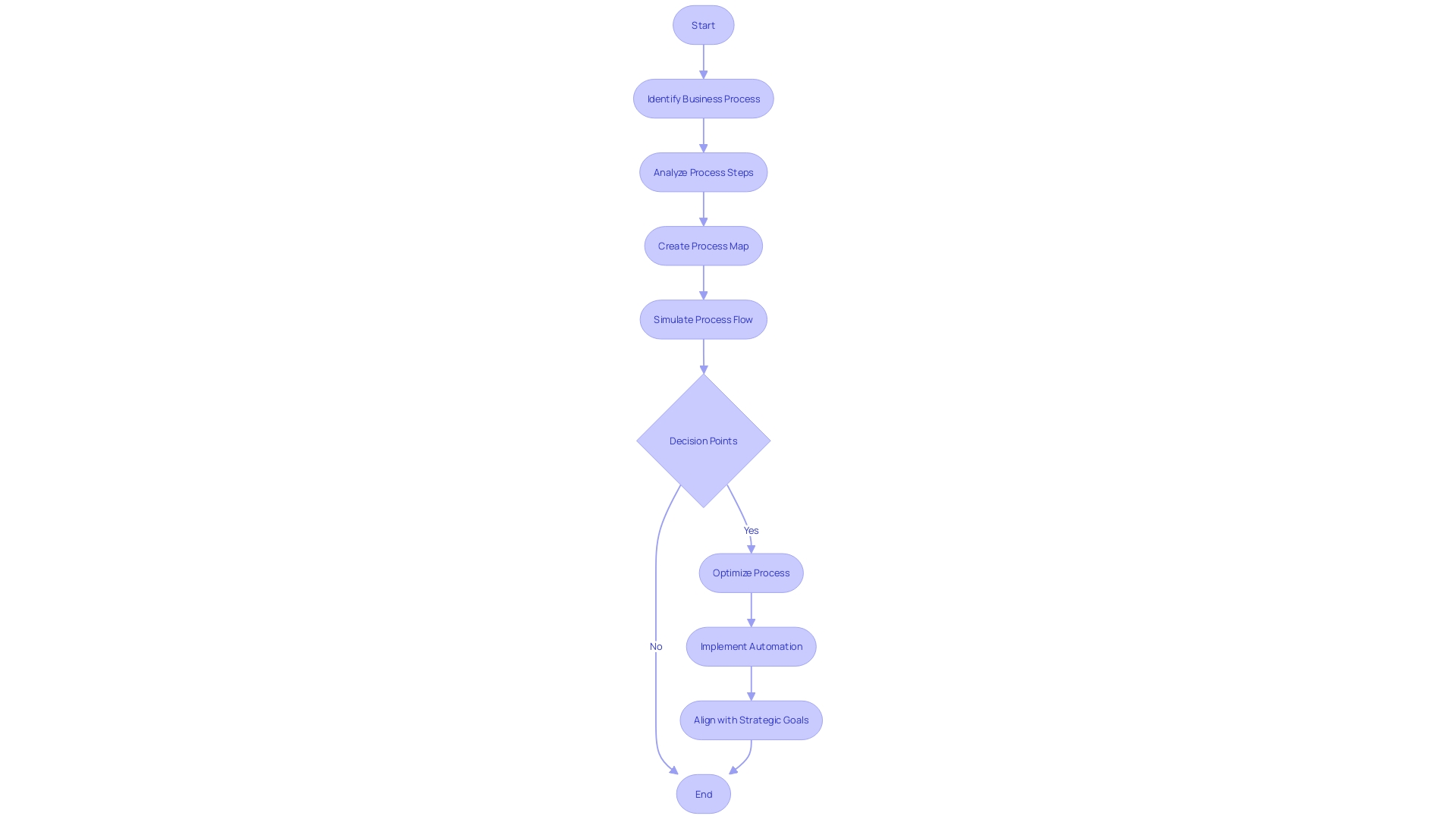
Defining Goals and Objectives for Automation
When starting on projects involving mechanization, it is crucial to have a clear vision of the desired outcomes to ensure that your efforts are not only significant but yield tangible progress. The Power Platform offers a compelling example where the evaluation of use cases for automated processes is critical. It requires a Tony Stark-esque attention to detail, evaluating the potential ROI and qualitative benefits to ensure that each digital initiative is not just a shiny new gadget but a strategic asset that enhances efficiency and aligns with your business goals.
Consider the meticulous planning that goes into an AI requirements agent, aimed at streamlining requirements gathering to free up time for project managers and developers. This type of tool demonstrates how the use of technology can revolutionize the start of projects, resulting in a more seamless and effective development journey. It’s about having a clear product vision, understanding the target audience, and establishing concrete goals and user stories.
Moreover, integrating automation with existing tools and systems is a journey of transformation that unfolds in stages: digitization, digitalization, and digital transformation. Every stage progresses from the previous one, transforming information into digital formats, then modifying procedures to capitalize on this data, and ultimately, utilizing technology to generate value for different stakeholders. It’s a sophisticated dance of technology and process reengineering that positions humans to provide high-value expertise while machines handle the repetitive tasks.
The dedication to mechanization must be balanced with a realistic comprehension of progress, which is measured by real improvements in efficiency, customer satisfaction, revenue growth, and cost savings. According to Automation.com, keeping up with trends in the field of technology is crucial, particularly considering the recent progress in AI and digitalization. They highlight the importance of pre-emption, prevention, and optimization in managing resources like water, where demand is expected to surge by 30% by 2025.
Lastly, zone management principles remind us that ambitious visions need to be tempered with concrete plans and schedules. Toyota’s experience with Woven Planet underscores the importance of clear goals and diligent management. In the field of AI and mechanization, progress is determined by the measurable influence of your endeavors, debunking the myth that technology alone is the solution. Instead, it is the synergy of technology with human and cultural changes that drives a successful transformation.
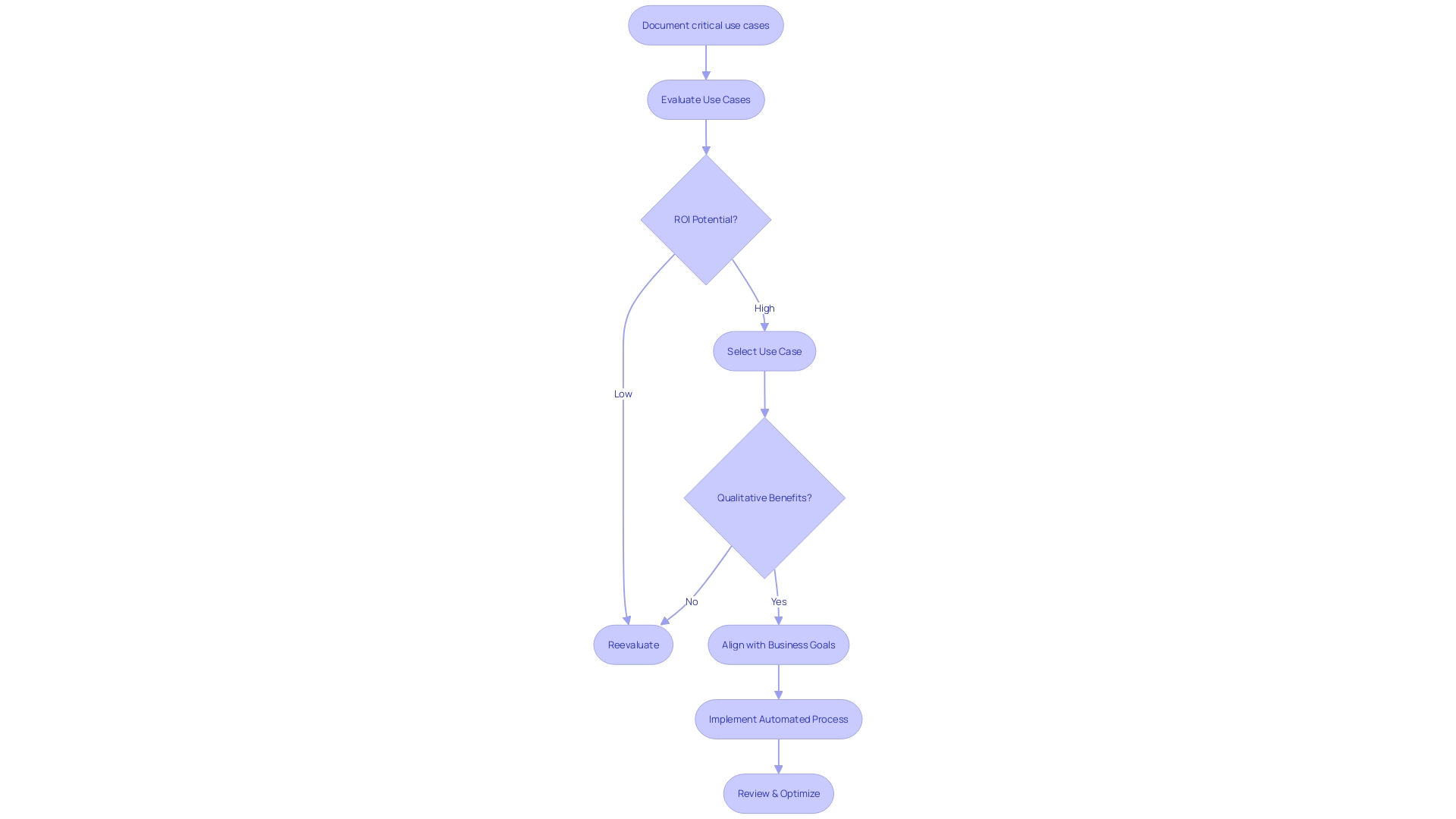
Mapping and Analyzing Current Processes
Mapping and analyzing current procedures is a crucial base for any automation endeavor. By outlining each step, input, output, and dependency, organizations gain a clear blueprint of how things currently operate. This clarity is paramount, as it reveals bottlenecks and inefficiencies ripe for enhancement. For instance, breaking down a core system into subsystems or modules can uncover how different user groups interact with each segment, exposing critical areas for improvement. As mentioned by Professor Hajo Reijers, comprehending these workflows is a milestone to the wider field of Process Science, which aims to enhance processes beyond the realm of business.
Diving into the functionalities and relationships between system components allows for a comprehensive view of operations. This overview is not just about technology stacks but also about how subsystems integrate with external systems. With the appropriate tools and methods in place, an organization can start to tackle more nuanced questions, transitioning from a descriptive to a predictive approach to data analysis. This change is a characteristic of an organization’s analytical advancement—a notion that emphasizes the need for thorough mapping of procedures before mechanization.
Incorporating process flowcharts further enhances this preliminary step, using universally recognized symbols to articulate the sequence of actions within a process clearly. This visual representation, combined with the functional requirements of the system, establishes the foundation for informed decision-making when selecting tools for streamlining processes. By addressing these aspects, leaders can move towards a more efficient operational model, ultimately improving productivity and mitigating issues that lead to employee burnout, as suggested by recent discourse in Process Science.
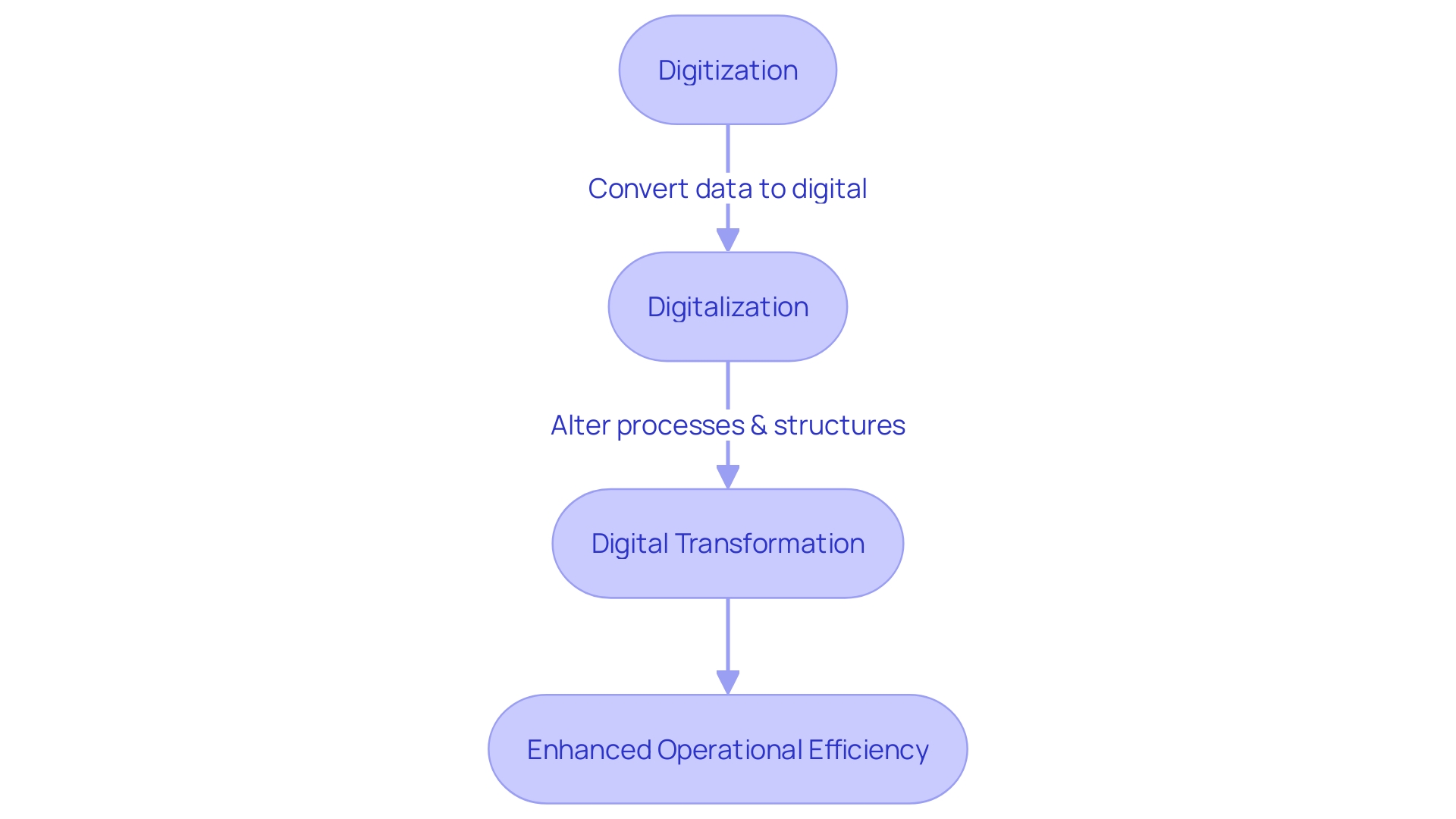
Prioritizing Tasks and Processes for Automation
Choosing which business operations to automate necessitates a strategic method, concentrating on the value and intricacy of each activity. Workflow technology can transform repetitive activities such as permissions management and notification dispatching, which are common in small to medium-sized enterprises, into streamlined processes. A report by Zapier indicates the prevalence of these activities, emphasizing the widespread opportunity for streamlining to enhance productivity.
The Musk manufacturing and management philosophy, which emphasizes questioning every requirement, can be applied to the prioritization of tasks for streamlining processes. This mindset ensures that only processes that genuinely require mechanization are targeted, thereby optimizing resource allocation.
Additionally, the interlinked qualities of swiftness, effectiveness, hazard decrease, and expertise enhancement are crucial for triumphant IT. Improving one often positively affects the others, creating a virtuous cycle that enhances overall operational effectiveness. Implementing a comprehensive method for IT streamlining, rather than fragmented remedies, can offer a cohesive strategy that aligns with organizational objectives.
The potential of AI and mechanization is also underscored by predictions from the World Economic Forum and Accenture, indicating that IT, finance, and customer sales will experience significant changes due to AI’s ability to automate or significantly alter tasks like performance monitoring, data collection, and documentation.
In addition, the employment of advanced intelligence and analysis by companies like OODA showcases the wider effects of AI and technology in fields such as security and defense, as evident in the changing battlefield in Ukraine and the utilization of surveillance robots by Israel.
Another viewpoint arises from the healthcare industry, where the use of technology is considered a tool for clinicians to concentrate on high-impact activities, as per the A.D.D. approach, which values time as a critical resource.
The incorporation of AI and mechanization into operational processes is not just about improving efficiency but also about redefining jobs, giving professionals the opportunity to concentrate on more innovative and impactful work. As the landscape of mechanization continues to evolve, organizations must consider both the immediate benefits and the long-term strategic implications of their mechanization choices.
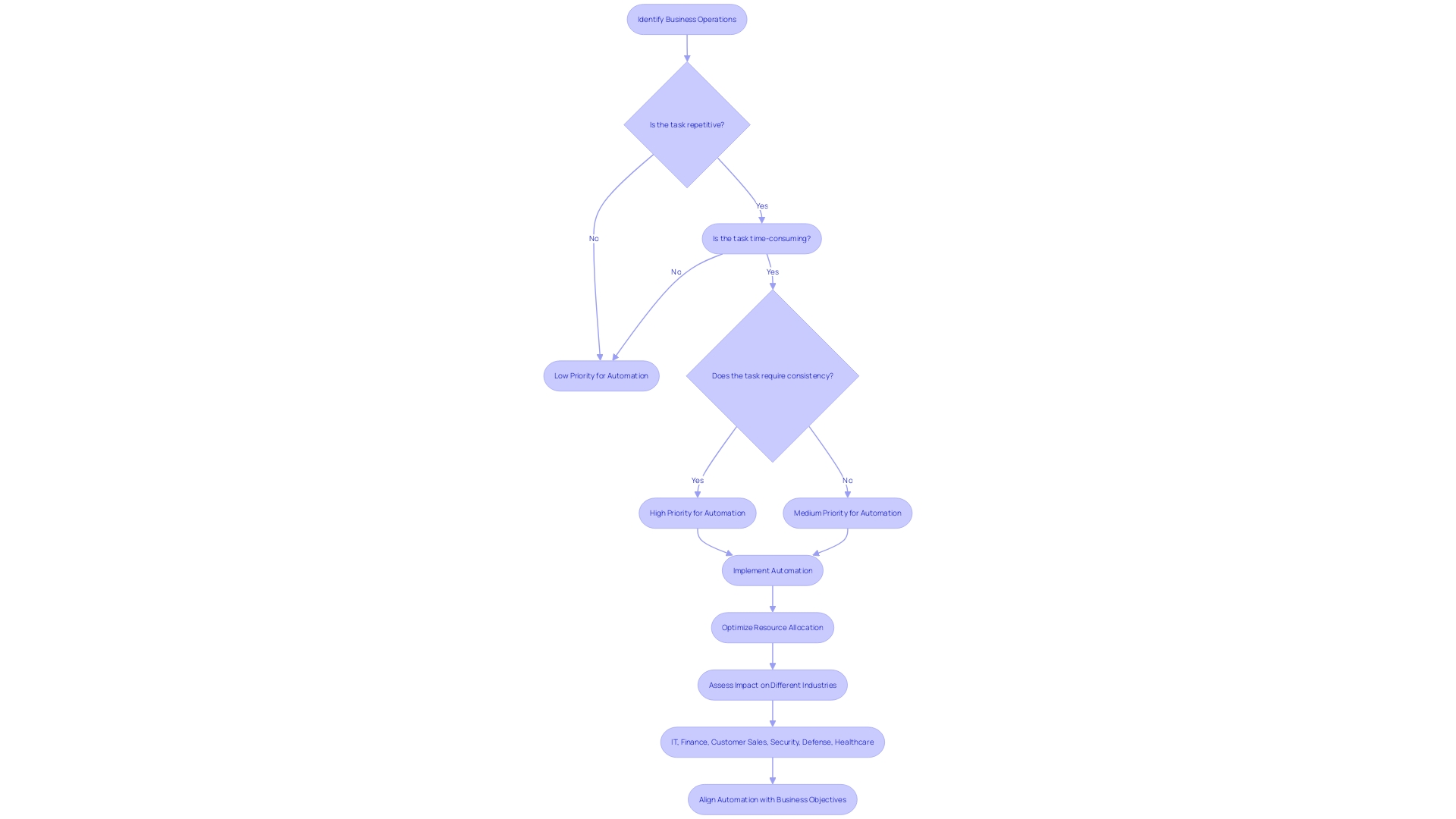
Identifying Tasks that Can Be Automated
Utilizing the potential of mechanization can be a substantial benefit for enterprises seeking to optimize their processes. When deciding which activities to automate, it’s crucial to identify those that are repetitive, rule-based, and time-intensive. This not only aligns with the principles of workflow mechanizationâwhich leverages technology to automate and orchestrate complex business processesâbut also ensures that the investment in mechanization yields substantial efficiency gains and productivity enhancements.
To pinpoint tasks ready for mechanization, organizations can utilize a three-step approach. At first, divide work activities into basic units to be managed by a single agent, ensuring each assignment involves a single action and yields a clear outcome. Afterwards, evaluate the automation potential of each assignment using a Task Automation Index, which assesses factors such as standardization of inputs, defined rules, repetitiveness, data dependence, and output objectivity. Finally, finish a specification template, which examines 16 critical components, acting as a comprehensive checklist for choosing or tailoring the most appropriate AI solution for workflow integration.
Studies suggest that workers using large language models have experienced productivity improvements between 8% and 36%. This indicates a significant potential for enterprises to leverage AI for operational efficiency. In addition, it’s vital to consider the economic factors of building and deploying automated systems. Studies on computer vision applications indicate that given the current expenses, only a portion of tasks linked to employee salaries would be financially appealing to mechanize, indicating the necessity for a prudent method to decisions regarding mechanization.
Integrating mechanization into your operations is not just about the technology; it’s about comprehending the intricacies of your business’s workflow. For instance, a personal tutor system utilized in the Department of Electronic & Electrical Engineering was improved by mechanizing the recording of attendance and student comments, demonstrating the practical effect of focused mechanization. Similarly, a company’s product development process can be streamlined by automating stage-gate processes, provided that the input rate is consistent.
In summary, when organizations embark on the journey of implementing automated processes, it is crucial to carefully assess and select tasks that align with the capabilities of AI and tools for mechanization. By doing so, businesses can not only improve operational efficiency but also create a more dynamic and productive work environment.
Choosing the Right Automation Tools and Technologies
Exploring the realm of technological advancements necessitates a strategic method to guarantee that the tools you choose are not only at the forefront, but also suitable for the specific requirements of your company. Whether it’s utilizing Robotic Process Automation (RPA) to streamline repetitive tasks, deploying Artificial Intelligence (AI) to enable complex decision-making, or leveraging Machine Learning (ML) for predictive analytics, the selection procedure is pivotal.
Start by establishing clear objectives for your automation initiatives. Ask yourself which aspects of your web, mobile, or desktop applications need enhancement. Identify the operating systems that are essential to your testing procedures. This clarity in purpose steers you toward the right set of tools.
Taking note from the NHS’s approach to technology adoption, we understand the importance of an initial assessment. A digital-assurance process ensures that any new technology is secure, appropriate, and adds value rather than duplicates existing solutions. Drawing from their experience, it’s evident that often, the resources sought are already within the organization, lying untapped and unrecognized. This revelation underlines the necessity of thoroughly understanding one’s existing capabilities before seeking new technologies.
As seen in the top articles from Automation.com, keeping up with trends like IoT and the changing scenery of technology is crucial. In today’s swiftly changing environment, knowledge of current advancements in AI, ML, and digitalization is invaluable for making informed decisions.
Organizations that have effectively incorporated AI, as shown by statistics from Canadian enterprises, observe a multitude of applications across various industries. From enhancing customer experiences with chatbots to refining healthcare predictions, AI is revolutionizing the way goods are produced and services delivered.
In the end, remember that choosing the suitable mechanization tools is not just about the technology itself. It’s about aligning these tools with your objectives to achieve speed, efficiency, risk reduction, and the cultivation of the necessary skills and practices. By adhering to a unified strategy, you can ensure that your efforts in streamlining processes are not scattered but are driving your organization towards cohesive and sustainable growth.
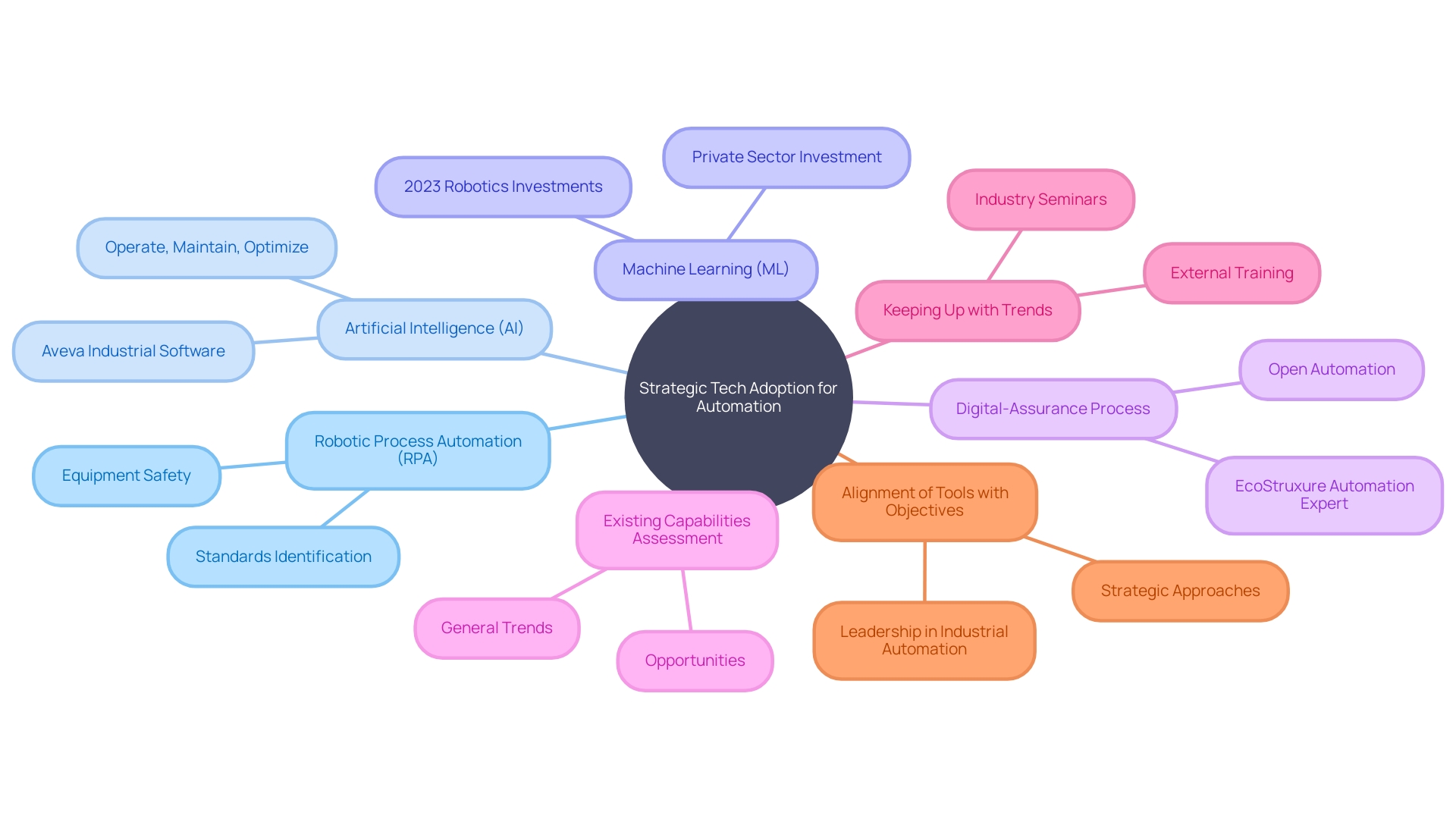
Designing and Implementing Automated Workflows
Creating and executing automated workflows is a transformative measure for enterprises seeking to improve efficiency. Workflow automation harnesses technology to automate complex business processes, diminish manual input, and minimize human error. By using software applications, algorithms, and predefined rules, it automates repetitive activities and promotes seamless communication, orchestrating the flow of work and enhancing organizational efficiency.
The implementation of automated workflows should begin with a well-defined structure, which serves as the backbone for managing work, even when manual stages are present. This framework is crucial for monitoring progress, prioritizing important activities, and aligning with best practices. It also aids in identifying and eliminating unnecessary tasks that could distract teams or consume valuable time. To avoid feeling overwhelmed, it’s advisable to start with automating one process at a time.
Integration with existing systems is crucial for maintaining a seamless operational flow. As enterprises evolve, IT infrastructures can become complex, making integration challenging. Nonetheless, it is imperative to ensure that automated workflows can be incorporated into current systems without causing disruptions.
Scalability and flexibility are also key aspects of successful workflow automation. They ensure that as the company expands, the automated processes can adapt and expand accordingly. This adaptability is vital for sustaining long-term efficiency gains.
A report by Zapier reveals that almost all employees in smaller businesses participate in repetitive activities, such as sending notifications or managing permissions. By automating these activities, workers can concentrate on more valuable tasks, ultimately improving job satisfaction and operational productivity.
In the realm of DevOps, the culture of collaboration and mechanization is central. DevOps is not merely about tools; it is a mindset that prioritizes shared responsibility, transparency, and continuous improvement, with automation being the linchpin that streamlines tasks and ensures consistency across various stages of development.
The synergy between design and engineering plays a significant role in creating automated workflows that are not only efficient but also user-friendly. The design starts with questioning and creating meaning, while engineering emphasizes systematization and technical solutions that are simple, scalable, and future-proof.
Testing and Fine-Tuning Automated Processes
To guarantee that automated procedures fulfill their commitment of enhanced effectiveness and productivity, thorough testing and continuous improvement are crucial. Markos Fragkakis, a Staff Engineer at Workable, shares insights from his experience enhancing their Continuous Integration (CI) procedures. Starting with an overview of their initial setup, he outlines the journey through setting requirements, conducting research, and experimenting with proof of concepts. This culminated in an implementation phase rich with strategic decisions, providing valuable lessons for others looking to improve their automated systems.
In the world of digital marketing, mechanization has transformed the way content is generated. For example, automating the creation of varied ad assets for a campaign involves numerous combinations of aspect ratios, sizes, and styling elements. This complexity is magnified when internationalization is considered. By automating one step at a time, the process becomes more manageable and efficient.
The transition from manual to automated testing is a strategic move to keep up with the speed of software development. Automation excels in repetitive, time-consuming tests such as regression, performance, and load testing. As the World Quality Report indicates, the movement towards mechanization and shift-left strategies has been a focus for organizations striving for shorter and higher quality life cycles.
While AI in test is progressing, it still serves as a complementary tool to human expertise. AI offers objective analysis, while humans excel at subjective judgment, understanding nuances, and detecting specific requirements and edge cases. Human testers can then focus on more strategic challenges. According to Michael Larsen, who has more than 30 years of experience, now is a great opportunity to mechanize software testing procedures to match the industry’s need for speed and effectiveness.
In summary, a well-defined test execution strategy is crucial for understanding gaps early and preventing them during implementation. This method not only saves time and costs but also ensures that automated procedures are continuously improved to maintain their efficiency over time. Such strategic refinement, bolstered by the integration of AI, promises a future where software quality reaches new heights.
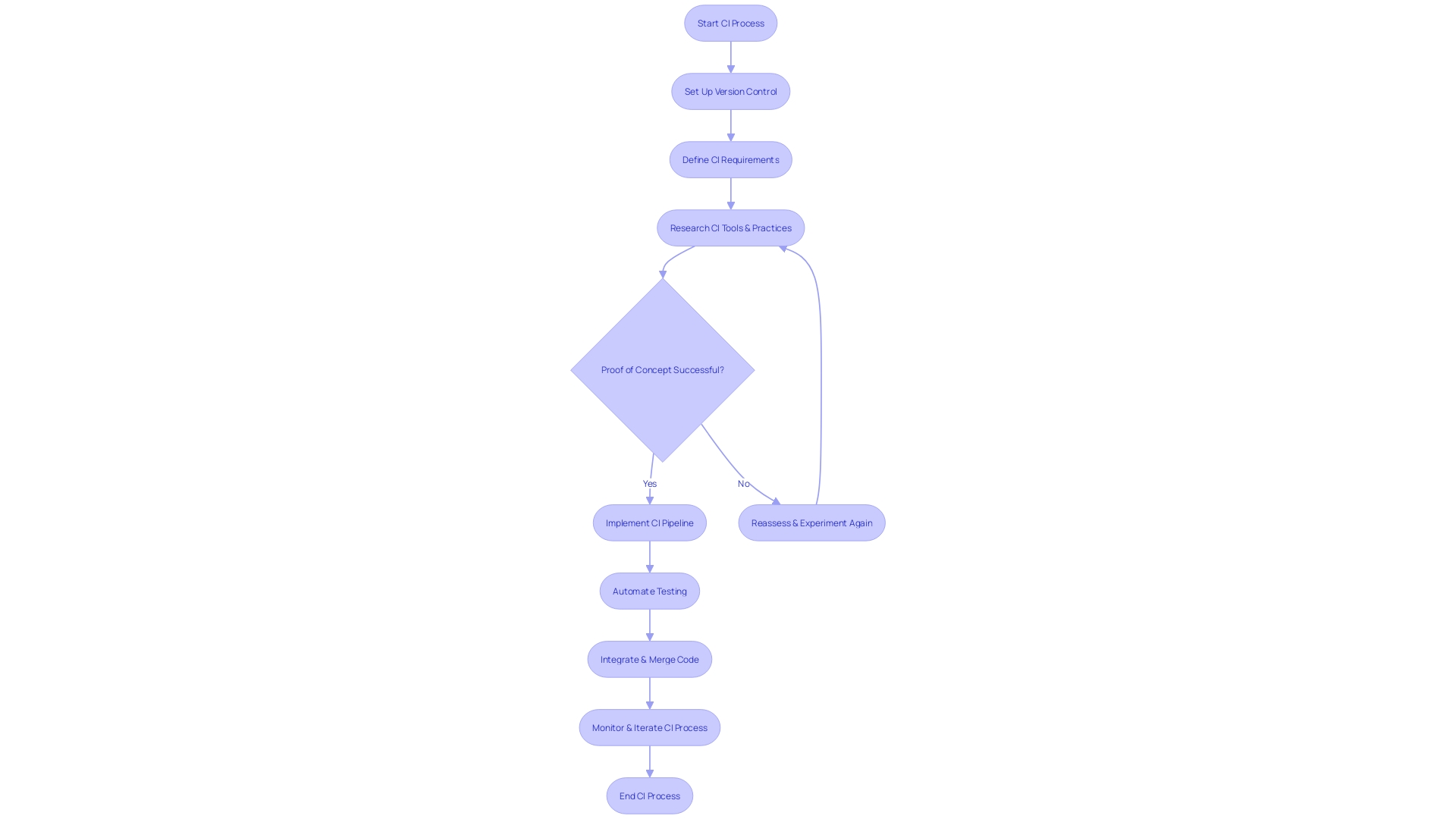
Training Employees on New Automated Processes
Workflow streamlining utilizes technology to simplify intricate operational procedures, reducing the need for manual labor and minimizing human mistakes, thus enhancing productivity. It utilizes software, algorithms, and established rules to automate routine activities, guaranteeing seamless communication, and overseeing work processes in an organization. Usually, organizations that encounter recurring activities, like dispatching notifications or handling authorizations, can greatly gain from adopting workflow automation. A study by Zapier indicates that almost all employees in smaller enterprises participate in such repetitive tasks, and automating them can enhance job satisfaction.
When it comes to incorporating these automated procedures, it’s essential that employees are well-trained and supported throughout the transition. For instance, the digital payment solutions provider Nets revamped how they onboard new employees, resulting in noticeable improvements. This underscores the value of effective training strategies and addressing staff apprehensions, encouraging a culture that embraces ongoing learning and refinement.
Moreover, companies in the financial sector often need to adhere to strict international regulations, such as fraud prevention and Anti-Money Laundering, which necessitates comprehensive training. Instructional Designer Karmela PeÄek highlights the importance of presenting technical data in engaging ways to motivate self-guided learning among users.
However, introducing new technologies in large organizations can be challenging. The resistance to change can stem from various factors, including technical debt—when an organization’s existing tech infrastructure isn’t compatible with new technologies. This can make it risky to modify fundamental business procedures. For example, when a small town register of deeds transitioned from paper to a computer system, the clerks had to adjust to losing their manual stamping process, which was a significant part of their work identity.
USAA’s chief information officer, Amala Duggirala, outlines a strategic approach to AI training for their 37,000 employees, focusing on governance, risk management, and role-specific educational courses. Such targeted training can lead to remarkable productivity gains; a report reveals that just saving 11 minutes per day can make employees appreciate the value of AI, with the most efficient users saving up to 30 minutes per day.
Understanding the important factors for AI and the use of technology is essential. A comprehensive plan consisting of 11 steps can assist organizations in maximizing smart technology, enabling them to make appropriate investments and ready their staff, resulting in tangible effects and enhanced operational effectiveness.
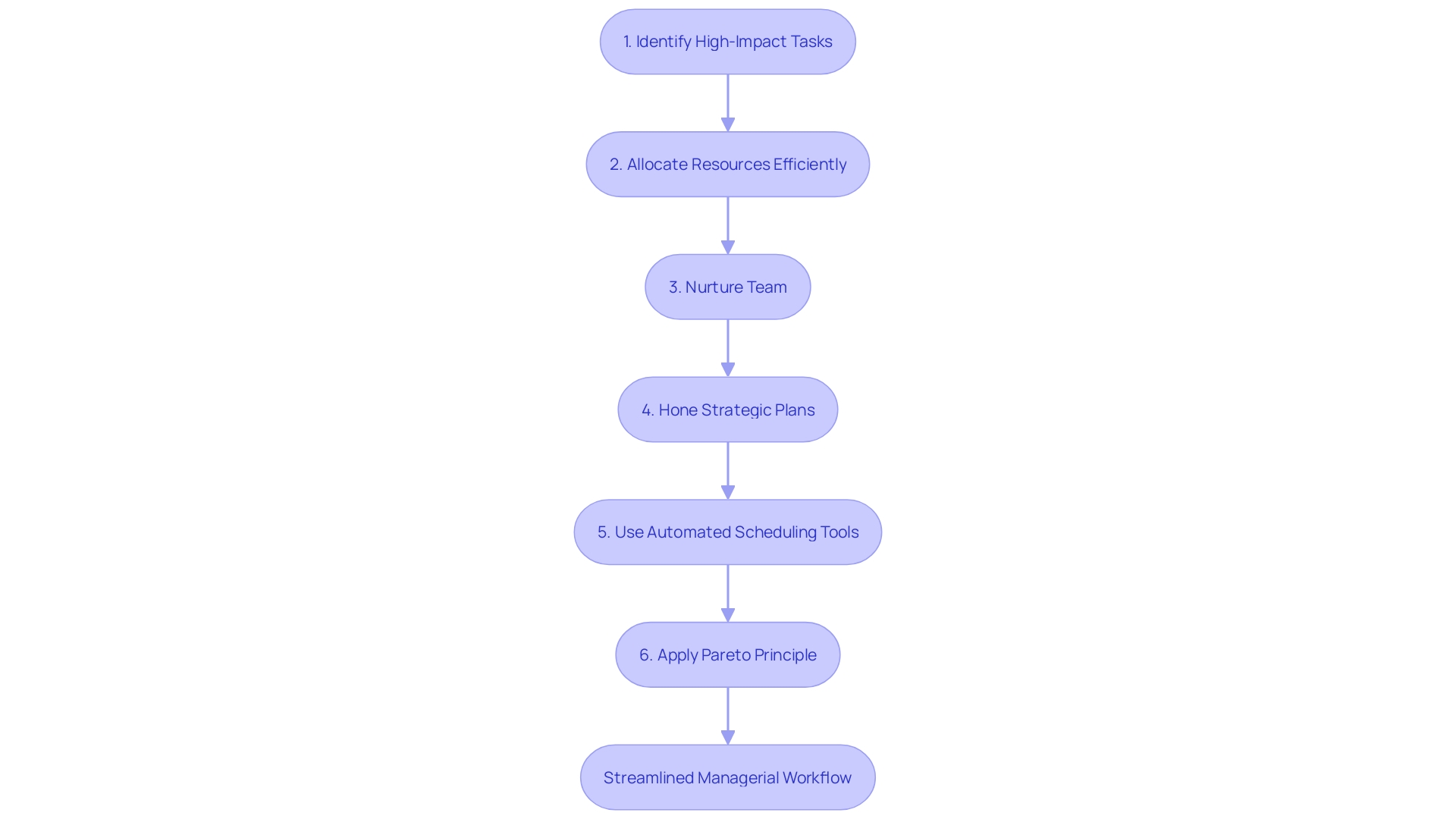
Common Challenges and Solutions in Process Automation
As businesses explore the realm of process streamlining, they often face a set of common challenges. Addressing these issues effectively is crucial for a smooth transition to automated systems. One pivotal aspect is the management of change. Employees may show reluctance towards the use of technology due to fear of the unfamiliar or concerns about job security. Nevertheless, when mechanization is integrated thoughtfully, it can enhance creativity and productivity, enabling employees to engage more deeply with problem-solving tasks. This can be observed in the transformation within the Department of Electronic & Electrical Engineering, where the use of technology for personal tutorial records improved operational efficiency.
Furthermore, upholding data security and guaranteeing compliance are of utmost importance in the process of automated tasks. An example of this is St. James Winery, which adopted automated processes to solidify its position as a top winery, without sacrificing the quality that results from their rigorous standards. Automation technology, particularly RPA (Robotic Process Automation), is a game-changer that enables software bots to perform tasks ranging from data entry to customer interactions, streamlining operations across various applications.
The newest progressions in mechanization, combined with AI, offer chances for unparalleled efficiency and innovation while navigating the intricate dynamics of technology and human roles. Yet, these advancements are not without their challenges. The key is to gain meaningful traction with technology, ensuring its effective leverage. The success of digital transformation initiatives often hinges not on technology itself, which has evolved remarkably over the past decades, but on the strategic implementation and adoption processes.
To this end, understanding the user experience (UX) is vital. User interviews can provide deep insights into the needs and expectations of those interacting with new systems, informing better design and integration of automated solutions. By adopting this user-focused strategy, leaders in the industry can overcome pushback, improve security, and guarantee adherence, paving the way to a successful implementation. The significance of such a method is emphasized by the experiences of professionals in the field, whose job satisfaction and career intentions mirror the influence of well-implemented projects on the workforce.
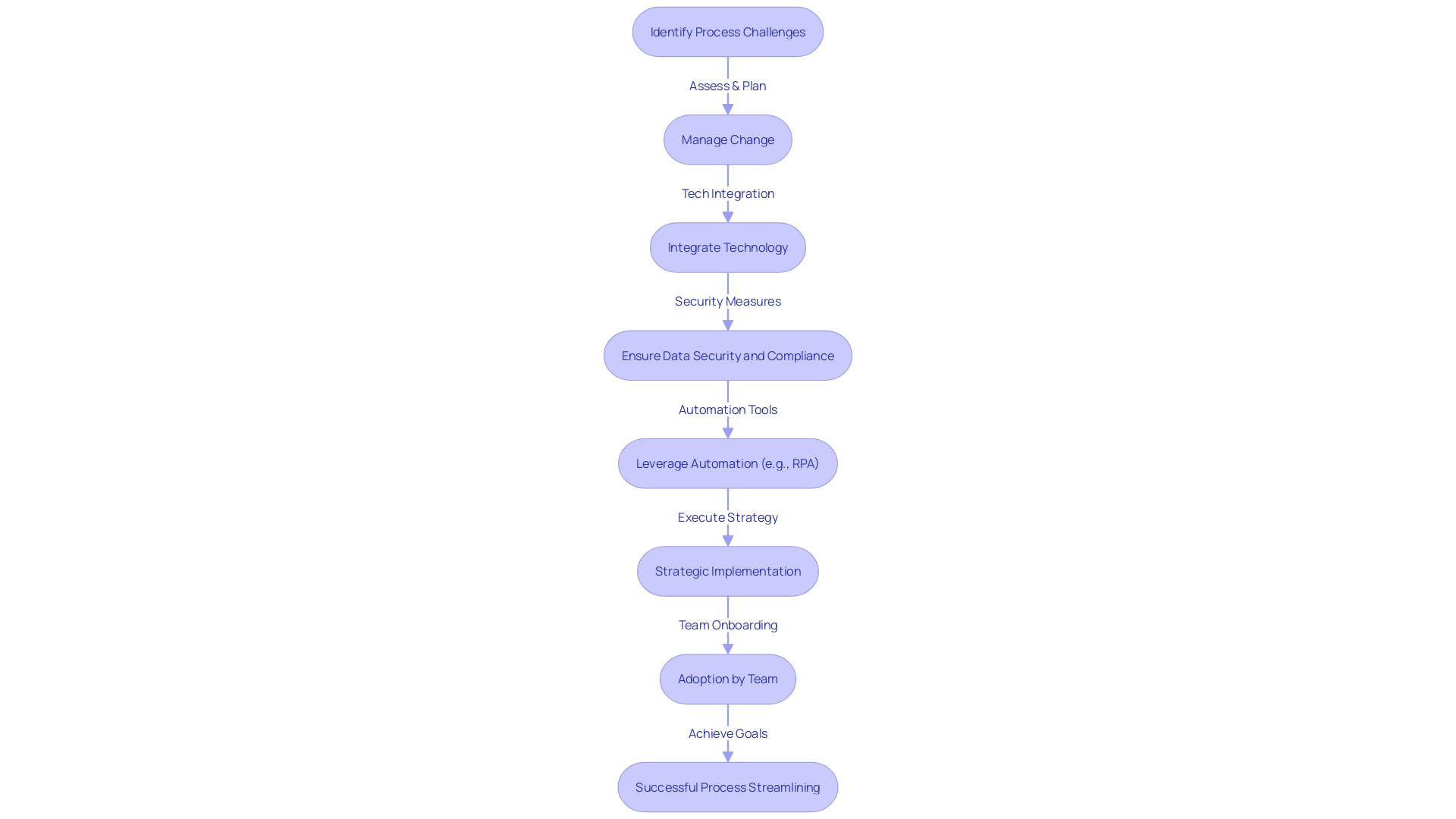
Measuring and Monitoring Automation Success
Comprehending the complete extent of the influence of automated processes on business operations is essential for any organization. It involves closely monitoring the effectiveness of tools and strategies for automatic processes to ensure they are delivering the anticipated benefits. Metrics such as time savings, increased productivity, and improved customer satisfaction are central to evaluating success. Consider the case of Louvre Hotels Group, who, through the integration of RobosizeME’s technology, reduced the time spent on rate code headers by 188 hours per month, and saved an extra 386 hours on rate code details. These time savings translate into staff being able to focus on more strategic tasks that can further enhance operational efficiency.
Similarly, the Hiscox services story illustrates how the use of technology can also result in quicker response times and increased customer satisfactionâa crucial measure in the current dynamic business landscape. Hiscox’s automated solution reduced the repetitive workload by 28%, ultimately benefiting both customers and employees. Moreover, Specsavers’ approach to addressing the unique challenges of their industry with custom-made technology solutions underscores the importance of continuous monitoring and adapting technology to fit specific operational needs.
The transformative potential of mechanization is further supported by industry-wide trends. A study of more than 150 manufacturing experts showed that 60% intend to embrace mechanization, demonstrating a notable change towards these technologies to improve effectiveness and durability. However, the report also mentions the different levels of mechanization across organizations, indicating that a universal solution is not feasible. Instead, organizations must identify the most valuable processes for mechanization, taking into account their unique operational structures and objectives.
The fate of mechanization also depends on the strategic utilization of artificial intelligence (AI) across various sectors. As organizations increasingly turn to AI to automate production and service delivery, the distinction between roles suited for humans and those best performed by digital assistants becomes more pronounced. This advancement is not without its challenges; professionals committed to technology projects report a need for ongoing skill development to keep pace with the rapidly changing environment.
In conclusion, effective mechanization is not only about implementing technology—it’s about incorporating it in a manner that aligns with organizational objectives, consistently enhancing procedures, and ensuring the workforce is capable of utilizing these tools efficiently. By staying aware of these important factors, businesses can utilize the complete capabilities of technology to drive their operations forward.
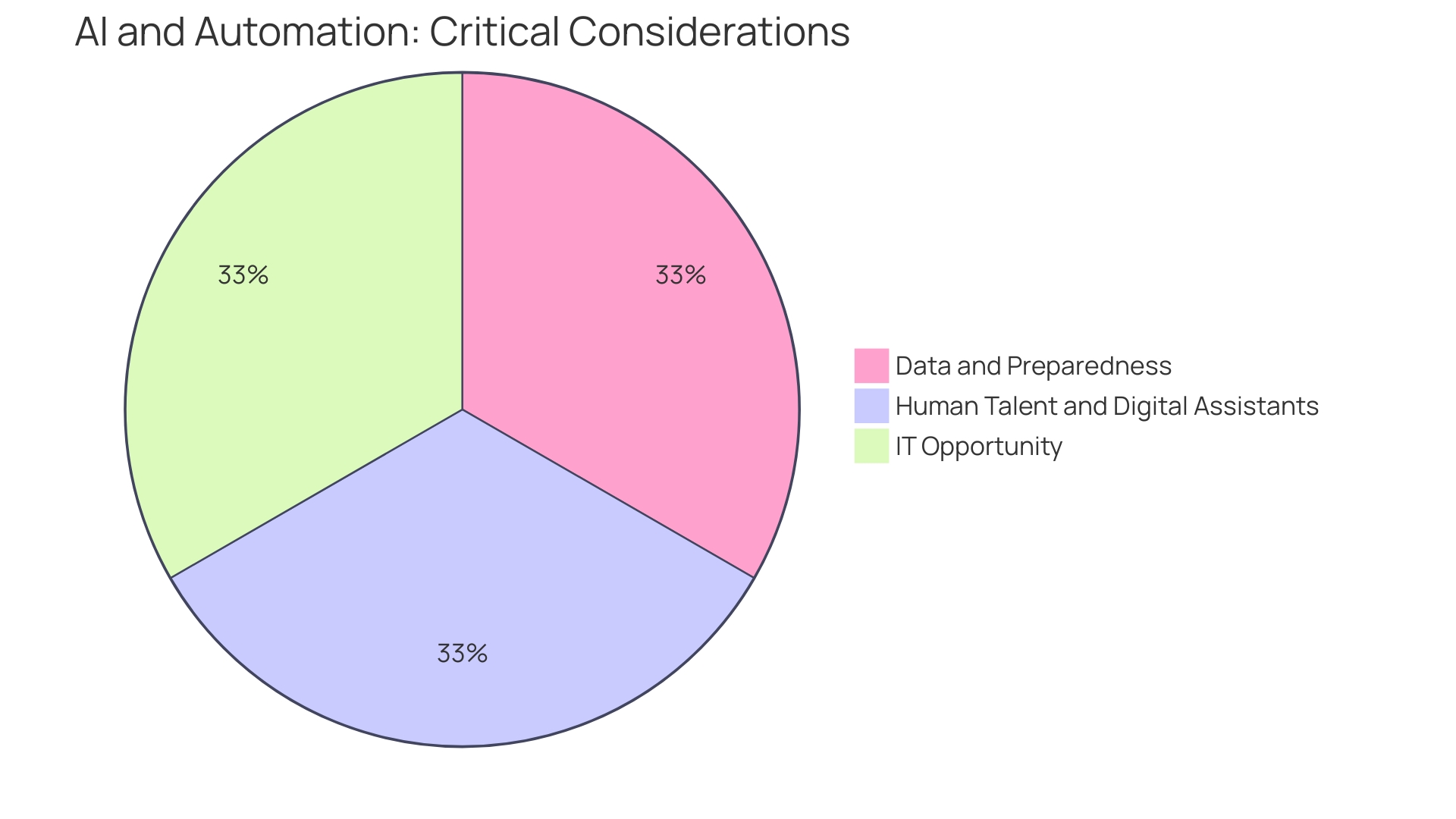
Continuous Improvement and Optimization
Automation isn’t just a set-it-and-forget-it solution; it’s a dynamic sequence that thrives on perpetual enhancement. Within the advancing narrative of successful mechanization, companies like Europris in Norway are sterling examples of how a continuous journey of enhancement can lead to remarkable operational efficiencies. Europris began by consolidating six warehouses into one automated logistics hub, a move that has since propelled them into an era of streamlined processes and productivity.
Boeing’s commitment to learning and applying insights across its operations underscores the importance of a culture that embraces iterative learning and shared expertise. This approach aligns with the principles of DevOps, which integrates a variety of practices, from continuous integration to monitoring, to refine the software development life cycle.
Workflow automation stands as a beacon for companies overwhelmed with monotonous responsibilities. Leveraging algorithms and predefined rules, businesses are turning to technology to orchestrate their workflows, a movement supported by statistics that nearly all workers in small businesses encounter such tasks.
Elon Musk’s approach to busting bureaucracy by questioning every requirement with the name of the person responsible for it exemplifies the mindset needed for continuous process improvement. It’s a reminder that each step in mechanization should be scrutinized for its necessity and efficiency.
In the domain of mechanization, it’s not only about implementing technology; it’s about fostering a mentality of innovation, where questioning, refining, and improving are part of the daily routine. This is the essence of a successful automation journey – a path marked by ongoing evaluation, insightful feedback, and an unwavering commitment to progress.
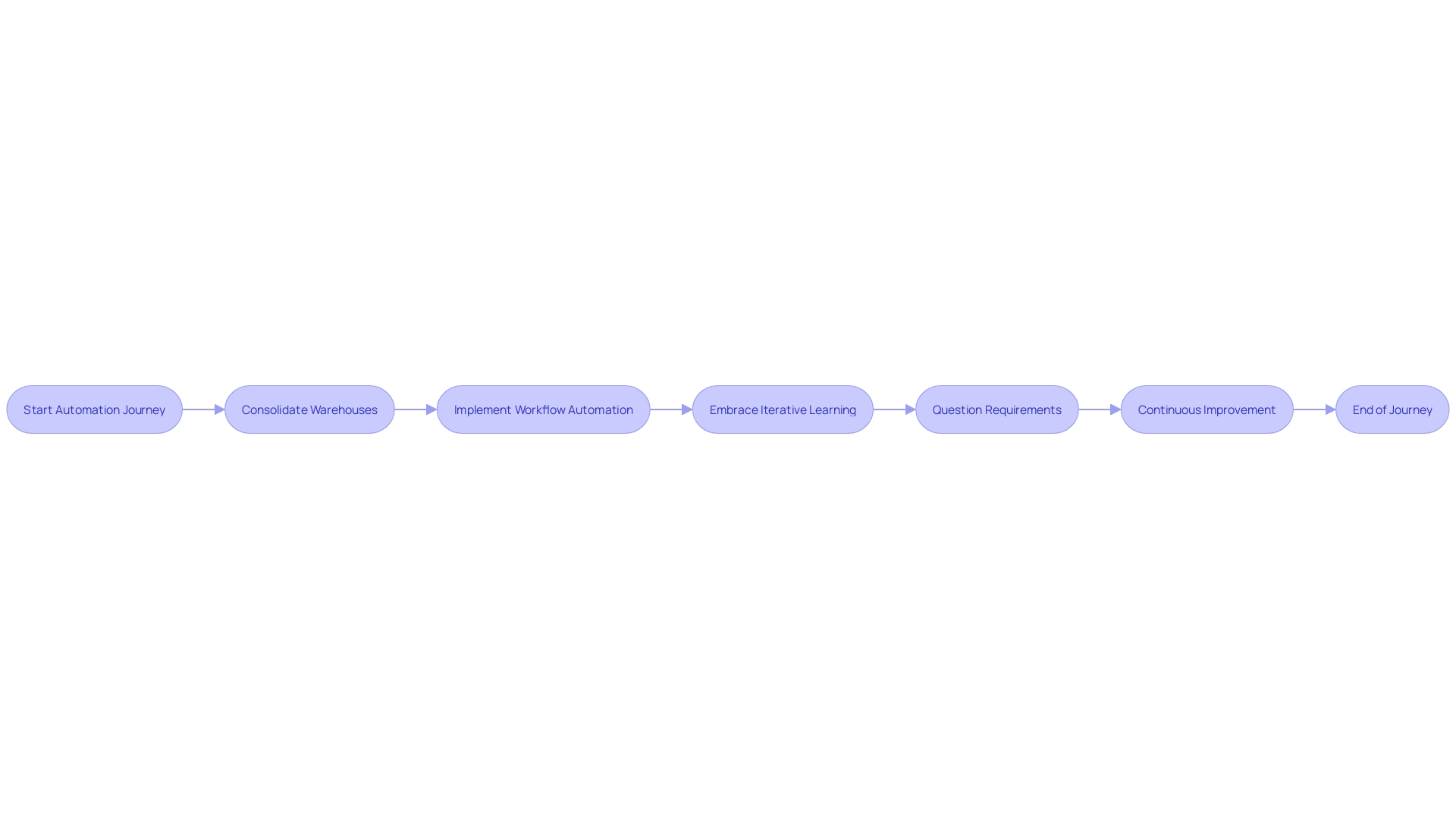
Conclusion
Automation is a transformative force in business operations, streamlining processes and boosting productivity. By identifying and prioritizing processes for automation, organizations can optimize efficiency and align with strategic goals. Choosing the right automation tools and technologies is crucial for successful implementation, while designing and implementing automated workflows enhance operational efficiency.
Testing and fine-tuning processes ensure their effectiveness, and training employees facilitates successful integration. Overcoming common challenges, such as managing change and ensuring data security, is essential for automation success. Measuring and monitoring automation’s impact through metrics like time savings and customer satisfaction is key.
Continuous improvement and optimization drive long-term success, fostering a culture of innovation and refining the automation journey. In conclusion, automation empowers organizations to overcome challenges and unlock productivity, making it a vital tool in today’s dynamic business landscape.
Optimize your efficiency and align with strategic goals with our automation solutions.
Introduction
Robotic Process Automation (RPA) is revolutionizing business operations by automating repetitive tasks and streamlining processes. By deploying software robots, or ‘bots’, RPA simplifies complex business tasks through automation. These digital assistants can perform a wide range of activities, from data entry to manipulation, by emulating human interactions with various applications and systems.
RPA’s impact is exemplified by a large consumer packaged goods company that used RPA to process a massive amount of unstructured data from thousands of suppliers, enhancing their procurement strategy. The integration of RPA into enterprise operations starts with small tasks and gradually scales up, ensuring continuous monitoring and documentation of results. RPA enhances operational efficiency by handling routine tasks, allowing human creativity to flourish and fostering collaboration between humans and digital labor.
As industries continue to navigate digital transformation, RPA, empowered by AI, offers practical solutions to enhance business automation.
What is Robotic Process Automation (RPA)?
Robotic Process Automation (RPA) stands at the forefront of enterprise modernization, offering a transformative approach to streamlining repetitive, rule-based tasks. By using software robots, or ‘bots’, RPA streamlines the complexities of organizational procedures through mechanization. These digital assistants are capable of performing a myriad of tasks such as data entry, extraction, and manipulation by emulating human interactions with diverse applications and systems.
A notable example of RPA’s impact is seen within a large consumer packaged goods company, which faced the herculean task of processing purchasing documents from over 50,000 suppliers across nearly 200 countries. The implementation of RPA, complemented by AI, enabled the company to convert a staggering amount of unstructured data into actionable insights, thus enhancing their procurement strategy.
The integration of RPA into enterprise operations often begins with small, manageable tasks, gradually scaling up to more complex workflows. This stratagem ensures continuous monitoring and documentation of results, paving the way for informed decisions and strategic advancements. Recent advancements, as exemplified by the Korea Institute of Machinery and Materials, reveal that AI-powered robots have the ability to understand user instructions and independently carry out actions, highlighting the potential for RPA to transform manufacturing operations.
In the domain of automating workflows, achieving a harmony between human knowledge and robotic effectiveness is crucial. RPA augments the workforce by handling routine tasks, allowing human creativity and critical thinking to flourish. The synergy between human and digital labor not only elevates operational efficiency but also fosters a collaborative ecosystem where each entity enhances the other’s strengths.
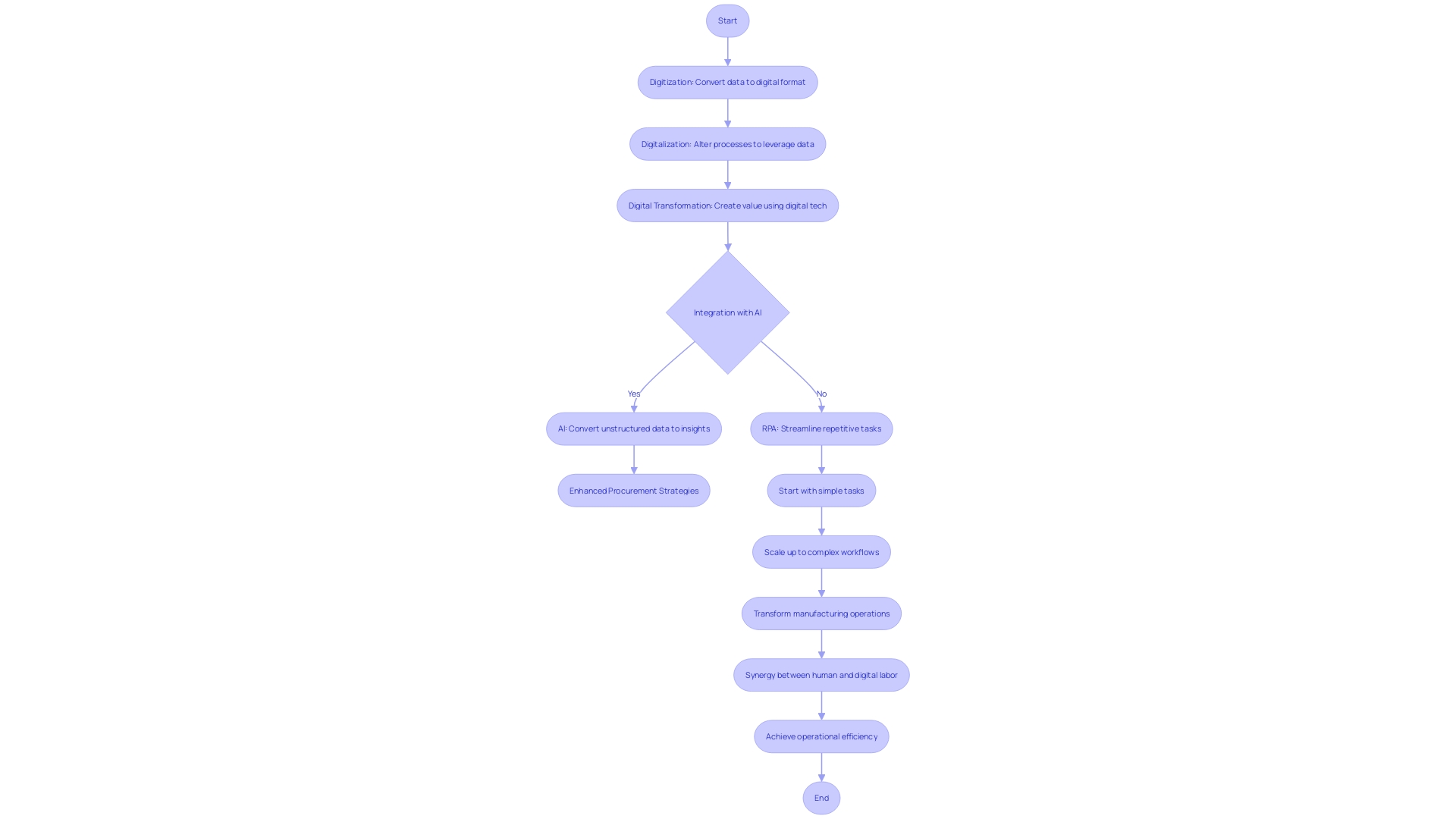
Key Characteristics of RPA
Robotic Process Automation (RPA) is a critical asset for modern organizations, providing seamless integration with existing software applications and systems. It’s a non-invasive technology that enhances business procedures without the need for altering current infrastructure, which is particularly beneficial in settings like the NHS where technologies must be compliant and secure. RPA’s scalability allows organizations, like Specsavers with its complex supply chain and legacy equipment, to automate a wide range of activities, both simple and intricate.
The rule-based nature of RPA ensures that tasks are performed with precision and consistency, addressing inefficiencies in manual operations. This was echoed by the Digital Service Team’s initiative to assess and streamline technology requests within the NHS, ensuring that only necessary and non-duplicative technologies are adopted. The easily adjustable aspect of RPA aligns with the continuous enhancement and digital assurance procedures that organizations are increasingly embracing to fulfill evolving enterprise requirements and regulatory standards.
By leveraging intelligent integration of RPA and AI, organizations can not only streamline repetitive tasks but also acquire valuable insights to enhance decision-making. This was emphasized in the evolution of business methods at Coding Crafts, where they stress the significance of innovation and staying ahead of the curve in technology advancements. The integration of RPA in various industries is reinforced by statistics indicating the significant impact of automation on productivity and the expansive reach of electronic health records management systems like Epic EHR and Cerner.
Furthermore, RPA’s role in hyperautomation is crucial as it serves as a basis for ongoing optimization, contributing to a strategic necessity for the future of work. By adopting RPA, organizations can ensure their workforce is empowered, procedures are optimized, and they are well-prepared to harness the full potential of AI.
How RPA Works
Robotic Process Automation (RPA) leverages software robots or ‘bots’ to automate routine and manual tasks that typically require human intervention. These tasks range from data entry and retrieval to complex calculations and report generation. RPA bots are adept at navigating through various systems and applications, utilizing APIs and connectors to streamline data handling. They’re also capable of interfacing with advanced technologies such as Artificial Intelligence (AI) and Machine Learning (ML), augmenting their functionality to tackle more nuanced tasks.
The integration of RPA can transform how small businesses engage with customers, enhancing satisfaction through quicker responses and consistent, accurate information. By automating these interactions, companies can foster customer loyalty and better scale their operations to accommodate growth.
When contemplating RPA, it’s essential to assess the particular manual tasks that are ready for mechanization. Aim to identify inefficiencies that RPA can address and weigh the time and cost implications of implementing such software. This strategic approach is underscored by industry professionals who emphasize the importance of understanding the benefits and challenges of modernization before proceeding.
As part of adopting new digital technologies, a rigorous ‘digital-assurance procedure’ should be undertaken. This involves initial assessments to ensure that the technology is secure, appropriate, and compliant. It’s not uncommon to uncover existing technologies within an organization that were previously unrecognized, which can inform further technology requests and integrations.
OODA, a consortium of international experts, supports organizations by providing advanced intelligence, strategy, and planning, along with risk management and crisis response services. Their expertise underscores the importance of strategic decision-making in the adoption of RPA and related technologies.
Adopting RPA is not just about implementing new technology; it’s about embracing digital transformation and the smart mechanization it brings. The synergy of RPA with AI can propel companies toward greater process efficiency and more informed choices. Continuous monitoring and documentation of results are essential to gauge success and guide future projects, ensuring that the potential of intelligent automation is fully realized.
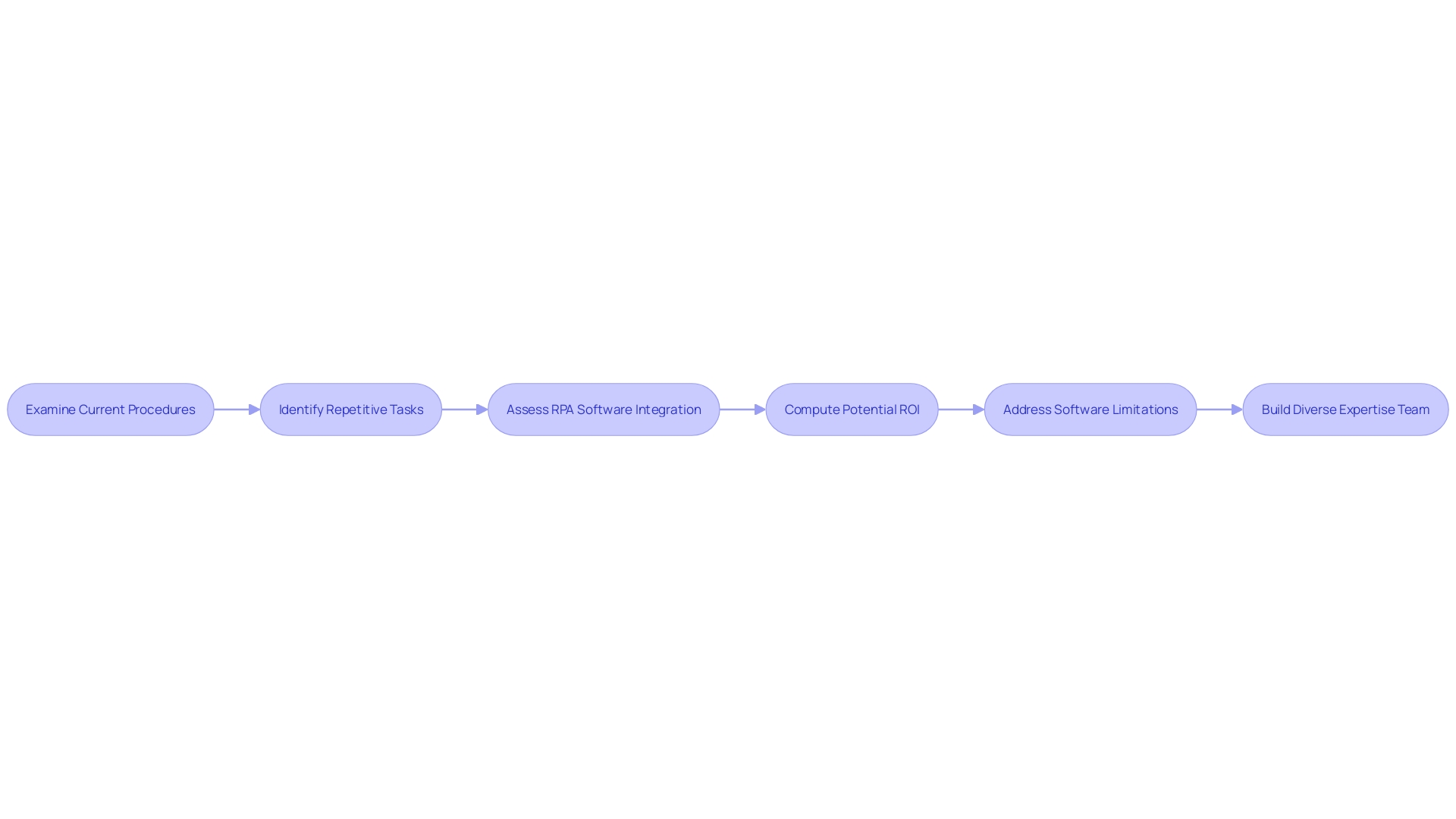
Applications and Use Cases of RPA
Robotic Process Automation (RPA) is revolutionizing the way businesses across various sectors operate by automating mundane, rule-based tasks. In the financial field, banks are utilizing RPA to accelerate activities such as customer onboarding, mortgage handling, and account reconciliation. This not only slashes processing times but also enhances accuracy, providing a seamless experience for both customers and employees. M&T Bank, a venerable institution with over 165 years of service, is a prime example of a bank embracing this digital transformation to maintain stringent security and compliance standards.
Healthcare is another sector reaping the benefits of RPA. With the ability to automate administrative tasks, including claims processing and appointment scheduling, healthcare providers can dedicate more attention to patient care. This shift is crucial in an industry where time and accuracy can significantly impact patient outcomes.
Taking a leap into supply chain management, RPA proves itself as a key player in automating inventory tracking, order processing, and shipment tracking. This process not only streamlines operations but also delivers real-time data, enabling more strategic decision-making. As stated by Adnovum and Squirro’s partnership, the integration of AI and RPA holds the potential to transform banking and insurance sectors profoundly.
Smart integration, combining RPA with AI, not only enhances procedures but also boosts effectiveness and well-informed decision-making. For organizations considering RPA adoption, it’s crucial to evaluate which manual processes are ready for mechanization, recognize inefficiencies that RPA can tackle, and compute the time and cost implications of integration.
According to Accenture’s analysis, early adopters of this technology could see substantial productivity improvements within the next three years. A significant portion of the time spent by US bank employees, around 73%, has the potential to be influenced by generative AI, with 39% being receptive to mechanization and 34% to enhancementâ suggesting a wide range of possibilities for operational improvement.
However, the path towards mechanization is not without its difficulties. Recent breaches in financial institutions, like the MoveIt software issue affecting 60 banks, underscore the importance of vigilant security measures in the adoption of new technologies. As organizations progress towards a digital future, collaborations with technology innovators like Coding Crafts are becoming more and more precious, providing cutting-edge solutions that go beyond mechanization and encompass blockchain development for enhanced security and transparency.
In conclusion, RPA’s role in driving operational efficiency is indisputable. As sectors keep maneuvering through the intricacies of digital transformation, the strategic deployment of RPA, supported by comprehensive examination and strong security measures, will play a crucial role in shaping the future of operational streamlining.
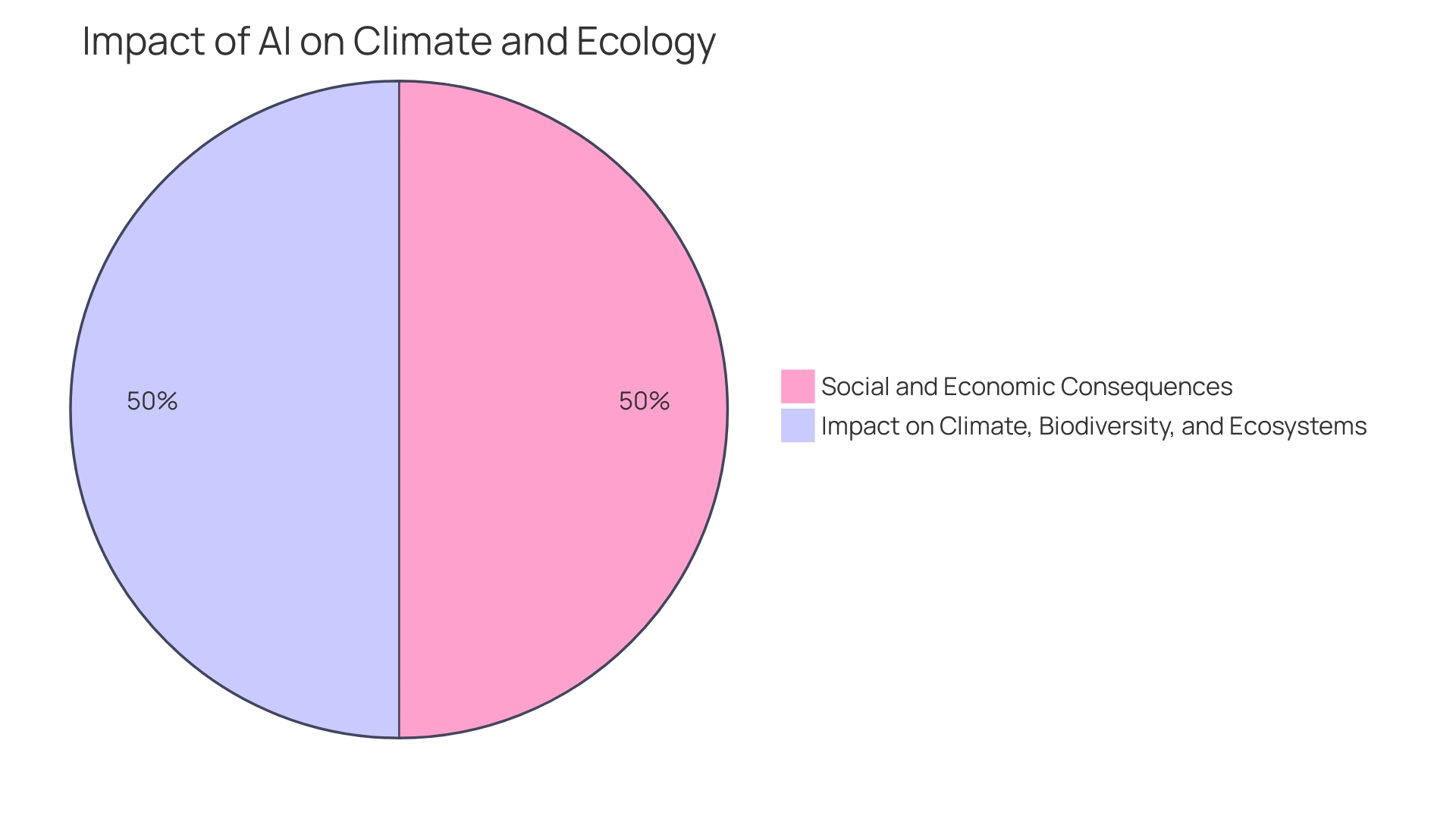
Benefits of Implementing RPA
Robotic Process Automation (RPA) holds the promise of revolutionizing business operations by automating routine tasks, enhancing accuracy, and ensuring compliance with regulatory standards. The key to achieving a successful implementation of RPA lies in the meticulous selection of manual processes to be automated, the analysis of the inefficiencies that can be addressed through automation, and the understanding of the integration costs and timeline.
Case studies provide real-world insights into RPA’s impact. For instance, M&T Bank, a trailblazer with over 165 years of experience, faced the digital transformation of the banking sector head-on. They set out to uphold stringent security and regulatory standards amidst the rapid adoption of new technologies, understanding that flawed software could lead to severe financial and reputational repercussions. Their approach focused on maintaining high-quality, compliant software to ensure seamless operations.
The financial sector is not alone in acknowledging the necessity for strategic mechanization. Across industries, companies are utilizing RPA to streamline operations and decrease manual labor costs, thereby reallocating resources more efficiently. For instance, a financial report emphasized a composite customer who, through investment in intelligent technology, witnessed revenue growth totaling 73% of the overall Net Present Value (NPV) benefit and a 5.4% Compound Annual Growth Rate (CAGR) over three years.
Implementing RPA is not without its challenges. It requires a strategic approach, starting with small, manageable tasks and gradually scaling to more complex workflows. Monitoring and documentation are crucial to assess the effectiveness and to learn from each project for future endeavors.
As leaders like Coding Crafts suggest, the journey towards effective RPA and Intelligent Automation (IA) is an ongoing process. It’s crucial to collaborate with innovative technology providers who provide comprehensive solutions extending beyond mechanization, such as blockchain development, to ensure security and transparency in digital transactions.
In sum, RPA offers a pathway to agility, allowing organizations to swiftly adapt to changing environments and scale operations effectively. By leveraging the potential of mechanization, businesses can concentrate on strategic initiatives, propelling growth and innovation.
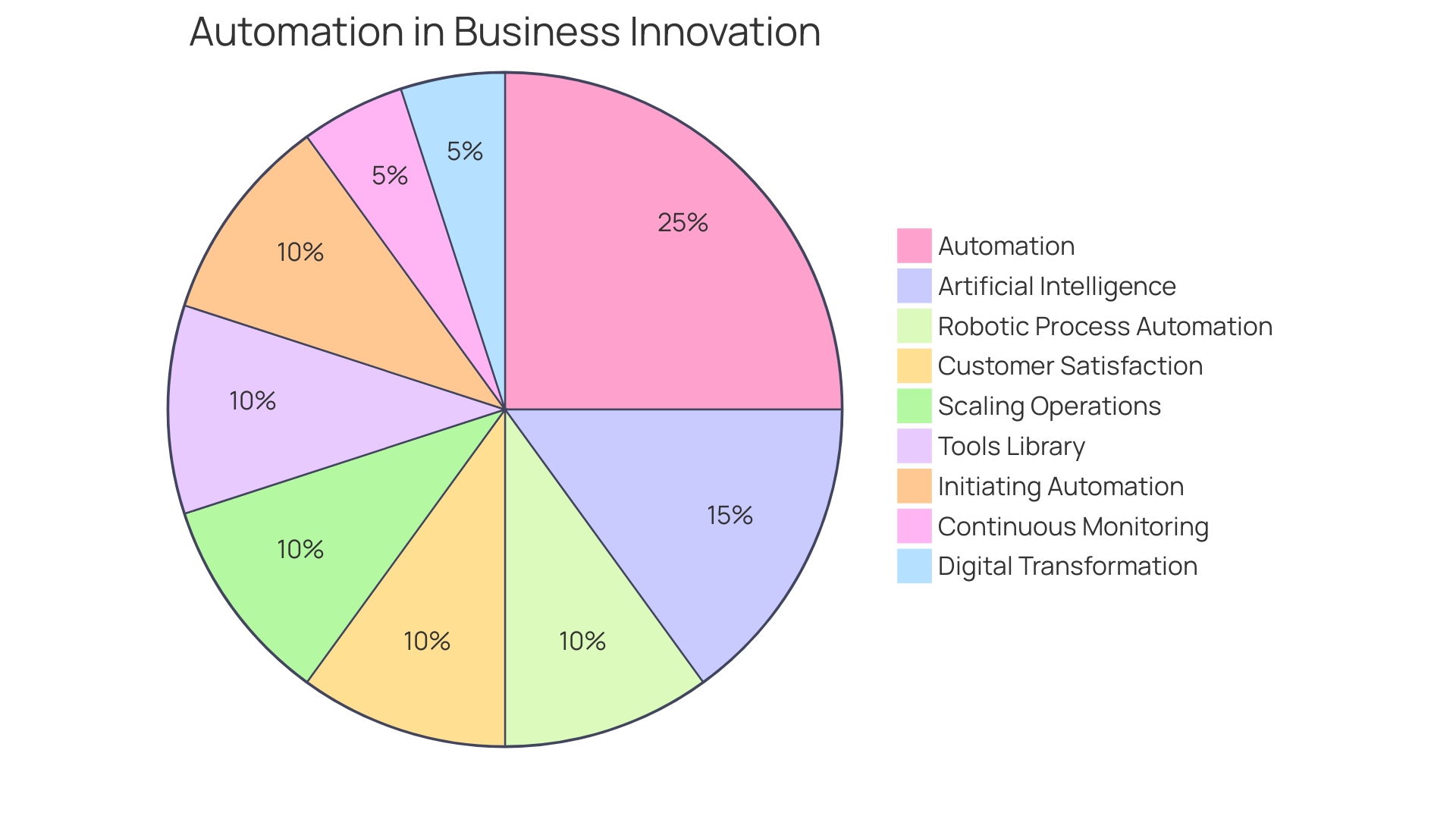
Comparison with Other Automation Technologies
Robotic Process Automation (RPA) is setting itself apart in the realm of mechanization by offering a user-friendly platform for automating rule-based tasks without the need for intricate coding or deep integration with underlying systems. Unlike traditional IT automation, which often requires specialized knowledge and can be resource-heavy, RPA bots are designed to be more independent. They can seamlessly interact with user interfaces, which streamlines the implementation, resulting in a faster and less resource-intensive deployment.
Adaptability is another characteristic of RPA, as these bots can be quickly configured and modified to fit changing business requirements, facilitating swift adjustments to procedures. While RPA inherently focuses on structured, rule-based tasks and lacks advanced cognitive functions, its true potential is unlocked when combined with AI and machine learning technologies. Such integration enhances the capabilities of RPA, enabling it to handle more intricate procedures that necessitate decision-making and learning abilities.
Comprehending the strategic implementation of RPA requires a comprehensive evaluation of current procedures. A careful approach should be taken, asking critical questions such as which manual processes are ready for mechanization, where the inefficiencies lie that can be remedied by RPA, and what the integration costs and timeframes look like. For instance, the NHS’s Digital Service Team exemplifies this approach by meticulously evaluating new technologies for security, appropriateness, and compliance before adoption.
Moreover, the adoption of RPA, particularly when fused with AI, is becoming a transformative factor for organizations aiming for digital transformation. As businesses navigate through the phases of identifying tasks suitable for mechanization, stakeholder engagement, and defining automation parameters including AI and RPA tools, they begin to craft more efficient, informed, and agile operational landscapes. The innovative approach is demonstrated by the establishment of tool libraries that support intelligent technology, with companies like SAP utilizing generative AI to expedite software development and enhance collaboration.
The path of mechanization, once confined to basic mechanical tasks, has progressed significantly. With every technological advancement, from the emergence of digital electronic computers to the latest in AI, the range of possibilities for mechanization continues to grow. This evolution has been a constant trend, shaping industries and the workforce alike. As we look to the future, small businesses, in particular, are finding value in RPA for enhancing customer satisfaction through faster and more accurate responses, thereby fostering stronger customer relationships and supporting scalable growth.
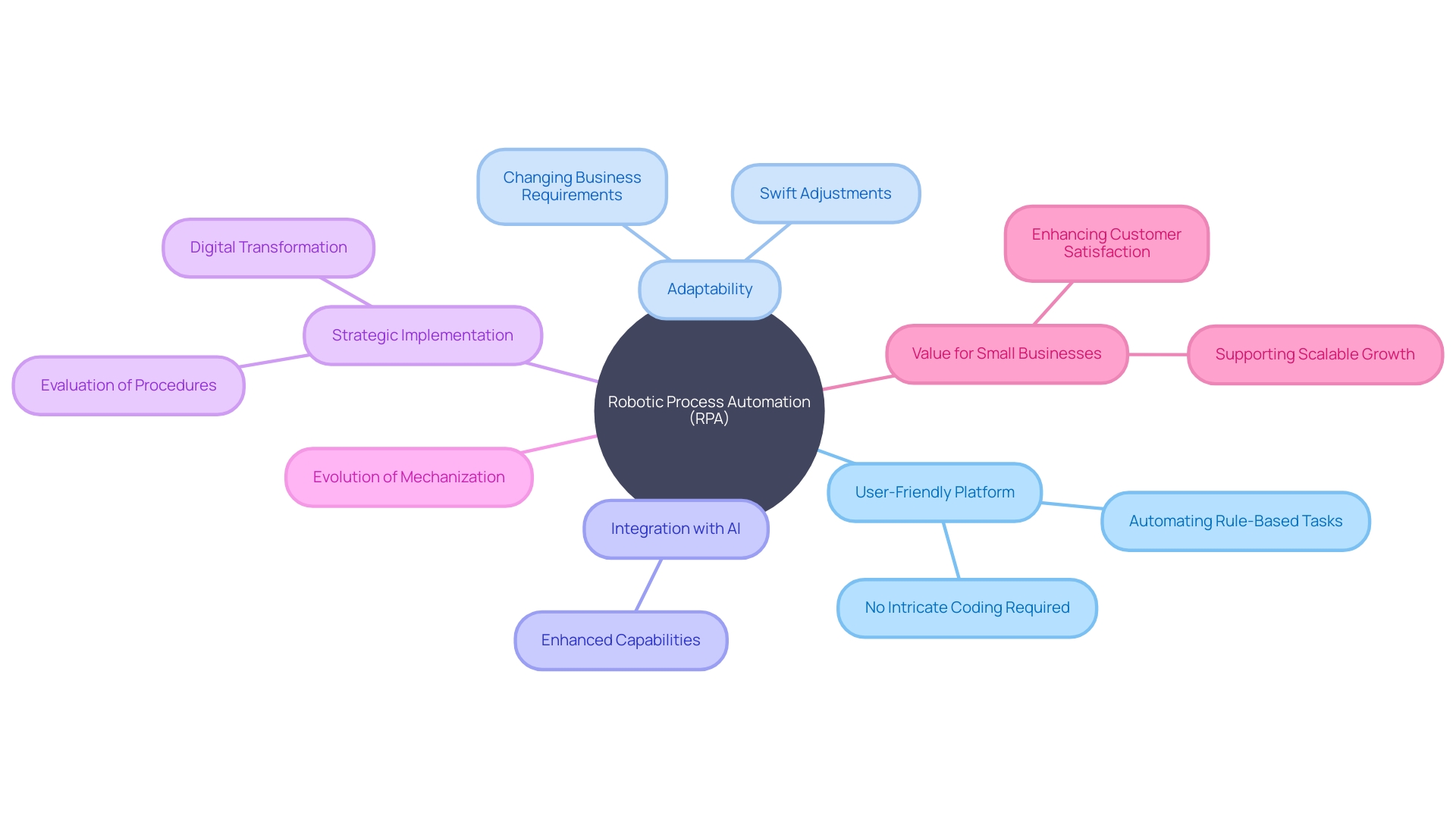
Integration with AI and Machine Learning
The fusion of Robotic Process Automation (RPA) with Artificial Intelligence (AI) and Machine Learning (ML) heralds a new chapter in automation that extends far beyond simple, routine tasks. By integrating AI, organizations can address intricate procedures that require a deeper comprehension, such as deciphering human languages, evaluating sentiments, and making nuanced decisions. This evolution allows organizations to process unstructured data, unearth profound insights, and make decisions rooted in data.
For instance, Lindy’s AI assistant exemplifies the seamless integration of a vast network of apps and services, showcasing the efficiency of AI in automating diverse tasks like medical scribing and customer support. Likewise, Adobe’s inventive use of AI in creating session summaries from transcripts showcases the time-saving potential of intelligent technology. Additionally, Delivery Hero’s use of RPA to address account lockout problems showcases the transformative effect of mechanization in enhancing operational efficiency, reducing the average recovery time significantly.
These advancements in RPA, AI, and ML are not limited to tech giants but are also available to small enterprises, allowing them to enhance customer relationships through faster response times and consistent information delivery. As companies strive to expand their operations effectively, beginning with small mechanization endeavors and progressively addressing more intricate workflows can result in significant enhancements. Continuous monitoring and documenting results are crucial for learning and future project enhancements.
Indeed, the technology landscape is advancing at a brisk pace, and embracing these cutting-edge tools is integral for companies to remain competitive and innovative. As Ranganathan Sundaram of TCS points out, the synergy of RPA and AI is a transformative factor for companies seeking digital transformation. The incorporation of these technologies opens the door for advanced automation and intelligent automation that can transform how enterprises operate and cater to their customers.
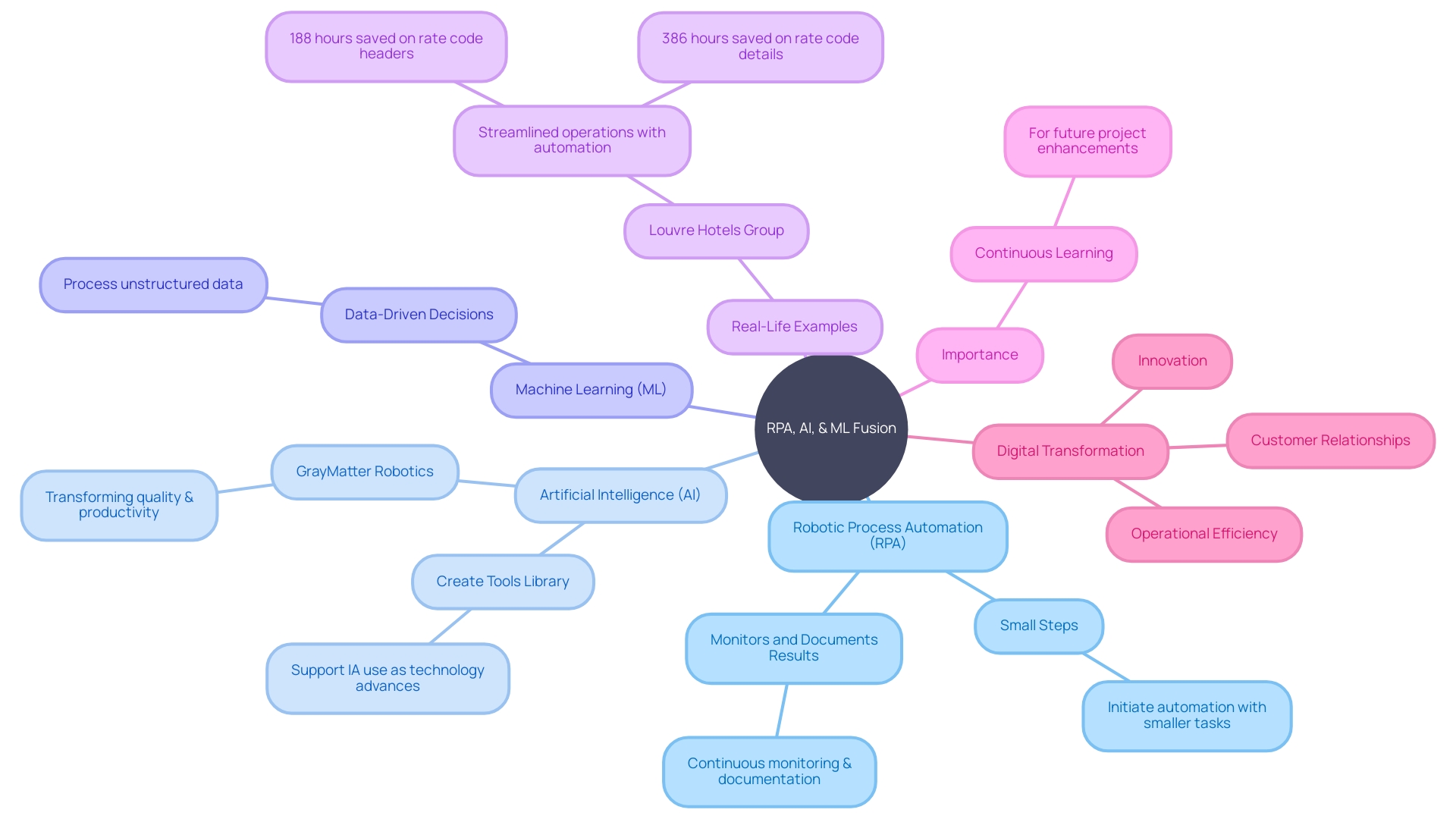
Implementation and Maintenance of RPA Solutions
Robotic Process Automation (RPA) is rapidly transforming the way businesses operate, providing a leap in productivity by automating routine tasks. However, the success of RPA integration is not simply about flipping a switch. It’s a well-orchestrated symphony of assessment, planning, and ongoing management. Take the Digital Service Team’s approach in the healthcare sector, for example. They meticulously assess whether new digital technologies align with existing systems and standards for security and compliance before implementation, echoing the precision required for successful RPA deployment.
Likewise, the partnership between Medien Hub Bremen-Nordwest and SC Soft shows that by selecting the appropriate AI platformâafter evaluating customer impact and operational efficienciesâthe outcomes can exceed expectations, transforming customer complaints into prompt resolutions. This reinforces the idea that RPA bots, once in place, need continuous monitoring to ensure they are meeting the set objectives.
Leaders must first identify which manual procedures are ready for automation, comprehend the specific inefficiencies to be addressed, and consider the time and cost implications. It’s not about automating for the sake of it, but about seeking tangible improvements in process management. As the noted AI expert Dr. Evan Shellshear posits, the application of AI tools across industries is about enhancing analytical solutions, from HR to supply chain management.
The importance of product thinking cannot be overstated. It requires a shift from a maintenance mindset to one of innovation, focusing on long-term growth and understanding user needs. As customer demands evolve, so too must the technology that serves them, backed by experience level agreements (XLAs) that measure the true impact on customer satisfaction.
Finally, it’s crucial to define clear timelines and success criteria, as suggested by industry best practices around AI governance. A strategic vision will guide the organization towards becoming an AI-enabled enterprise, a journey that, while ambitious, is increasingly necessary in today’s competitive corporate landscape.
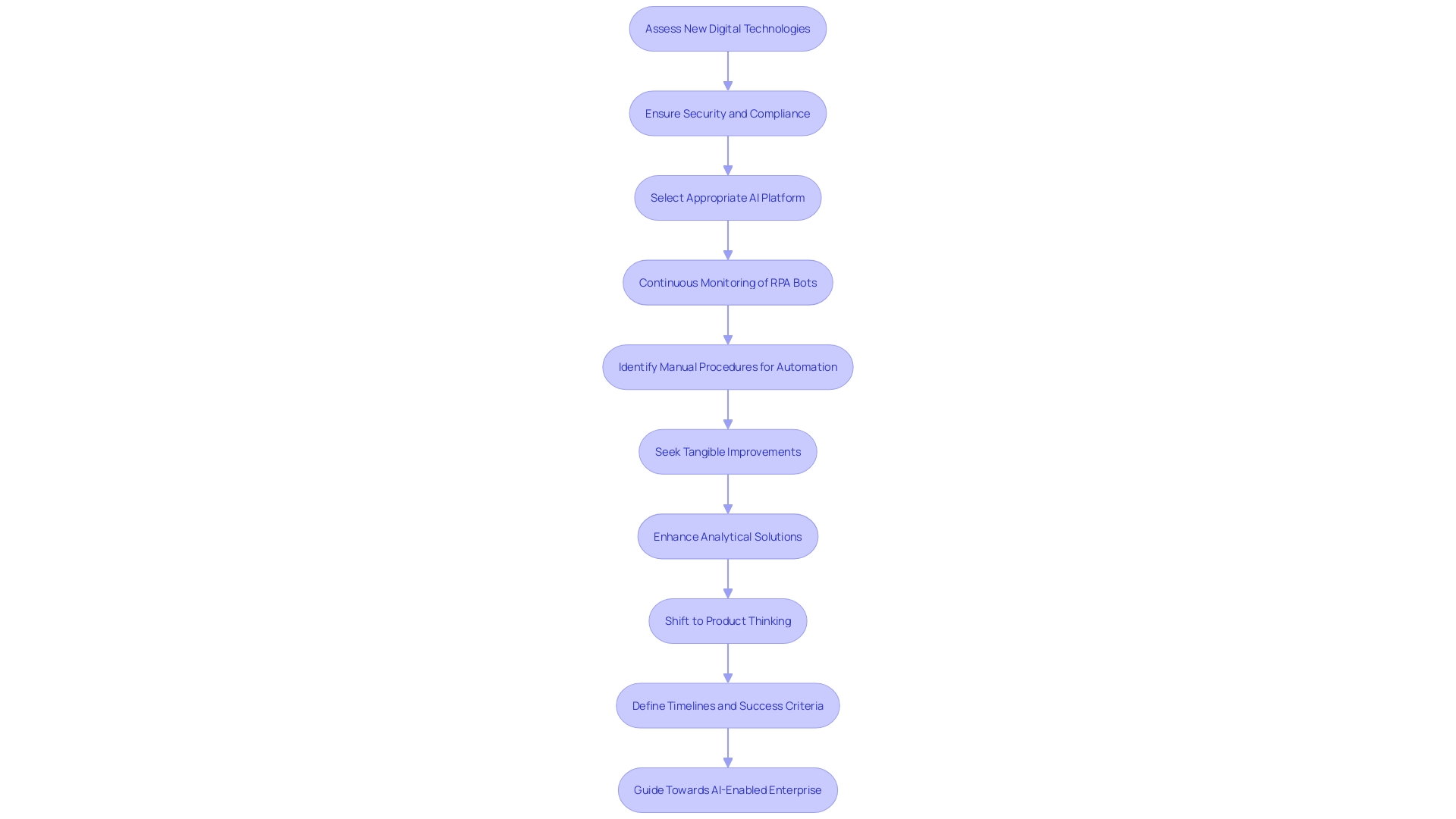
Role of RPA Business Analysts in Automation Projects
RPA Business Analysts are crucial in the realm of mechanization, serving as the linchpin that effectively aligns organizational requirements with technical solutions. Their role extends beyond mere analysis; they are the architects of mechanization strategies, engaging with stakeholders to pinpoint areas ripe for robotic intervention. With a keen eye on company objectives, they meticulously dissect existing workflows, sculpting the blueprint for automation that can revolutionize business operations.
Their collaboration with RPA developers is instrumental, ensuring that the architecture of automated solutions is perfectly attuned to the enterprise’s ambitions. This synergy is not static but a continuous dance of assessment and refinement, with RPA Business Analysts vigilantly overseeing the performance of RPA bots. Their insights are not just reports but catalysts for evolution, as they recommend enhancements that drive operations towards peak efficiency and effectiveness.
The transformative potential of RPA is vividly illustrated by Specsavers, which navigated a complex landscape to automate processes within its expansive global supply chain. Similarly, an educational department harnessed RPA to streamline student engagement tracking, showcasing the adaptability of RPA across varied sectors. These narratives underscore the versatility and impact of RPA when deftly managed by skilled Business Analysts.
Lately, the story of mechanization has been enhanced by advancements in AI, with enterprises utilizing these progressions to enhance efficiency and customer contentment. It’s a reminder that the process of mechanization is an ongoing one, marked by continuous monitoring and management to harvest its full potential. Automation Experts recommend starting small, focusing on tasks that are prone to error or time-intensive, and gradually scaling up to tackle more complex workflows.
Understanding the landscape of RPA and its applications is essential for Business Analysts, who must navigate an ever-expanding array of tools and approaches to optimize their craft. The distinctions between Analysts who specialize in bridging the gap between business imperatives and technological prowess, and Analysts who immerse themselves in the depths of data to uncover actionable insights, are also crucial.
This distinction is underpinned by the latest Global State of Business Analysis Report, which offers a tableau of trends and demographics shaping the field. The insights drawn from over 4,400 professionals indicate a shift in the age demographic of respondents, reflecting an evolving industry. It’s evidence of the ever-changing nature of the business analysis profession, and the vital role that RPA Business Analysts have in guiding organizations towards a future marked by efficient procedures and strategic mechanization.
Common Challenges and Best Practices
Embracing RPA technology requires a strategic approach to ensure its successful implementation. It starts with a thorough examination to determine which manual tasks are ready for mechanization and to grasp the particular inefficiencies that RPA can tackle. This pre-implementation stage is critical, as it sets the foundation for a seamless integration of RPA software, considering time and cost implications.
Once potential RPA opportunities are pinpointed, involving employees in the transition is paramount. It’s not just about introducing new technology; it’s about ushering in a cultural shift. Proper training and a support system are essential to foster acceptance and adaptability. Transparent communication about RPA’s role in enhancing job functions, rather than replacing them, reinforces its benefits.
The governance of RPA initiatives cannot be understated. A robust framework should be established that outlines clear roles, responsibilities, and benchmarks for success. Regular monitoring and evaluations allow organizations to stay on track, ensuring that RPA solutions deliver on their promise of increased efficiency and productivity.
In practice, the Digital Service Team of the NHS exemplifies a meticulous approach to adopting new technology, with an initial assessment that scrutinizes security, appropriateness, and compliance. Their digital-assurance process, involving detailed questionnaires to understand the needs and justification for technology requests, mirrors the careful planning necessary for RPA implementation.
Furthermore, it’s essential to recognize that automation, while a powerful driver of business innovation, is not a set-and-forget solution. It requires ongoing human oversight to manage, update, and optimize, as emphasized by industry experts. RPA is part of this lineage, aiming to augment human efforts, not replace them.
In conclusion, the journey to RPA is multifaceted, involving strategic planning, employee engagement, and diligent governance. By adopting these best practices, organizations can navigate the challenges and unlock the full potential of RPA, ensuring it becomes an integral and sustainable component of their operational fabric.

Conclusion
Robotic Process Automation (RPA) is revolutionizing business operations by automating tasks and streamlining processes. RPA simplifies complex tasks by deploying software robots that emulate human interactions with applications and systems. It enhances operational efficiency by handling routine tasks, allowing human creativity to flourish.
The integration of RPA with AI offers practical solutions for better decision-making and scalability.
RPA finds applications in various industries, from finance to healthcare and supply chain management. It expedites processes, enhances accuracy, and enables real-time data-driven decision-making. RPA Business Analysts play a crucial role in aligning business needs with technical solutions, ensuring the successful implementation of automation projects.
Implementing RPA requires a strategic approach, starting small and scaling up gradually. Continuous monitoring and documentation are essential for assessing effectiveness and guiding future projects. Employee involvement, transparent communication, and a robust governance framework are key to seamless integration and ongoing management of RPA solutions.
In conclusion, RPA drives operational efficiency and enhances collaboration between humans and digital labor. Integration with AI offers practical solutions for better decision-making and scalability. With careful planning, employee engagement, and diligent governance, organizations can successfully leverage RPA’s potential and unlock enhanced business automation.
Introduction
In a world where time is the new currency and efficiency is the linchpin of success, Robotic Process Automation (RPA) emerges as a game-changer for organizations striving for excellence. Imagine a workplace where software bots tirelessly process transactions, handle data entry, and manage customer interactions with unfaltering precision. This is not the stuff of science fiction, but the reality of RPA—a reality that is reshaping industries and redefining the nature of work itself.
As operations become increasingly complex, the integration of RPA offers a compelling solution for businesses to surmount the challenges of mundane tasks and unlock unprecedented levels of productivity. This strategic deployment of digital workers not only streamlines operations but also catalyzes innovation, allowing human creativity to flourish without the constraints of repetitive labor.
The transformative power of RPA extends across sectors, from the intricacies of healthcare and the demands of customer service to the precision of financial services and the dynamics of supply chain management. It represents a pivotal step towards a future where businesses can pivot with agility, ensuring customer satisfaction, and fostering a new era of growth and scalability.
Delve into the multifaceted landscape of RPA robotics—where the fusion of technology and strategy creates a symphony of efficiency and the blueprint for the future of operational excellence.
What is RPA Robotics?
Robotic Process Automation (RPA) stands at the forefront of business modernization, with its ability to automate mundane, rule-based tasks through software bots. These bots are adept at emulating human interactions with digital systems, providing a solution to enhance operational productivity by taking over time-consuming data entry or document processing chores. The integration of RPA can significantly augment efficiency by performing these tasks more quickly and accurately than human counterparts.
A strategic approach to RPA implementation involves a comprehensive examination of internal operations to determine which can be automated effectively. For example, GrayMatter Robotics, an AI-centric robotics firm, is transforming manufacturing with its advanced robotics and AI, highlighting the significance of identifying the appropriate processes for mechanization and the enhancements in quality it can bring.
Moreover, the industry is witnessing a surge in mobile robotics, especially in intralogistics, healthcare, and hospitality. Notably, a new wave of cost-effective mobile robotics is emerging, aimed at small and medium-sized enterprises (SMEs) looking to leverage automation without prohibitive costs. The global mobile robotics market, with an estimated value of $20.3 billion, is expected to nearly double by 2028, signaling a robust growth trajectory.
For enterprises, especially smaller ones, RPA provides a pathway to improved customer satisfaction. By expediting response times and ensuring consistent information delivery, RPA fosters customer loyalty—a critical element for growth. Additionally, the adoption of RPA should be viewed as a continuous improvement journey, constantly evolving with the business needs.
With the expansion of the robotic industry, the need for mobile robots is increasing, as shown by a study indicating that the Autonomous Mobile Robots Market is expected to achieve a value of $18.2 billion by 2032. This growth is part of a broader trend in the robotics sector, which is expected to climb to a staggering $45.09 billion by 2028. With the United States poised to lead in revenue generation, it’s clear that RPA and robotics are vital to the future of work, signifying a transformative era for industries worldwide.
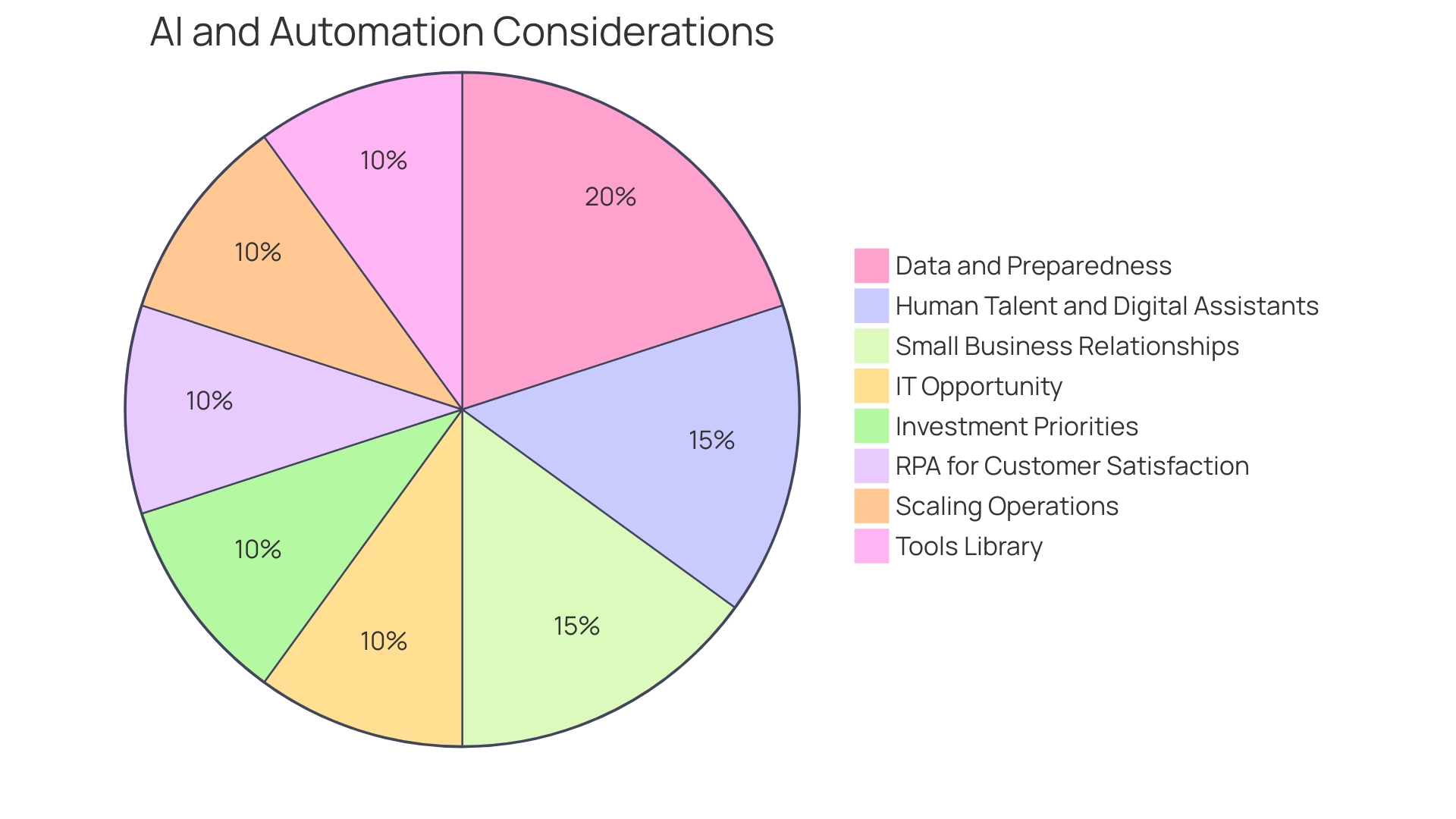
Applications of RPA Robotics
Robotic Process Automation (RPA) is revolutionizing the way companies operate across a myriad of industries. Financial services are harnessing RPA to create AI-powered knowledge assistants on platforms like AWS. These assistants provide instant, contextual answers around the clock, helping employees navigate vast data streams, from market trends to regulatory changes. In manufacturing, RPA streamlines complex supply chains, with AI elevating operational optimization by enhancing decision-making and reducing costs. Similarly, healthcare and customer service sectors are embracing RPA to automate routine tasks, thus elevating the quality of care and customer engagement. By meticulously choosing procedures for automation, evaluating inefficiencies, and calculating integration costs, these industries are not only transforming workflows but also establishing new standards in efficiency and productivity.
Automating Data Entry and Processing
Robotic Process Automation (RPA) stands at the forefront of business efficiency, enabling software robots, or ‘bots,’ to emulate and execute tasks across digital systems traditionally done by humans. These bots can adeptly manage data entry, process transactions, navigate workflows, and even handle customer service interactions. The true power of RPA lies in its ability to integrate disparate systems, liberating employees from a multitude of routine tasks.
Within the realm of data handling, RPA bots excel by extracting information from various sources, validating it, and seamlessly inputting it into corresponding systems. This degree of mechanization not only reduces human error but also greatly improves the accuracy of the data. Companies like GrayMatter Robotics are pioneering efforts to integrate AI with robotics, aiming to augment human productivity and elevate the quality of outputs across industries.
For example, St. James Winery has enjoyed the benefits of mechanization, becoming Missouri’s biggest and most honored winery. This accomplishment is credited to their careful focus on processes, where mechanization has played a vital role. Likewise, progress in clever mechanization, encompassing AI-enhanced and self-governing systems, are transforming the corporate scenery by providing different levels of complexity in human-AI collaboration.
Understanding the scope and capabilities of RPA is essential for modernizing operations effectively. Leaders must take into account crucial factors such as the appropriateness of processes for mechanization, the inefficiencies that RPA can tackle, and the investment needed for integration. The objective is to make well-informed decisions that harness the potential of RPA to drive business innovation, enhance customer satisfaction, and facilitate scalable growth for small and large enterprises alike.
Streamlining Customer Service Processes
Innovative applications of Robotics Process Automation (RPA) are transforming customer service operations by automating routine tasks, ultimately enhancing the customer experience. For instance, Medien Hub Bremen-Nordwest reported remarkable success with their AI platform, Parlor, in partnership with SC Soft, where their Voicebot significantly reduced complaint processing times, immediately benefiting their customer satisfaction metrics.
RPA’s potential in improving customer service is further demonstrated by Rippling, which supports over 400,000 users. After moving away from a decision-tree-based solution, they adopted a more sophisticated AI agent solution, resulting in more accurate and time-sensitive responses, crucial for their HR, Payroll, and IT management services.
The retail industry’s move towards mechanization has been notable, with many retailers implementing chatbots and interactive voice response systems to manage high volumes of customer inquiries. This advancement not only boosts efficiency but also generates cost savings by handling routine tasks like order status checks and shipping updates.
According to recent market data, the expansion of companies specializing in logistics, particularly through mobile robots, has surged by 45% in Spain between 2012 and 2022. This trend underscores the expanding role of automation in various industries beyond traditional sectors like automotive, where approximately 50% of Spanish robots are utilized.
As enterprises adopt hyperautomation, they are urged to consider it as an ongoing expedition, consistently enhancing workflows to optimize advantages and stay in line with the future of labor. By prioritizing customer relationships and scaling operations efficiently, small businesses can leverage RPA to respond swiftly and accurately to customer inquiries, fostering loyalty and satisfaction.
Enhancing Financial Operations
Robotic Process Automation (RPA) is transforming the landscape of finance and accounting operations. By deploying bots to handle routine tasks such as invoice processing, accounts payable, receivable, and financial reporting, companies are experiencing a significant uplift in efficiency. These automated systems are not only enhancing accuracy but also cutting down on processing times dramatically.
The integration of RPA into financial departments is not a straightforward task, though. It requires a strategic approach, starting with identifying which manual processes are ready for mechanization. Companies must then pinpoint the inefficiencies that RPA can resolve and weigh the time and costs of integrating RPA software against the potential return on investment. Moreover, the existing software infrastructure must be evaluated to ensure compatibility with RPA solutions, addressing any limitations before moving forward with implementation.
Despite these considerations, the benefits of automating finance functions cannot be overstressed. A study using the Total Economic Impact⢠methodology developed by Forrester Research demonstrated that investing in intelligent technology resulted in a 73% increase in net present value advantages and a 5.4% compound annual growth rate over three years for a composite organization. These numbers underscore the transformative potential of RPA in financial operations.
Moreover, industry leaders recognize that while mechanization is a game-changer, it necessitates a continuous human-machine partnership. Continuous monitoring, management, and upgrades are essential to maintain stability and realize the full benefits of RPA. As the CTO and Co-Founder of Reveille Software puts it, AI and machine learning, integral to RPA, are designed to bolster efficiency, productivity, and convenience, but the human element remains pivotal for ensuring success.
In the realm of financial operations, mechanization stands as a powerful tool to shift the focus of finance teams from mundane tasks to strategic initiatives. As Razzak Jallow, CFO of FloQast, notes, the role of the CFO has evolved from tactical to strategic, thanks in part to the rise of innovative technologies like RPA. Similarly, Shagun, CEO of System, highlights the untapped potential for automation in finance departments, with 80% of financial operations primed for automation according to Accenture, signaling a significant opportunity to refocus employee efforts on value-adding activities.
This synergy of RPA and strategic human oversight is reshaping finance departments, propelling them towards a future where strategic activities take precedence over routine transactional tasks.
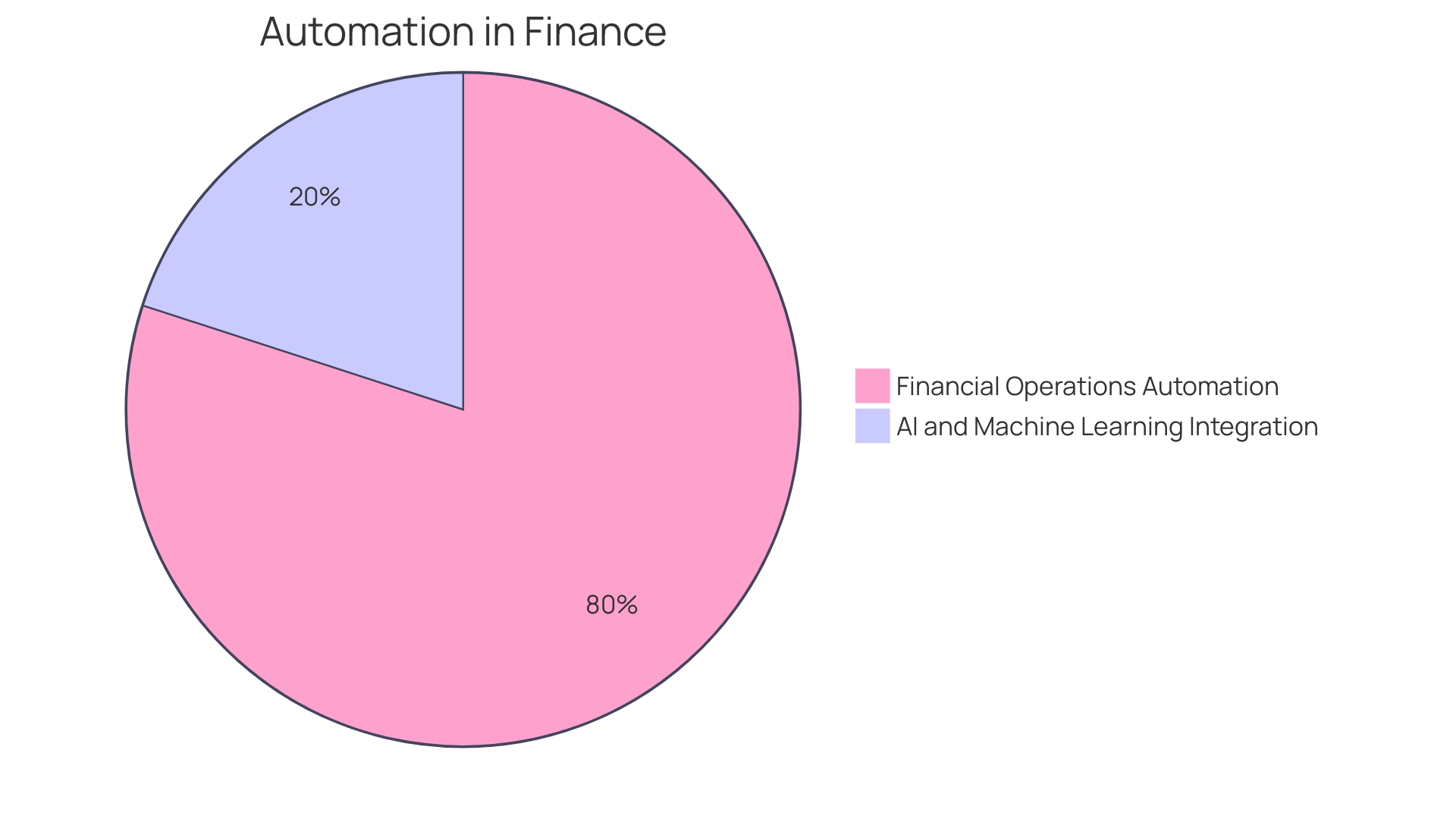
Improving Supply Chain Management
Robotic Process Automation (RPA) is revolutionizing supply chain management, offering unparalleled efficiency in handling routine tasks such as inventory control, tracking orders, and managing supplier relationships. By leveraging RPA, businesses can synchronize data, generate insightful reports, and foster smooth interaction among various supply chain participants. The integration of RPA into supply chains is exemplified by success stories like Zara, which has implemented AI across its operations, including inventory management systems, to stay ahead in the competitive fashion market. Utilizing technologies such as RFID and real-time analytics, Zara has crafted a Just-In-telligent supply chain that optimizes inventory levels and logistics in real-time.
In the sphere of public services, innovative solutions like Tungsten TotalAgility are transforming operational processes, enabling richer data capture from transactions. This movement towards mechanization not only improves customer service but also promotes customer satisfaction and loyalty. Furthermore, in the logistics industry, the emergence of cost-efficient mobile robotics, like the ReBeL on Wheels, is making access to mechanization more accessible for small and medium-sized businesses. These robotic solutions are becoming increasingly prevalent, with the global market for mobile robotics expected to nearly double by 2028, signifying their importance in intralogistics and other industries.
The game-changing potential of mechanization in supply chain management is highlighted by industry research suggesting that substantial investments in warehouse mechanization have resulted in advantages such as enhanced productivity, better customer demand fulfillment, and cost savings. Nevertheless, it is essential for businesses to specify their mechanization goals, comprehend the trade-offs, and select the appropriate technology based on nuanced comprehension and evaluation of diverse scenarios, including potential for future expansion. As such, RPA in supply chain management is not a static solution but requires continuous monitoring and management to ensure it aligns with the dynamic demands of the market.
Benefits of RPA Robotics
Robotic Process Automation (RPA) stands as a transformative force across various sectors, from recycling facilities to the hospitality industry, and even in the world of fine wines. For instance, Millennium Recycling, a material recovery facility, leverages RPA to enhance its recycling processes, showcasing the technology’s adaptability to environmental services. Similarly, the Louvre Hotels Group has reaped substantial efficiency gains by implementing RPA in rate code maintenance, saving hundreds of hours monthly that can be redirected to more strategic tasks.
Moreover, the impact of RPA is evident at St. James Winery, where the integration of mechanization supports their award-winning production, affirming RPA’s role in preserving craftsmanship while improving operational efficiency. These case studies exemplify how RPA can revolutionize time-intensive tasks, enabling companies to focus on innovation and growth.
RPA’s capabilities are further emphasized by the significant presence of service robotics at global events like CES, where the newest advancements in technology are on full display. Service robots, classified for personal or professional use, are becoming increasingly integrated into various service industries, including agriculture, logistics, and medical fields, signifying a broader shift towards automation.
The technology’s adoption is not limited to large enterprises; small enterprises also stand to benefit immensely. By automating routine, rule-based tasks such as data entry and document processing, RPA enables these enterprises to maintain and even enhance their customer relationships through quicker response times and consistent, accurate information delivery.
Considering these advancements, leaders contemplating RPA implementation should reflect on the specific processes ready for streamlining, the inefficiencies to tackle, and the integration costs. With the potential for significant economic impact, including a 73% net present value benefit and a 5.4% compound annual growth rate over three years, RPA promises a future where operational excellence and customer satisfaction go hand in hand.
Increased Efficiency and Productivity
RPA Robotics transcends traditional productivity measures by enabling round-the-clock operation without breaks or errors, revolutionizing the way tasks are approached. Companies can now redirect their workforce to strategic and creative pursuits, enhancing the value they provide. Millennium Recycling, a leader in the recycling industry, has utilized cutting-edge technology to become one of the most efficient material recovery facilities, embodying the transformative effects of advanced machinery. Similarly, St. James Winery’s commitment to innovation has cemented its status as Missouri’s most celebrated winery.
Recent challenges in Europe, such as the skilled worker shortage, particularly among SMEs, underscore the urgency for solutions like RPA. Robots not only boost productivity but also alleviate the workload on employees, which is crucial for maintaining a satisfied and dedicated team. As enterprises confront the necessity to expand operations, RPA distinguishes itself by streamlining customer interactions, thereby strengthening customer loyalty through timely and accurate service.
Before starting the process, companies must identify which processes are ready for mechanization and assess the potential efficiency gains. The integration of RPA should be a calculated decision, factoring in the time and cost implications. For example, Forrester Research’s Total Economic Impact approach has shown that intelligent technology can result in a notable 73% increase in revenue and a 5.4% CAGR for businesses.
The combination of RPA and AI is paving the way for a new era of intelligent advancement, where incremental progress towards mechanization, ongoing surveillance, and efficient tool libraries become crucial elements in propelling digital transformation. As the robotics market evolves, the transition from conventional capital equipment sales to subscription-based pricing and service models presents a new paradigm for acquiring robotic solutions, as emphasized in a comprehensive white paper on Autonomous Mobile Robot (AMR) solutions.
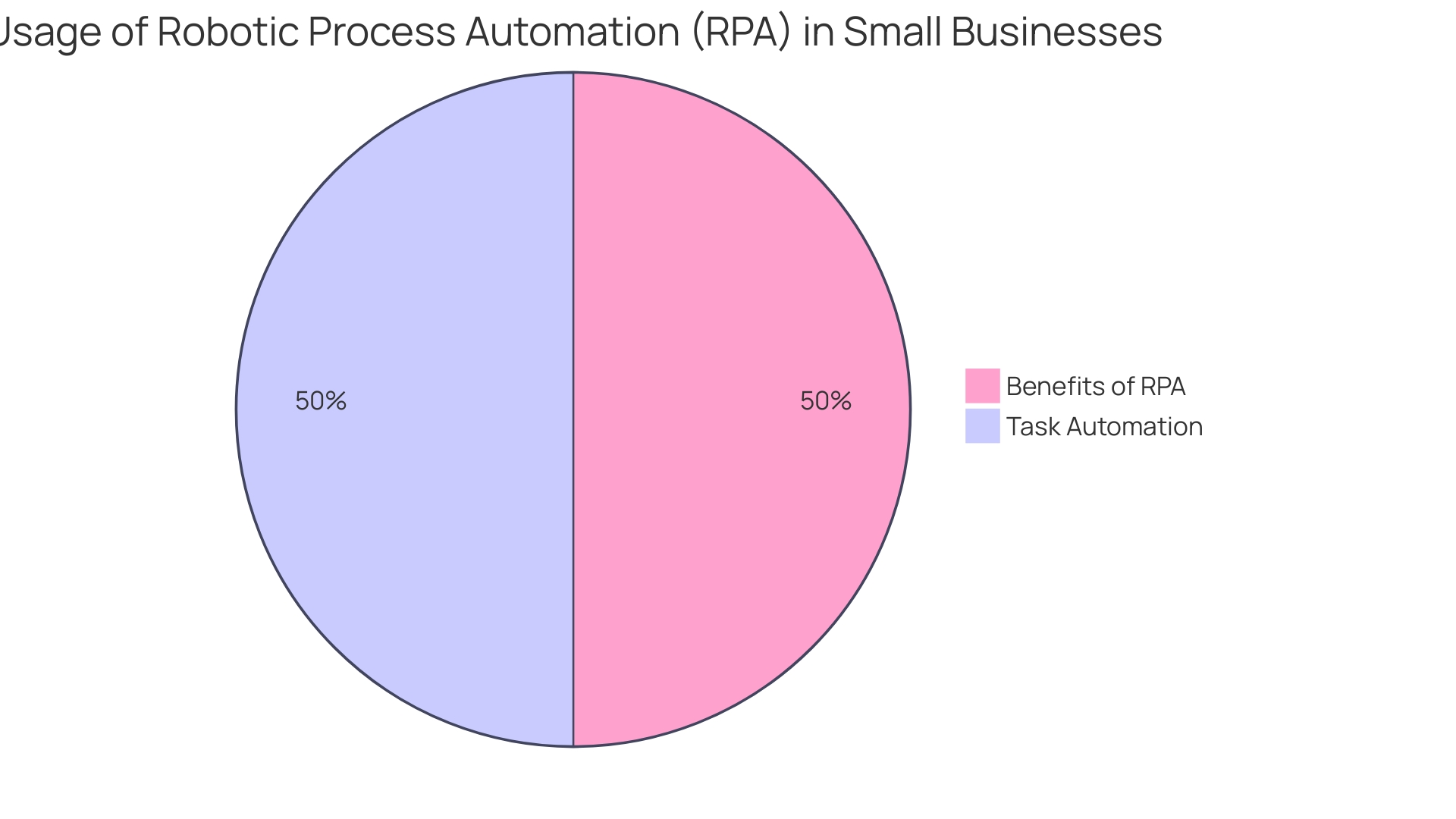
Cost Savings
Robotic Process Automation (RPA) serves as a transformative force in streamlining operations and elevating efficiency. RPA tools are adept at handling repetitive, rules-based tasks that once required manual effort, such as data entry and extraction, document processing, and routine customer inquiries. By deploying software bots to execute these tasks, enterprises like Millennium Recycling and St. James Winery have witnessed substantial improvements in productivity and a reduction in operational costs.
In fact, according to Allied Market Research, the burgeoning Robot Operating Systems Market is anticipated to soar from $534.2 million in 2022 to $1.8 billion by 2032, at a CAGR of 12.9%. This surge reflects the growing adoption of RPA and other technological advancements across various sectors, including the automotive industry, which now integrates between 1,000 to 3,500 semiconductor chips per vehicle to enhance reliability and safety.
Moreover, with the advent of RPA, companies gain the advantage of scaling their operations to match their growth trajectory. This is especially important for small enterprises that must uphold robust customer connections. RPA aids in this endeavor by accelerating response times and ensuring consistent and precise information delivery, fostering customer satisfaction and loyalty.
As RPA transforms the operational efficiency landscape, organizations are urged to carefully evaluate their procedures, identifying those ready for automation and the related time and cost consequences. This strategic approach paves the way to harnessing the full potential of RPA, culminating in both immediate and long-term rewards.

Improved Accuracy and Quality
Robotic Process Automation (RPA) is revolutionizing the way companies operate, ensuring precision and quality through its meticulous adherence to pre-set rules. This technological innovation is characterized by its ability to consistently perform tasks without deviations or errors. Companies like GrayMatter Robotics are at the forefront of integrating AI with robotics to elevate productivity and quality of life. For example, in manufacturing, the application of such advanced robotics has enabled businesses to achieve a higher standard of product finish, exemplifying the impact of RPA on process improvement.
In a rapidly changing market, Spanish firms have adopted mobile and social robot manufacturing, with a 45% increase in new companies specializing in technology for logistics, as reported in 2022. This reflects a broader trend of RPA adoption across industries. Moreover, with 65% of Spain’s robotics providers being integrators, there is a clear emphasis on customization and tailored automation solutions. This growth is not limited to the automotive sector, which currently utilizes half of Spain’s robots, indicating a vast potential for RPA to revolutionize other industries as well.
RPA’s influence on customer satisfaction cannot be overstated. For small enterprises, the accelerated response times and consistent accuracy offered by bots can greatly improve customer experiences, nurturing loyalty and satisfaction. As businesses scale, RPA becomes an invaluable tool for managing the increasing demands without sacrificing quality. By beginning with the mechanization of less intricate tasks and progressively expanding, companies can efficiently observe and record results, establishing a basis for more ambitious mechanization projects. Intelligent mechanization, via a combination of RPA and AI, is set to be a transformative force in the journey towards digital transformation, leading to more informed decisions and improved operational efficiency.
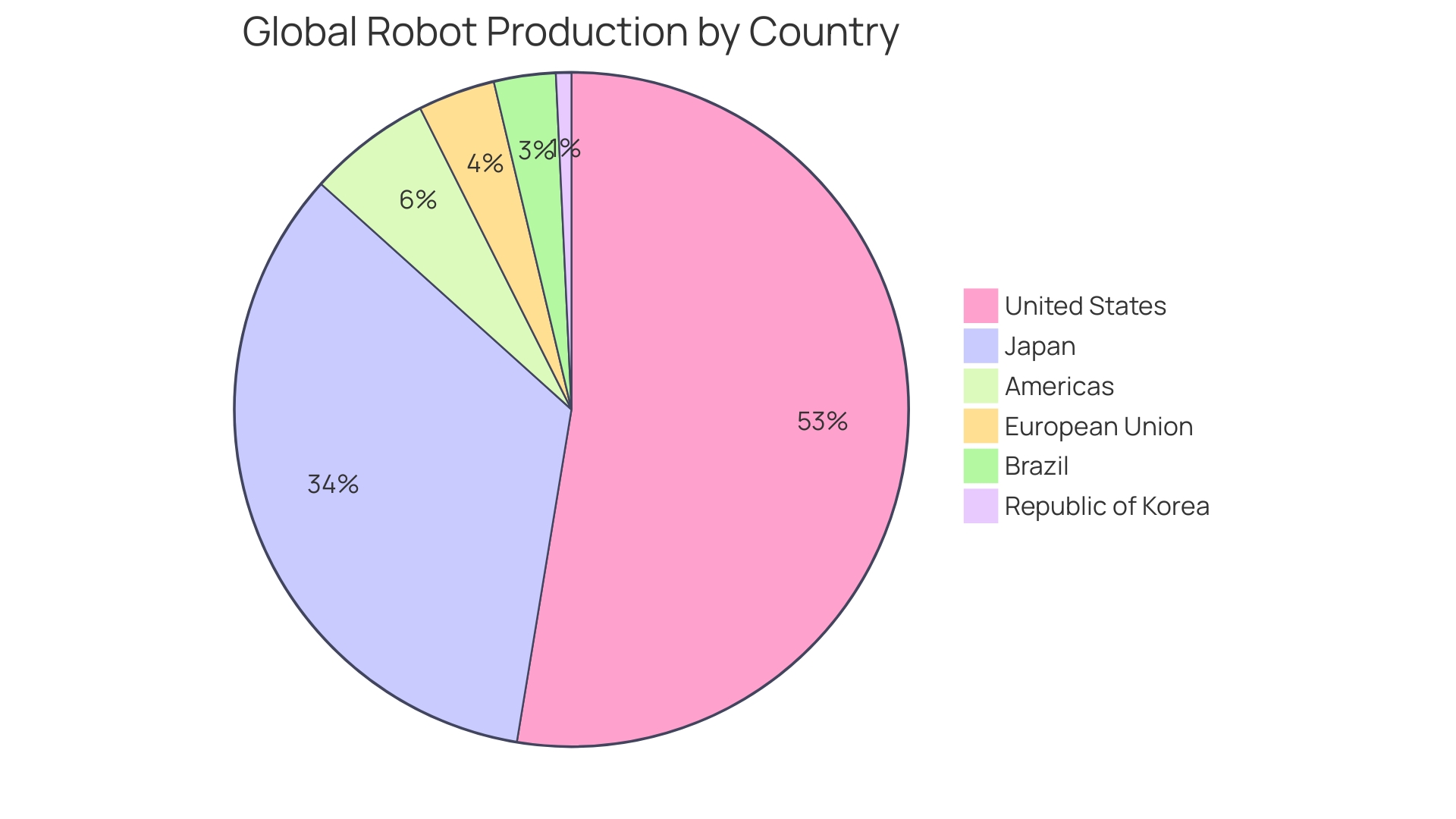
Enhanced Scalability
RPA technology stands as a pivotal tool for organizations aiming to thrive in a dynamic market by enhancing their scalability without incurring prohibitive costs. By implementing robotic tasks mechanization (RPA), companies can assign bots to handle spikes in work volume, thereby allowing businesses not only to grow but also to quickly adapt to changing market conditions. For example, Louvre Hotels Group, a significant player in the hospitality sector, utilized RobosizeME’s advanced technology to overhaul its rate code maintenance. The outcome? A remarkable monthly saving of 188 hours on rate code headers and 386 hours on rate code details, showcasing the profound impact of RPA on operational efficiency.
As we step into a future where technology trends are incessantly evolving, we observe an upsurge in the robot operating systems market, projected to reach $1.8 billion by 2032, growing at a CAGR of 12.9%. This growth not only underscores the escalating adoption of RPA across industries but also reflects the essential role it plays in sectors like automotive manufacturing, where semiconductors and robots are integral to producing more reliable and safe vehicles.
To guarantee a prosperous RPA implementation, it is crucial for decision-makers to carefully assess which manual processes are ready for mechanization and identify inefficiencies that RPA can resolve. Additionally, understanding the integration costs and potential ROI is crucial. By doing so, businesses can make strategic moves towards modernization, seizing opportunities for customer satisfaction improvements—as RPA expedites response times and ensures the accuracy of information—thus fostering customer loyalty.
To align with this, it is advisable to take a practical approach to the process of streamlining tasks, such as developing a comprehensive collection of tools for intelligent streamlining (IS) and commencing the streamlining process with less intricate tasks, gradually advancing to more complex workflows. Monitoring outcomes and documenting the lessons learned are essential for continuous improvement and future project scalability. Furthermore, the fusion of RPA and AI is recognized as a transformative force, empowering companies to refine processes and make more data-driven decisions.
The core of the upcoming work environment is not the exclusive dependence on mechanization but instead the harmonious coexistence of human and digital workforce. As one industry expert puts it, achieving a balanced partnership between automation and human ingenuity unlocks the workforce’s full potential, blending creativity, critical thinking, and emotional intelligence. In this situation, hyperautomation arises as a strategic requirement, urging organizations to consistently improve their procedures and embrace the future of work empowered by AI.
Observability in robotics, too, has become a vital concern. The shift from prototype robots to profitable fleets necessitates the integration of observability at each development stage, allowing for an in-depth understanding of robotic functions at scale.
In summary, RPA’s potential to revolutionize business operations is evident, with success stories and market growth projections attesting to its value. Leaders who are keen on leveraging RPA should do so with a clear strategy, informed decisions, and an eye on continuous enhancement, paving the way for a harmonious digital transformation.
Accelerated Process Execution
Robotic Process Automation (RPA) significantly improves execution by reducing bottlenecks and shortening cycle times. Unlike their human counterparts, bots are capable of executing tasks at a significantly swifter pace, contributing to a marked improvement in process efficiency. This leap in performance is evident in scenarios like Millennium Recycling’s adaptation of advanced technologies, which bolstered their operational efficiency, and Lindy’s deployment of AI assistants capable of integrating with a wide array of apps and services to proficiently handle diverse tasks.
Aligning with the insights shared in the 2023 Technology Trends eBook, RPA stands as a pivotal tool for small enterprises, fostering strong customer relations through rapid response times and consistent, accurate service delivery. Adopting mechanization can also aid enterprises in expanding operations seamlessly. As delineated by experts, RPA is adept at automating routine and manual tasks, adhering to predefined rules to execute these functions. Before adopting mechanization, companies should consider which manual operations are ready for mechanization, the inefficiencies that RPA can tackle, and the investment needed in terms of time and cost for integrating RPA solutions.
However, the journey towards automation is not without its challenges. For instance, a semiconductor foundry aiming to enhance R&D encountered hurdles like stakeholder resistance and inadequate change management. Yet, by pinpointing and targeting quantifiable goals and leveraging suitable tools, the foundry was able to standardize best practices and enhance project and technology management, thereby accelerating market readiness and reducing development costs. Such strategic implementation of RPA, focusing on high-value opportunities, can unlock considerable benefits and improvements for businesses venturing into digital transformation.
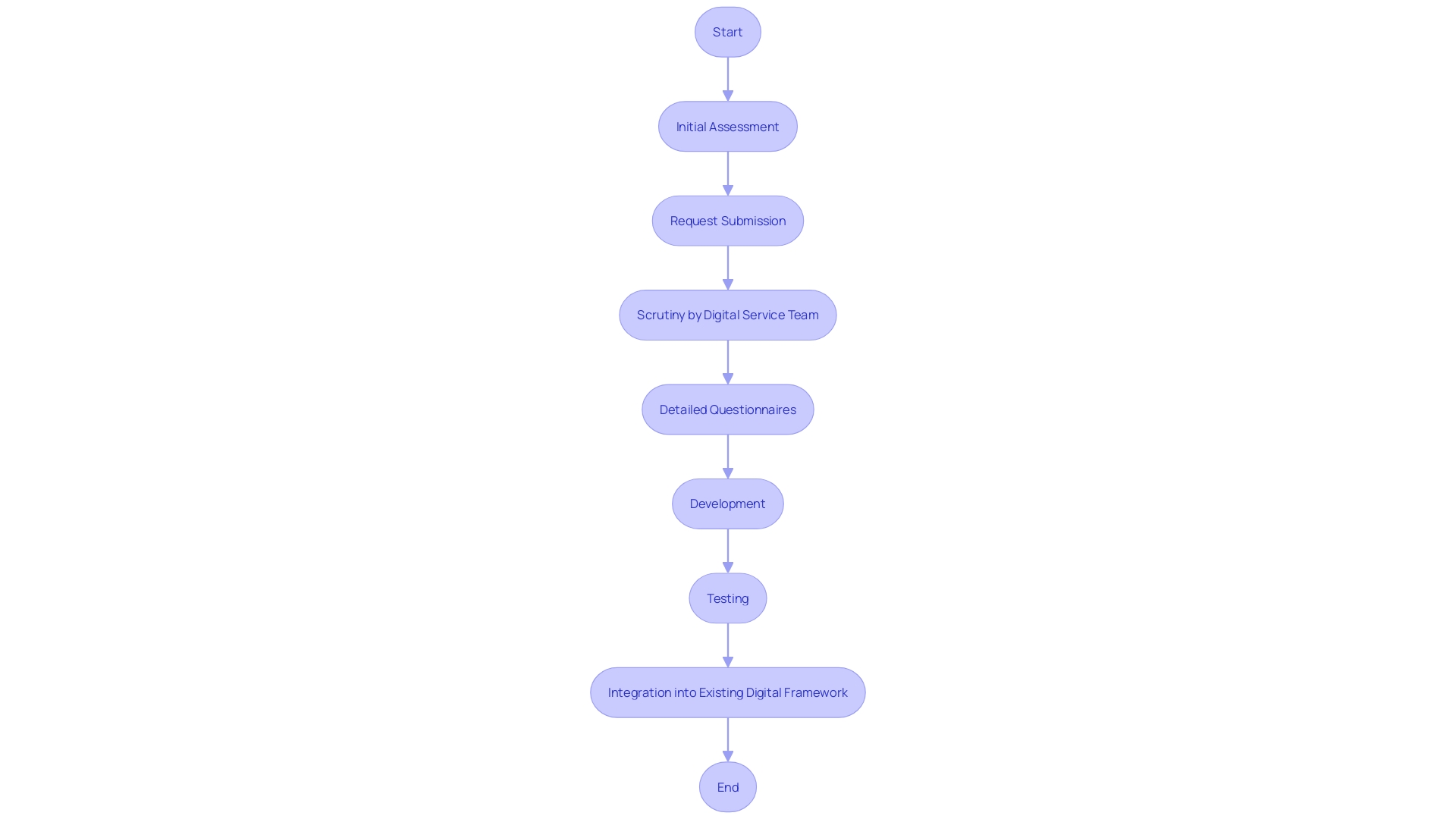
How to Get Started with RPA Robotics
Venturing into the realm of Robotic Process Automation (RPA) can revolutionize operational efficiency in any organization. The journey begins with a deep understanding of the process you wish to automate, identifying repetitive, rule-based tasks that a software ‘robot’ can handle with precision.
The foundation of a successful RPA initiative is selecting the right partner and solution. Take inspiration from industry leaders like Millennium Recycling, which has evolved into a pinnacle of operational efficiency through embracing advanced technologies. Similarly, GrayMatter Robotics exemplifies innovation by enhancing productivity with AI-driven robotics solutions.
When it comes to RPA applications, the Consumer Electronics Show (CES) showcases the latest breakthroughs, as experienced by Mike Oitzman. Boston Dynamics, for instance, continually pushes the envelope with robots like Atlas, which can perform tasks in complex environments.
The UiPath Citizen Developer Foundation offers a comprehensive learning plan for those looking to upskill in RPA. With 8 courses, including hands-on practices, it’s designed to introduce you to the process of creating automated processes across various industries.
For organizations considering Autonomous Mobile Robots (AMRs), it’s crucial to understand the shift from traditional capital equipment sales to a subscription-based model. This approach offers an informed pathway to choose the appropriate technological solutions without the responsibility of ownership and upkeep.
Automation, while enhancing efficiency and productivity, still requires an element of human collaboration for management and upgrades. The insights from the CTO of Reveille Software underscore the importance of human-AI partnership for stable operations.
From a systems perspective, building a robot is an interdisciplinary challenge that encompasses mechanical, electrical, and software engineering, to name a few. A keen understanding of the physics involved and the ability to simulate and test are key to developing efficient robotic systems.
In the ever-expanding Service Robotics market, both commercial and consumer sectors are experiencing significant growth. A robot’s autonomy and programmability are essential characteristics that drive its capability to perform a variety of tasks, from agriculture to logistics to medicine.
Finally, the incorporation of AI into RPA is gaining approval, as disclosed in a worldwide survey of professionals in the field of automated processes. Insights into the experiences and transitions of those in mechanization roles offer valuable information for hiring managers and CoE leaders looking to navigate the future of work.
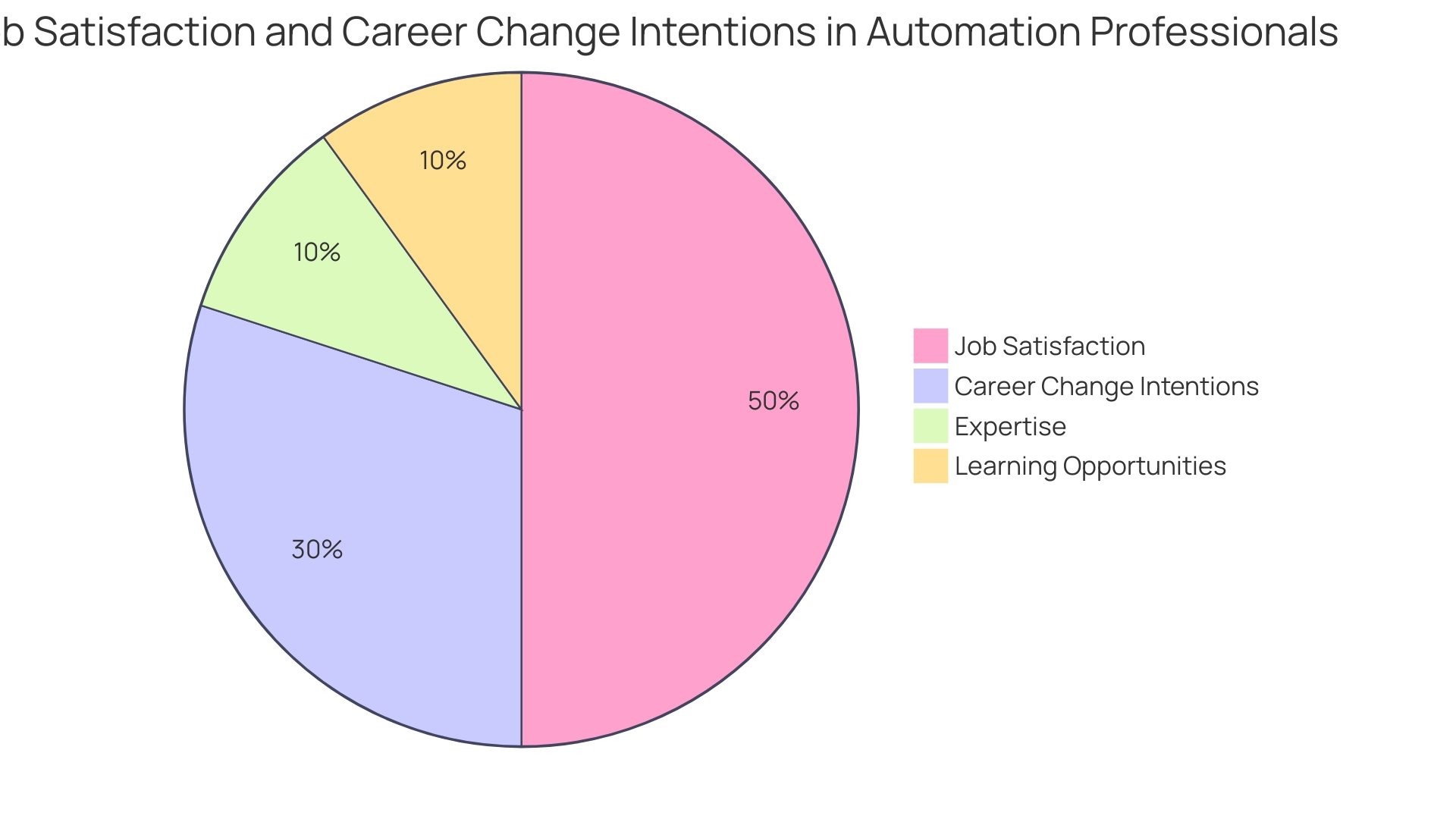
Identify Suitable Processes
To fully harness the potential of Robotic Process Automation (RPA), it is vital to identify the suitable tasks for implementation. Look for tasks that are repetitive, rule-based, and involve high transaction volumes. Such processes are ripe for RPA, which can execute them with precision and efficiency.
GrayMatter Robotics exemplifies this approach by integrating AI with robotics to enhance human productivity and elevate the manufacturing industry’s quality of life. Their revolutionary work in the field highlights the importance of choosing appropriate tasks for mechanization. Similarly, RPA can significantly benefit small businesses by accelerating response times and ensuring consistent, accurate information delivery, bolstering customer satisfaction and loyalty.
As Reveille Software’s CTO and Co-Founder emphasizes, the act of automating tasks is not a set-it-and-forget-it solution. It requires continuous monitoring, management, and improvements. This historical viewpoint on mechanization shows that AI, while improving efficiency and productivity, still requires human oversight for optimal stability.
For companies embarking on digital transformation journeys, starting with manageable tasks and gradually advancing to more complex workflows can be a strategic move. A well-curated library of tools and regular documentation of outcomes are vital practices that pave the way for informed decisions and strategic planning.
Furthermore, a worldwide survey by UiPath, carried out between March and May 2023 with 1,639 professionals and students in the field of automated processes, emphasizes the changing encounters and beliefs regarding the use of automated systems in the work environment. This data emphasizes the significance of comprehending the subtleties of RPA integration and its effect on operational procedures.
In conclusion, RPA is a powerful tool for enhancing operational efficiency. By strategically selecting processes for automation and maintaining a partnership between enterprises and technology, companies can optimize productivity and foster long-term growth.
Evaluate RPA Tools and Platforms
Choosing the appropriate Robotic Process Automation (RPA) tools and platforms is a crucial stage for enterprises aiming to optimize their operations. An essential consideration is the ease of use, which ensures that the workforce can adopt the technology with minimal disruptions. Scalability is another crucial element, as it determines whether the RPA solution can expand alongside the organization, accommodating increased workloads without performance loss.
Integration capabilities are vital to ensure the RPA software works seamlessly with existing systems and applications. This reduces the complexity and potential costs associated with integrating new technology into current infrastructures. Vendor support is also crucial, as it provides businesses with the assistance needed to troubleshoot issues, access updates, and navigate the evolving landscape of technology.
Case studies, like that of Lindy, an AI assistant platform, highlight the importance of comprehensive integration capabilities. Lindy’s challenge of developing a vast network of app integrations underlines the significance of choosing RPA platforms that can easily connect with a wide range of services and applications, thereby shortening development time and accelerating market entry.
Recent developments in AI usage across industries, as seen in UK public transport and the TSA’s facial recognition program, underscore the importance of ethical considerations and privacy rights when implementing new technologies. Businesses must carefully evaluate RPA tools to ensure they comply with regulations and ethical standards, particularly when handling sensitive data.
Data shows a increasing pattern among professionals and students in incorporating AI into their working activities. Based on a worldwide study carried out by UiPath, involving 1,639 respondents, findings on AI expose its potential influence on operational efficiency and the simplicity of shifting to automated positions.
In summary, when assessing various RPA tools and platforms, organizations should prioritize ease of use, scalability, integration capabilities, and vendor support, while also taking into account ethical considerations and the ability to meet future technological demands. This strategy guarantees a strategic investment in mechanization that aligns with both present operational requirements and long-term objectives.

Design RPA Solution
Creating a thorough RPA solution demands a careful method where both business and IT teams collaborate to build a seamless strategy. This necessitates a comprehensive analysis of the flow of operations to identify potential opportunities for robotic process streamlining, followed by establishing the guidelines and logic that the RPA bots will adhere to.
For instance, consider the approach taken by a healthcare trust to enhance their digital services. When a department seeks to implement new digital technology, a request form is initiated and reviewed by the Digital Service Team. They conduct an initial assessment to ensure that the requested technology is secure, appropriate, and in compliance with existing standards. This procedure also involves confirming whether the trust already has comparable technology or functionality, thus preventing duplication and guaranteeing efficient utilization of resources.
Similarly, Rivian, an electric vehicle company, has set ambitious environmental targets, including achieving net zero emissions by 2040. To support this objective, Rivian aims to enhance its worldwide operations, which entails identifying processes that can be accelerated and made more sustainable. This could include streamlining their supply chain, minimizing waste, or improving manufacturing workflows with RPA solutions.
Furthermore, the recent introduction of checkout-free stores, such as the one in Dublin Airport, showcases the game-changing potential of technology in retail. By incorporating cutting-edge technologies such as camera systems and weight-sensored shelving, customers undergo a seamless shopping experience, emphasizing the significant advantages that advanced processes can offer to different sectors.
Prior to starting the RPA adventure, leaders need to tackle important inquiries like which manual tasks are ready for automation and where inefficiencies exist that can be resolved through RPA. The integration of RPA must be justified by a clear understanding of the time and cost savings it will bring to each identified process.
With the global economy transitioning towards a digital-centric approach, companies are increasingly acknowledging the vital role of big data and analytics in decision-making. The rise of big data analytics as a revolutionary technology highlights the necessity for enterprises to adjust and incorporate these tools to maintain expansion and stay competitive in an unpredictable market.
In this transformative era, the collaboration between design and engineering is paramount. As quoted, ‘Creating digital experiences that make sense for humans depends heavily on the work of both designers and engineers.’ The synergy between these fields is a driving force behind the successful deployment of RPA solutions that are user-friendly and efficient.
The impact of investing in intelligent automation is evident, with studies demonstrating significant revenue growth and compound annual growth rates for enterprises that have utilized these technologies. These findings underscore the potential of RPA to contribute to the overall net present value (NPV) and long-term business success.
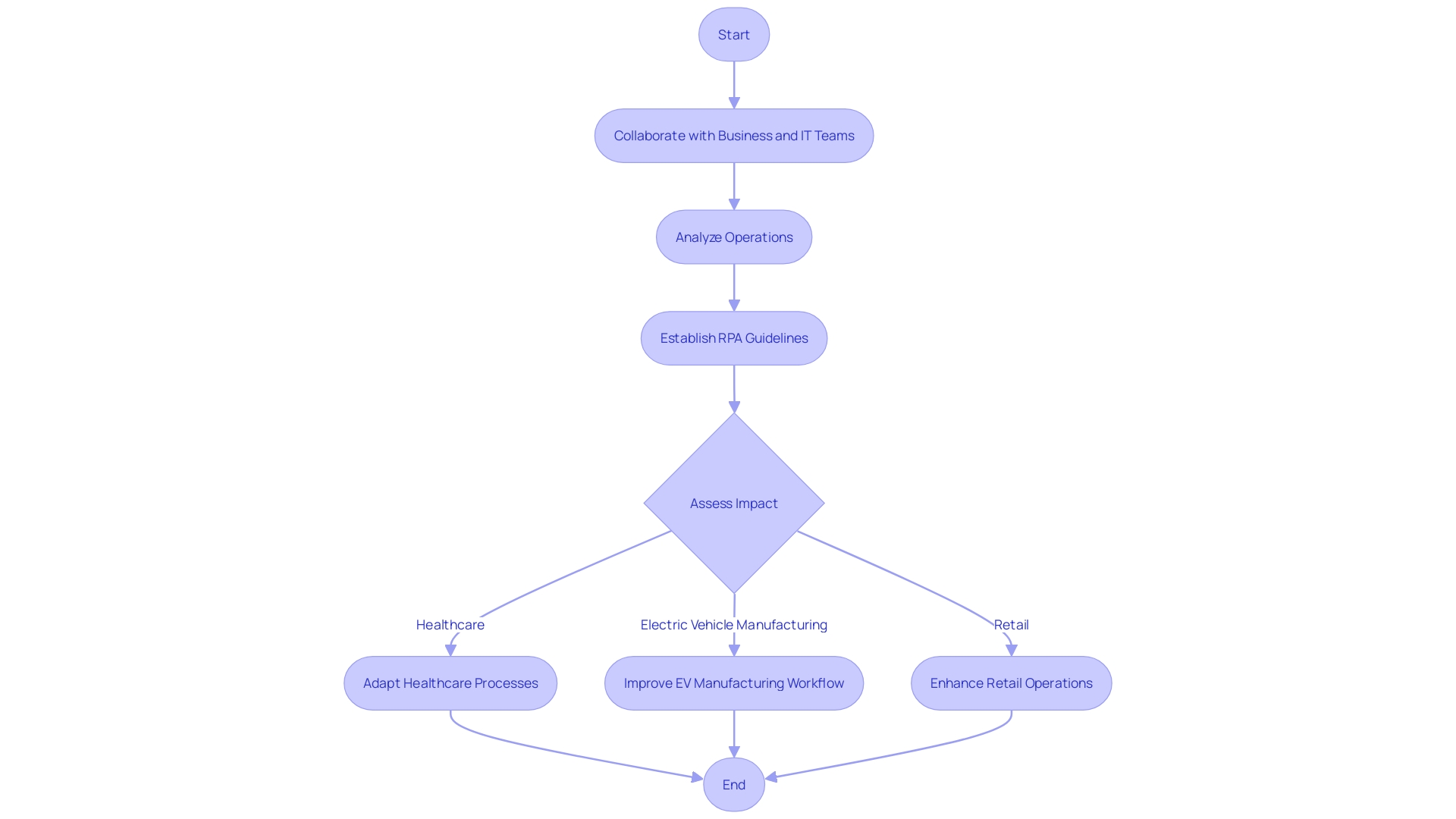
Develop and Test Bots
When it comes to developing and fine-tuning the sophisticated bots that are essential in today’s digital landscape, it’s a multifaceted endeavor that goes beyond mere configuration. It’s akin to the procedure that a Digital Service Team within a healthcare setting would employ when introducing new technology: rigorous assessment to ensure security, appropriateness, and compliance. Just as they would meticulously evaluate a technology request via questionnaires to determine if a similar solution already exists or if it aligns with the organization’s needs, developing bots also involves a detailed and exacting testing phase.
Acceptance testing, a critical step in the bot development lifecycle, mirrors this thoroughness. It’s where bots are scrutinized to confirm they meet predefined requirements and perform reliably in real-world scenarios. This phase, imperative especially in sensitive industries like healthcare and finance, is the safeguard against legal and compliance pitfalls.
Moreover, the bots undergo a self-calibration routine, as exemplified by Tesla’s Optimus robot, enabling them to adapt to new environments and interact with precision. The integration of vision and joint position sensors allows these bots to perform tasks with human-like dexterity, showcased by Optimus’ ability to sort objects even amidst environmental changes.
The procedure is backed by a organized approach, starting from defining the scope and choosing the appropriate tools to setting up the environment and preparing test data, guaranteeing that the bots are not only functional but also efficient and effective. Given the constantly changing AI landscape, as emphasized by the UiPath Community’s yearly report, it’s evident that professionals in this domain consistently adjust to incorporate and leverage new advancements like generative AI and large learning models.
In essence, the journey from bot conception to deployment is a meticulous blend of planning, preparation, and rigorous testing that ensures these digital workers are ready to perform their tasks reliably and in compliance with all necessary standards.
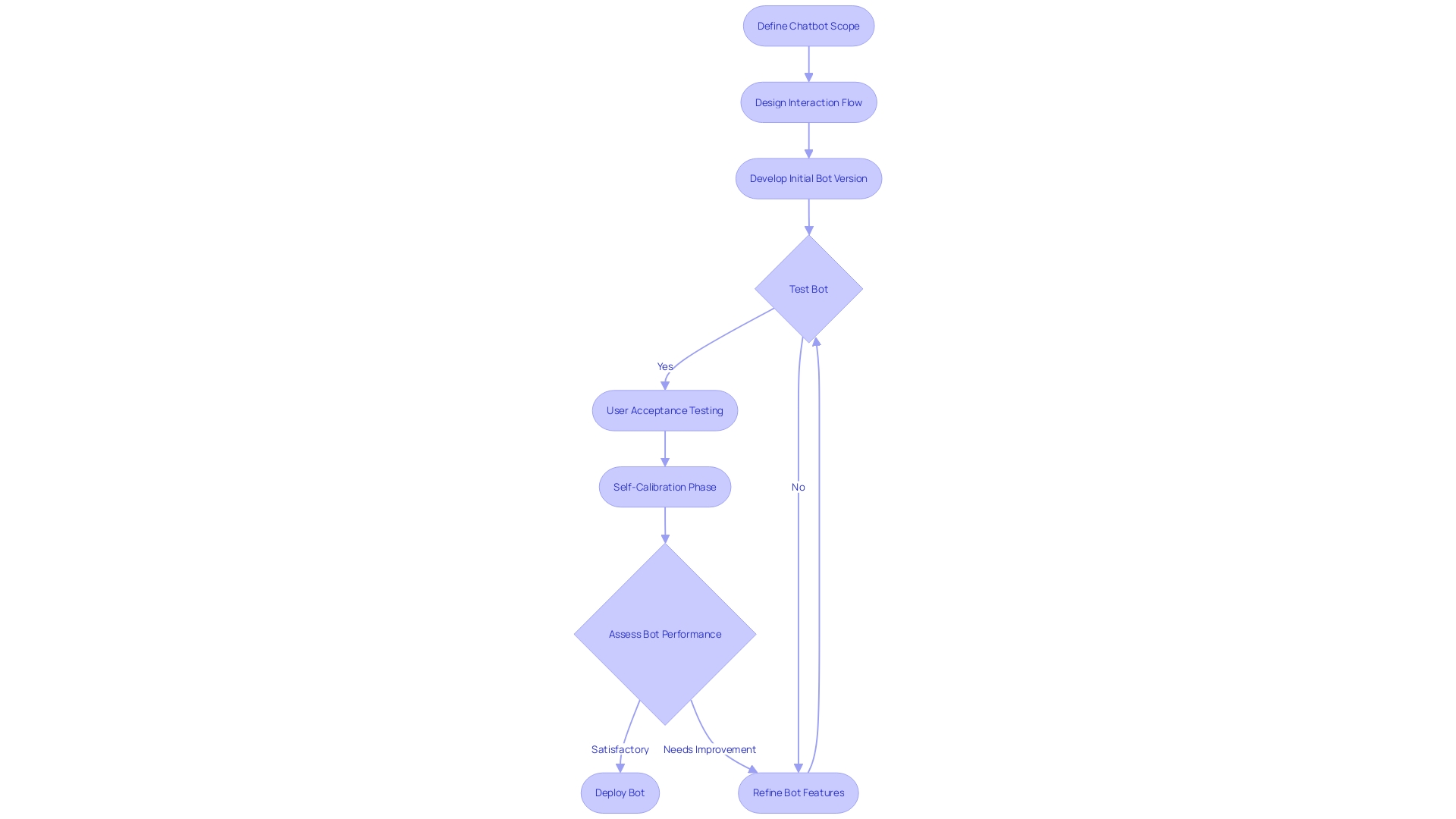
Deploy and Monitor Bots
Incorporating robotic task mechanization (RTM) into day-to-day tasks necessitates more than simply configuring it and withdrawing. It’s a continuous cycle of evaluation and refinement. Consider, as an instance, the careful digital-assurance used by healthcare trusts to assess new technologies. Before deployment, a comprehensive initial assessment is conducted to ensure the technology’s security and appropriateness, followed by detailed questionnaires to understand the requester’s needs and justification for the technology. Similarly, RPA bots must be deployed thoughtfully, with a keen eye on their performance to identify any operational issues promptly. By consistently analyzing bot activities and making necessary adjustments, companies can uphold the high standards of efficiency and productivity anticipated from such advanced mechanization solutions. This approach aligns with industry best practices, where software life cycles are adapted to the unique nature of AI and RPA, ensuring that these systems remain functional, reliable, and secure over time.

Key Components of RPA Robotics
Robotic Process Automation (RPA) is an amalgamation of advanced elements, each vital for streamlining and automating complex business processes. At the core of RPA’s transformative power lies its ability to integrate with various systems and manage tasks that traditionally required manual input.
Particularly noteworthy is the emerging trend of Autonomous Mobile Robots (AMR) in the marketplace. These robots are transforming industries by providing adaptable and expandable solutions for operational challenges. A study by Interact Analysis from their 2024 Mobile Robots Buyer Survey highlights the growing acceptance of mobile technology. The survey, which gathered insights from 300 buyers across different sectors, revealed a growing preference for mobile robots due to their versatility and efficiency.
Companies like GrayMatter Robotics are leading the charge in enhancing human productivity with AI-driven robotics. This approach is reshaping manufacturing, ensuring that products meet the desired quality standards through advanced robotic solutions. The success of such technologies is evident in the projected growth of the robotics market, with Allied Market Research forecasting a significant rise to $1.8 billion by 2032 at a CAGR of 12.9%.
The incorporation of semiconductors in the automotive sector illustrates the need for accurate and dependable mechanization. Modern vehicles may contain anywhere from 1,000 to 3,500 semiconductor chips, indicating the extent of technology’s reach into our daily lives. Furthermore, the adoption of mobile robots for inventory control by hardware retailers showcases the practical applications of RPA across various sectors.
The future of RPA is not just about the technology itself but also how it’s delivered to organizations. The idea of Robotics as a Service (RaaS) is transforming the conventional capital equipment sales model, offering a subscription-based pricing and service delivery that has the potential to revolutionize the way enterprises approach mechanization investments.
As the field of corporate mechanization advances, the significance of strategic alliances with visionary technology providers becomes more evident. These partnerships are essential for navigating the rapid evolution of the tech industry and for ensuring that companies remain at the forefront of innovation and efficiency.
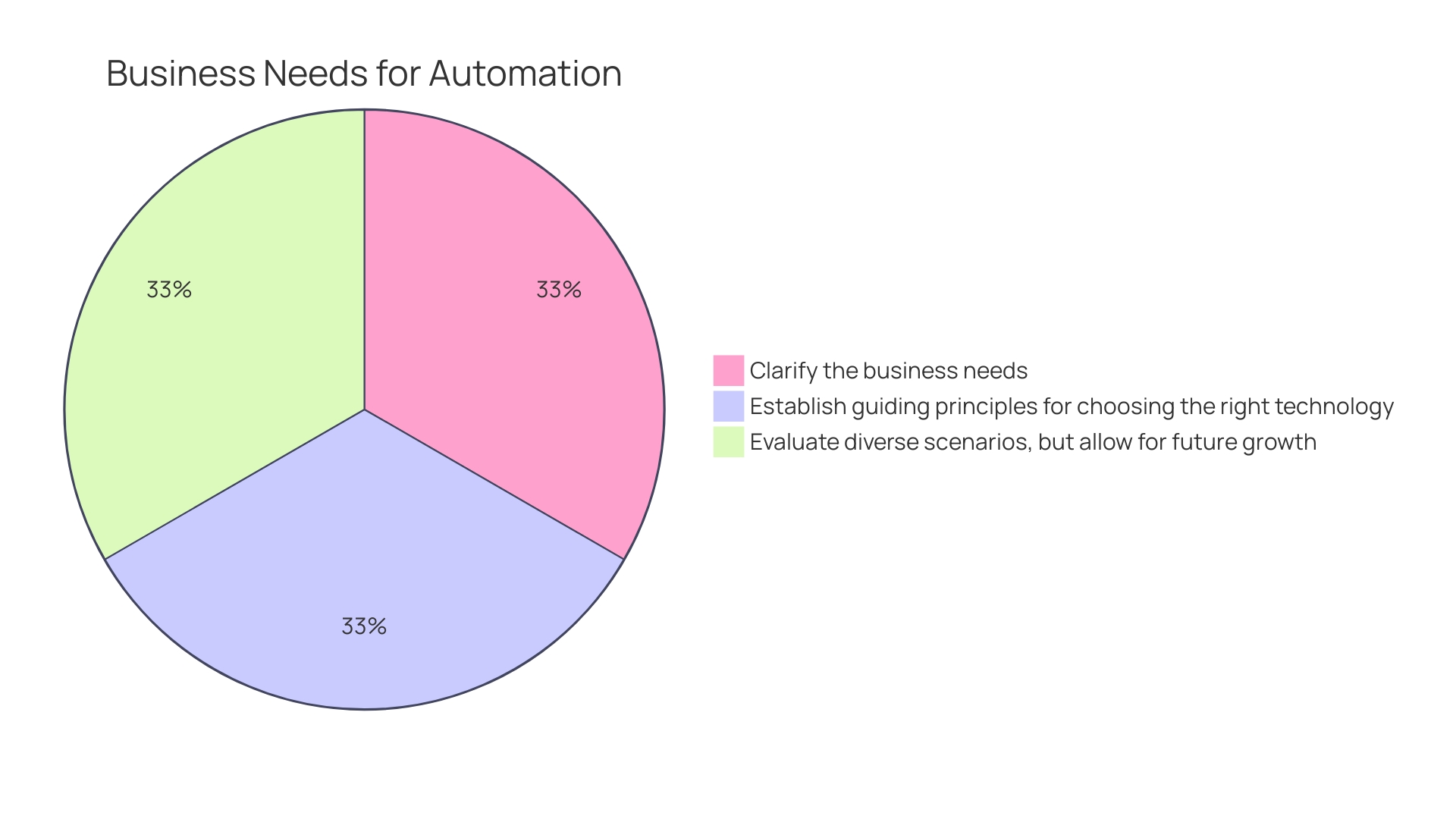
Bot Development Studio
The modern Bot Development Studio goes beyond a simple environment for creating bots; it’s a crucible of innovation where developers bring bots to life, imbuing them with advanced capabilities such as generative AI. These studios equip developers with a comprehensive suite of tools that enable the crafting of sophisticated automation workflows, the articulation of intricate business rules, and seamless integration with a plethora of systems. The advent of AI-powered features within these studios has been pivotal in enhancing the functionality and intelligence of bots, propelling them to new heights of efficiency and relevance across a diverse range of industries including messengers, commerce, education, and healthcare. The intuitive interface of these studios allows for the creation of bots that are not only adept at responding to user queries and executing tasks but are also capable of understanding and interacting in multiple languages, thereby bridging communication gaps and fostering inclusivity. These advancements have been demonstrated through real-world applications, such as a chat application showcased in November 2023 that leveraged the latest AI technology to deliver a transformative user experience. The fundamental strength of these studios is their capacity to democratize the development procedure, making bot creation accessible to those with different levels of technical expertise. This democratization is critical in a rapidly evolving digital landscape where timely adaptation and integration of cutting-edge technologies are imperative for staying competitive and meeting the ever-growing demands of users.
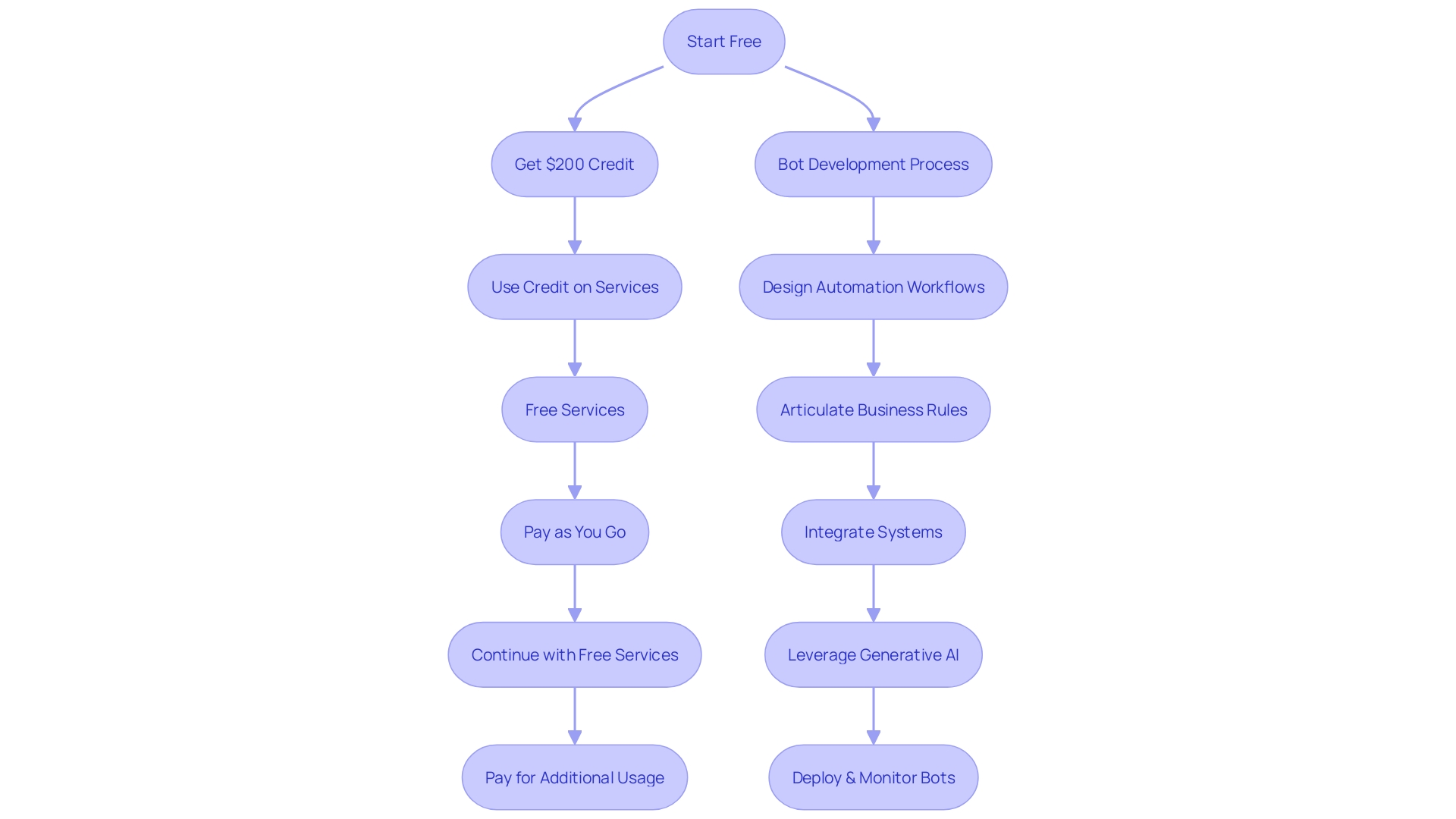
Control Room
The Control Room in Robotic Process Automation (RPA) serves as the command center for managing the fleet of bots at your disposal. It’s designed to offer a comprehensive overview of bot activities, akin to a flight control dashboard that keeps track of all the airborne planes. With the ability to monitor bot performance in real-time, the Control Room facilitates the scheduling of tasks, ensuring high-priority jobs are completed promptly while dynamically reassigning resources to maintain optimal workflow.
To demonstrate the capabilities of the Control Room, consider how a wall time analysis can offer insights into efficiencies by examining stack traces from running operations. This level of scrutiny enables the detection of bottlenecks and inefficiencies, much like how Discord, a widely-used communication platform, manages its massive user traffic. By analyzing and understanding system performance, opportunities for enhancement in both throughput and responsiveness become evident.
The mobile robotics industry, booming with a valuation of approximately $20.3 billion, expects a doubling by 2028. Companies like igus are democratizing access to mobile robotics by offering affordable plastic robots. This underscores the importance of cost-effective solutions in operational technology, similar to how the Control Room enables more efficient bot management without incurring exorbitant costs.
Moreover, the Control Room aligns with the philosophy that automation, while a path to improved efficiency and productivity, is not a set-and-forget solution. It requires continuous monitoring, management, and upgrades, as noted by the CTO and Co-Founder of Reveille Software. These improvements and administrative approaches are crucial to guarantee the stability of automated operations, including those driven by AI.
Finally, the integration of RPA into business processes has been shown to significantly increase productivity. Findings from Microsoft’s “AI and Productivity” initiative reveal that tools like Copilot, powered by Large Language Models (LLMs), not only accelerate task completion but also maintain quality. This is a testament to the value offered by mechanization tools, further emphasizing the role of the Control Room in overseeing and enhancing the performance of RPA bots.

Bot Orchestrator
In the dynamic realm of artificial intelligence, the Bot Orchestrator emerges as a pivotal figure, akin to a conductor in an orchestra, ensuring each bot performs its part in harmony with the larger automation symphony. Tasked with the crucial responsibility of managing the bot workforce, the Orchestrator delegates assignments, keeps a vigilant eye on operational flow, and upholds the seamless execution of automated processes.
This role is exemplified by the innovative practices in companies like Specsavers, where the orchestration of AI extends to enhancing customer experiences and addressing the unique challenges of the optometry industry. Similarly, Lindy’s AI assistant showcases the breadth of tasks that can be automated, from medical scribing to executive assistance, all relying on the effective coordination of a vast network of applications and services.
As AI continues to revolutionize industries, the significance of the Bot Orchestrator cannot be overstated. According to recent insights, orchestration is deemed an indispensable tool for the deployment of AI applications, serving as the bridge between a concept’s inception and its consistent, real-world functionality. It’s the Bot Orchestrator’s domain to guide ideas through the metaphorical gates of ‘Once’—a single successful prototype demonstration—and ‘Mostly’—the consistent performance necessary for launch readiness.
Statistics underscore the importance of dynamic adaptation in AI systems, much like the ELO rating in chess, which evolves with each game to reflect a player’s current performance. In this context, the Bot Orchestrator ensures that the automated systems are not only functioning but also continuously improving.
The rapid growth of AI applications and their real-world evaluations, as seen in the Chatbot Arena, further reinforces the need for Bot Orchestrators. With over 45 models deployed and more than 130,000 user votes collected, the role of orchestrating these entities to cater to a myriad of use cases becomes increasingly complex and vital.
In this ever-evolving technological landscape, the Bot Orchestrator stands as a cornerstone, ensuring that AI systems are not only effective and ethical but also finely tuned to the changing rhythms of industry demands and user preferences.

RPA Tools and Platforms
With a myriad of Robotic Process Automation (RPA) tools available, selecting the right platform can be a strategic decision for any business. Power Automate and UiPath are prominent in the market, with a collective dominance of approximately 70% in the global sphere of automated processes. Power Automate provides ready-made templates for common situations, streamlining the process of carrying out repetitive tasks. Meanwhile, UiPath is celebrated for its extensive user base, boasting 2260 reviews with an average rating of 4.5, highlighting its widespread approval and effectiveness.
The significance of RPA goes beyond mere task performance; it serves as a transformative force in operational efficiency. A global survey of 1,639 professionals specializing in mechanization conducted between March and May 2023 sheds light on the current trends and acceptance of RPA. The findings emphasize the smooth transition automation professionals experience in the workplace and the growing interest in integrating AI into their roles.
Furthermore, while enterprises navigate the complex terrain of RPA, the implementation procedure reflects the methodical approach observed in the healthcare sector. For instance, the NHS employs a thorough digital assurance process for new technology adoption, ensuring security and compliance. This methodical approach to embracing digital solutions is reflective of the careful consideration businesses must undertake when integrating RPA platforms into their operations.
In the realm of public services and defense, AI and mechanization are progressively shaping strategies. For example, trials in the UK’s public transport system indicate that AI can enhance safety and efficiency. However, ethical concerns, particularly regarding privacy, cannot be ignored. These examples serve as a reminder that while mechanization is a powerful tool for innovation, it requires a balance between technological advancement and ethical considerations.
The process towards mechanization is not a solitary one. As mentioned by the CTO and Co-Founder of Reveille Software, the evolution of mechanization has progressed throughout history, from the water wheel to AI, and it still necessitates human supervision. In this changing time, collaborations with technologically innovative organizations, like Coding Crafts, can offer a complete range of services, including blockchain development, adding an extra level of security to digital procedures.
For businesses looking to utilize RPA, the incorporation of such technologies is not only about efficiency but also about preparing for a future where mechanization and human expertise merge to form a more dynamic and productive work environment.
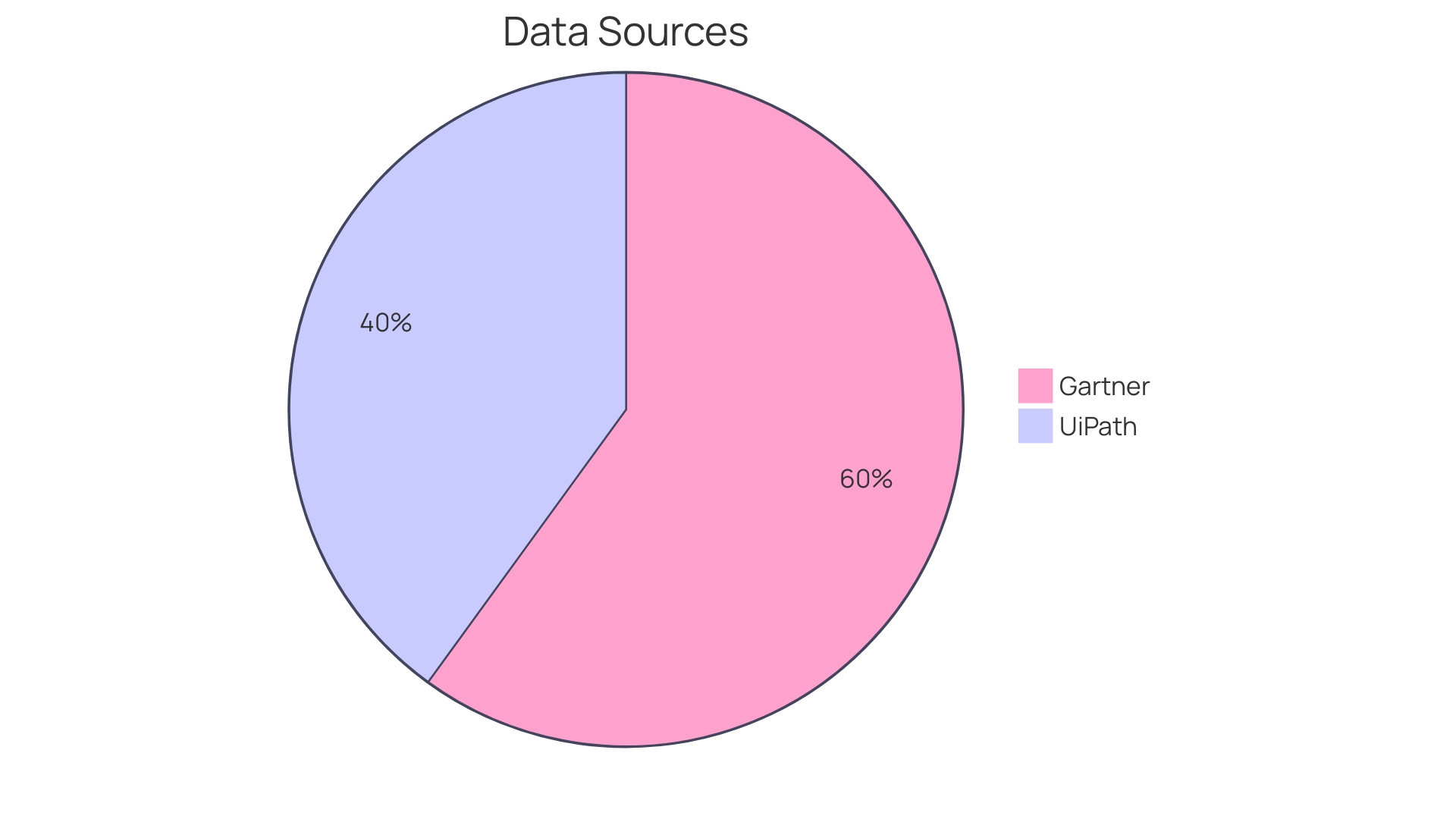
UiPath
UiPath stands at the forefront of Robotic Process Automation (RPA) technology, not only providing a robust platform for the design, deployment, and management of bots but also integrating artificial intelligence (AI) to enhance its capabilities. The platform is celebrated for its user-friendly drag-and-drop interface that simplifies the creation of automated workflows. It is particularly adept at executing repetitive tasks, such as data entry and report generation, liberating employees from monotonous work and allowing them to focus on more complex and creative tasks.
In the real world, companies like Hiscox, a specialist insurance firm, have harnessed UiPath to significantly decrease their email response times by 28%, directly impacting customer satisfaction and operational efficiency. This strategic move has enabled Hiscox to cope with rising demands without proportionally increasing operational expenses, a testimony to the platform’s promise of sustainable growth.
UiPath’s AI functions extend to communications mining, which can analyze both internal and external communications to automatically fill in data. This feature becomes an invaluable asset for companies aiming to streamline their processes and enhance the personalized touch in customer interactions.
Moreover, the platform’s growing popularity is reflected in the dramatic expansion of the RPA market, which was valued at $2.9 billion in 2023 and is expected to swell at an annual growth rate of 39.9% through 2030. UiPath, as a pioneering force in this industry, is poised for significant market gains if it maintains its growth trajectory alongside the industry’s overall expansion.
The platform is also a touchstone for professionals and students in the field, with a community of 1,639 members surveyed recently expressing their experiences and readiness to integrate AI into their roles. UiPath’s community initiatives, such as events and hackathons, are avenues for these professionals to engage with the technology, further solidifying the platform’s position as a cornerstone in the RPA landscape.
Automation Anywhere
As a leader in the RPA domain, Automation Anywhere stands out with its intuitive user interface and powerful automation tools. The platform is equipped with advanced features such as intelligent recorders, AI-powered bots, and a flexible architecture designed to scale with organizational requirements. It enables organizations to effectively automate complex workflows, which is pivotal in today’s fast-paced professional environment.
Workflow automation is a critical technology that organizations use to automate complex processes, which helps reduce manual efforts and minimize human errors. By utilizing software applications, algorithms, and predefined rules, Automation Anywhere aids in automating repetitive tasks, enhancing communication, and efficiently managing the workflow.
According to a report from Zapier, nearly all employees in small businesses engage with repetitive tasks such as sending notifications or managing permissions. Automation Anywhere’s technology can transform how these tasks are handled, thereby enhancing employees’ work experiences.
The importance of workflow streamlining is evident in the achievements of companies like Pegasystems, which has experienced significant revenue growth because of the growing need for contemporary software. This demand is driven by the need for more intricate process mechanization across various industries.
Moreover, recent global surveys, including one conducted by UiPath with 1,639 AI professionals and students, emphasize the increasing acceptance of AI and mechanization in the workplace. The findings underscore the importance of platforms like Automation Anywhere in supporting professionals during their mechanization journeys and the integration of artificial intelligence into their daily tasks.
Automation Anywhere not only simplifies the mechanization of routine tasks but also empowers organizations to harness the power of AI, making it a crucial tool for any business looking to stay competitive and agile in the evolving market landscape.
Blue Prism
Blue Prism is recognized for being a robust RPA tool, providing a variety of functionalities like a designer, control room, and a digital workforce manager. These features are designed to cater to complex, enterprise-level needs for advanced processes. Leveraging RPA, companies like Lindy can integrate a vast network of applications and services, empowering AI assistants to perform an extensive variety of tasks efficiently. This is particularly crucial when faced with the challenge of developing numerous integrations that could otherwise take a significant amount of time and delay market entry.
For instance, Delivery Hero utilized RPA to streamline the account recovery process, which was a recurring issue for its extensive workforce of over 53,000 employees globally. By automating the resolution of approximately 800 monthly account lockouts, which previously took an average of 35 minutes each, the company significantly reduced downtime and enhanced productivity.
Furthermore, Hiscox, a specialist insurance company, successfully employed technology to handle the high volume of client emails. By reducing the repetitive workload by 28% and decreasing response times, Hiscox improved customer satisfaction and operational efficiency, showcasing the transformative potential of RPA in service-oriented sectors.
These case studies illustrate the transformative impact of RPA platforms like Blue Prism, which enable businesses to streamline operations, foster innovation, and maintain competitiveness in a rapidly evolving digital landscape.
Implementation Stages of RPA Robotics
Embarking on the journey of implementing Robotic Process Automation (RPA) requires a strategic approach. It starts by conducting a comprehensive examination of current procedures to determine which ones are ready for mechanization. The key is to pinpoint the manual tasks that are repetitive and time-consuming, as these are prime candidates for RPA. Identifying the current inefficiencies will direct the choice of methods, guaranteeing that automation produces the most significant impact on productivity and cost savings.
Once the appropriate procedures are identified, the subsequent stage is to contemplate the integration of RPA software. This involves assessing the time and financial investment required to deploy the technology in relation to each process. It is essential to compute the potential return on investment (ROI), as this will aid in justifying the initiative for increased efficiency and setting practical expectations for stakeholders.
The ability of existing software systems to integrate with RPA is also a vital consideration. Any limitations must be addressed to ensure seamless operation post-implementation. The goal is to create a harmonious digital workforce where robots and existing systems work in concert to optimize operations.
The significance of RPA is underscored by the industry’s growth projections. A report by Allied Market Research anticipates the Robot Operating Systems Market to reach $1.8 billion by 2032, flourishing at a compound annual growth rate (CAGR) of 12.9% from 2023 to 2032. This growth is reflected in various sectors, including automotive manufacturing, where the use of semiconductors is indicative of the industry’s shift towards more efficient and technologically advanced vehicles.
In this competitive environment, being equipped with state-of-the-art technological solutions is no longer optional. As highlighted by industry leaders, the agility to adapt and the foresight to embrace emerging technologies like RPA and Intelligent Automation (IA) are crucial for staying ahead. The pursuit of innovation is driving companies to pursue collaborations with technology firms that provide a range of services, such as advanced mechanization and blockchain advancement, to improve security and transparency.
To navigate this future successfully, it’s essential to build a robust team with diverse expertise, from mechanical and electrical engineering to software development and supply chain management. A well-rounded team will tackle the complexities of robotics from a foundation of solid physics and simulations, leading to more efficient and cost-effective outcomes.
The implementation of RPA is a strategic move towards modernizing operations and achieving operational excellence. By meticulously choosing procedures for mechanization, computing the ROI, and guaranteeing smooth incorporation with current frameworks, establishments can utilize the potential of RPA to propel productivity, diminish costs, and uphold a competitive advantage in the constantly changing universe of business mechanization.

Assessment and Planning
Before immersing oneself in the realm of Robotic Process Automation (RPA), it is crucial to conduct a thorough evaluation of current procedures to identify the ideal candidates for streamlining. This involves a meticulous evaluation of manual tasks to determine which can be effectively replaced by RPA, thus addressing inefficiencies and streamlining operations. To make this easier, posing the correct inquiries is crucial: Which manual actions are ready for automation? What are the inefficiencies within these procedures that RPA can resolve? And what are the expected time and financial investments needed to incorporate RPA into each procedure?
Once you have determined the procedures that have the most potential for improvement, the subsequent action is to thoroughly outline these procedures, paying attention to all parties and systems involved, such as inventory control or customer support platforms. With this information, you can assess each process’s complexity against the potential return on investment (ROI). It’s often the simplest tasksâthose that are manual, repetitive, and costlyâthat present the most immediate and impactful opportunities for streamlining processes.
For instance, automating identity verification and basic order inquiries can deliver quick wins and significant improvements in customer service efficiency. By concentrating on these easily attainable benefits rather than the more intricate, state-of-the-art applications, companies can make significant advancements in their journey towards mechanization.
Embracing RPA is not just about the technology; it’s a strategic decision that requires a clear vision and well-defined success metrics. As emphasized in recent reports, experts in the field of mechanization, including those engaged with platforms like UiPath, stress the significance of comprehending the wider ramifications of mechanization on job satisfaction and career advancement. By staying informed and prepared, organizations can ensure that their RPA implementation not only improves operational efficiency but also supports the growth and development of their workforce.
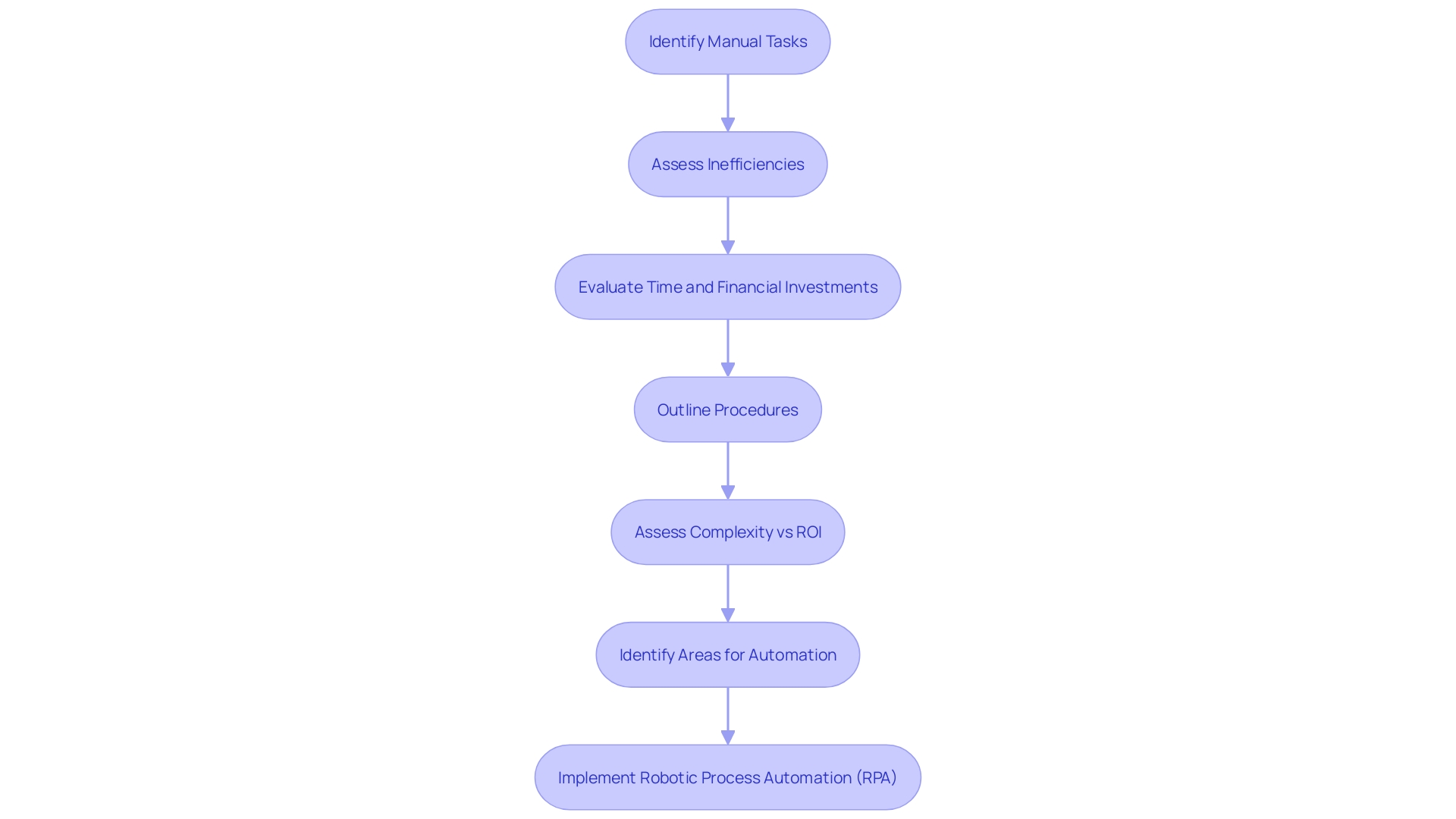
Design and Development
Robotic Process Automation (RPA) involves a meticulous approach to designing, developing, and implementing bots that can streamline and automate repetitive tasks. Drawing inspiration from a healthcare case study, the implementation begins with a thorough initial assessment to identify if the technology is secure, serves the intended purpose, and complies with relevant standards. A clinician or department initiates the process by submitting a request form, which then undergoes scrutiny by a dedicated Digital Service Team.
The team’s project manager sends out detailed questionnaires, digging deep into the reasons behind the technology adoption, how it will be used, and justifying its potential to solve existing problems. This mirrors the precision required in RPA development, where each bot is tailored to meet specific operational requirements and functions. Verifying the solution is as crucial as its development, ensuring that the script performs flawlessly and integrates seamlessly into the existing digital framework.
The importance of comprehensive testing and development is emphasized by the growing IoT and home technology markets, projected to reach an astonishing $40 billion by 2020. This growth parallels the RPA industry, where the focus is not just on creating bots but also on ensuring they deliver tangible results and maintain high security and compliance standards.
Statistics show a vibrant community of automation professionals, with a report highlighting insights from 1,639 respondents globally. This collective experience emphasizes the importance of continuous learning and adapting to integrate AI effectively into workflows. Such data points provide a backdrop for understanding the critical nature of RPA solutions that are not only well-designed but also extensively tested and ready to meet the challenges of the modern, automated workplace.

Deployment and Training
Implementing Robotic Process Automation (RPA) effectively requires a strategic approach that includes both technical deployment and personnel training. The transition begins with a meticulous assessment of digital technologies, ensuring the new RPA solution is secure and compliant. This is exemplified by the NHS’s ‘digital-assurance process,’ where technologies are rigorously evaluated for security and appropriateness before being adopted.
Once the RPA bots are configured and ready, the focus shifts to integrating them within the existing workflow. This seamless integration is crucial, as demonstrated by OnCall Health by Qualifacts, which streamlined the creation of numerous client forms by shifting from manual JSON form creation to a more efficient RPA-powered system.
Training employees is the next critical phase. A smooth transition is facilitated by equipping the workforce with the knowledge and skills to work alongside the bots. This ensures that both the technology and the staff are working in harmony, leading to improved operational efficiency and productivity. As reported in Tidio’s 2022 survey, with an 88% interaction rate between users and chatbots, the familiarity and comfort level with automated technology are increasing, highlighting the importance of a well-prepared team.
With the right measures in place, including continuous monitoring and management as recommended by the CTO and Co-Founder of Reveille Software, RPA can greatly enhance innovation. It’s a moment akin to the early days of the internet or mobile technology, where smart teams are leveraging AI to transform their operations. By automating manual tasks, businesses can offer improved customer experiences, as evidenced by the potential for RPA to help small businesses scale operations and maintain strong customer relationships.
In summary, the deployment of RPA bots and the training of employees are two sides of the same coin, both essential for the successful adoption of RPA in any industry.

Monitoring and Optimization
Ensuring the efficient functioning of systems like Robotic Process Automation (RPA) is not a set-and-forget task. It’s crucial to stay vigilant with regular performance evaluations, fine-tuning bots as needed to enhance their efficiency. This can be achieved by meticulously tracking and analyzing bot activities, promptly rectifying any errors, and making iterative adjustments to boost performance.
For instance, consider the journey of St. James Winery, a leader in the wine industry. They’ve achieved significant accolades and growth by not only perfecting their craft but also by staying ahead of the curve through innovation and optimization. Similarly, the water treatment solution developed by Optimotion for a chemical supplier illustrates how focused mechanization can address particular operational challenges while adhering to regulatory standards.
The self-governing robotics market, projected to reach a worth of USD 18.2 billion by 2032, emphasizes the crucial importance of continuous control and enhancements in mechanization. This market growth reflects the ongoing need for companies to invest in technologies that save time, increase accuracy, and enhance productivity.
Furthermore, companies are progressively acknowledging the importance of streamlining processes. According to the report, a majority of businesses are improving their mechanization methods, and more than half anticipate a profit within the initial year of execution. This emphasizes the significance of continuous monitoring and optimization to not only sustain stability but to propel the transformative influence of AI and mechanization on operational efficiency.
Common Challenges and Best Practices
Embracing Robotic Process Automation (RPA) presents a unique set of challenges that require careful consideration. Decision-makers must adopt a strategic method, identifying particular manual procedures ready for mechanization and pinpointing deficiencies that RPA can resolve. It’s not just about incorporating new technology; it’s about selecting the appropriate procedures and comprehending the time and financial commitment necessary for successful implementation.
A case in point is GrayMatter Robotics, which is revolutionizing the manufacturing industry with AI-driven robotic solutions, demonstrating the transformative power of a well-executed strategy. Their success demonstrates the significance of quality and improvement in RPA implementation.
The landscape of RPA is ever-evolving, with new applications spurring market innovation. For instance, WTWH Media’s Robotics Group provides insights into sector-specific advancements that enhance productivity and reduce costs. Moreover, the burgeoning market for mobile robotics, as highlighted at the Hannover Messe by igus, points to the growing accessibility of automation technologies for various sectors, including small and medium-sized enterprises.
The current global market for mobile robotics, valued at around $20.3 billion, is a testament to the widespread adoption and integration of RPA across industries, from logistics to hospitality. The expected market growth underscores the urgency for industries to overcome the initial challenges of RPA adoption.
These challenges, while significant, are not insurmountable. Industrial inspections, for instance, require a comprehensive examination of equipment and procedures to guarantee compliance with standards and safety. Trained inspectors using advanced methods and technologies are pivotal in this process, which is crucial across multiple sectors including power, manufacturing, and construction.
In the pursuit of modernization and streamlining, workshops and industry events serve as platforms for exchanging experiences and gaining insights into current matters in automated processes. For example, participants at a workshop on conversational interfaces shared their motivations for attending, including the desire to network, understand conversational challenges, and integrate AI into their work.
As the technological landscape develops, organizations must stay informed and proactive to utilize the full potential of RPA and overcome its challenges. By doing so, they can enhance operational efficiency and pave the way for a more innovative and productive future.

Resistance to Change
When introducing Robotic Process Automation (RPA) into an organization, one might encounter apprehension from the workforce due to concerns over job security or misunderstandings about the technology’s purpose. To navigate these challenges successfully, it’s critical to embrace a strategic approach that centers on transparency, engagement, and education.
The first phase in this procedure should involve a comprehensive evaluation of the digital technology, as demonstrated by the NHS’s experience with their Digital Service Team. Their approach includes a comprehensive review to ensure any new technology is secure, appropriate, and aligns with existing solutions, avoiding unnecessary duplication. By adopting a similar method, organizations can set a precedent for responsible and efficient RPA implementation.
Based on insights from the annual HR Technology Conference, it’s clear that the modernization journey should start with a thorough understanding of the processes ready for mechanization. This involves recognizing inefficiencies that RPA can address and evaluating the integration costs against the potential return on investment. Such strategic planning demonstrates a commitment to enhancing productivity while considering the workforce’s role in this evolution.
Leadership plays a crucial role in this transitional phase, as highlighted by the case of a large institution’s people analytics team, which identified multiple AI-driven projects during an offsite brainstorming session. This proactive stance exemplifies the importance of pinpointing demonstration projects that promise tangible business benefits.
To further mitigate resistance, it’s essential to communicate the existence of a problem clearly and the consequences of inaction. Using metrics to underscore the urgency, as suggested by experts, can help convince employees of the need for change. Additionally, fostering an environment where awareness, desire, and ability to adopt new approaches can flourish is paramount. This involves not only recognizing a better approach but also nurturing the willingness and providing the necessary skills to implement it.
Ultimately, the information from an ADP Research Institute survey and UiPath’s global survey of professionals in the field disclose a consensus on the effect of AI on employment, alongside differing viewpoints on the character of this effect. Such findings underscore the importance of understanding workforce perceptions and readiness for AI integration. By aligning RPA initiatives with these insights, organizations can better prepare their employees for the transformative changes ahead.
In general, the effective implementation of RPA depends on a comprehensive approach that considers technology evaluation, procedure choice, visionary leadership, issue communication, and workforce preparedness. By taking these factors into account, organizations can ensure a smoother transition into the automated future, with a workforce that is informed, engaged, and equipped to thrive.

Complex Process Automations
Embracing the transformative power of intelligent technology involves more than just introducing technology into existing workflows. It’s a purposeful process that starts with a detailed analysis of which manual processes are ready for technological enhancement and what inefficiencies these technologies can resolve. Based on industry insights, the process of streamlining tasks is most effectively approached by commencing with easier assignments and progressively advancing to more intricate ones, thus giving priority to time-consuming activities that can greatly profit from mechanization. This approach not only facilitates smoother integration of RPA software but also helps to manage the transition effectively. Continuous monitoring and documentation of results are essential in ensuring that objectives are achieved and to provide valuable insights for future technological advancements. The integration of AI with RPA, known as Intelligent Automation, is revolutionizing businesses, leading to increased efficiency and more informed decision-making. Companies like Coding Crafts are at the forefront of this evolution, recognizing the need to stay ahead of the curve by offering solutions that harness the synergy of RPA and AI along with other cutting-edge technologies such as Blockchain. Meanwhile, technological advancements in AI applications, as seen in UK public transport systems and the TSA’s facial recognition program, underscore the potential of AI to enhance operational efficiency. However, these initiatives also highlight the ethical considerations and privacy concerns that must be navigated. With the introduction of tools like Copilot in Power Automate, which enables the creation of desktop flows using natural language, the barrier to entry for utilizing these technologies is being reduced, empowering a broader range of users to take advantage of them. As mechanization persists to develop, it’s evident that its achievement relies on well-informed management, strategic planning, and a cooperative human-technology partnership.

Maintenance and Support
Ensuring the longevity and effectiveness of RPA solutions necessitates a comprehensive maintenance and support strategy. The essence of such a strategy lies in the establishment of robust governance to oversee bot performance and the implementation of a dedicated team to address maintenance issues promptly.
The importance of ongoing monitoring and management is apparent in the historical context of mechanization. From the water wheel to AI, successful mechanization has always required a human touch to ensure stability and efficiency. As noted by a CTO and co-founder of Reveille Software, AI, including RPA, is designed to enhance productivity, yet it is the partnership with humans that guarantees its efficacy.
In the realm of RPA, challenges such as data ingestion and the management of various document formats can arise. These obstacles underscore the importance of a well-structured management interface that ensures accountability and seamless operation. For instance, Hiscox leveraged automation to manage the influx of client emails, achieving a 28% reduction in workload while simultaneously enhancing customer and employee satisfaction.
With predictive maintenance becoming a focal point of interest, the market, valued at $5.5 billion in 2022, is poised for growth. Businesses are increasingly concerned with data security and privacy, with 89% of companies acknowledging these as significant worries. Despite these challenges, 91% of enterprises report a reduction in repair time and unplanned downtime, highlighting the tangible benefits of predictive maintenance.
Real-world applications further illustrate the value of a solid support system for RPA. Delivery Hero, for instance, tackled the issue of frequent employee account lockouts by automating the recovery procedure, which decreased the time spent locked out and enhanced operational efficiency.
As with any technological implementation, the success of RPA hinges not only on the technology itself but also on the methodology and mindset behind its deployment. This is exemplified by companies like IFCO, which partnered with Rackspace Technology to leverage their experience and insights, ultimately enhancing customer delivery through effective RPA governance and support.
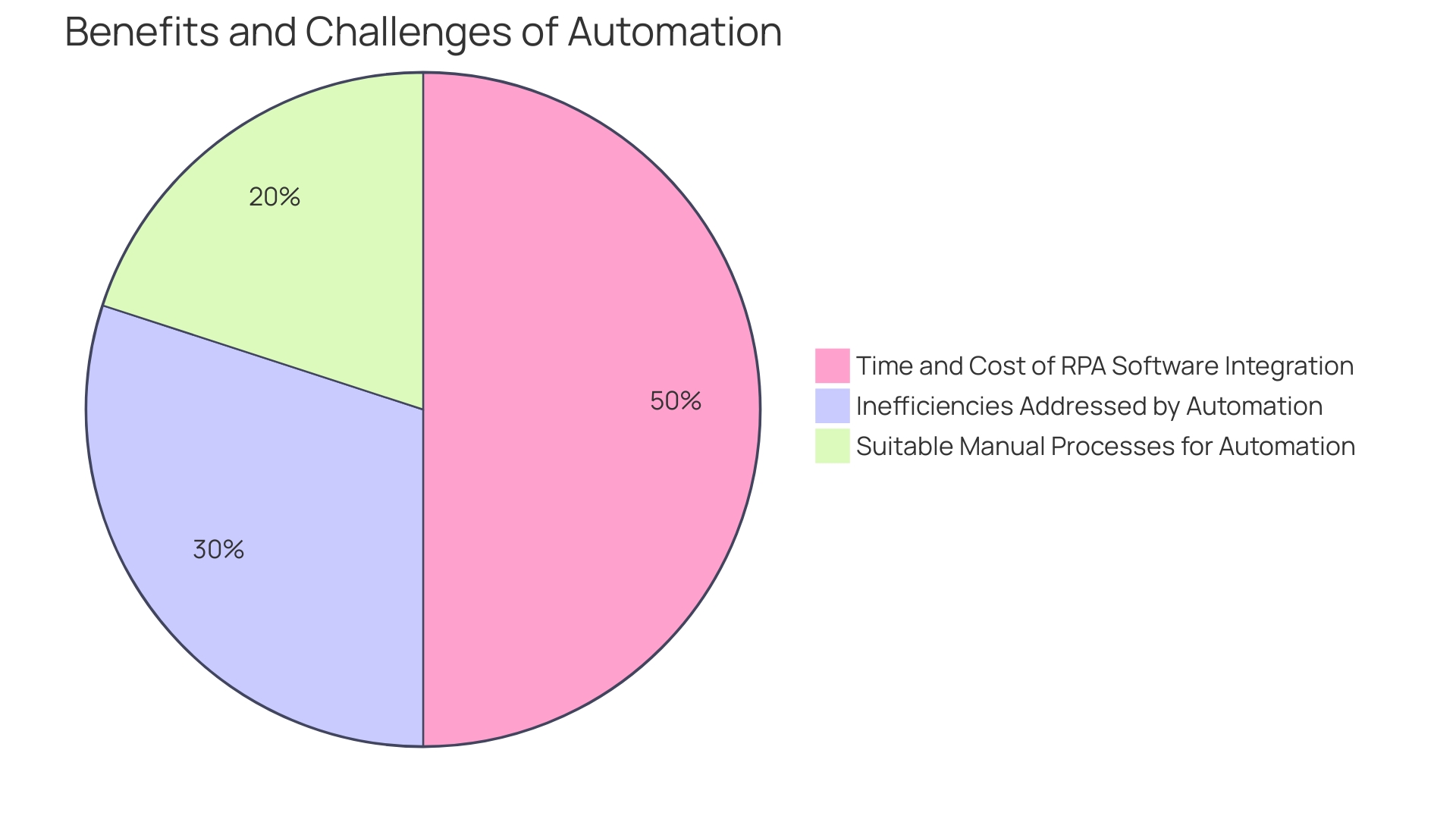
Future Trends in RPA
As the robotics landscape continues to expand and evolve, several key trends are shaping the future of this dynamic field. The integration of artificial intelligence (AI) is setting a new pace in robotics development, with AI technologies such as generative AI drawing global attention for their potential to revolutionize how businesses harness these tools.
Digital twins are emerging as a vital component in the modernization of robotics, particularly with their application in virtual models of physical systems like gantry robots. This technology allows for advanced real-time monitoring and analysis, improving planning, predictive maintenance, and ultimately resulting in increased efficiency and cost-effectiveness in manufacturing.
The versatility and adaptability of articulated robots are also noteworthy, as their design featuring rotary joints allows expansive freedom of movement, resulting in greater precision in industrial settings. This is a testament to the continued impact of the Industrial Internet of Things (IIoT) on robotics, providing a fertile ground for advancements in robotic operations.
Humanoid robots, with a rich history rooted in science fiction, are becoming increasingly sophisticated and capable of performing an array of tasks that complement human labor, rather than replace it. The deployment of programmable robots in industrial applications is accelerating, with about 3.5 million units currently operational and approximately 550,000 new units being introduced annually.
The market for Automated Guided Vehicles (AGV) and Autonomous Mobile Robots (AMR) is experiencing a robust growth trajectory. With a current valuation of around 20.3 billion US dollars, expectations are that this market will nearly double by 2028. These mobile robots are finding applications across various sectors, from intralogistics and industrial processes to service industries like healthcare and hospitality.
Recent showcases, such as the Consumer Electronics Show (CES), highlight the burgeoning interest and innovation in robotics. With over 3,200 vendors presenting cutting-edge technologies, the event underscores the sector’s vast potential and the continuous influx of new robotic solutions tailored for diverse industry needs.
In light of these trends, companies are encouraged to consider the implications these advancements may have on their respective industries and clientele. Engaging with these trends can spark new ideas and opportunities for enhancing products and services, ensuring that businesses remain at the forefront of innovation in robotics.
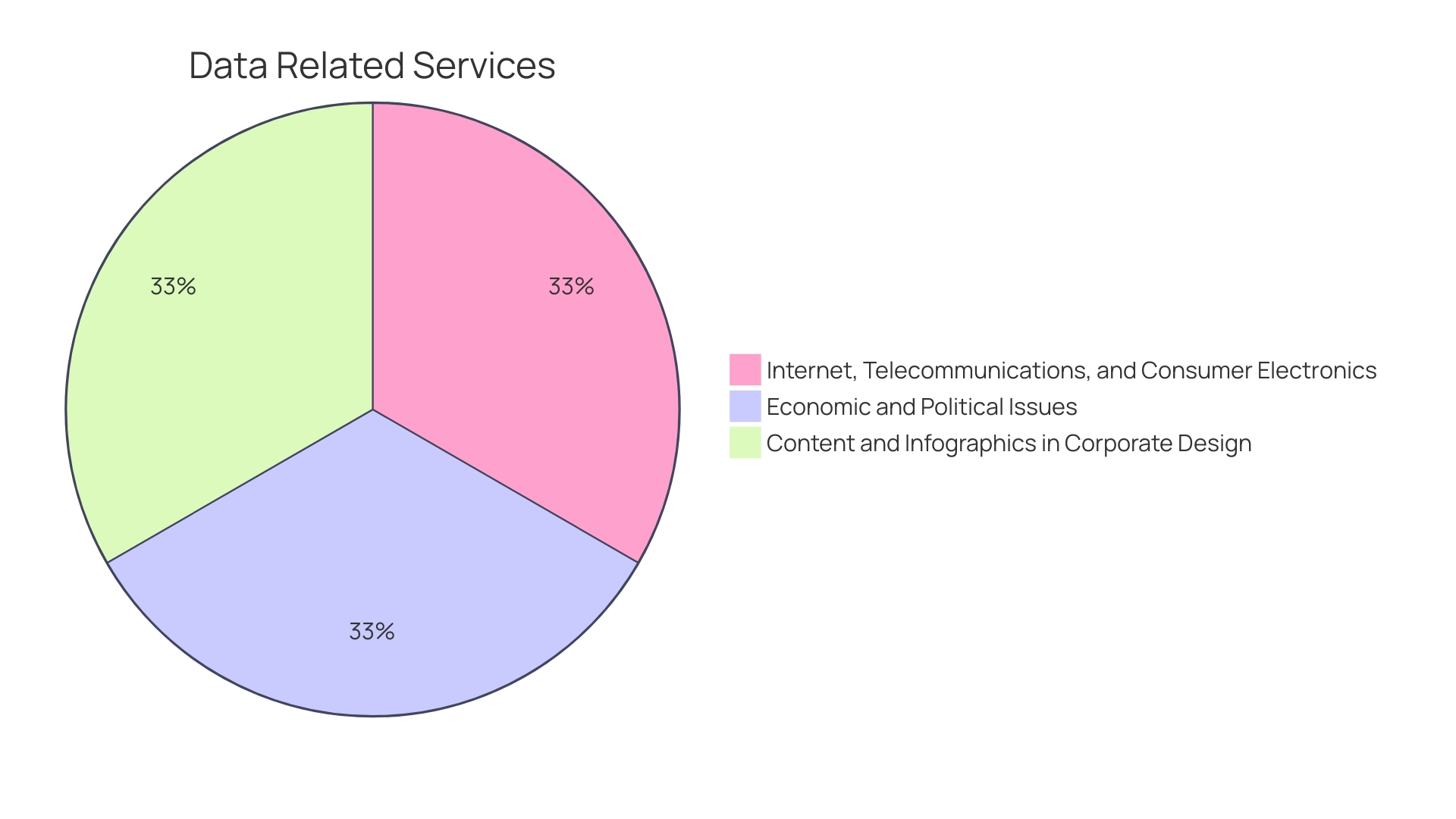
Intelligent Automation
The fusion of Robotic Process Automation (RPA) with cutting-edge artificial intelligence (AI) has led to the advent of Intelligent Automation (IA). This hybrid technology harnesses Ai’s prowess in machine learning and natural language processing, enabling robots to adeptly manage unstructured data, make informed decisions, and execute multifaceted tasks. The result is a robust automation system that elevates the capabilities of bots, allowing them to go beyond routine tasks and adapt to complex workflows.
For instance, Lindy, an AI-powered assistant, exemplifies the potential of Intelligent Automation. Designed to automate a diverse array of functions such as medical transcription, customer service, and executive support, Lindy harnessed a vast network of app integrations. Despite the formidable challenge of developing these integrations, which could have taken a year, Lindy successfully incorporated them to deliver effective task execution across crucial applications.
Moreover, Intelligent Automation’s impact is evident in its classification into four distinct categories: AI-augmented, autonomous, autonomic, and cognitive systems. These categories underscore the varying degrees of sophistication in Ai’s interaction with human activities and the environment. For instance, AI-augmented systems may sometimes demonstrate autonomous capabilities, showcasing the dynamic nature of Intelligent Automation.
Industry experts have recognized the transformative power of this technology. As per SS&C Blue Prism, Intelligent Automation goes beyond basic tasks and uses AI and generative AI to transform operations. It enables the extraction of data from documents and structures information from semi-structured or unstructured sources, thereby enhancing process execution.
In the realm of corporate mechanization, the synergy between RPA and AI in Intelligent Automation is significantly advancing operational efficiency. As quoted by a technology expert from Coding Crafts, Intelligent Automation is rapidly evolving, and staying at the forefront of this change is essential. This evolution is not just about automation; it’s about integrating additional services like Blockchain Development to bolster security and transparency in digital initiatives.
The progress in Intelligent Automation technology has a significant influence on various industries, especially for small enterprises aiming to uphold robust customer relationships. By utilizing RPA to accelerate responses to customer inquiries and guarantee the accuracy of information, organizations can greatly enhance customer satisfaction and loyalty.
Ultimately, the merging of AI capabilities with RPA is revolutionizing the landscape of digital processes, providing businesses with a potent instrument to maneuver through the intricacies of today’s digital world.
Hyperautomation
Hyperautomation goes beyond simple task execution, leveraging RPA in combination with AI, analytics, and process discovery to create a seamless, end-to-end system of automation. This approach not only accelerates the execution of processes but also enhances their accuracy and efficiency, enabling organizations to make rapid, informed decisions.
-
In practice, hyperautomation is exemplified by Holiday Extras, a European travel extras provider, which faced the challenge of creating marketing content and customer support across various languages. They required a system that could expand and adjust to their data-driven culture. By integrating intelligent automation into their operations, they were able to streamline workflows, despite the complexities of their multi-lingual requirements.
-
Similarly, Summer Health’s pediatric care services, which operate around the clock via text messaging, illustrate the time-intensive nature of administrative tasks in healthcare. By automating the creation of detailed medical visit notes, hyper automation can significantly reduce the administrative burden on healthcare providers. This allows them to spend more time on patient care, addressing the issue of burnout among medical professionals who are otherwise overwhelmed by paperwork.
-
With the integration of hyperautomation, companies are witnessing a transformation in how they conduct business. They’re able to synchronize data across various systems, enabling real-time process mining and analysis, as seen in Palantir HyperAuto’s application in the order-to-cash process. This leads to more agile decision-making, especially in complex scenarios such as managing credit blocks that can delay order fulfillment.
-
The implications of hyperautomation are also apparent in public sectors such as transportation and security. Experiments in the UK’s train stations with AI technology have demonstrated potential in enhancing safety and operational efficiency, reflecting the wider influence of automated technologies across industries. Meanwhile, concerns about the ethical use of AI, particularly in facial recognition, underscore the importance of responsible implementation.
-
This movement towards hyper-technology is emphasized by a report that highlights the perspectives of technology professionals, emphasizing the satisfaction and career development opportunities within the field. As organizations embrace this technology, the workforce is adapting, with a growing need for skills in managing and optimizing intelligent systems.
Organizations that successfully implement hyperautomation can expect not just streamlined operations, but also a workforce empowered by digital assistants, leading to an environment where both employees and technology work in concert for greater efficiency and innovation.

Cognitive Automation
Cognitive AI empowers bots with advanced capabilities that extend beyond routine tasks. It involves the application of technologies like machine learning, natural language processing, and data analytics to equip bots with the ability to comprehend, predict, and learn from data autonomously. This advancement in mechanization enables bots to assume intricate decision-making roles, similar to a human equivalent, greatly enhancing their contributions to business operations.
A convincing example illustrating the effectiveness of cognitive technology is the Enel Digital Platform’s interactive resolution procedure. Enel, an energy company, leveraged generative AI to manage IT service desk tickets, achieving a drastic reduction in resolution time from an entire day to a mere two minutes. Remarkably, about 15% of tickets were resolved automatically, without human intervention, shortening the initial response time from 9 hours to 1 minute. These impressive outcomes exemplify the efficiency and scalability that cognitive technology brings to the table.
The pursuit of efficiency through cognitive streamlining is also evident in the philosophy of industry experts like Fabio Veronese, head of ICT Industrial Delivery at Enel, who asserts that streamlining processes and boosting staff productivity are at the heart of operational excellence. With the integration of AI-assisted features into their service support platform, Enel is on a promising path to significantly reducing the effort and time to resolve cases.
Moreover, the notion of Hyperautomation emphasizes the significance of regarding such mechanization as an ongoing process that necessitates consistent supervision and improvement. This philosophy is essential for businesses to stay ahead in the rapidly evolving landscape of AI and to reap the maximum benefits of these technologies. As we embrace the future of work, Hyperautomation and cognitive technologies are acknowledged not just as technological advancements but as strategic imperatives for any forward-thinking enterprise.
In the wider scope of AI, cognitive mechanization is frequently contrasted with the notion of Artificial General Intelligence (AGI), which aims to develop machines capable of human-like thought and learning. Unlike narrow AI, which is designed for specific tasks, AGI represents a future where AI can generalize knowledge across diverse domains. This distinction emphasizes the progressive nature of cognitive mechanization, as it steps closer to AGI by providing bots with a deeper understanding and more adaptable problem-solving abilities.
Prominent figures in the field, like Shailendra Kumar, highlight the transformative capability of cognitive AI and AGI, asserting that comprehending and getting ready for their influence on society, the economy, and global viewpoints is crucial. This sentiment is echoed across various AI-focused platforms, where discussions about the implications, challenges, and opportunities of AI are encouraged to inform and inspire continued innovation in the field.
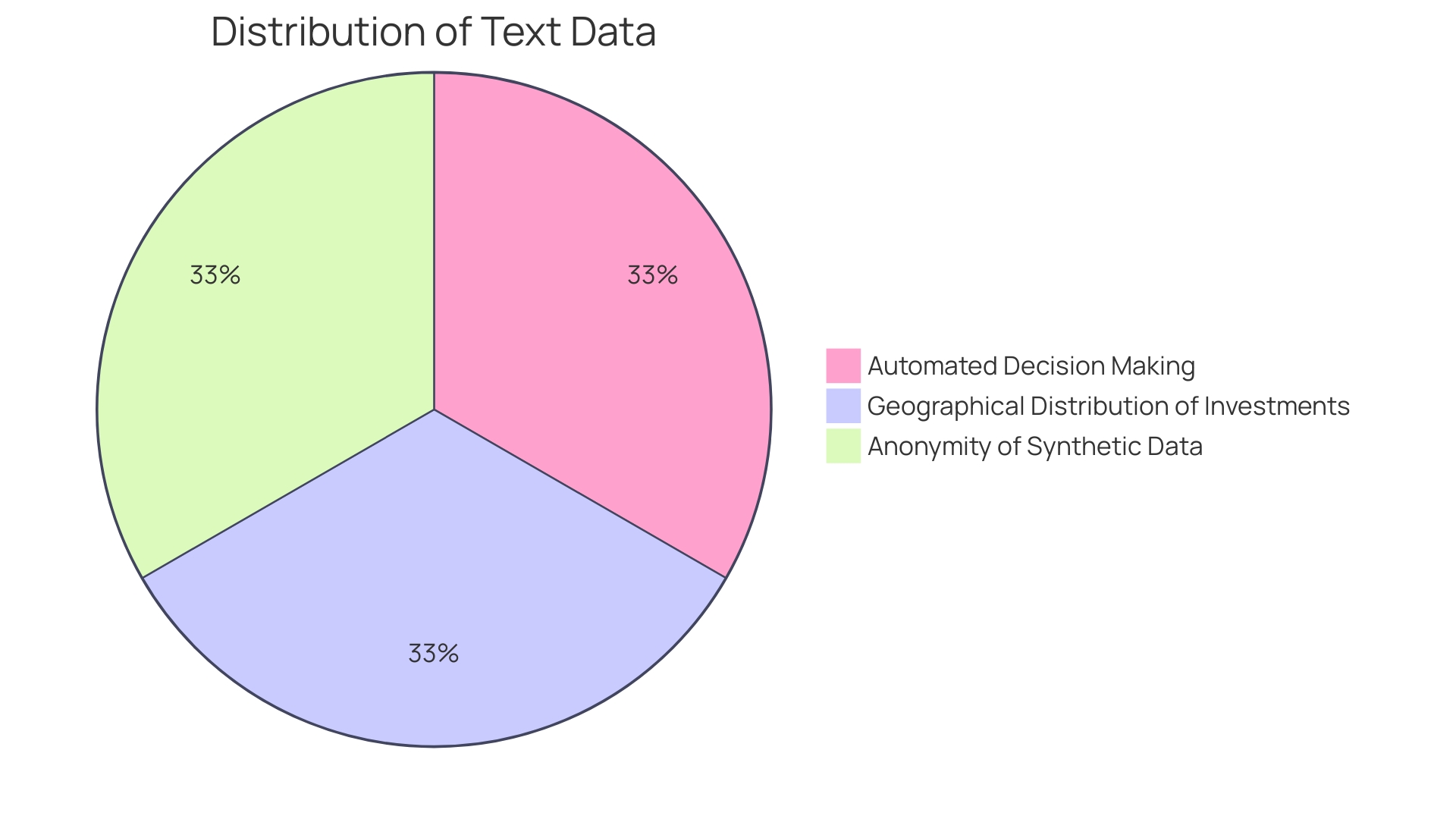
In summary
Robotic Process Automation (RPA) is a game-changing technology that allows organizations to automate monotonous, repetitive tasks, thus optimizing their operational procedures for enhanced effectiveness. It’s a leap forward in boosting productivity, achieving cost savings, and enhancing resource management. The successful deployment of RPA hinges on meticulous planning and selecting the apt tools while overcoming potential hurdles with finesse.
Exploring the realm of mechanization requires a comprehensive comprehension of both its benefits and the intricacies entailed in modernization. Leaders must make well-informed decisions by asking pivotal questions such as which manual processes are ripe for automation, the existing inefficiencies that RPA can address, and the time and financial investment required to integrate RPA software for each process identified.
Smaller enterprises, specifically, can utilize RPA to strengthen customer relationships by speeding up response times and guaranteeing consistent, accurate information delivery. Contented customers, due to timely and accurate support, are more likely to stay devoted, a crucial factor for enterprises aiming to expand operations.
Initiating the process of mechanization can commence by concentrating on straightforward, less complicated tasks, progressively advancing towards more intricate workflows. Establishing a robust library of tools is crucial to support Intelligent Automation (IA) as the technology evolves. Moreover, the ongoing monitoring and documentation of results are indispensable for assessing goal attainment and capturing insights for future initiatives.
Intelligent Automation, which marries the core principles of RPA with the transformative abilities of Artificial Intelligence (AI), signifies the evolution of business processes. It requires a lifecycle that involves identifying appropriate tasks for mechanization, involving stakeholders, and analyzing the range of the mechanization to incorporate both AI and RPA tools.
The combination of RPA and AI, referred to as intelligent integration, has emerged as a crucial catalyst in the digital transformation journey of many companies. By improving processes and efficiency and enabling more informed decision-making, intelligent technology holds the promise of unleashing a full spectrum of potential benefits.
Considering the future, intelligent mechanization is expected to continue shaping the landscape. A Forrester Research study highlights the substantial economic impact realized by investing in intelligent automation, citing a notable 73% revenue growth of overall Net Present Value (NPV) benefit and a 5.4% compound annual growth rate (CAGR) over three years for a composite organization. These compelling statistics underline the strategic value of embracing advanced technologies for businesses seeking growth and competitiveness.
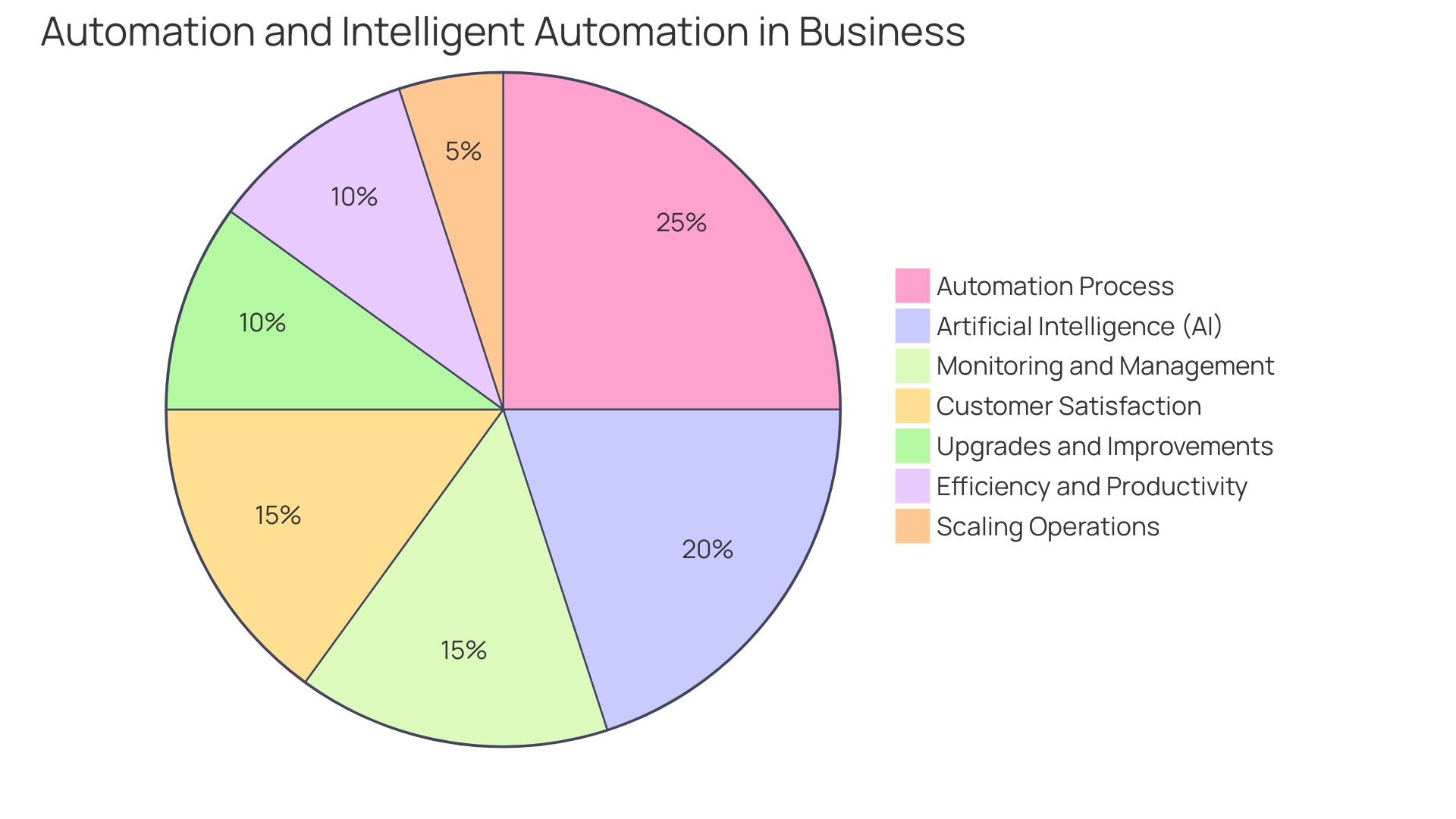
Conclusion
Robotic Process Automation (RPA) is reshaping the business world by automating routine tasks, thus freeing up human talent for higher-level strategic work. This technology has proven beneficial across various sectors, enhancing productivity and enabling growth. The rise of mobile robotics highlights RPA’s adaptability and scalability, which are essential for businesses looking to maintain agility and improve customer service.
RPA’s impact on customer service and supply chain management has been particularly noteworthy, with organizations experiencing enhanced efficiency. However, these successes hinge on selecting the right processes for automation and committing to ongoing refinement in line with changing business needs.
As RPA converges with AI, the era of intelligent automation begins, blending technology with human ingenuity for even greater economic benefits. With the promise of significant value, including improved operational efficiency and customer satisfaction, RPA stands as a pivotal element in the digital transformation of industries.
Experience the adaptability and scalability of RPA for your business and enhance customer service.
Introduction
At the intersection of artificial intelligence (AI) and document handling lies Intelligent Character Recognition (ICR)—a technology that elevates the capabilities of Optical Character Recognition (OCR) by integrating AI to effectively decipher handwritten and printed text. While OCR is adept at translating machine-printed text to digital format, ICR distinguishes itself by also tackling the complexities of human penmanship. This advancement is not just a step forward in document processing; it mirrors the trajectory of AI itself, which is increasingly becoming a staple in sectors such as retail, healthcare, and finance, making interactions with machines seamlessly human-like.
ICR’s proficiency stems from its ability to not only capture textual content but to understand its context, much like Natural Language Processing (NLP) allows for nuanced communication between humans and AI systems. The technology’s application is vast, from streamlining data entry processes to enhancing accessibility for those with visual impairments. As companies like Intel and Red Hat innovate to simplify machine learning tasks, ICR stands out as a crucial tool that adapts and learns, bringing intelligent automation to the forefront of operational efficiency.
What is Intelligent Character Recognition (ICR)?
At the junction of artificial intelligence (AI) and paper management lies Intelligent Character Recognition (ICR)âa discipline that enhances the capabilities of Optical Character Recognition (OCR) by integrating AI to effectively interpret handwritten and printed text. While OCR is adept at translating machine-printed text to digital format, ICR distinguishes itself by also tackling the complexities of human penmanship. This progress is not simply a leap forward in processing; it reflects the path of AI itself, which is progressively becoming a cornerstone in sectors such as retail, healthcare, and finance, making interactions with machines effortlessly human-like.
ICR’s proficiency stems from its ability to not only capture textual content but to understand its context, much like Natural Language Processing (NLP) allows for nuanced communication between humans and AI systems. The application of this innovation is vast, from streamlining data entry processes to enhancing accessibility for those with visual impairments. As companies like Intel and Red Hat innovate to simplify machine learning tasks, ICR stands out as a crucial tool that adapts and learns, bringing intelligent automation to the forefront of operational efficiency.
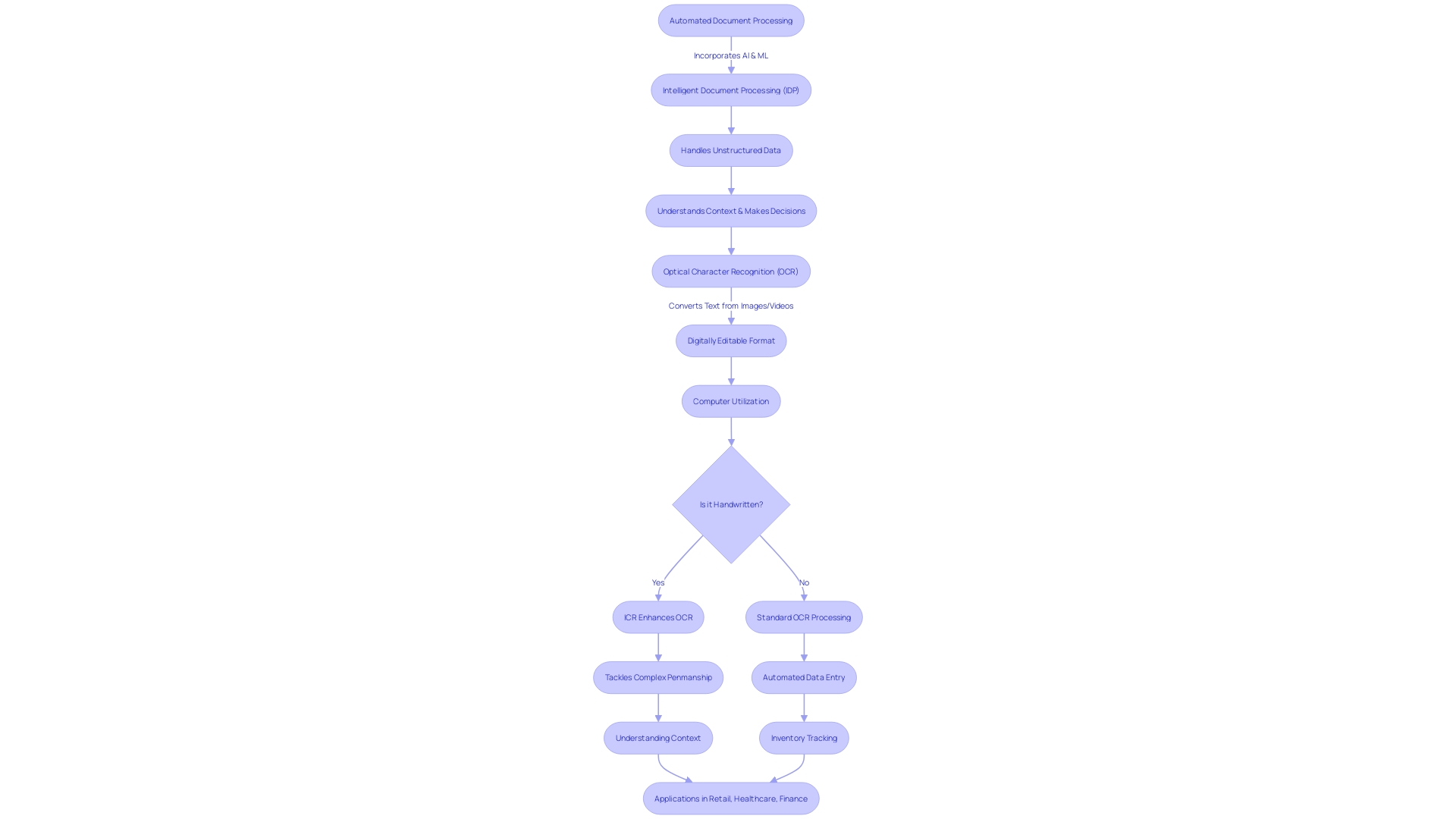
How Does ICR Work?
Intelligent Character Recognition (ICR) plays a fundamental role in the field of managing and processing documents, utilizing the capabilities of AI to extract valuable data from different types of files. The ICR process is initiated with pre-processing, where files are prepared for analysis. This includes ensuring that the text is clear and readable for subsequent stages. After this, AI-powered information extraction occurs, where technologies like Optical Character Recognition (OCR) and Natural Language Processing (NLP) collaborate to precisely recognize and extract pertinent information points from the records, like names, dates, and addresses.
Post-processing is the last stage, which involves additional improvement of the extracted information. This can involve the categorization of files into specific groups, editing, and the visualization of findings. The use of a microservices architecture in this process ensures scalability and resilience, making it an apt choice for handling large volumes of data efficiently. A practical application of these advanced techniques can be seen in the German patent office, where they facilitate the processing of patent submissions with increased precision and speed.
By incorporating AI and ML into processing files, industries like banking, healthcare, and insurance can attain greater operational efficiency, reduce errors, and simplify intricate workflows. Not only does this modernize their operations, but it also significantly reduces the expenses associated with manual paperwork. As the field continues to advance, these intelligent processing solutions are becoming essential tools for businesses looking to excel in a data-driven landscape.

Pre-processing: Enhancing Image Quality
Intelligent Character Recognition (ICR) systems start by enhancing images through sophisticated pre-processing techniques. These systems utilize cutting-edge Convolutional Neural Networks (CNNs) and encoder-decoder network architectures to refine image quality, which is crucial for the recognition process. Such enhancements include optimizing image resolution and adjusting brightness and contrast to counteract non-ideal visibility conditions. Noise reduction and realignment are also conducted to guarantee the precision of information extraction, particularly in skewed or distorted records. Reflecting the complexity of real-world environments, these pre-processing steps are akin to how autonomous vehicles use augmented datasets for nighttime recognition – by brightening images to improve the neural network’s performance. This focus on pre-processing aligns with recent research emphasizing the impact of image enhancement algorithms on the inference capabilities of CNNs. By strategically enhancing image quality, ICR systems are focused on creating an optimal input for information extraction, thereby improving overall operational efficiency.
AI Data Extraction: Converting Unstructured to Structured Data
Utilizing the capabilities of AI algorithms, Intelligent Character Recognition (ICR) transforms the challenging task of analyzing image files and extracting crucial data into a streamlined process. This advanced technology adeptly converts the labyrinth of unstructured information, such as the intricacies of handwritten notes or the fixed form of printed text, into a digital structure that computers can effortlessly process and analyze. The power of ICR shines when faced with documents like scanned PDFs, which traditionally lock away their text as if it were etched in stone. In industries where information is the lifebloodâfinance, legal, healthcareâICR stands as a beacon of efficiency, bypassing the limitations of manual information entry and rudimentary extraction tools.
Imagine receiving a collection of important information in the form of PDFs, only to discover the daunting reality that many are scanned images. In the past, extracting usable information from such documents was akin to navigating a minefield, fraught with the risk of errors and inefficiencies. However, ICR has revolutionized this process by applying its sophisticated logic, which may include parsing document-specific layouts or employing OCR services like AWS Textract. It harnesses natural language processing (NLP) techniques to seek out key-value pairs or to identify relevant information spatially near certain keywords.
Structured information, the type found in banking transactions or airline reservations, easily fits into traditional databases due to its uniform format. Unstructured text, however, has always presented a challenge—until the advent of ICR and AI-driven tools. These technological marvels, when fed with substantial and representative information, become increasingly effective, unlocking the full potential of AI in accessing and training on all relevant unstructured data. Extracting structured information from the vast expanse of unstructured content is no longer the Herculean task it once was, thanks to the ongoing evolution of methods ranging from Regular Expressions (Regex) to sophisticated NLP techniques like Named Entity Recognition (NER) and Topic Modeling via Latent Dirichlet Allocation (LDA).
The significant effect of ICR is apparent in different data-rich sectors, guaranteeing that professionals can promptly retrieve and make use of the valuable information within their files. With ICR, the once-stubborn PDF becomes a conduit for seamless information integration, propelling industries forward with newfound operational efficiency.
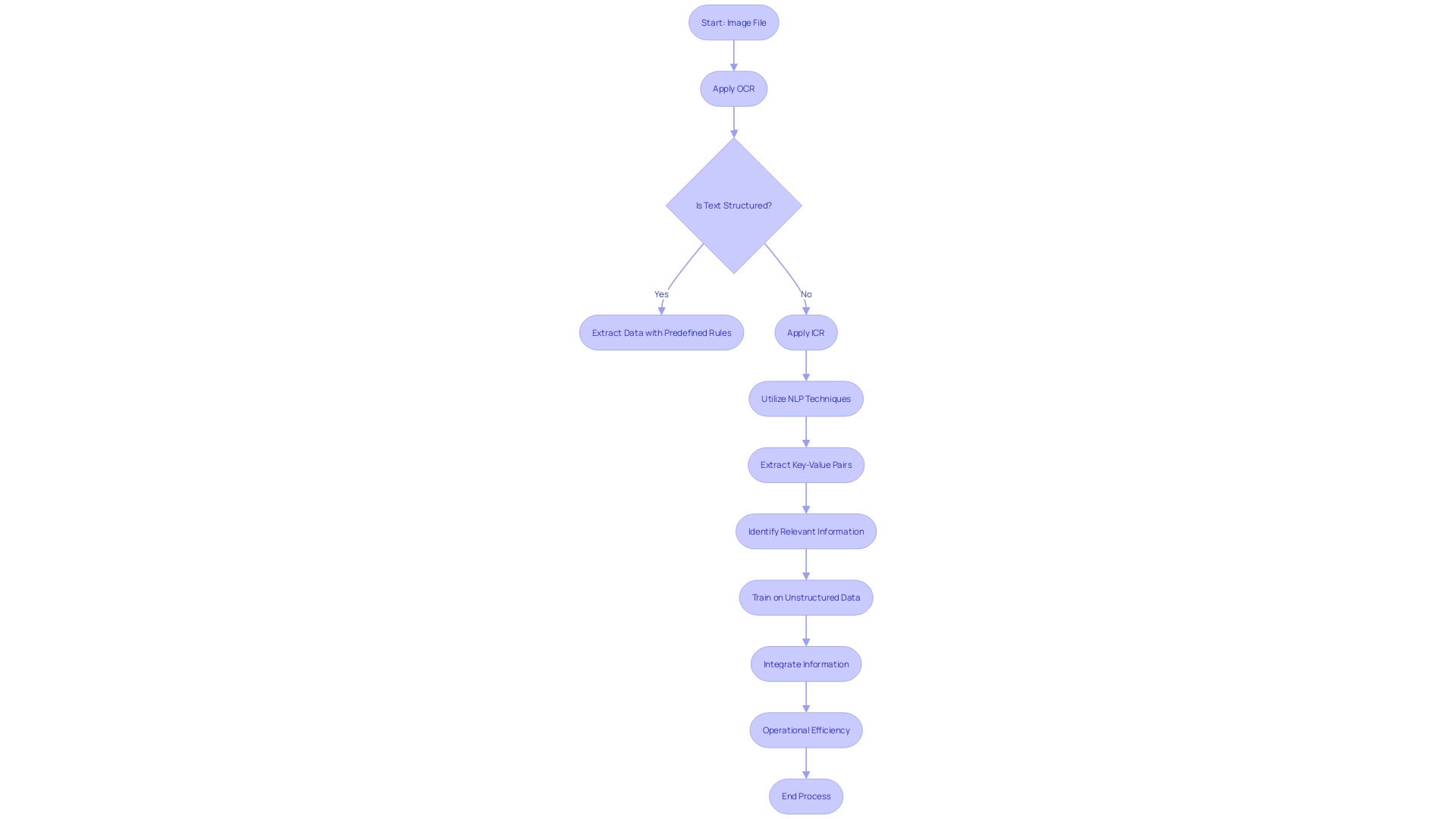
Post-processing: Correcting Mistakes and Improving Accuracy
Intelligent Document Recognition (IDR) systems are constantly evolving to increase accuracy and efficiency in text recognition. After the initial information extraction from documents, these systems utilize advanced post-processing methods to refine the output. One such method is the contextual analysis, which reviews the text within the context it appears, much like the work conducted at Lawrence Berkeley National Laboratory, where researchers handle complex scientific information and require precise information extraction for their groundbreaking work.
Post-processing stages may include spell-checking and grammar correction to refine the text. These stages are crucial, as even state-of-the-art Optical Character Recognition (OCR) technology can produce errors due to various factors, such as poor file quality or complex page layouts.
Dr. Amani Arthur, a trailblazer in medical imaging AI, highlights the significance of precise information extraction in diagnosing and treating uncommon illnesses. Likewise, in record administration, accuracy is crucial to avoid false information and guarantee information integrity.
Recent advancements in AI have brought about significant improvements in OCR accuracy. Significantly, deep learning approaches have been utilized to improve recognition processes, resulting in more dependable extraction of text from historical records and scientific literature.
While the industry boasts low error rates, aligning with human-level transcription capabilities, feedback from communities reliant on accurate text recognition, such as the DHH community, suggests a need for further refinement. This gap between innovation and user experience underlines the ongoing requirement for improvements in post-processing techniques to achieve the high-quality output necessary for various applications.
Machine Learning Algorithms in ICR
Utilizing the power of Intelligent Character Recognition (ICR), we have entered a time where machine learning algorithms play a crucial role in converting handwritten notes and various file types into actionable data. These advanced algorithms are not just about recognizing text; they’re about learning from extensive datasets, which enables the system to adapt and improve over time. With each new script, language, and document type, the system evolves, enhancing its capability to interpret even the most intricate handwriting styles.
Through case studies like the one from ICL, we observe the practical application of such advancements in industrial settings. Workers at ICL’s mining sites, who once relied on continuous manual monitoring under challenging conditions, now benefit from AI-driven tools that offer a more scalable and cost-efficient monitoring solution. In academia, researchers are utilizing machine learning to delve into complex mathematical constructs, as demonstrated by groundbreaking work published in Nature Communications.
The rapid growth of AI research, as reported by Nature Machine Intelligence, signifies the relentless pace of development in fields like ICR. The implementation principles of OCR and ICR, which include preprocessing images for improved text recognizability, lay the foundation for these advancements. This preprocessing is crucial as it involves cleaning up images to ensure that the text is clear and free from distortions, thus ready for analysis.
Moreover, the rise of machine learning and its integration into document management isn’t just a technical feat; it reflects a broader trend in artificial intelligence adoption. Data shows that although certain AI advancements are still in their initial stages of implementation, devices such as wearable fitness trackers and intelligent temperature controls are experiencing growing utilization, indicating a transition towards greater incorporation of AI in daily routines.
The journey from traditional OCR to ICR is marked by continuous improvement and optimization strategies that cater to different fonts and writing styles. This evolution is essential in today’s digital transformation era, where efficient data extraction and analysis are paramount. As a testament to this advancement, organizations like MLCommons play a vital role by providing the research community with the infrastructure needed to achieve new breakthroughs in AI.

Applications of ICR Across Various Industries
Intelligent Character Recognition (ICR) technology is transforming operations across a broad spectrum of industries. In the banking and finance sector, ICR is crucial in enhancing the accuracy and speed of check processing and form automation, significantly reducing manual entry and improving customer service. Within healthcare, patient records are digitized with greater precision, contributing to better patient care and streamlined administrative workflows. In logistics, ICR plays a crucial role in the efficient management of shipping documents, which is essential for the timely delivery of goods. Moreover, government agencies are utilizing ICR to automate entry processes, thereby enhancing productivity and decreasing backlogs.
A compelling example of ICR’s impact is found in the narrative of Nets, a pioneer in digital payment solutions. Their challenge of presenting technical information in a user-friendly manner reflects the transformative power of ICR in converting complex information into accessible and engaging formats, facilitating better onboarding experiences and compliance with stringent financial regulations.
The convergence of ICR with blockchain, as showcased by initiatives like those by DFINITY and Roland Berger, further underscores its potential for transparency and accountability. With blockchain, every step of the recycling process can be tracked, showcasing how ICR can underpin environmentally sustainable practices while engaging consumers with real-time insights.
Within industrial settings, the integration of ICR with Information and Communications Technology (ICT) and Industrial IoT applications is revolutionizing traditional practices. It enables real-time monitoring, fosters informed decision-making, and enhances cross-domain collaboration—pillars of the Industry 4.0 revolution. This synergy is not without challenges, with information security and privacy at the forefront, yet the promising benefits are driving adoption forward.
As businesses explore the capabilities of AI, including ICR, we recognize the transformative effects on operational efficiency. Statistics Canada’s survey on AI usage by Canadian businesses highlights a growing trend in leveraging AI for goods production and service delivery. This information highlights the far-reaching consequences of AI innovations such as ICT in transforming industry landscapes.
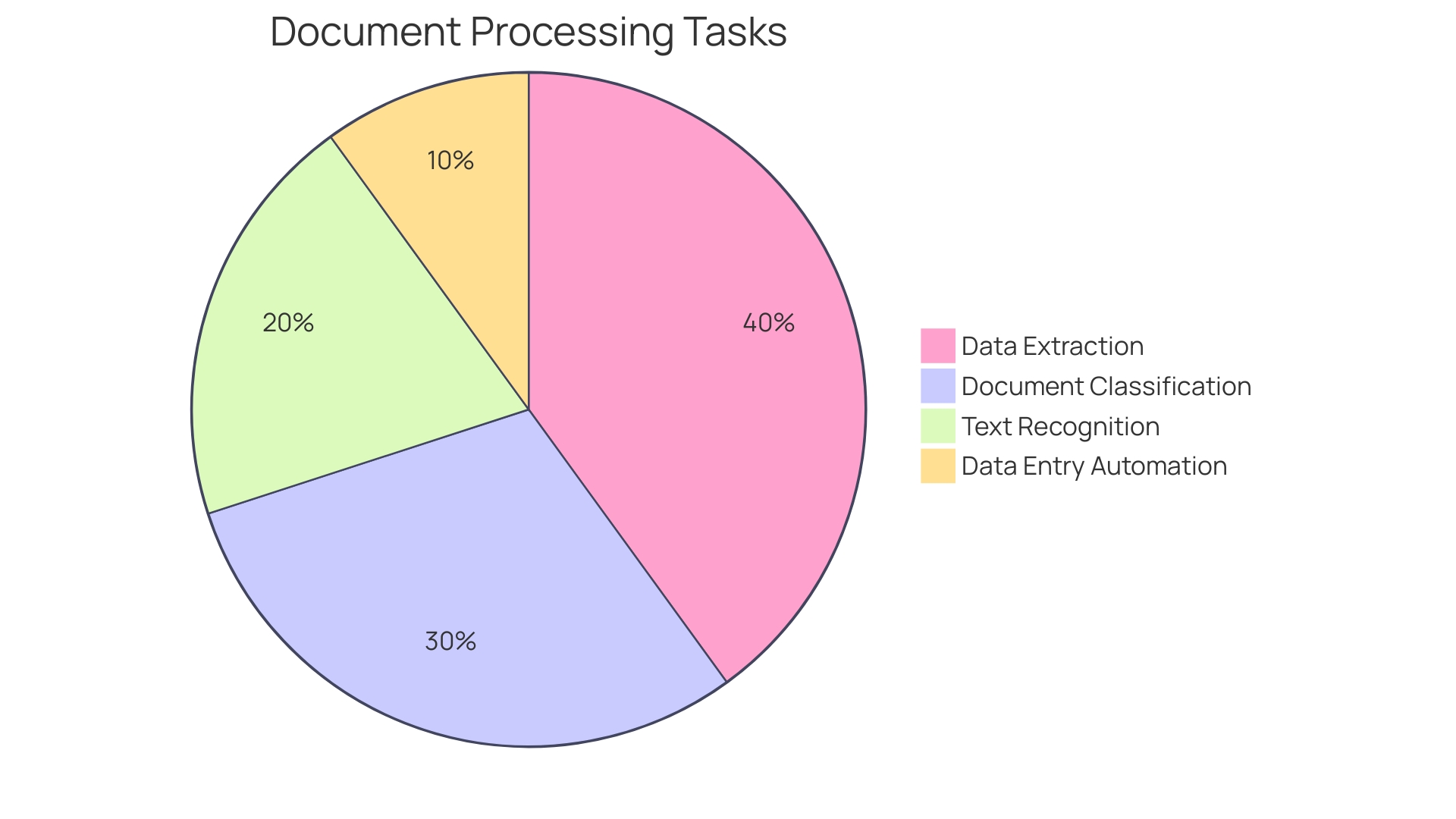
Benefits of Using ICR: Enhanced Accuracy, Time-Saving, and Cost Efficiency
Utilizing Intelligent Character Recognition (ICR) has become a game-changer for organizations aiming for greater operational efficiency. This advanced form of optical character recognition (OCR) uses artificial intelligence (AI) to convert handwritten text into machine-encoded text with remarkable accuracy. By implementing ICR solutions, companies can greatly reduce the inaccuracies linked to manual entry.
An insightful illustration of ICR’s transformative power is evident at ICL, a global manufacturing and mining corporation. ICL faced challenges in monitoring their industrial equipment under harsh conditions that made sensor attachment unfeasible. The traditional method of manual monitoring was not only cost-intensive but also inefficient at scale. ICR presented a groundbreaking solution, facilitating the extraction and analysis of information from visual inputs, such as camera images, which significantly improved the monitoring process. This led to more timely interventions, preventing machinery overloads and minimizing mineral loss due to screener overflow, thereby optimizing resource utilization.
Moreover, ICR streamlines data extraction processes, making them swifter and more reliable. The automation of these processes not only saves significant time but also allows employees to focus on more strategic tasks that require human expertise.
Adopting ICR solutions has a direct impact on an organization’s bottom line. By enhancing workflow efficiency, reducing operational expenses, and boosting productivity, companies can achieve a substantial return on investment. As we observe the widespread adoption of AI in different sectors, it is evident that advancements like ICR are crucial for the future of sustainable and efficient operations, as stated by industry leaders such as Paul Mikesell, CEO of Carbon Robotics. His company’s application of AI in agriculture demonstrates the potential of intelligent technology to not just enhance business outcomes but also contribute to environmental sustainability.
In summary, incorporating ICR solutions provides businesses a competitive advantage, allowing them to navigate the intricacies of information management with ease and accuracy, ultimately promoting a more efficient and sustainable operational setting.
Choosing the Right ICR Solution for Your Business
Choosing the best Intelligent Character Recognition (ICR) solution is a crucial choice that can greatly enhance your business’s handling and processing capabilities. Look for systems that boast high accuracy rates to minimize errors in data capture, ensuring that important details aren’t overlooked or incorrectly recorded. Scalability is another crucial aspect; your selected ICR should easily expand with your business, managing growing volumes of records without performance degradation.
Compatibility with existing systems ensures a seamless integration, preventing disruptions in your current workflow. This integration is pivotal for operations where conditions may not be conducive to traditional monitoring, as exemplified by ICL’s mining equipment in harsh environments. Their shift to more automated monitoring underscores the need for adaptable solutions that can work under varied conditions.
Moreover, the ease of integration speaks to the solution’s ability to blend with your tech stack. Organizations like IFCO have benefited from partnering with vendors like Rackspace, who provide tailor-made support, highlighting the importance of vendor expertise and customer-focused service in implementing complex ICR solutions.
Dominic Williams of the Internet Computer emphasizes the transformative role of enterprise-level solutions, which aligns with the need for robust, enterprise-ready ICR platforms capable of handling complex processing tasks with agility and precision. With the ongoing increase in the amount of business paperwork, the need for smart processing solutions that can automate and optimize workflows is more important than ever.
The correct ICR solution will not only meet present requirements but also position your organization to utilize the complete potential of AI-driven record management, resulting in improved operational effectiveness and a competitive advantage in the digital environment.
Implementing ICR in Your Workflow: Best Practices
Intelligent Character Recognition (ICR) technology has advanced significantly, providing improved capabilities for processing files. But to leverage these advancements, one must adopt a strategic approach. Begin by conducting a comprehensive analysis of your processing requirements to identify specific areas that ICR can optimize. Seamless integration with existing systems is crucial to avoid silos and ensure that the ICR solution complements your operational ecosystem.
Training is vital for users to fully utilize the ICR capabilities, reducing the risk of errors and enhancing productivity. It’s not enough to deploy the system and walk away; regular monitoring and performance evaluations are necessary to identify and rectify any issues promptly. This proactive approach ensures that the ICR solution maintains high accuracy levels and adapts to changing requirements.
Feedback loops are essential for continuous improvement. In the realm of bioinformatics, for instance, a significant percentage of resources remain unused post-publication due to factors such as insufficient documentation and lack of updates. By learning from such scenarios, it’s clear that for ICR solutions to be sustainable and efficient, they must evolve with ongoing maintenance and updates driven by user feedback and technological advancements.
In summary, to maximize the potential of ICR within your workflow, it’s imperative to analyze needs, integrate seamlessly, train thoroughly, monitor regularly, and update continuously. These top recommendations will guarantee that your ICR system is not just efficient but also stays a valuable asset in the ever-changing field of management and processing.
Future Trends in ICR: Integration with AI and Automation
The scope of Intelligent Character Recognition (ICR) is expanding, driven by advancements in AI and automation. The synergy between ICR and AI advances such as Natural Language Processing (NLP) and Machine Vision is poised to significantly boost the precision and range of capabilities of ICR systems. The combination of ICR with Robotic Process Automation (RPA) ushers in a new era of end-to-end automated workflows for file management and processing.
Healthcare, for instance, has seen transformative effects due to cloud-based OCR automating the digitization of patient records, reducing time and minimizing errors. Intelligent Document Processing (IDP) has emerged as a revolutionary solution to manage the burgeoning volume of documents more swiftly, economically, and accurately by leveraging AI and ML.
This innovative landscape is characterized by a taxonomy of systems, distinguishing between traditional automation and intelligent automation, the latter being divided into AI-augmented, autonomous, autonomic, and cognitive systems. These categories signify varying degrees of how AI integrates with human tasks and the environment. Recognizing the continuous development of intelligent automation, it is crucial to understand that the distinctions among these classifications may become less clear, indicating the ever-changing essence of these innovations.
The market for AI, inclusive of software, hardware, and services facilitating AI applications, is witnessing a surge. With AI restructuring the core system of record and workflows, no incumbent can feel secure. As one industry expert noted, we’re entering an era where software will proactively assist humans and even suggest subsequent actions.
In light of these developments, it’s essential for businesses to stay abreast of AI statistics, trends, and forecasts to maintain a competitive edge and innovate. The AI market, expected to reach USD 20 billion by 2025, underscores the need for firms to adopt these transformative technologies to enhance their operations.
Conclusion
ICR technology revolutionizes document handling by deciphering handwritten and printed text with AI integration. It enhances operational efficiency and streamlines workflows in various industries. ICR’s ability to capture and understand content reflects the trajectory of AI, making interactions with machines seamlessly human-like.
With its foundational role in document management, ICR utilizes AI and ML to achieve higher efficiency, reduce errors, and streamline workflows. Pre-processing optimizes image quality, ensuring accurate data extraction. ICR transforms unstructured information into a digital structure, unlocking the potential of AI in accessing and training on relevant data.
Post-processing methods refine output accuracy, while machine learning algorithms adapt to different handwriting styles. ICR’s impact spans industries, automating processes, reducing manual data entry, and driving transparency and efficiency.
Adopting ICR solutions enhances accuracy, saves time, and improves cost efficiency. It offers a competitive edge by navigating data management complexities. Selecting the right solution, considering accuracy, scalability, and compatibility, is crucial.
Best practices include thorough analysis, seamless integration, training, monitoring, and continuous updates.
The future of ICR lies in AI and automation integration. Fusion with NLP, Machine Vision, and RPA enables end-to-end automated workflows. Intelligent Document Processing revolutionizes management, while a taxonomy of systems distinguishes traditional from intelligent automation.
Staying updated on AI trends is essential for a competitive edge.
In conclusion, ICR’s integration with AI enhances operational efficiency. Its impact spans industries, automating processes, reducing errors, and improving cost efficiency. Adopting ICR offers a competitive edge, and best practices ensure successful implementation.
The future lies in AI and automation integration, revolutionizing document management.
Experience the transformative power of ICR technology and streamline your workflows today!
Introduction
Microsoft’s AI research is not just about pushing the technological envelope; it’s about creating real, sustainable value for organizations across the globe. A study conducted in collaboration with Ipsos, surveying over 1,300 business and tech decision-makers, has resulted in a robust AI Strategy Roadmap. This roadmap pinpoints the most influential factors for AI success and offers evidence-based best practices to help leaders shape their AI initiatives effectively.
Organizations that harness the power of AI at scale share certain characteristics, and Microsoft’s roadmap provides actionable insights into what it takes from a technological, business, and organizational standpoint to truly benefit from AI. Amidst an urgent talent shortage in cybersecurity, Microsoft is also reimagining its software offerings in an AI-first world, under the leadership of key figures like Mikhail Parakhin, to ensure robust defenses against increasingly sophisticated cyber threats. Furthermore, Microsoft’s advancements extend to digital making in STEAM education and efficient cloud systems that underpin the operations of countless organizations.
With the InsightPilot system, Microsoft leverages large language models to streamline data analysis, helping users extract valuable insights from complex datasets. In what’s been described as the triple constraint of speed, cost, and quality, Microsoft’s AI endeavors aim to transcend these traditional trade-offs. By integrating AI into various facets of business and technology, the company is setting the stage for innovations that could redefine operational efficiency and strategic decision-making, ultimately leading to a future where businesses can optimize performance without compromise.
Advances in AI Research at Microsoft
The AI research of the company is not only focused on pushing the technological envelope; it aims to create tangible, sustainable value for organizations worldwide. A study conducted in collaboration with Ipsos, surveying over 1,300 business and tech decision-makers, has resulted in a robust AI Strategy Roadmap. This roadmap pinpoints the most influential factors for AI success and offers evidence-based best practices to help leaders shape their AI initiatives effectively.
Companies that utilize the potential of AI on a large scale possess specific traits, and the roadmap offered by a renowned tech company offers valuable insights into the essential technological, business, and organizational aspects required to truly leverage AI. In the midst of an urgent talent shortage in cybersecurity, the software giant is also reimagining its software offerings in an AI-first world, under the leadership of key figures like Mikhail Parakhin, to ensure robust defenses against increasingly sophisticated cyber threats.
Moreover, the progress of the company extends to digital creation in STEAM education and efficient cloud systems that support the operations of numerous organizations. With the Insight Pilot system, the company leverages large language models to streamline data analysis, helping users extract valuable insights from complex datasets.
In what’s been described as the triple constraint of speed, cost, and quality, the AI endeavors of the tech giant aim to transcend these traditional trade-offs. By integrating AI into various facets of business and technology, the company is setting the stage for innovations that could redefine operational efficiency and strategic decision-making, ultimately leading to a future where businesses can optimize performance without compromise.
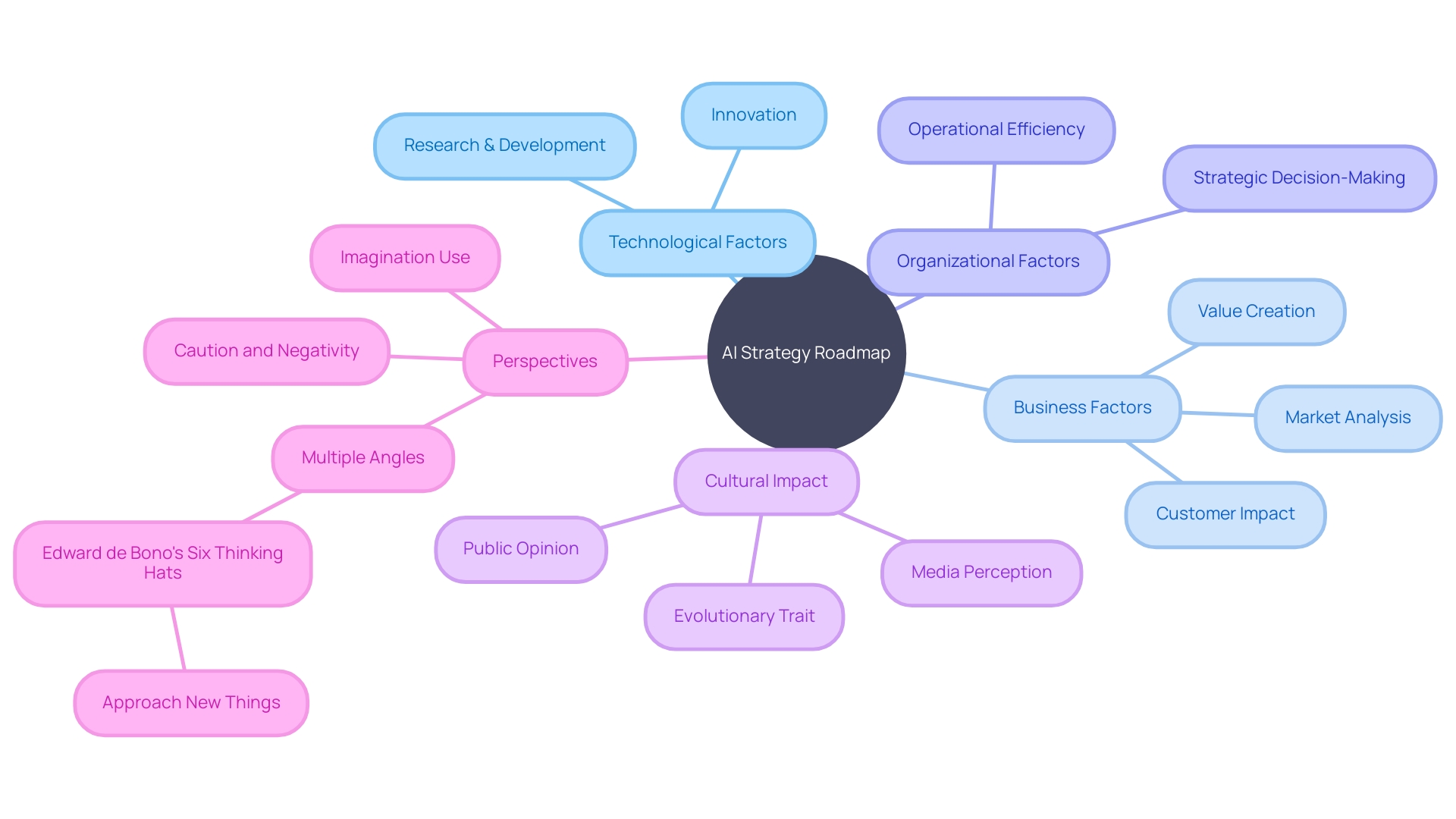
Key Areas of Focus in AI Research
The venture by the tech giant into artificial intelligence research is a testament to its dedication to advancing the field and integrating AI into the fabric of our daily lives. Their focus spans across natural language processing (NLP), computer vision, speech recognition, machine learning, and robotics, aiming to foster AI that can seamlessly understand, interpret, and engage with humans.
Particularly in NLP, Microsoft seeks to emulate complex human communication, similar to the way healthcare professionals use mnemonics like ABCDE or SOAP to efficiently convey critical patient information. With the integration of NLP into AI, the system could interpret such mnemonics and provide support in environments where understanding natural language is crucial.
The impact of large language models (LLMs) in commercial and other applications has been profound. These models have the capability to generate creative content, translate languages, and even reason at an advanced level. The exploration of AI by a certain company, particularly in NLP, is similar to the advancement of tools such as Google’s Bard and Palm 2, which have established new standards in Ai’s inventive and language skills, and showcase the possibilities of these technologies to support and improve human endeavors in different fields.
As we observe the ongoing development of AI, the efforts of a certain technology company in producing user-friendly AI solutions are closely in line with the industry’s desire to provide useful applications while taking ethical considerations into account. Their investigative endeavors are not only about technological advancements, but also about ensuring that AI operates as a cooperative tool that upholds societal values and makes a positive contribution to the lives of people around the world.
This drive towards innovation in AI is echoed by experts who emphasize the significance of providing rigorously vetted data to foster a comprehensive understanding of Ai’s capabilities and implications. The transformative potential of AI in fields like healthcare, where understanding and interpreting natural language is pivotal, demonstrates the breadth of the company’s vision for AI to be a powerful aid in complex communication scenarios.
Large Language Models and Machine Learning
The advancements in AI research have been headlined by their development of sophisticated large language models (LLMs). These advanced LLMs are not just a technical marvel; they encapsulate complex statistical distributions of tokens derived from extensive human-generated text corpora. Tokens, in this context, are the building blocks of text in LLMs, just as words and punctuation are in human language. With the capability to manage a vast number of tokens, Microsoft’s models, such as the Gemini 1.5 Pro, can comprehend long-context information, analyze video content, and even describe scenes.
LLMs have revolutionized several industries, including biomedicine, by summarizing texts, generating content from brief descriptions, and facilitating data analysis through code creation. However, their use in academia is subject to ethical considerations. Prominent scientific journals such as Science have policies in place that restrict the use of texts generated by AI without explicit editorial permission, underpinning the importance of human authorship and originality. The debate around LLMs echoes historical resistance to tools like calculators and word processors, viewed as potential crutches that could undermine foundational skills.
Amidst these concerns, it is clear that generative AI is becoming a staple in various sectors. The ability to generate texts and images in response to prompts is a game-changer, posing questions about the future of such models in open-source software and research. As the conversation continues, the key lies in balancing the innovative potential of LLMs with standards of accountability, originality, and scientific rigor, ensuring that the insights they provide are both novel and clearly articulated.
Human-Computer Interaction and Functional Programming
The exploration into AI extends to refining human-computer interaction (HCI) and advancing functional programming. Acknowledging the intricacy of AI systems and their frequently opaque decision-making processes, the company endeavors to develop user-friendly interfaces that streamline user interactions with AI. These efforts are particularly important when users need to understand and potentially override AI-generated decisions or recover from undesired outcomes, such as in the case of AI summarizing texts where crucial details might be omitted. To address this, the development of AI-resilient interfaces is underway, aiming to enhance AI safety and utility, particularly for tasks that heavily depend on user context and preferences, such as writing or coding.
Moreover, Microsoft acknowledges the transformative impact of computational research principles, emphasizing data sharing, code sharing, and competitive challenges that foster rapid dissemination and improvement of ideas. This philosophy aligns with the company’s commitment to excellence and user privacy, as evidenced by collaborative efforts such as arXivLabs. The significance of such endeavors is mirrored in the wider AI community, where advancements in machine learning, such as Duolingo’s Birdbrain, showcase how AI can be customized to individual learning experiences.
Functional programming, a paradigm focused on mathematical functions and immutability, is integral to building reliable and scalable AI systems. This approach is utilized in conjunction with traditional techniques like Fourier analysis, a method for identifying patterns in data, to enhance Ai’s predictive capabilities, such as in the study of fluid dynamics and neural networks. By merging well-established mathematical techniques with contemporary AI investigations, the company is at the vanguard of developing reliable AI tools and applications that are both user-friendly and potent.
Systems and Advanced Networking Innovations
At the forefront of the AI ventures is the development of sophisticated systems that can adeptly navigate the complexities of large-scale data processing. These systems are designed to tackle the increasing volume of data with agility and precision, ensuring that insights derived from AI are as accurate as they are swift. A crucial element of this innovation is the research into tightly coupled heterogeneous systems, which incorporate a variety of processing units such as CPUs and GPUs. The Grace Hopper Superchip serves as a foundational case study, providing valuable insights into optimizing data movement across these diverse components to enhance overall performance and energy efficiency.
In parallel, the company is delving into the realm of advanced networking solutions, striving to enhance the speed and reliability of AI system connections. Such advancements are crucial in an era where data compression and swift transmission are vital, particularly in applications spanning from real-time video analytics to the deployment of AI in recognizing patterns within vast datasets. This pursuit is underscored by the advancement of ultra-high-speed signal processors capable of scrutinizing hundreds of thousands of video images simultaneously, a field with profound implications for AI’s future in various sectors.
The AI landscape is on the cusp of a significant shift from the training of large language models (LLMs) to their deployment in real-world applications, a transition that emphasizes the importance of inference workloads where speed and efficiency take center stage. As this company continues to innovate within this space, the question remains whether its systems can maintain a competitive edge in the face of evolving market demands and breakthroughs in data-center design and networking technology.
Transforming Scientific Discovery with AI
Artificial Intelligence (AI) stands at the forefront of a scientific revolution, with Research AI4Science at its helm, guided by visionary leaders like Chris Bishop. In his keynote speech, Bishop highlighted Ai’s pivotal role in scientific discovery—transforming our understanding of the natural world and driving technological advancements. Microsoft’s AI endeavors are not only accelerating data analysis and pattern recognition for scientists but also pioneering groundbreaking discoveries.
As the field of AI and Machine Learning (ML) expands, growing approximately every 23 months, human researchers find it increasingly difficult to keep up with the rapid progress. Taking this into consideration, Mario Krenn and his team at the Max-Planck Institute have created the graph-based tool Science4Cast, allowing scientists to forecast the path of AI investigations and foresee upcoming focal subjects.
Krenn’s past work serves as a testament to Ai’s potential as a scientific muse. His algorithm, designed to bypass human intuition, successfully crafted an experiment that revealed a particular quantum entanglement, a feat eluding scientists for weeks. This AI-driven approach not only resurrected forgotten techniques but also applied them innovatively, showcasing AI’s capacity to extend beyond data analysis to conceiving novel scientific methods.
Furthermore, generative large language models (LLMs), such as those powering ChatGPT, showcase the remarkable capacity of AI systems to independently make discoveries in machine learning. These AI scientists can brainstorm, develop algorithms, conduct experiments, and even author comprehensive papers, encapsulating the entire scientific process.
These advancements highlight a revolutionary time where AI is not only a tool but a vital collaborator in scientific research, promising a thrilling future for the field and for organizations, committed to leveraging the full potential of AI.
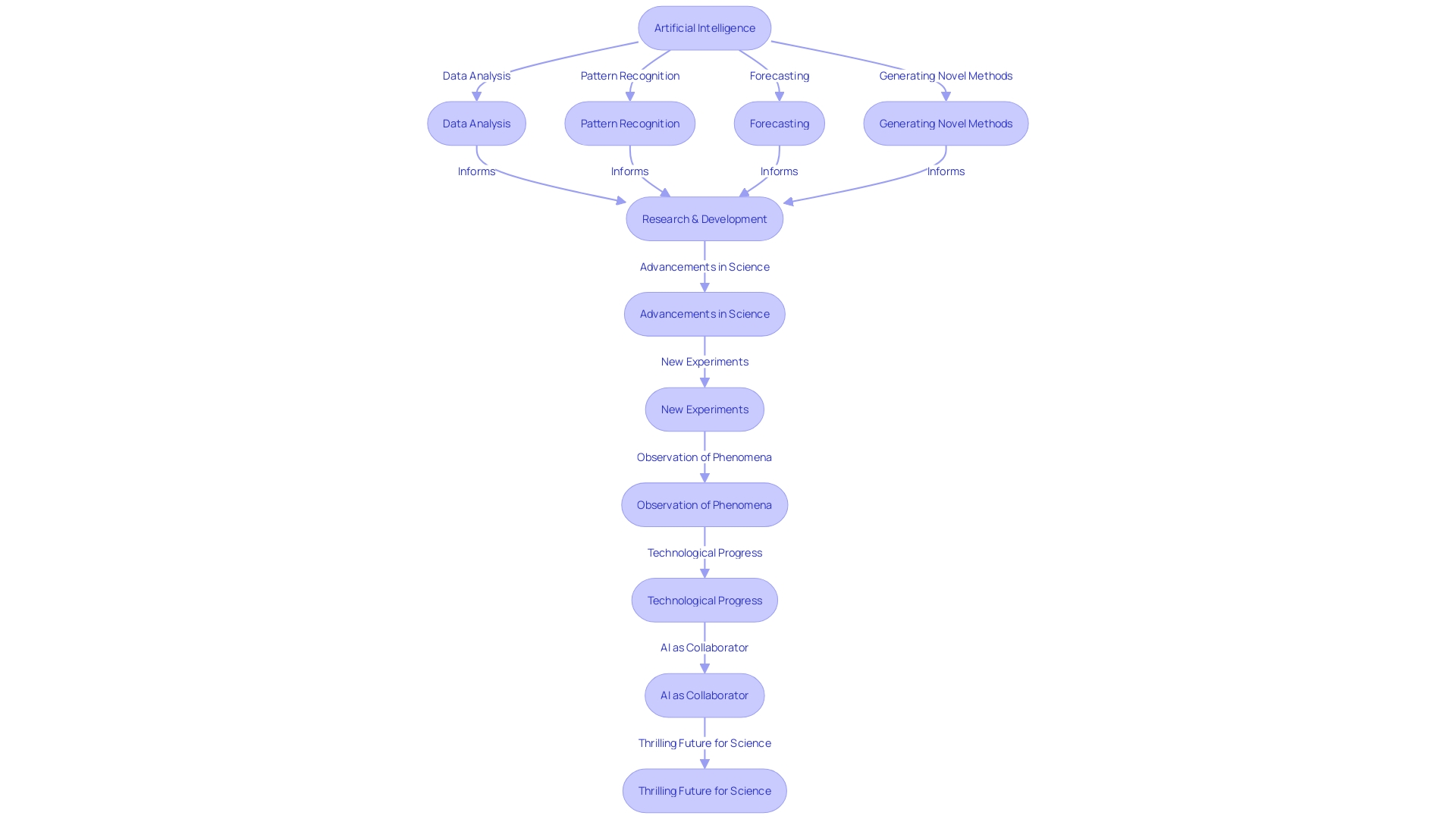
Extending Human Capabilities through AI
The company’s pursuit in AI innovation is not just about developing intelligent tools; it’s about expanding human potential. Imagine a world where AI serves as an extension of our own intellect, where it amplifies our decision-making and problem-solving skills. This is the reality the company aims to construct, a future where AI works alongside us, tackling complex data analysis and boosting our productivity to new heights.
For instance, consider the initiative led by social tech entrepreneur Shiran Mlamdovsky Somech, which sought to raise domestic violence awareness in Israel. Microsoft’s contribution played a pivotal role by animating photos of victims, giving a voice to those silenced, and fostering a stronger societal impact. This exemplifies how AI can serve a noble purpose, bridging the gap between technology and humanity.
Moreover, Dr. Richard Sutton’s partnership with Keen Technologies exemplifies the pursuit of a deeper understanding of AI. Their collaborative efforts aim to develop computational agents capable of navigating and interacting with our intricate world. Such research endeavors highlight the commitment to advancing AI in ways that respect our human agency and temporal understanding.
Furthermore, generative AI has caught the public’s eye, creating content with such creativity and speed that it was once deemed impossible. Tools like Google’s Bard and the Palm 2 model demonstrate the strides made in this field. They have revolutionized how we generate text, translate languages, and enable seamless integration into various applications.
Reflecting on the role of AI, it’s clear that machine learning will not entirely replace human tasks but rather augment them. As mentioned by experts, the use of advanced tools excels at certain tasks but also depends on human collaboration for comprehensive functionality, ensuring that human expertise remains invaluable.
In light of these developments, we must also consider the implications for productivity. Historical trends indicate that the acceptance rate of novel innovations can greatly impact productivity improvements. As we stand on the brink of widespread generative AI adoption, the potential for a productivity boost in the U.S. could be substantial, provided that businesses and individuals adapt to these new tools effectively.
The AI advancements are guiding us towards a future where human capabilities are not just supported but supercharged, promising a world where we can achieve more together with AI.
Ensuring Societal Benefit and Responsible AI
The company is at the forefront of AI technology, developing ethical, transparent, and unbiased systems to ensure a societal benefit. This commitment is reflected in their six guiding principles for AI development that prioritize fairness, reliability, and safety. For example, the approach of this company to privacy and data protection supports their commitment to transparency and responsible management of data.
In practice, Microsoft’s responsible AI initiative involves multidisciplinary teams that integrate user research into AI-powered product design. They develop resources such as frameworks and guidebooks to improve the communication between technical experts and user experience researchers, ensuring that AI solutions are aligned with user needs and societal values.
Developed economies such as Kyrgyzstan are utilizing AI in creative manners, adapting platforms such as Instagram and Telegram beyond their initial intentions to meet local demands, despite the absence of comprehensive regulations for AI and data privacy. This adaptability showcases the potential for AI to meet diverse challenges when guided by responsible principles.
The rapid growth of Large Language Models and Generative AI applications has brought AI into everyday life, raising questions about data privacy and the fairness of AI decision-making. The Responsible AI Standard serves as a robust framework for the responsible deployment of AI, even as regulatory requirements evolve. It also highlights the significance of inclusive design in AI systems, as indicated by criticisms of technologies such as Amazon’s Facial Recognition for potential biases.
The societal impacts of AI are vast, from changing how we interact with the world to raising ethical questions about its use. Therefore, the responsible AI practices of this company are not only focused on following rules, but also involve a strategic method that incorporates ethical factors into the heart of AI system creation and usage, guaranteeing that the system is advantageous and reliable for everyone.
Recent Milestones and Future Directions
The advancements of Microsoft’s AI are not just limited to investigation; they are also pioneering practical applications that reshape how we engage with technology. Take the InsightPilot for instance, an LLM-based system that seamlessly navigates the complexities of data analysis by interpreting natural language queries. This system exemplifies the commitment to integrating AI into tools that augment human decision-making and enhance productivity.
Their cloud infrastructure serves as a digital scaffold for countless organizations, illustrating the tangible impact of their AI endeavors. Furthermore, the establishment of a novel cutting-edge AI development group, helmed by industry visionaries Sam Altman and Greg Brockman, propels the company into the forefront of AI innovation. This team, backed by a solid partnership with OpenAI, is set to pioneer breakthroughs that promise to be as transformative as their recent achievements in AI4Science, which Chris Bishop highlighted as pivotal to scientific discovery.
These efforts are buoyed by the company’s resolve to remain at the forefront of AI research. The company’s latest announcements at Ignite, featuring over 100 AI-related innovations, demonstrate their relentless drive to harness Ai’s potential. The roadmap reveals a future where AI is not just an academic pursuit but a bedrock of commercial and practical applications that touch every aspect of our lives.
Collaboration and Community Engagement in AI Research
The approach to AI development is deeply rooted in collaboration and shared learning. With a vision to harness AI for societal benefit, Microsoft partners extensively with academic circles, industry peers, and the AI community at large. This collaborative effort aims to advance AI advancements, guaranteeing their ethical progression and extensive implementation.
At the heart of this collaborative spirit is the recognition that diverse perspectives enrich AI research. There’s a dual motivation behind stakeholder engagement: the belief that broader participation leads to superior outcomes and the principle that inclusivity is simply the right course of action. This philosophy opens the door to a dynamic exchange of ideas, where the course of AI innovation is not just guided by experts but is also influenced by the voices of the community.
The practical implications of such an open approach to AI are evident in various sectors. For instance, machine learning advancements have made significant strides in healthcare, enabling clinicians to make more accurate diagnoses. In the same way, within the field of environmental science, AI assists in forecasting and reducing the impacts of devastating occurrences such as wildfires, demonstrating how advanced methods can function as a foundation for safety and readiness.
The Inclusive Digital Maker Futures for Children workshop exemplifies the company’s commitment to the democratization of technology. By fostering low-cost, accessible digital making, the initiative acknowledges the transformative power of AI in education and beyond, particularly in the STEAM fields.
Furthermore, the support provided by a prominent technology company like Microsoft for conferences such as ICML 2024 reinforces its dedication to the academic research community. With a significant number of papers accepted at the conference, including several for oral presentations, the research division of the tech giant demonstrates its pivotal role in AI’s cutting-edge exploration.
The AI endeavors of this company also demonstrate a deep appreciation for human communication diversity. Recognizing the 70 million d/Deaf individuals globally, the company acknowledges the difficulties encountered by the deaf community in accessing predominantly written language information. Addressing this, the technology company is working on adapting AI to recognize and translate sign languages, thus bridging the communication gap and ensuring equitable information access.
Peter Lee, Corporate Vice President at a technology company, Research & Incubations, articulates the transformative potential of foundation models in AI, emphasizing the need for a research ecosystem that aligns with human values and societal goals. The Accelerate Foundation Models Research initiative is a testament to the proactive stance on furthering AI in a way that is safe, responsible, and transparent.
In summary, Microsoft’s multifaceted efforts in AI are shaped by a commitment to open collaboration, societal benefit, and the enhancement of human capabilities. Its endeavors serve as a beacon for the responsible development of AI, with a clear focus on making the technology accessible, inclusive, and beneficial for all.
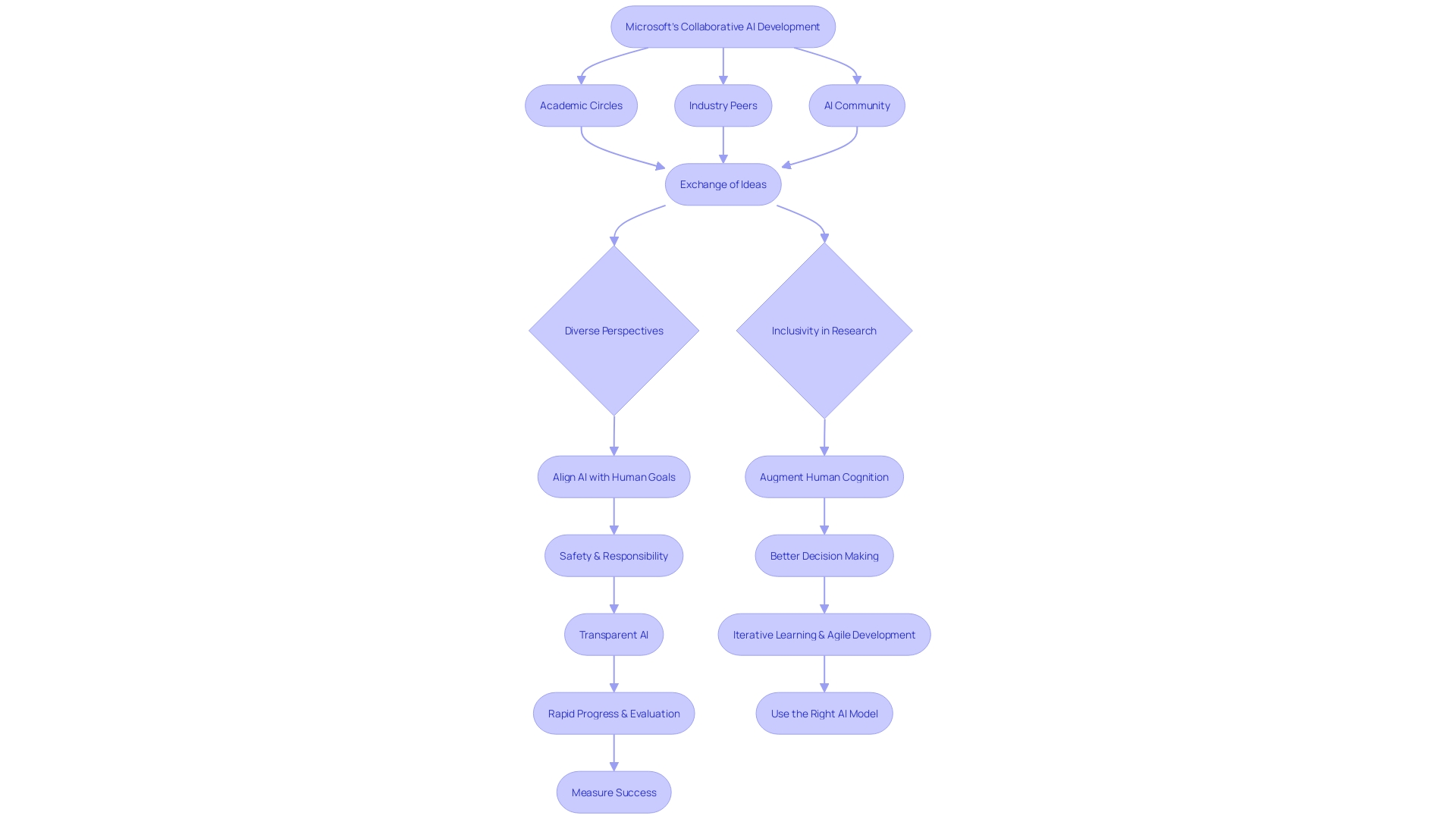
Conclusion
Microsoft’s AI research focuses on creating sustainable value for organizations globally. Their AI Strategy Roadmap offers actionable insights for successful AI implementation, emphasizing the importance of harnessing AI at scale. They address the talent shortage in cybersecurity, advance digital making in education, and streamline data analysis through their InsightPilot system.
In the field of AI research, Microsoft prioritizes natural language processing, computer vision, speech recognition, machine learning, and robotics. Their advancements in human-computer interaction and functional programming enhance user experiences and build reliable AI systems. They also develop sophisticated systems for large-scale data processing and advance networking solutions for faster and more reliable AI connections.
Microsoft’s AI research accelerates scientific discovery, transforming data analysis and driving groundbreaking discoveries. They prioritize responsible AI practices, collaborating with stakeholders and integrating user research into product design. Privacy, data protection, inclusivity, and addressing biases in AI decision-making are key considerations for Microsoft.
Collaboration plays a vital role in Microsoft’s approach to AI development. They engage with academia, industry peers, and the AI community to ensure responsible evolution and widespread application of AI technologies. Their commitment to inclusivity is demonstrated through initiatives like the Inclusive Digital Maker Futures for Children workshop, promoting accessible digital making in education.
In conclusion, Microsoft’s AI research empowers organizations to benefit from AI at scale. Their roadmap, advancements, and responsible practices shape the future of AI. By integrating AI into various domains, Microsoft drives innovation, transforms scientific discovery, and expands human potential.
Their collaboration and commitment to societal benefit set a standard for responsible AI development. Microsoft’s practical applications and dedication to enhancing human capabilities promise a future where AI works alongside us, amplifying productivity and achieving more together.
Introduction
As artificial intelligence (AI) continues to revolutionize industries, organizations are recognizing the need to integrate and leverage AI technologies for business success. Mayo Clinic, a renowned medical institution, has embraced AI to enhance patient care and administrative processes. Similarly, Holiday Extras, Europe’s leading travel provider, has faced the challenge of scaling operations across multiple languages and markets.
The adoption of AI is not just about technology; it’s about reshaping the workforce to harness AI’s potential. Augmentation, the enhancement of human capabilities through AI, is becoming a reality in the workplace. The impact of AI on jobs and productivity is substantial, with power users saving up to 30 minutes daily by adopting AI.
Businesses that invest in fostering AI fluency among their workforce can expect benefits in efficiency, innovation, and overall operational excellence. In this article, we will explore the tailored approaches to AI empowerment, key components of an AI consulting program, successful implementation of AI strategies through case studies, measuring the impact and success of AI adoption, critical aspects of AI consulting, data assessment and preparation for AI solutions, model development and deployment strategies, integration with existing systems and change management, performance monitoring and optimization of AI solutions, real-world examples of AI in predictive maintenance and personalized marketing, maximizing the value of AI consulting, future trends in AI consulting, and the democratization, vertical specialization, and responsible AI practices that shape the future of AI consulting. By understanding these aspects, businesses can navigate the complexities of AI implementation and unlock the full potential of this transformative technology.
Recognizing the Need for AI Fluency in Organizations
As artificial intelligence (AI) becomes a pivotal element in various industries, the ability to incorporate and utilize AI advancements is becoming increasingly crucial for business success. For instance, Mayo Clinic, a world-renowned medical institution, has embraced AI to enhance patient care and improve administrative processes. By developing a robust infrastructure for AI development, Mayo Clinic has seen a rise in generative AI applications, signifying the value of an enablement approach over restrictive governance.
Similarly, Holiday Extras, Europe’s leading travel extras provider, has faced the challenge of scaling operations across multiple languages and markets. Their commitment to a data-driven culture has highlighted the importance of data fluency among employees, particularly in traditionally qualitative functions like design that are transitioning to more metrics-driven approaches.
Furthermore, the implementation of AI is not only about the use of advanced tools; it’s about transforming the workforce to leverage Ai’s capabilities. Augmentation, the enhancement of human capabilities through AI, is becoming a reality in the workplace. From memory augmentation via smartphones to more sophisticated AI tools, the focus is shifting towards a both/and mindset that values human and AI collaboration.
The impact of AI on jobs and productivity is substantial. A study of 1,300 Copilot for Microsoft 365 users revealed that saving as little as 11 minutes a day through AI adoption can mark the beginning of building an AI habit, with power users saving up to 30 minutes daily. These users reported increased manageability of workloads, creativity, focus on important tasks, motivation, and work enjoyment.
The rapid adoption of AI technologies, as exemplified by ChatGPT’s swift growth, underscores the transformative power of AI. It’s clear that AI literacy is not just a competitive advantage but a necessity for modern organizations. Businesses that invest in fostering AI fluency among their workforce can expect to reap benefits in efficiency, innovation, and overall operational excellence.
Tailored Approaches to AI Empowerment
Customizing AI strategies to the specific requirements of an organization is not only advantageous; it is crucial for optimizing the influence of AI implementation. Effective AI implementation requires a nuanced understanding of the business’s operations, its goals, and the challenges it faces. For example, in the healthcare industry, the Digital Service Team of an NHS trust might receive a request to embrace new digital innovations. Their approach includes a comprehensive initial evaluation to determine if the requested system is secure, compliant, and necessary, or if a comparable option already exists within the trust. This highlights a key aspect of AI strategy: recognizing existing resources and capabilities before seeking new solutions.
In another compelling example, to combat domestic violence in Israel, AI was utilized to animate photographs of victims, giving a voice to those who can no longer speak for themselves. This sensitive application of AI technology underscores the versatility of AI and the importance of aligning it with the organization’s mission. Moreover, user experience (UX) design principles emphasize the importance of understanding your audience. In line with this, user interviews are instrumental in shaping a tailored AI strategy that aligns with user needs and expectations.
Statistics from a survey conducted by Statistics Canada reveal that 6.1% of enterprises utilized AI to generate goods and provide services. Such data underscores the growing trend of AI integration across various industries. From customer service chatbots to predictive analytics in healthcare, AI is transforming operations and improving efficiency. By taking into account these various applications and user-centered design principles, organizations can develop AI strategies that are not only cutting-edge but also closely integrated with their operational frameworks and goals.
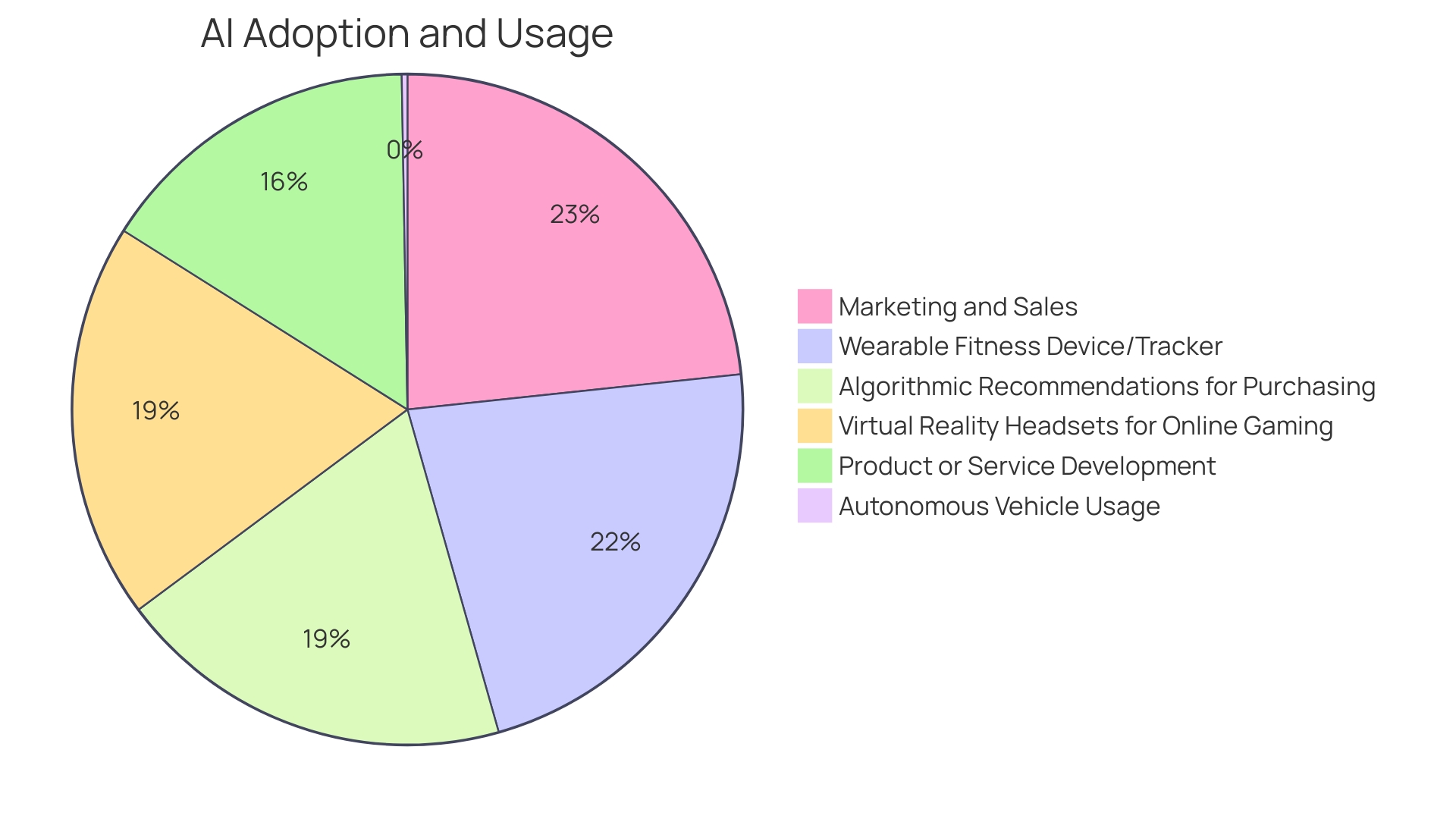
Key Components of an AI Consulting Program
As businesses undertake their AI initiatives, an AI consulting program becomes a crucial asset in navigating the complexities of this transformative field. To engineer a successful AI consulting program, three components are paramount: strategic planning, technology assessment, and talent development.
Strategic planning begins with defining lucid, measurable goals that steer the entire AI initiative. This clarity of purpose is critical for benchmarking progress and determining the efficacy of AI solutions. For instance, a business might aim to enhance customer experience with AI-powered chatbots or optimize supply chain logistics through intelligent routing algorithms.
Technology assessment explores the quality and readiness of your existing information infrastructure. Given that machine learning and deep learning models are as powerful as the information they’re trained on, a profound comprehension of your data’s suitability for specific algorithms is crucial. This scrutiny may lead to the realization that before you can harness the power of AI, your data collection, management, access, and processing capabilities might require significant upgrades.
Talent development is the cornerstone of any AI-driven transformation. The rise in AI adoption has created an ever-growing need for skilled professionals who can navigate and implement AI solutions. A robust AI consulting program not only brings in external expertise but also focuses on cultivating in-house talent, ensuring that your team is equipped with the knowledge and tools to sustain AI initiatives.
The intersection of these components fosters a fertile ground for innovation, where businesses can leverage AI to gain a competitive edge, drive efficiency, and open new revenue channels. By engaging with AI consulting services, organizations can systematically identify specific challenges and seize opportunities for impactful data-driven insights and AI-driven automation.

Case Study: Successful Implementation of AI Strategies
Within the healthcare sector, Ai’s transformative powers are being harnessed to streamline operations and enhance patient care. A case study that stands out involves a healthcare provider that sought the expertise of an AI consulting firm to revolutionize its digital adoption process. Initially, the procedure required clinicians and departments to submit a request form, which was then assessed by a Digital Service Team for security, appropriateness, and compliance. This stage also involved identifying any existing tools that could meet the demand. The revelation that many requested technologies were already in use within the organization, albeit unrecognized, underscores the potential for AI to bring transparency and efficiency to such processes.
The choice of an AI provider was conducted with meticulous attention, emphasizing the provider’s durability, financial security, and the excellence of offerings to guarantee the protection of sensitive information. This due diligence was crucial given the risks associated with data breaches and the misuse of data. Providers were also evaluated based on their industry-specific expertise, the performance and adaptability of their AI models, and their commitment to innovation, ensuring that the AI solutions provided would remain state-of-the-art.
Through this collaboration, the healthcare provider saw a marked improvement in operational efficiency and a significant positive impact on their bottom line. The instance illustrates how AI, when properly integrated, can serve as a catalyst for enterprises to accomplish their ambitious objectives more expeditiously, establishing the foundation for a future where AI and human ingenuity collaborate for greater success.

Measuring Impact and Success in AI Adoption
To harness the full potential of artificial intelligence (AI), it’s essential for companies to effectively measure the impact and success of their AI adoption. Metrics and evaluation methods play a pivotal role in understanding how AI initiatives contribute to the overall performance and strategic objectives of a business.
Acquiring and preparing information build the basis for AI systems, and obtaining high-quality, relevant information is a crucial stage towards the accomplishment of any AI undertaking. Recognizing trustworthy sources, whether they be internal databases, sensor networks, IoT devices, or external sources, is crucial. Ensuring that the information is clean, preprocessed, and augmented guarantees consistency, accuracy, and relevance, while also addressing information privacy and security requirements.
Once the groundwork is laid, model development and training come into play. Creating AI models that are customized to particular use cases and characteristics involves selecting the appropriate algorithms, architectures, and techniques. These decisions should be based on the problem’s nature and the information available, with an eye toward scalability and future adaptability.
Moreover, assessing the technical readiness of the team is just as important as the technology itself. Companies must evaluate their infrastructure, data availability, storage, and processing power, among other tangible assets. A holistic approach to this assessment should also consider the team’s technical capabilities and readiness to embrace and implement AI-driven changes.
In relation to practical implementations, enterprises are pioneering with AI across diverse sectors. From customer service chatbots to predictive analytics in healthcare, AI is transforming the way organizations operate. For example, Canadian enterprises observed a significant implementation of AI, with 6.1% of all companies utilizing AI in production according to a survey by Statistics Canada.
The journey of AI integration often reflects the technology adoption lifecycle, where initial buzz and high expectations eventually give way to a more realistic assessment of the technology’s capabilities. As companies navigate through this cycle, keeping a balance between immediate returns and long-term strategic benefits is crucial.
In conclusion, measuring AI’s impact is not just about the immediate benefits but also about setting the stage for continuous improvement and innovation. By prioritizing the quality of information, model advancement, and thorough assessment of preparedness, enterprises can establish a sturdy structure for AI implementation that is in line with their strategic objectives and promotes operational achievement.

Critical Aspects of AI Consulting: Strategy Development and Implementation
AI consulting services are crucial for enterprises to navigate the complexities of incorporating artificial intelligence into their operations. A robust AI strategy hinges on defining clear and measurable objectives, such as enhancing customer service with intelligent chatbots or streamlining supply chains with optimized routing. It’s essential to understand the data available and its suitability for the desired algorithms, which may necessitate a critical evaluation of data collection, management, access, and processing capabilities.
Businesses are increasingly turning to AI for a myriad of applications across various industries, from automated customer service to predictive analytics in healthcare. The integration of AI not only revolutionizes product and service delivery but also plays a significant role in improving operational efficiency. As the landscape evolves, regulatory discussions grow, with industry leaders and governmental bodies alike recognizing the need for appropriate oversight of AI developments to ensure safety and foster innovation.
To ensure successful AI strategy outcomes, it is crucial to identify potential risks and align initiatives with overarching organizational objectives. A study involving over 1,300 industry and technology decision makers, conducted by Ipsos, revealed evidence-based best practices that can serve as a roadmap for AI integration. By adhering to these best practices, businesses can pressure-test their strategies and optimize the time to value from their AI investments.

Data Assessment and Preparation for AI Solutions
Understanding and preparing information is a foundational step in deploying AI systems effectively. At the core of AI lies the information; it is the ‘lifeblood’ that fuels these advanced technologies. High-quality information is crucial because if the information is inaccurate or unreliable, the AI solutions developed from it will inherit these flaws.
-
The first stage in any information evaluation involves identifying the particular inquiries you want to address using AI and the insights you aim to extract from the information. This strategic approach helps in prioritizing the data that needs to be available for analysis.
-
A real-world example of this principle can be seen in the healthcare sector. When a new digital innovation is requested, an assessment determines if the innovation complies with security and regulatory standards. Often, this process reveals existing but unrecognized technology assets that could be leveraged more effectively.
In the finance industry, the crucial importance of information accuracy is amplified. Financial companies intent on developing AI systems must ensure they are constructed using high-quality information to prevent the propagation of errors and inaccuracies.
- When arranging information, one must evaluate its security, reliability, and source. Redundancies should be removed, and gaps in the information must be identified and filled. This careful approach ensures the thoroughness and reliability of the set.
The procedure for information preparation also includes converting and interpreting information into a structured format that AI systems can utilize. As shown by a consumer goods company that encountered difficulties with extracting information from a wide range of purchasing documents, AI was used to transform the details into structured information, uncovering buying patterns and enhancing sourcing strategies.
-
Furthermore, the strength of visualization and storytelling is apparent in how reports can engage users. For instance, an early version of a report, when demonstrated at an event, garnered attention due to its interactive nature and the ability to see the narratives behind the data.
-
It’s crucial to stay abreast of the latest AI statistics and trends, as the field evolves rapidly. AI approaches not only save time and reduce costs but also drive innovation and revenue growth. Keeping updated on AI advancements guarantees that enterprises stay competitive and embrace state-of-the-art technologies.
In summary, the process of information evaluation and preparation is a meticulous but crucial endeavor that underpins the successful application of AI solutions. By ensuring high-quality, well-organized, and complete information, businesses can harness the full potential of AI to innovate and gain strategic advantages.

Model Development and Deployment Strategies
The successful deployment of AI models hinges on a well-structured development lifecycle, encompassing several critical stages. Let’s delve into the five main phases of this lifecycle: Input, Process, Quality Assurance, Deployment, and Output. Each phase is significant and links to the next, creating a cycle of ongoing enhancement.
Starting from the Input stage, it is crucial to identify the issue and gather relevant information. For example, when building an AI-driven content recommendation system for a news website, accurate problem definition and thorough information gathering lay the foundation for the following stages.
Transitioning to the Process stage, it entails choosing the appropriate model, training it with the collected information, and performing validations to guarantee precision. Here, machine learning practitioners often work with tools like Jupyter Notebook for tasks such as information cleaning and normalization.
Quality Assurance is the third phase, where the model’s performance is rigorously tested. A quote from Eric Siegel, Ph.D., a notable machine learning consultant, encapsulates this importance: “Mastering the Rare Art of Machine Learning Deployment,” implying the criticality of deploying a thoroughly vetted model.
Deployment is the fourth phase, where the model is integrated into an application or system, such as through an API. The essence of this phase can be captured by a poignant remark from Kelsey Hightower: “Teach a man Kubernetes and you keep him busy for a lifetime,” highlighting the complexity and significance of deploying models in a scalable and maintainable manner.
The final phase, Output, is where the model’s inferences are utilized. Recent advancements like Webtap.ai demonstrate the practical applications of AI, simplifying complex information extraction tasks through natural language processing.
Throughout this lifecycle, challenges such as operationalizing the model and ensuring it adapts to new data are addressed. By implementing these stages systematically, enterprises can leverage AI to create strong, efficient solutions that drive innovation and competitiveness.

Integration with Existing Systems and Change Management
Incorporating AI within an organization goes beyond just integrating the technological aspect; it necessitates a comprehensive approach to managing change. As businesses endeavor to incorporate artificial intelligence into their operations, they often encounter a common hurdle: ensuring the new systems work harmoniously with the existing IT infrastructure. For instance, within the healthcare sector, the introduction of digital technology begins with a thorough assessment by a dedicated Digital Service Team to determine if the technology is secure, appropriate, and compliant. This process often reveals preexisting but unnoticed technological resources already in position, emphasizing the significance of a comprehensive inventory and comprehension of current assets before seeking new approaches.
Moreover, the integration of AI can sometimes resemble a ‘Big Bang IT’ project—ambitious, extensive, and disruptive. Such endeavors can drain team resources, delay return on investment, and potentially demotivate staff due to the lack of immediate benefits. This underscores the necessity for a strategy that leverages existing solutions and adapts them, thereby conserving time and financial resources.
Furthermore, the Norges Bank Investment Fund’s approach to AI governance exemplifies the importance of competence building among board members. Enterprises are urged to comprehend the importance of AI in their operations and set explicit guidelines, instead of concentrating on having an AI expert on the board. This is particularly pertinent as the fund’s investments in tech companies, which prioritize AI governance, have seen substantial growth.
Successful transformation strategies are constructed on key pillars that align enterprise, data, and AI strategies. It is essential for organizations to navigate the complexities of multiple strategic frameworks without losing sight of their overarching vision. By doing so, change can be managed more effectively, and AI can be integrated into the corporate ecosystem in a way that is both innovative and sustainable.

Performance Monitoring and Optimization of AI Solutions
The integration and continuous optimization of AI solutions are pivotal in maintaining their effectiveness over time. For businesses to fully leverage AI, they must commit to ongoing performance monitoring and employ feedback loops for iterative improvement. This is not just about the use of digital tools; it’s about comprehending the processes, systems, and stakeholders involved, and concentrating on areas where AI can provide immediate successes with significant return on investment. A prime example is the automation of identity verification and simple order inquiries in retail, which tackles repetitive tasks and yields immediate benefits.
Supporting startups, NVIDIA Inception offers a comprehensive ecosystem to accelerate growth with advanced tools and investor networking, underlining the importance of nurturing innovation for sustained AI success.
Furthermore, the launch of Webtap.ai has revolutionized data extraction by enabling natural language processing to collect web data, highlighting advancements that streamline operations and enhance data analysis capabilities.
Insights from over 1,300 industry and technology decision makers, analyzed by Ipsos, reveal a roadmap to AI success. Focusing on predictive factors and best practices, this research offers a strategic framework for organizations to scale AI effectively. These insights are essential for any organization aiming to enhance operations and stay ahead in the rapidly changing environment of AI advancements.
Real-World Examples: AI in Predictive Maintenance and Personalized Marketing
Artificial Intelligence (AI) is revolutionizing industries by offering advanced solutions such as predictive maintenance and personalized marketing. For instance, Vladimir, a seasoned freelance consultant with a Ph.D. in Electronic Design Automation and an MBA, leverages AI to enhance business processes. In the automotive sector, he has been instrumental in merging machine learning with automotive expertise to improve operations at Luxoft.
The potential of AI extends to manufacturing, where the integration of AI and Industrial IoT has led to significant advancements. Companies now harness extensive asset information for analytical insights, facilitating predictive maintenance. This proactive approach to maintenance utilizes algorithms to analyze historical and current machine information, identifying patterns that predict when maintenance is required. These AI-driven insights lead to more efficient supply chains, optimized inventory management, and reduced operational costs.
Moreover, AI’s impact on personalized marketing is transforming customer engagement. By analyzing customer data, AI algorithms can tailor marketing strategies to individual preferences, enhancing the customer experience and increasing brand loyalty. The use of AI in these domains not only streamlines operations but also fosters innovation, creating new opportunities for enterprises to thrive.
Experts, including those at OODA, acknowledge AI as a collaborative tool that enhances human capabilities. Far from rendering jobs obsolete, AI is expected to create and modify roles, offering a more precise and efficient workforce. Statistics Canada’s survey reveals that 6.1% of Canadian enterprises have embraced AI to generate goods and services, highlighting the increasing significance of AI in operational activities. This trend signifies a shift towards more AI-integrated models that promise to deliver enhanced efficiency and competitive edge.

Maximizing the Value of AI Consulting: ROI and Best Practices
Utilizing the strategic potential of AI consulting services can greatly enhance a company’s competitive advantage and operational effectiveness. To fully optimize the potential of AI, companies must align these advanced tools with their distinctive goals and vision. This means selecting AI projects that support a company’s strategic direction for the next several years, rather than merely imitating competitors’ initiatives.
AI’s vast applications range from predictive analytics in manufacturing to enhancing customer engagement in retail. For instance, the case of Zara, an international fashion retailer, demonstrates the transformative power of AI. Zara integrates AI across its supply chain and inventory management systems, using RFID tagging and real-time analytics to stay agile in the fast-paced fashion industry.
However, the journey to maximizing AI’s ROI isn’t without its challenges. Organizations need to commit to not only adopting AI but embedding it into their culture and workflows. This might require an overhaul of traditional processes and an embrace of change management. The key to turning productivity gains into cost savings lies in redefining both the nature of work and how it is executed.
As C-suite leaders grapple with the tangible benefits of AI, the industry is witnessing a shift in investment priorities. As per Alysa Taylor, corporate VP for Azure and Industry at Microsoft, around 32% of organizations have redirected an average of 11% of expenditure from sectors such as administrative support to AI solutions. These decisions are driven by the need to streamline operations and reduce the burden on operating expenses.
In the dynamic landscape of generative AI, the management consulting industry in the United States is projected to see a 2% increase in sales, reaching $392.2 billion this year, as reported by IBISWorld. This growth is underpinned by the diverse roles consultants play, from navigating regulatory compliance to planning AI’s incorporation into robotics and programming.
A strategic approach to AI consulting, coupled with a clear understanding of its business value, can empower organizations to not only envision the possibilities but to actualize them, driving innovation and profitability in our increasingly digital economy.
Future Trends in AI Consulting: Democratization, Vertical Specialization, and Responsible AI
As AI consulting keeps progressing, three important trends are shaping the future: the widespread accessibility of AI advancements, a shift towards specialized areas, and an increased emphasis on ethical AI practices. The democratization of AI, as Microsoft envisions, is about making AI accessible to all, fostering benefits in productivity, health, and entertainment. Vertical specialization is emerging as consultants tailor AI solutions to specific industry needs, optimizing operational efficiencies and driving innovation. Meanwhile, responsible AI practices are gaining traction, emphasizing ethical considerations, transparency, and accountability in AI deployment.
Witnessing the transformative impact of AI, firsthand experiences, such as those from the Heal Michigan project, underscore the power of technology as a tool for change. The project’s success illustrates the potential for AI to personalize user experiences, mirroring the trend seen in AI-powered personal assistants that adapt to user interactions. This personalization is further evidenced by Duolingo’s AI, which customizes lessons for optimal learner engagement.
The corporate environment is paying attention, with platforms like Macky AI offering SMEs affordable, on-demand AI consulting services, proving that advanced AI capabilities are no longer exclusive to large corporations. As AI consulting evolves, companies are encouraged to leverage these trends, ensuring they stay competitive and responsible in a rapidly changing digital world.
The impact of AI on the job market and productivity is profound, with AI expected to enhance employee productivity by 40% and significantly influence labor dynamics. However, alongside opportunities, there are calls for regulation, reflecting a growing consensus on the need for oversight to mitigate potential risks associated with AI advancements.
In conclusion, businesses must navigate these trends strategically, leveraging AI to not only improve operational efficiencies but also to contribute positively to society, upholding ethical standards and fostering an inclusive future shaped by responsible AI development.
Conclusion
AI is revolutionizing industries, and organizations like Mayo Clinic and Holiday Extras have embraced it to enhance patient care, improve processes, and scale operations. By fostering AI fluency among their workforce, businesses can achieve efficiency, innovation, and operational excellence.
Tailoring AI strategies to specific business needs is crucial. Strategic planning, technology assessment, and talent development are key components of successful AI consulting. Setting clear goals, assessing data infrastructure, and cultivating in-house talent give businesses a competitive edge.
Collaboration between organizations and AI consulting firms is vital for successful implementation. Measuring impact and success requires data assessment, model development and deployment, and performance monitoring. By focusing on data quality and continuous improvement, businesses build a robust framework for AI adoption.
Integrating AI with existing systems and managing change are essential. Maximizing the value of AI consulting involves aligning technologies with business goals and embracing change management. By leveraging existing solutions and reallocating resources, businesses maximize ROI.
Real-world examples of AI in predictive maintenance and personalized marketing demonstrate its transformative power. Future trends in AI consulting include democratization, vertical specialization, and responsible AI practices. Strategic implementation of AI improves efficiency, drives innovation, and contributes to society.
In conclusion, understanding tailored approaches, key components of AI consulting, successful implementation, measuring impact, critical aspects, data assessment, model development, integration, and performance monitoring helps businesses unlock AI’s potential. By navigating complexities strategically, businesses thrive in the digital landscape.
Improve your AI adoption with a focus on data quality and continuous improvement.
